
- Equipment
- SOLTEQ®
- Software
- SOLDAS® IR 4.0
- SOLCAL® IR 4.0
- SOLTWIN® DIGITAL TWIN

.jpg)
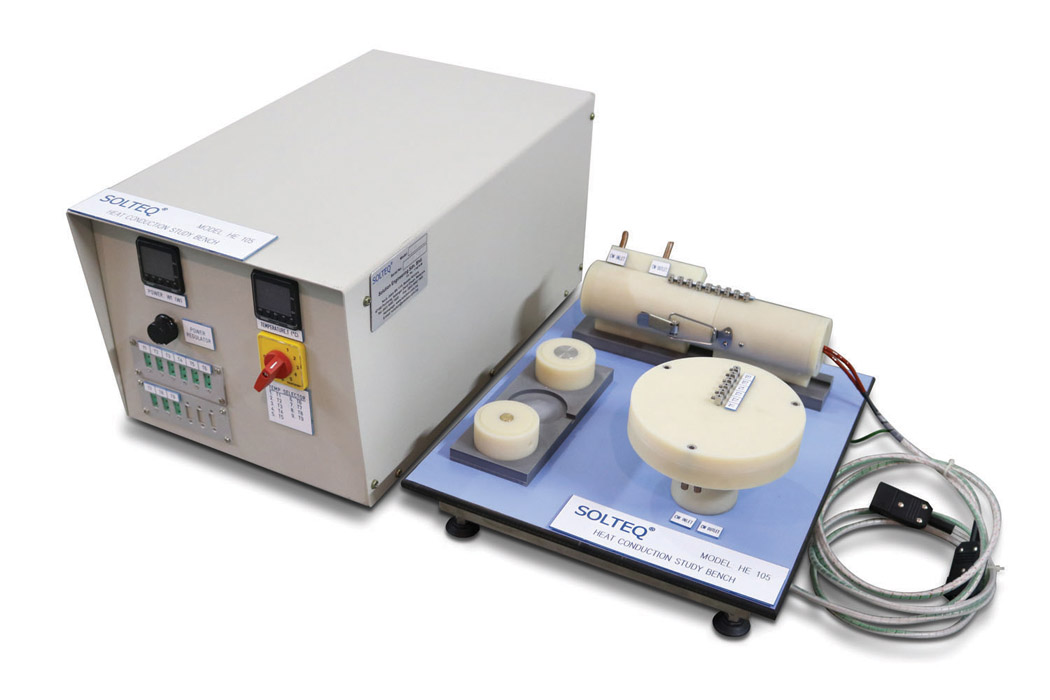
Equipment Name: Heat Conduction Study Bench
Model No: HE105
Click below to see example:Description: This Heat Conduction Study Bench is designed to provides an introduction into the concepts of heat conduction using one dimensional conduction modules. The linear test section is supplied with interchangeable samples of conductors and insulators.
This unit consists of:
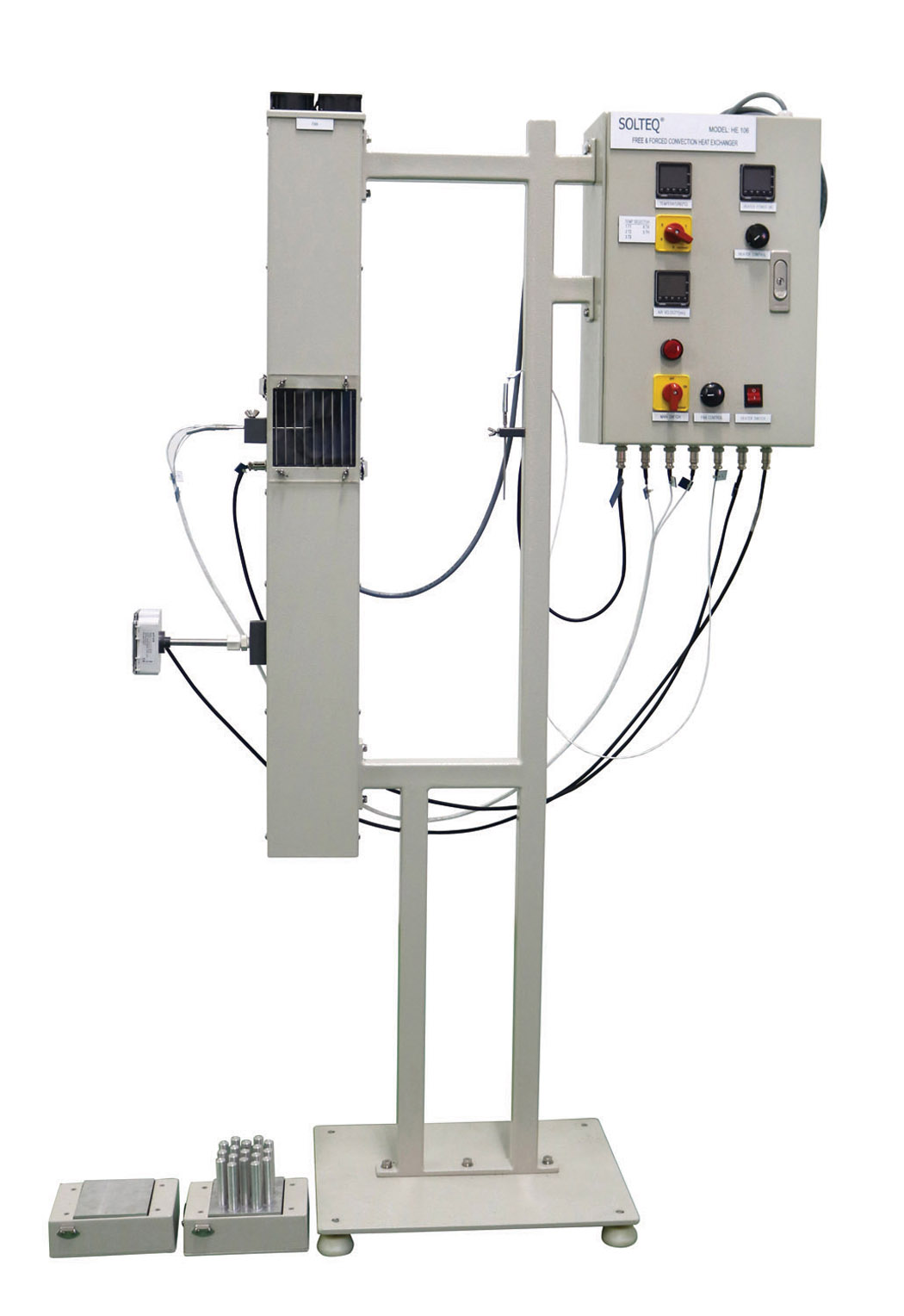
Equipment Name: Free and Forced Convection Heat Transfer Unit
Model No: HE106
Click below to see example:Description: This Free and Forced Convection Heat Transfer unit is designed for demonstrates phenomena of natural (free) and force convection.
This unit consists of:
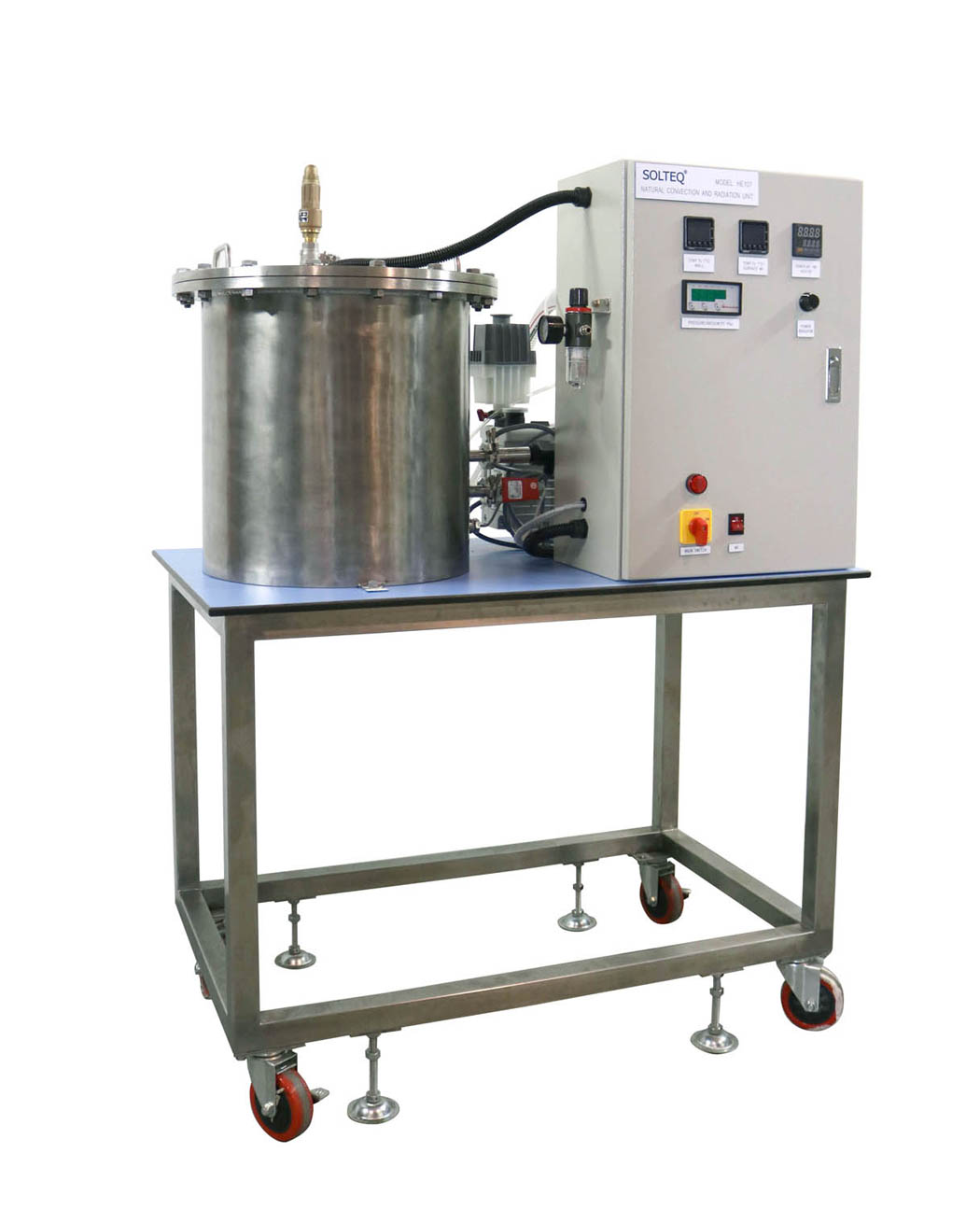
Equipment Name: Natural Convection and Radiation Unit
Model No: HE107
Click below to see example:Description: This Natural Convection and Radiation Unit is designed to allow students to study the phenomena of heat transfer over a range of pressures and vacuum, and to determine the emissivity value of the heater element.
This unit consists of:
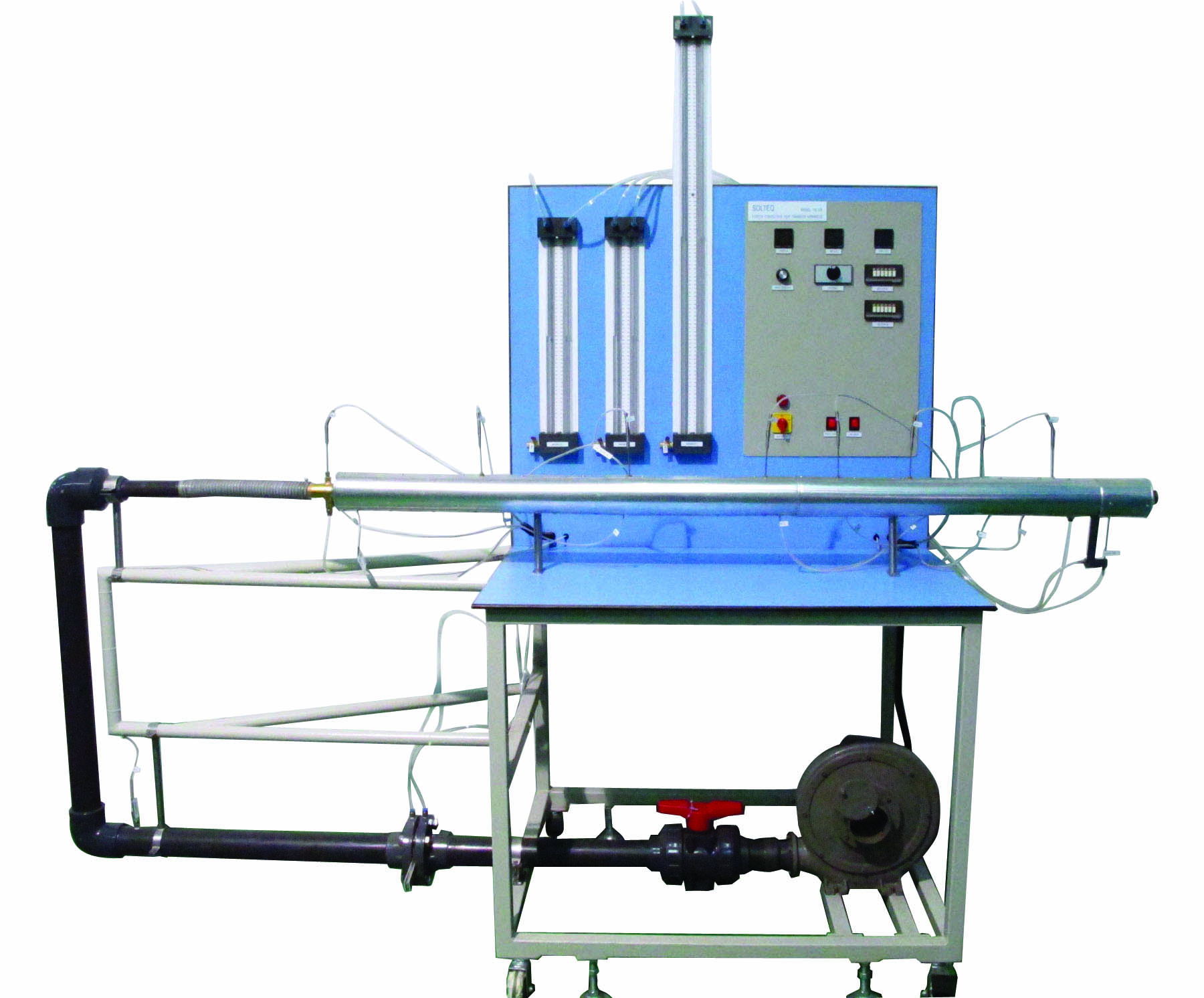
Equipment Name: Forced Convection Heat Transfer Apparatus
Model No: HE108
Click below to see example:Description: This Forced Convection Heat Transfer Apparatus is designed for students to inspect hypothesis and associated formulae related to forced convection in pipes.
This unit consists of:
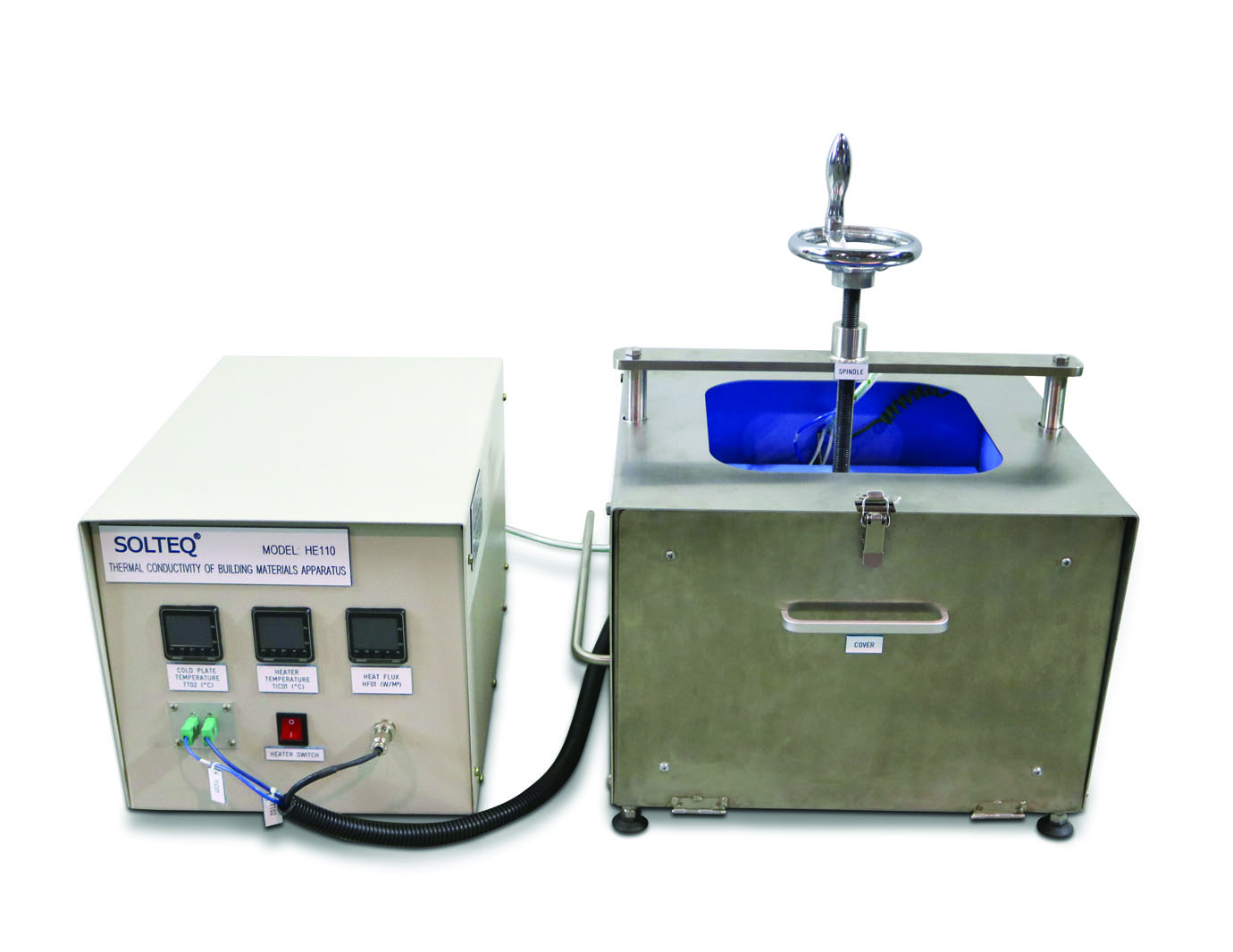
Equipment Name: Thermal Conductivity of Building Materials Apparatus
Model No: HE110
Click below to see example:Description: This Thermal Conductivity of Building Materials Apparatus is designed to determine the thermal conductivities of various building materials.
This unit consists of:
Experimental capabilities:
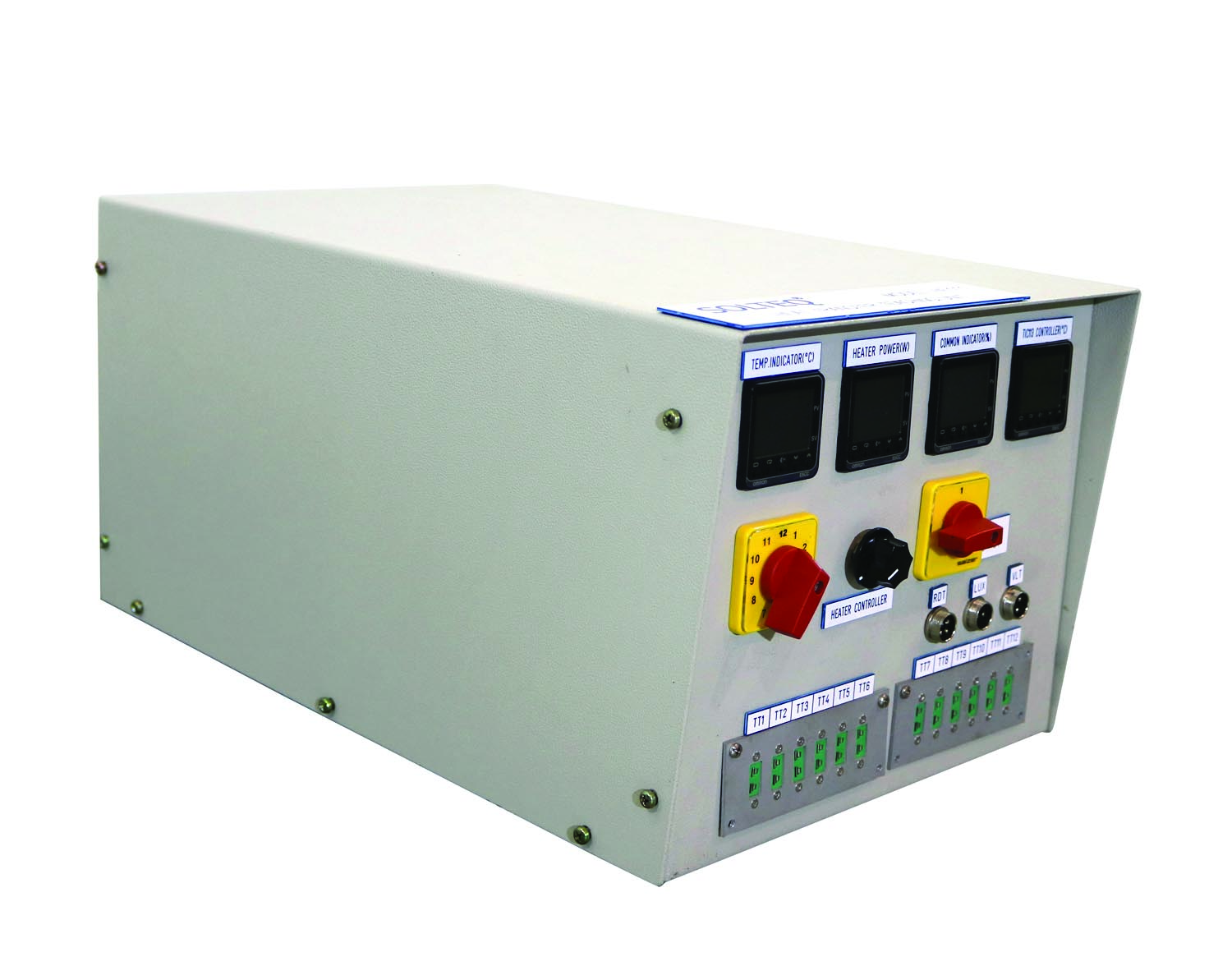
Equipment Name: Heat Transfer Service Unit
Model No: HE111
Click below to see example:Description: The Heat Transfer Service Unit can be connected to any of the seven optional heat transfer study units allow study of different modes of heat transfer.
The seven heat transfer study units are:
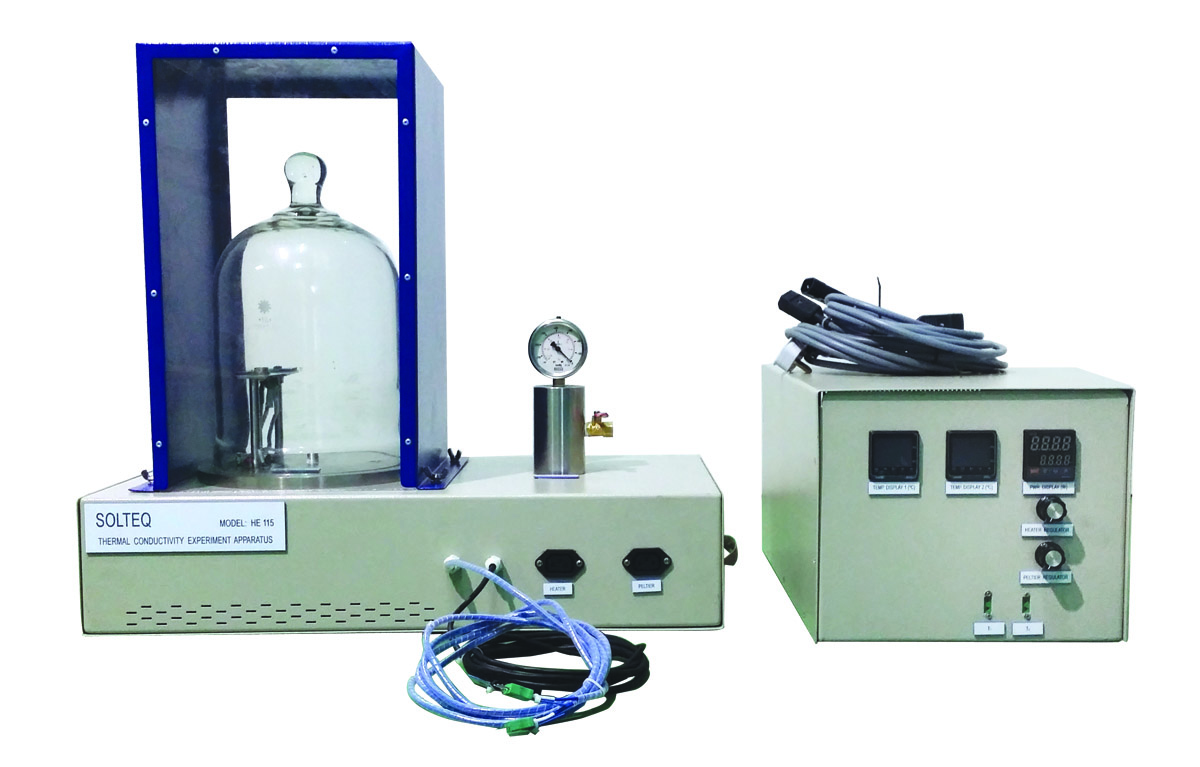
Equipment Name: Thermal Conductivity Experimental Apparatus
Model No: HE115
Click below to see example:Description: This Thermal Conductivity Experimental Apparatus is a bench mounting apparatus to allow students to demonstrate the conduction along the metal test specimens.
This unit consists of:
Experimental capabilities:
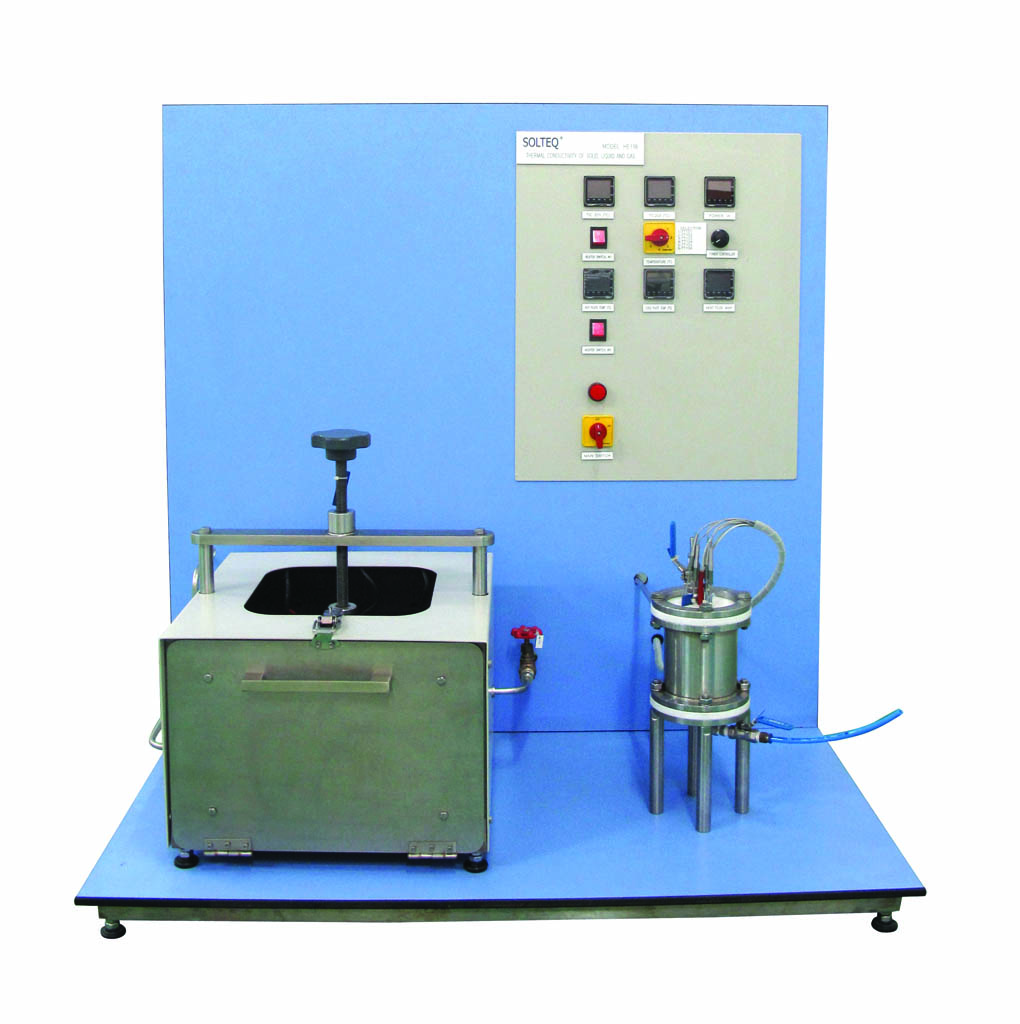
Equipment Name: Thermal Conductivity of Solid, Liquid and Gas
Model No: HE116
Click below to see example:Description: This Thermal Conductivity of Solid, Liquid and Gas is designed to determine the thermal conductivity of various solids, liquids and gases.
This unit consists of:
Experimental capabilities:
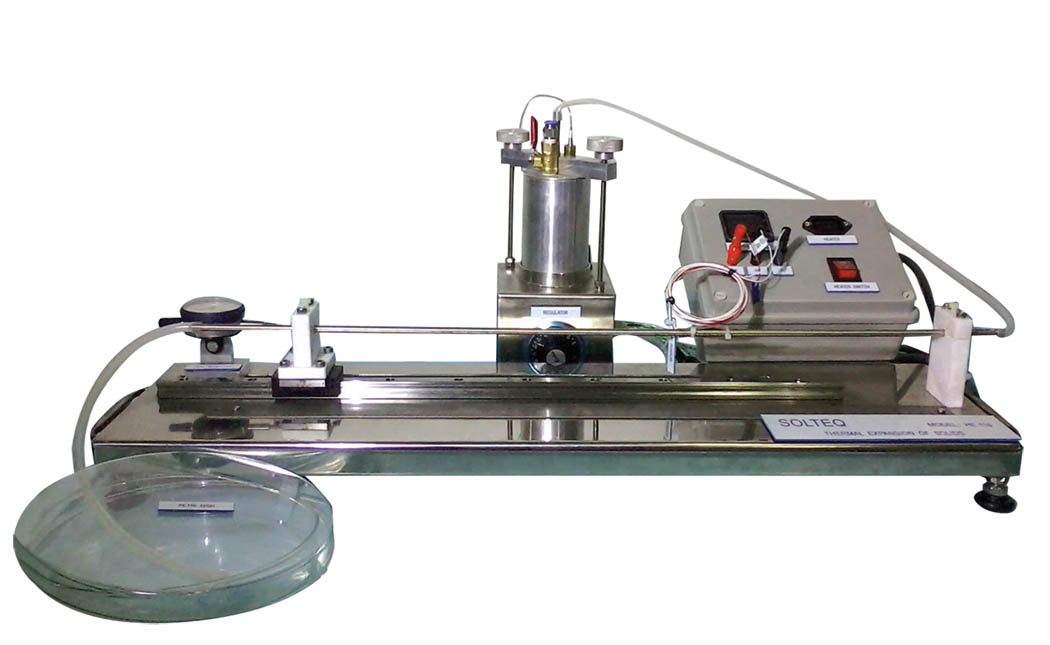
Equipment Name: Thermal Conductivity of Solids
Model No: HE118
Click below to see example:Description: This Thermal Expansion of Solids is designed to allow students to study the relationship between the length and the temperature of a solid.
This unit consists of:
Experimental capabilities:
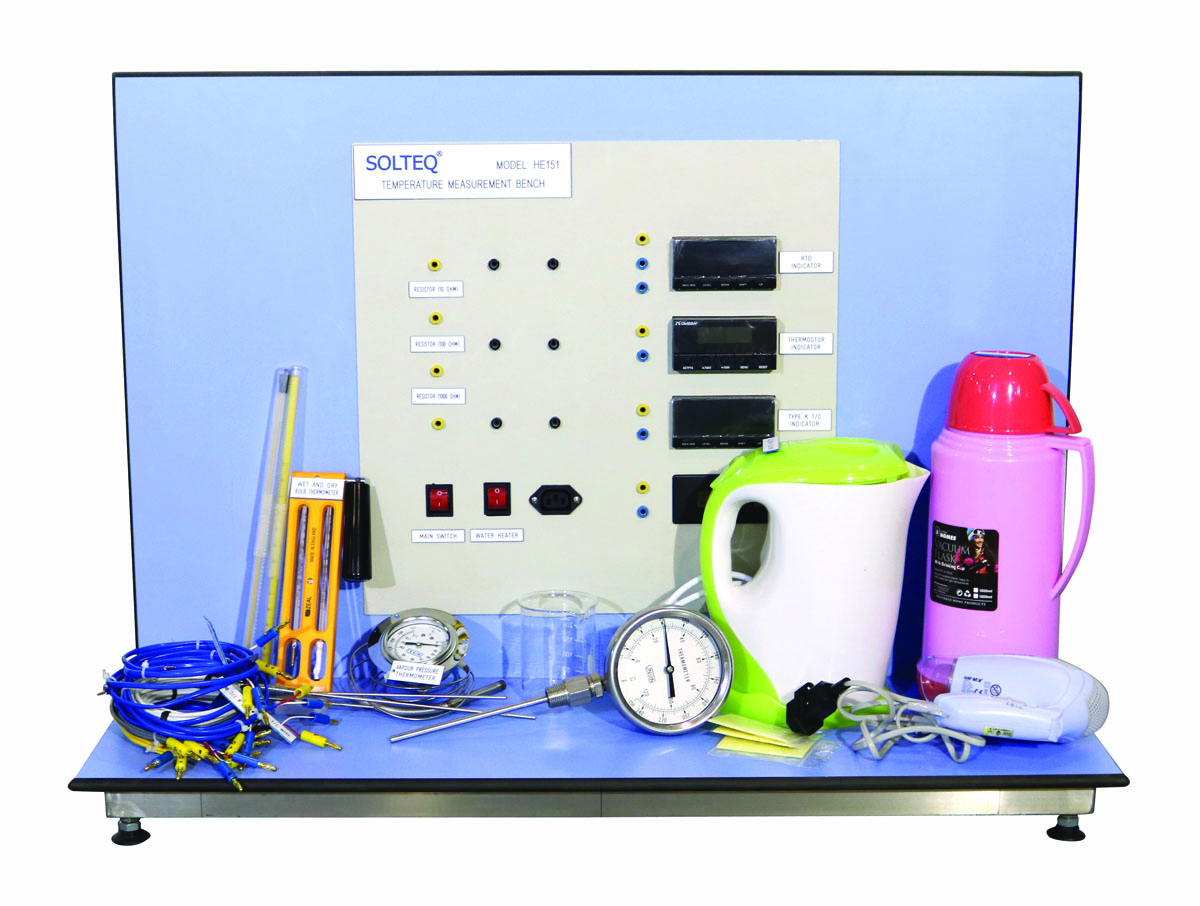
Equipment Name: Temperature Measurement Apparatus
Model No: HE151
Description: This Temperature Measurement Bench is a complete, self-contained apparatus to demonstrate fundamental temperature measurement techniques.
This unit consists of:
Experimental capabilities:
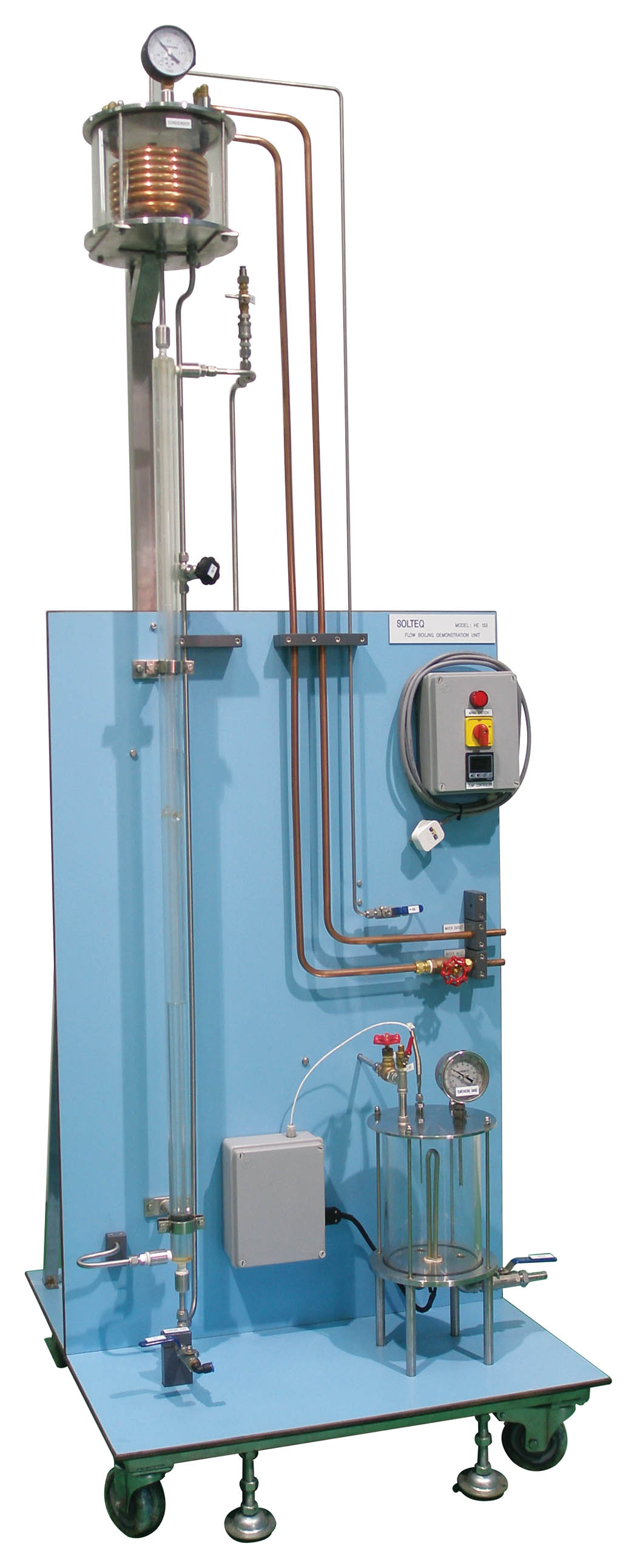
Equipment Name: Flow Boiling Heat Transfer Unit
Model No: HE153
Click below to see example:Description: This Flow Boiling Heat Transfer Unit is designed to provide students with a clear visual demonstration of what is happening inside the vapour generating tubes of practical plants.
This unit consists of:
Experimental capabilities:

Equipment Name: Pool Boiling Heat Transfer Unit
Model No: HE154
Click below to see example:Description: This Pool Boiling Heat Transfer Unit is designed for vividly demonstrates two regimens of boiling, namely nucleate boiling and film boiling.
This unit consists of:
Experimental capabilities:
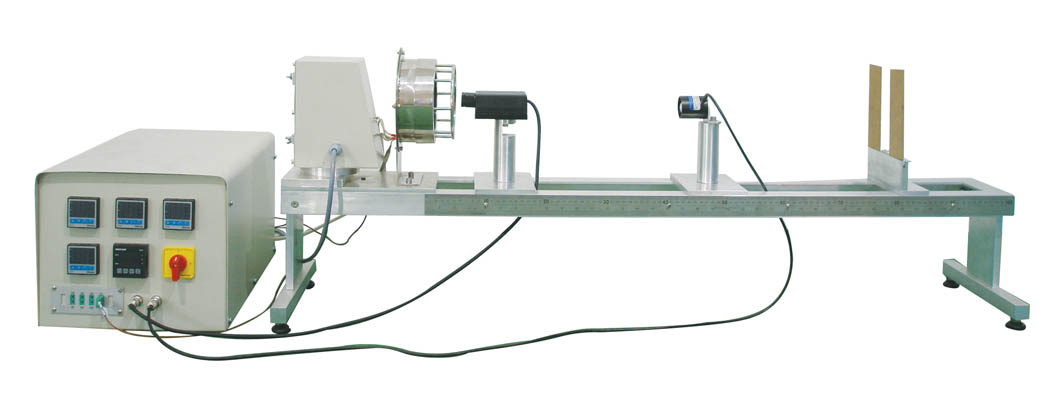
Equipment Name: Radiation Heat Transfer Rig
Model No: HE155
Click below to see example:Description: This Radiation Heat Transfer Rig is designed to provides students with knowledge in the fundamental laws governing heat transfer by radiation, such as: Inverse Square law Kirchhoff's law Lamberts Cosine Law
This unit consists of:
Experimental capabilities:
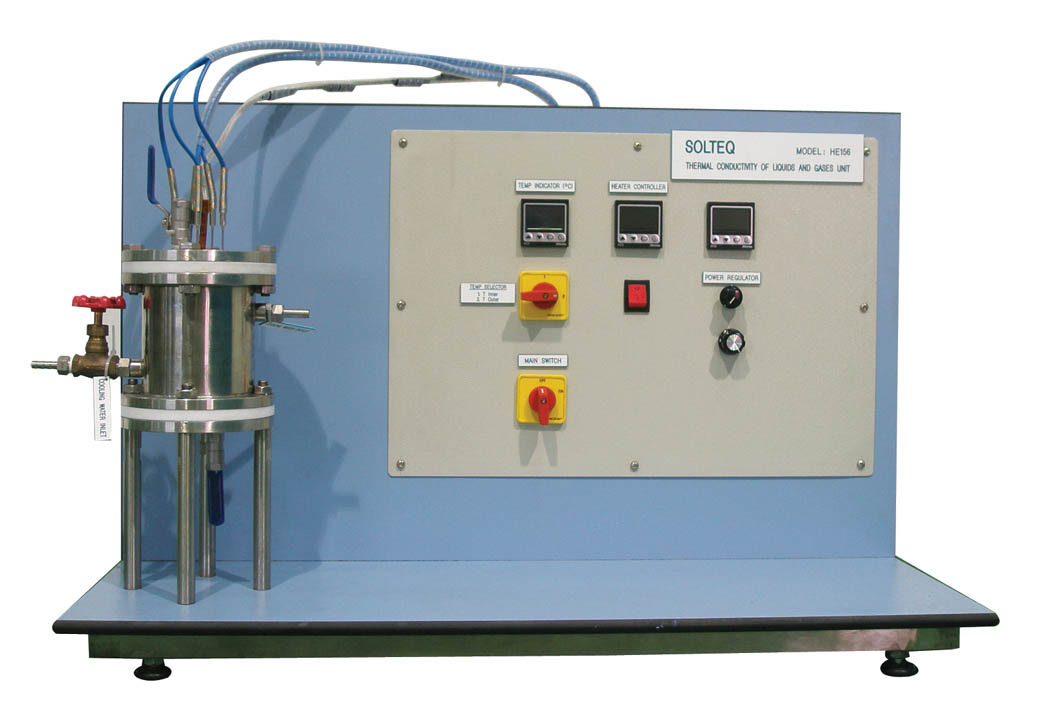
Equipment Name: Thermal Conductivity of Liquids and Gases
Model No: HE156
Click below to see example:Description: This Thermal Conductivity of Liquid and Gases is designed to provides students with knowledge in the fundamental laws governing heat transfer by radiation, such as:
This unit consists of:
Experimental capabilities:
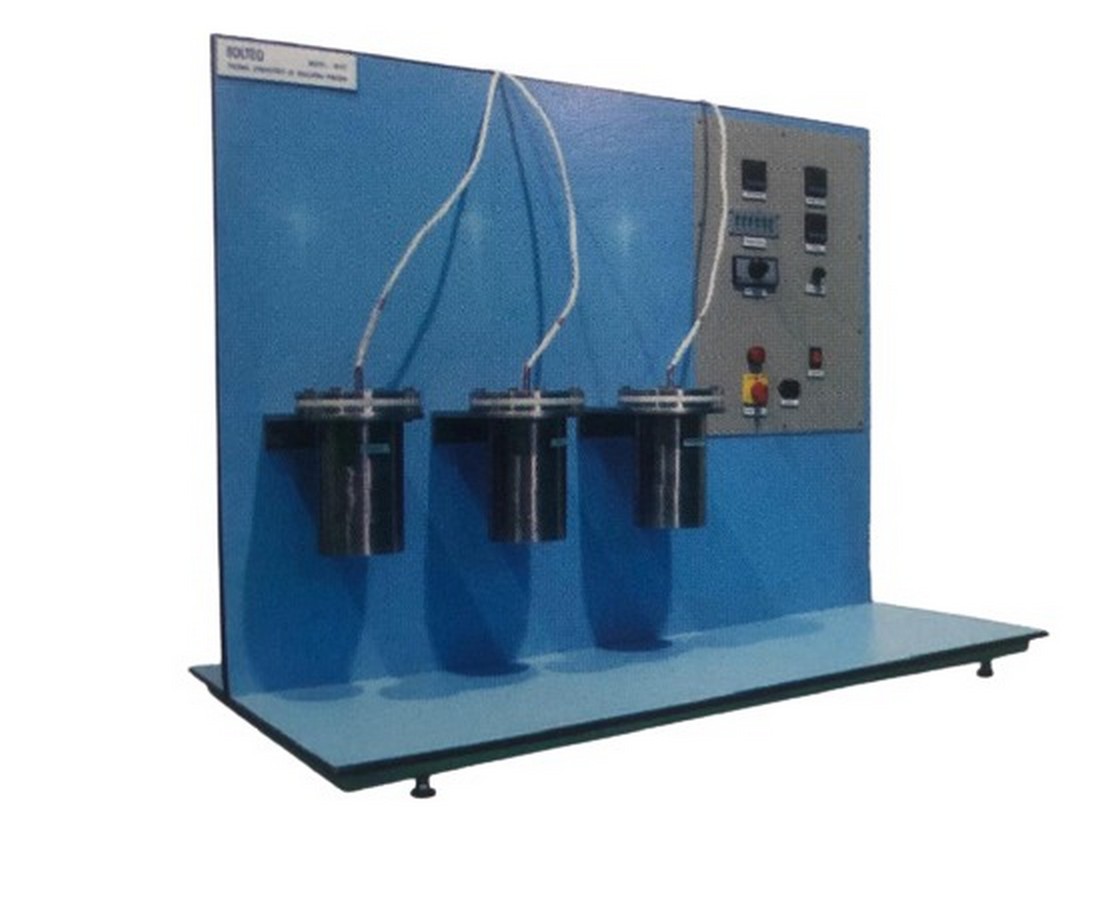
Equipment Name: Thermal Conductivity of Insulating Powder
Model No: HE157
Click below to see example:Description: This Thermal Conductivity of Insulating Powder unit is designed for allows the determination of thermal conductivity of insulating powder.
This unit consists of:
Experimental capabilities:
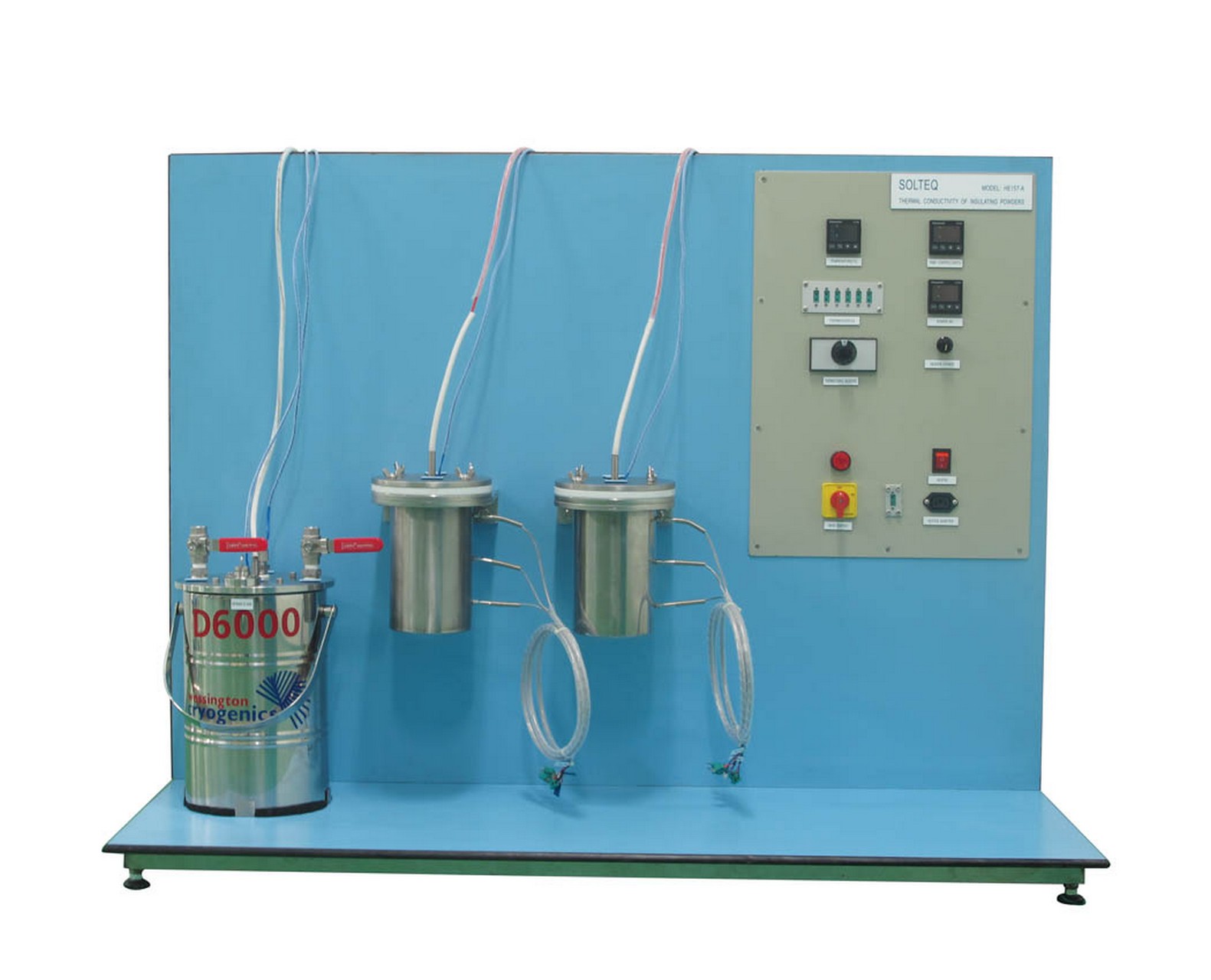
Equipment Name: Thermal Conductivity of Insulating Powder
Model No: HE157-A
Click below to see example:Description: This Thermal Conductivity of Insulating Powder unit is designed for allows the determination of thermal conductivity of insulating powder.
This unit consists of:
Experimental capabilities:
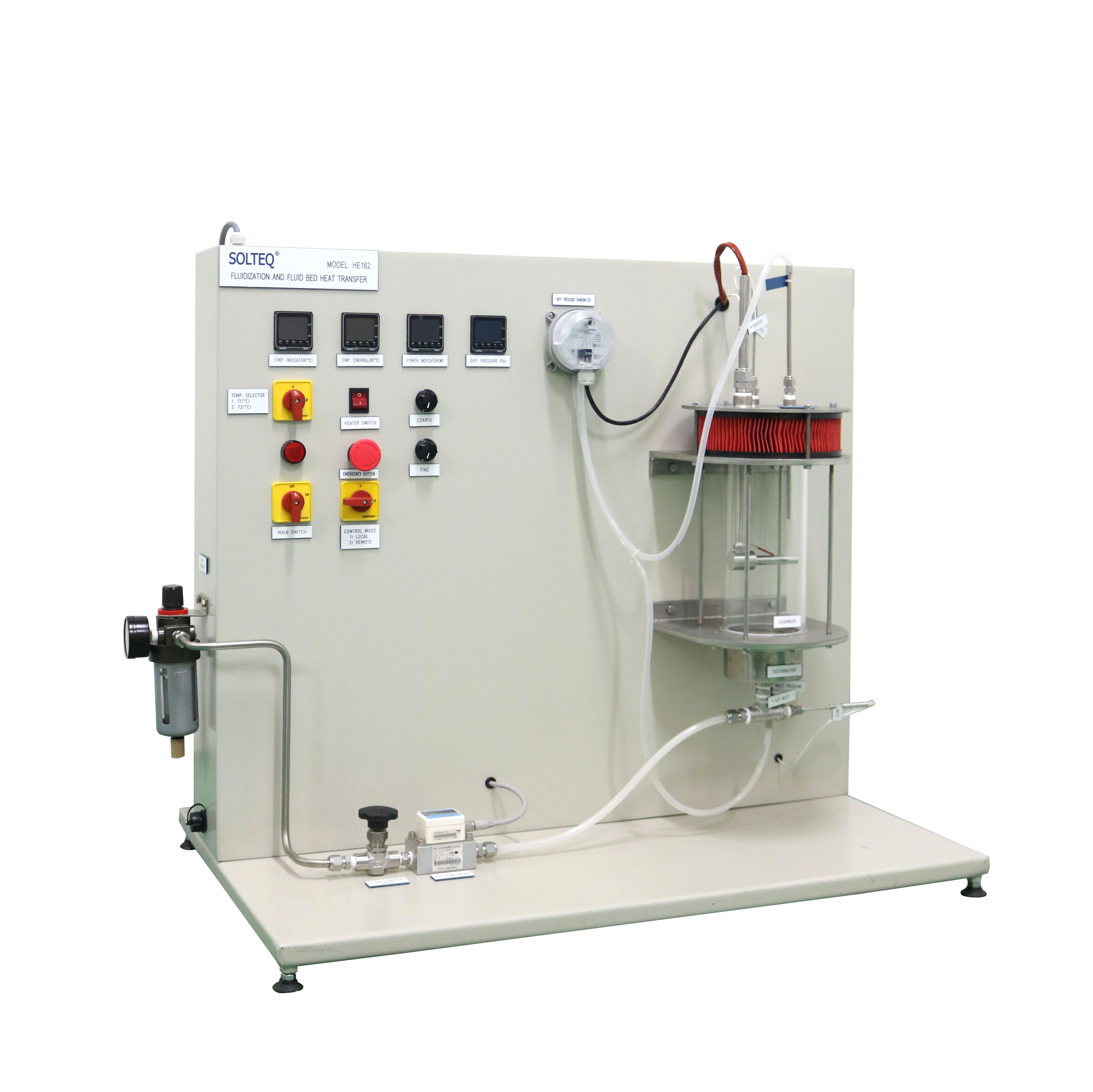
Equipment Name: Fluidisations and Fluid Bed Heat Transfer
Model No: HE162
Click below to see example:Description: This Fluidisations and Fluid Bed Heat Transfer Unit Unit is designed to provides visual understanding and quantitative results on the flow of air through both packed and fluidized bed of granular material.
This unit consists of:
Experimental capabilities:

Equipment Name: Film and Dropwise Condensation Unit
Model No: HE163
Click below to see example:Description: This Film and Dropwise Condensation Unit demonstrates two types of condensation processes, namely filmwise and dropwise condensation.
This unit consists of:
Experimental capabilities:
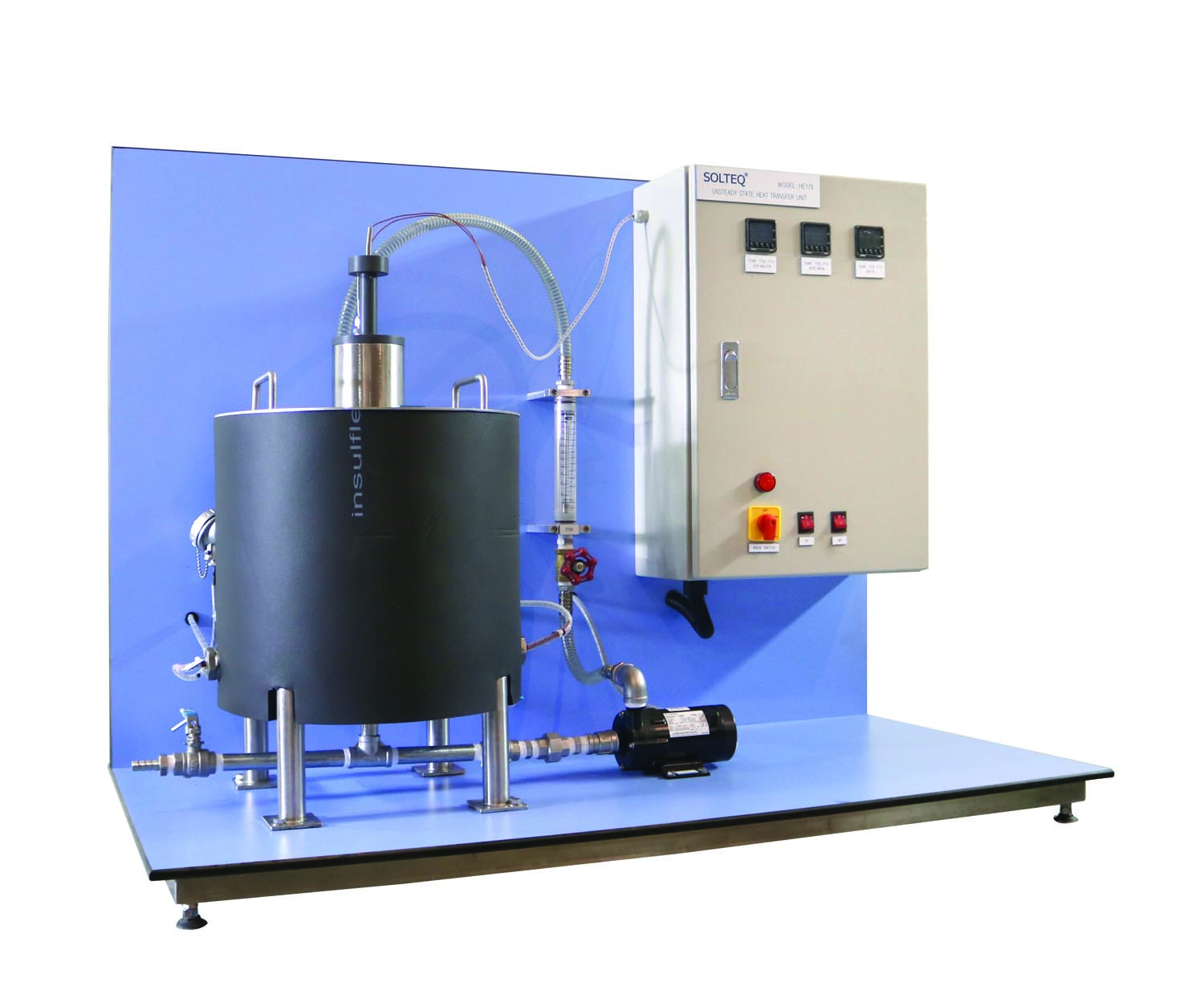
Equipment Name: Unsteady State Heat Transfer Unit
Model No: HE178
Click below to see example:Description: This Unsteady State Heat Transfer Unitis designed to allow students to run experiments on unsteady state heat transfer.
This unit consists of:
Experimental capabilities:
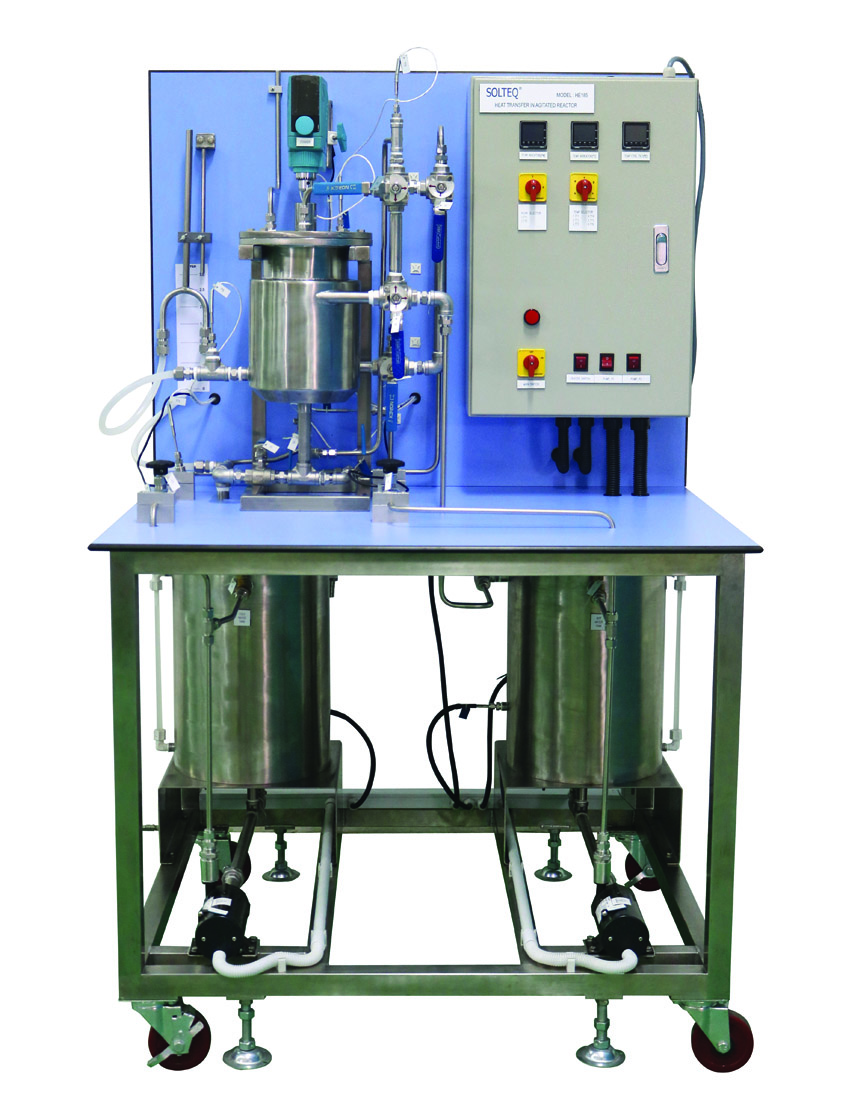
Equipment Name: Heat Transfer in Agitated Vessel
Model No: HE185
Click below to see example:Description: This Heat Transfer in Agitated Vessel is dedicated to introduce students to the study of heat transfer in an agitated vessel with coil and stirrer.
This unit consists of:
Experimental capabilities:
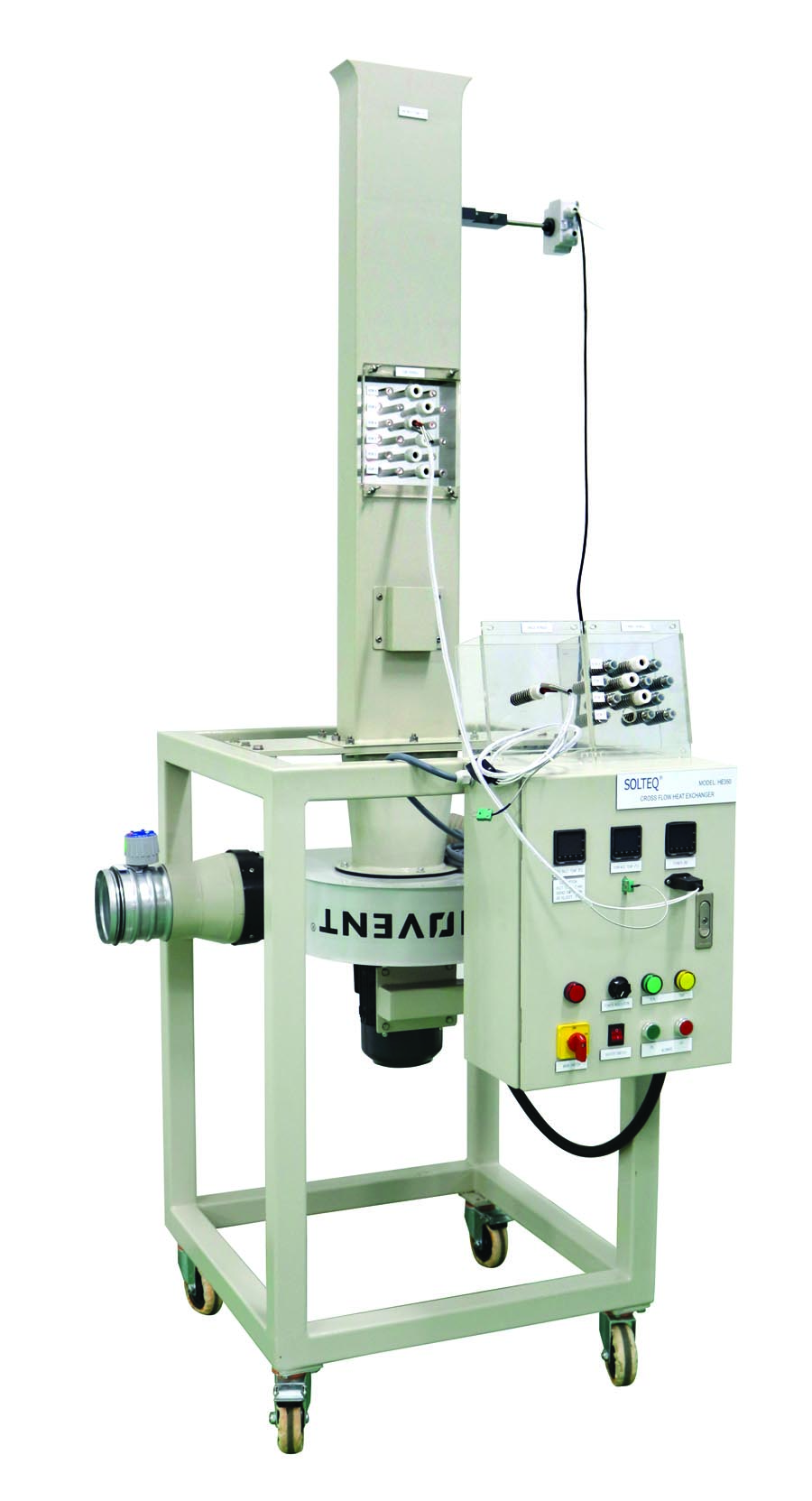
Equipment Name: Cross Flow Heat Transfer
Model No: HE350
Click below to see example:Description: This Cross Flow Heat Transfer is designed for assists students to understand the basic principles of cross flow heat transfer.
This unit consists of:
Experimental capabilities:
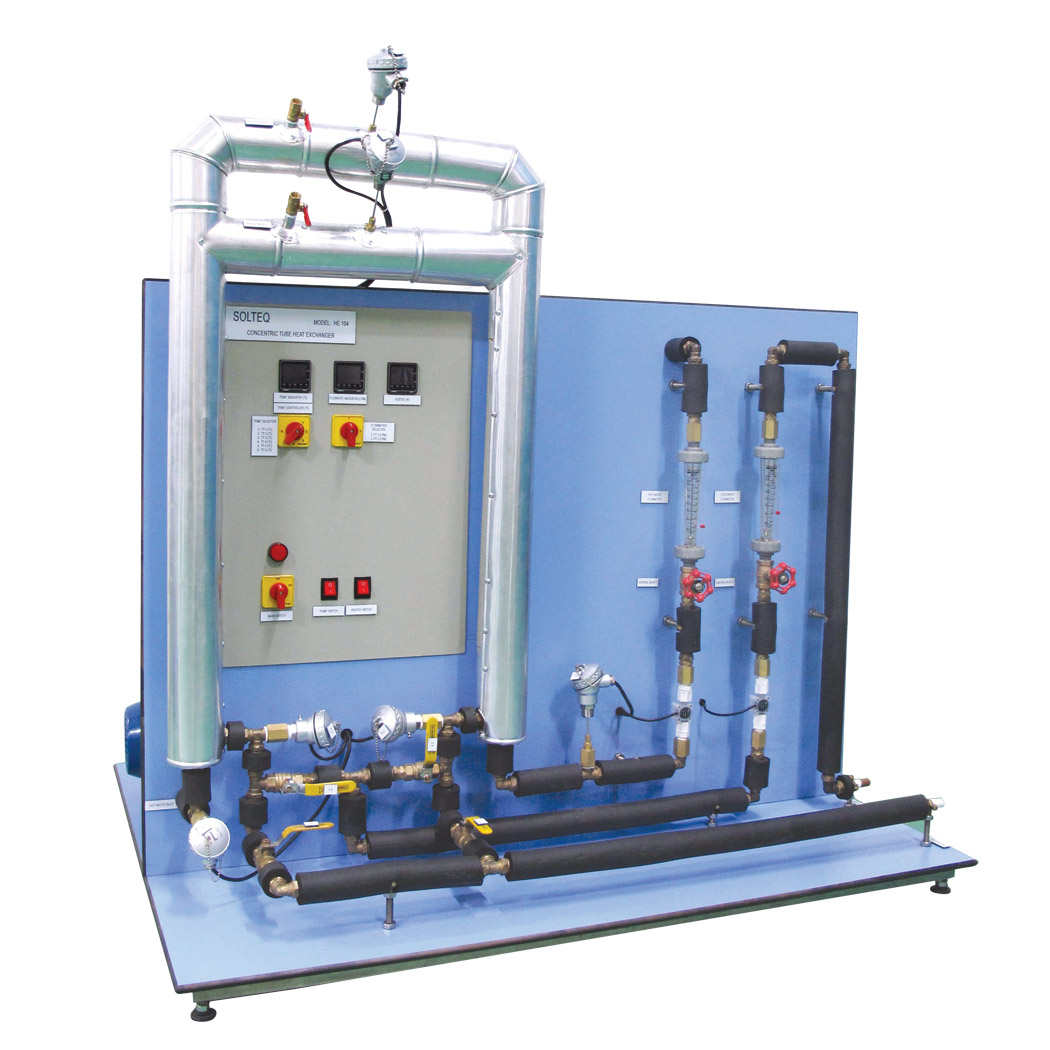
Equipment Name: Concentric Heat Exchanger
Model No: HE104
Click below to see example:Description: This Concentric Heat Exchanger is developed to investigate the fundamental principles of heat transfer applied to a classic two tubes heat exchanger.
This unit consists of:
Experimental capabilities:
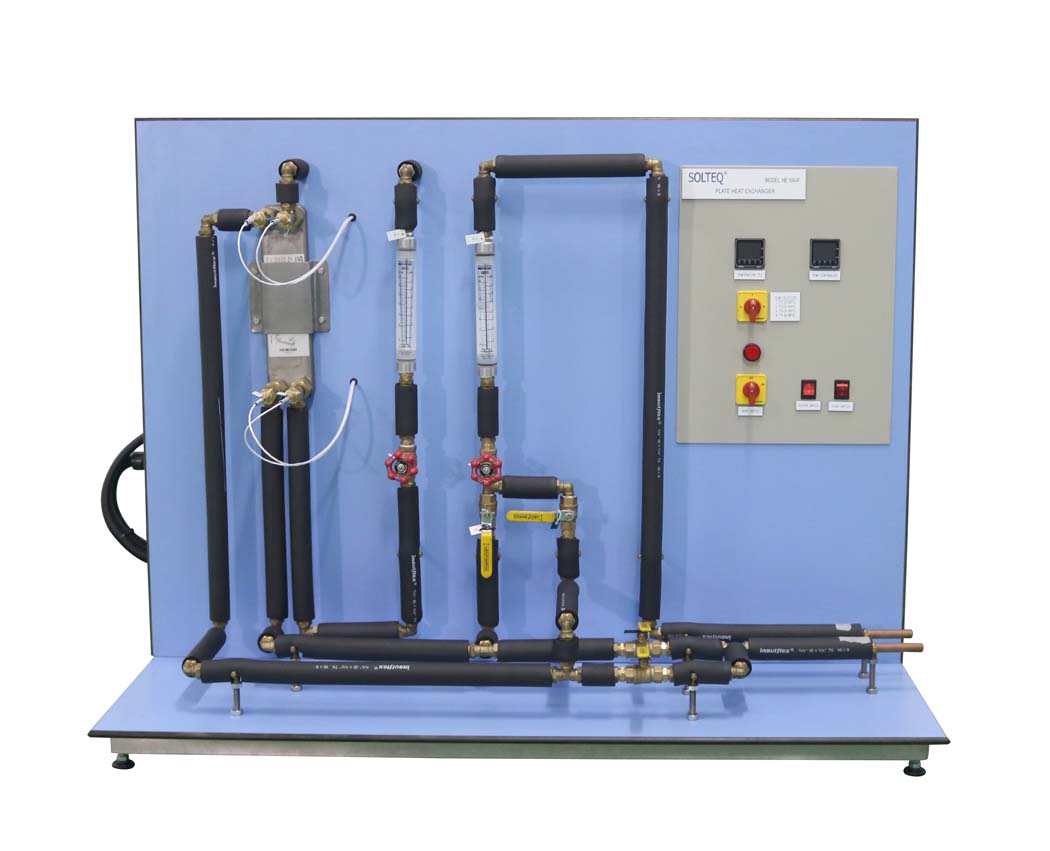
Equipment Name: Plate Heat Exchanger
Model No: HE104-P
Click below to see example:Description: This Plate Heat Exchanger is designed to demonstrate the working principles of industrial heat exchangers.
This unit consists of:
Experimental capabilities:
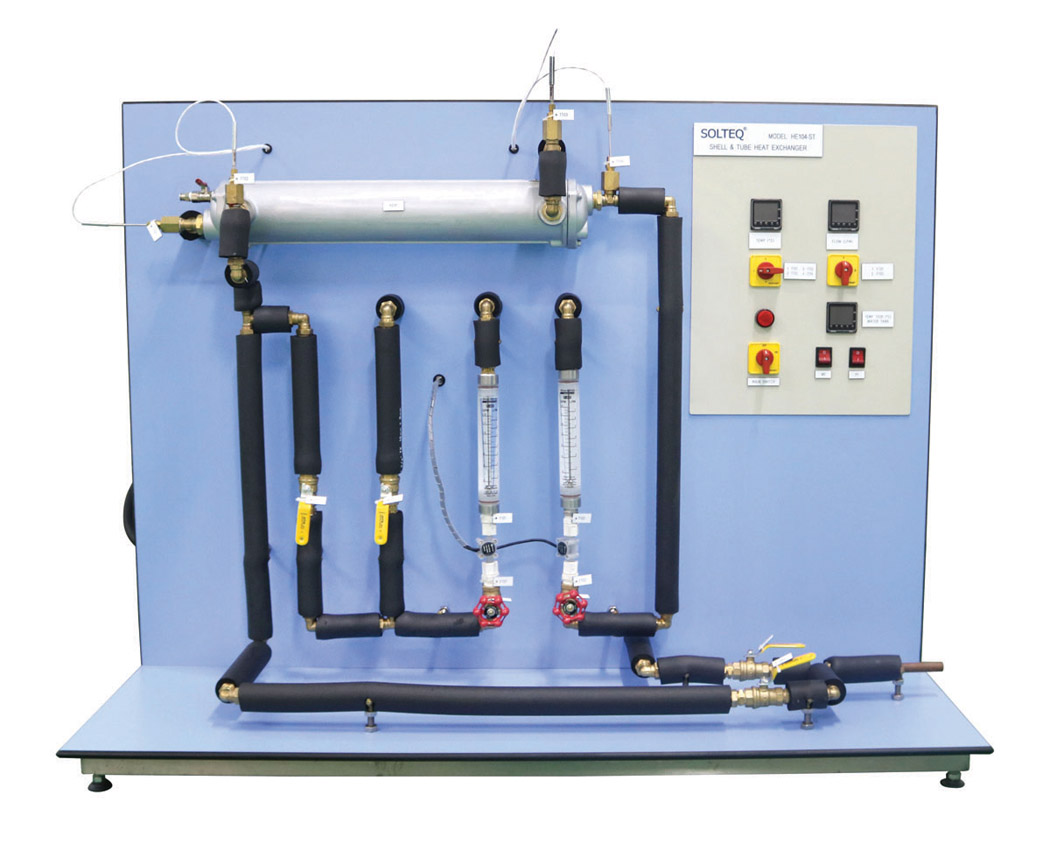
Equipment Name: Shell & Tube Heat Exchanger
Model No: HE104-ST
Click below to see example:Description: This Shell & Tube Heat Exchanger is developed to investigate the fundamental principles of heat transfer as applied to a liquid-to-liquid heat exchanger.
This unit consists of:
Experimental capabilities:
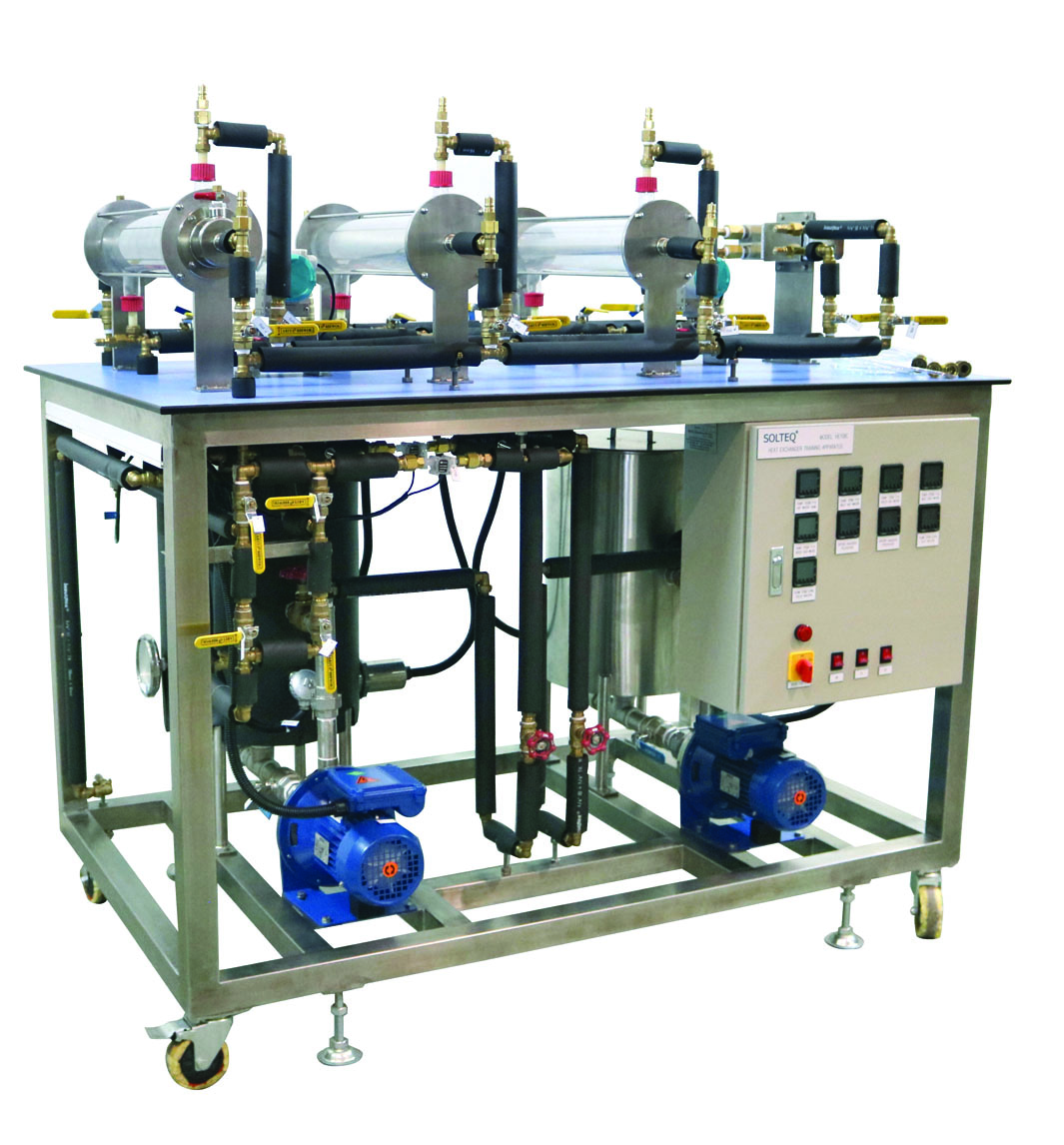
Equipment Name: Heat Exchanger Training Apparatus
Model No: HE158C
Click below to see example:Description: This Heat Exchanger Training Apparatus is designed to familiarize students with different types of heat exchangers:
This unit consists of:
Experimental capabilities:
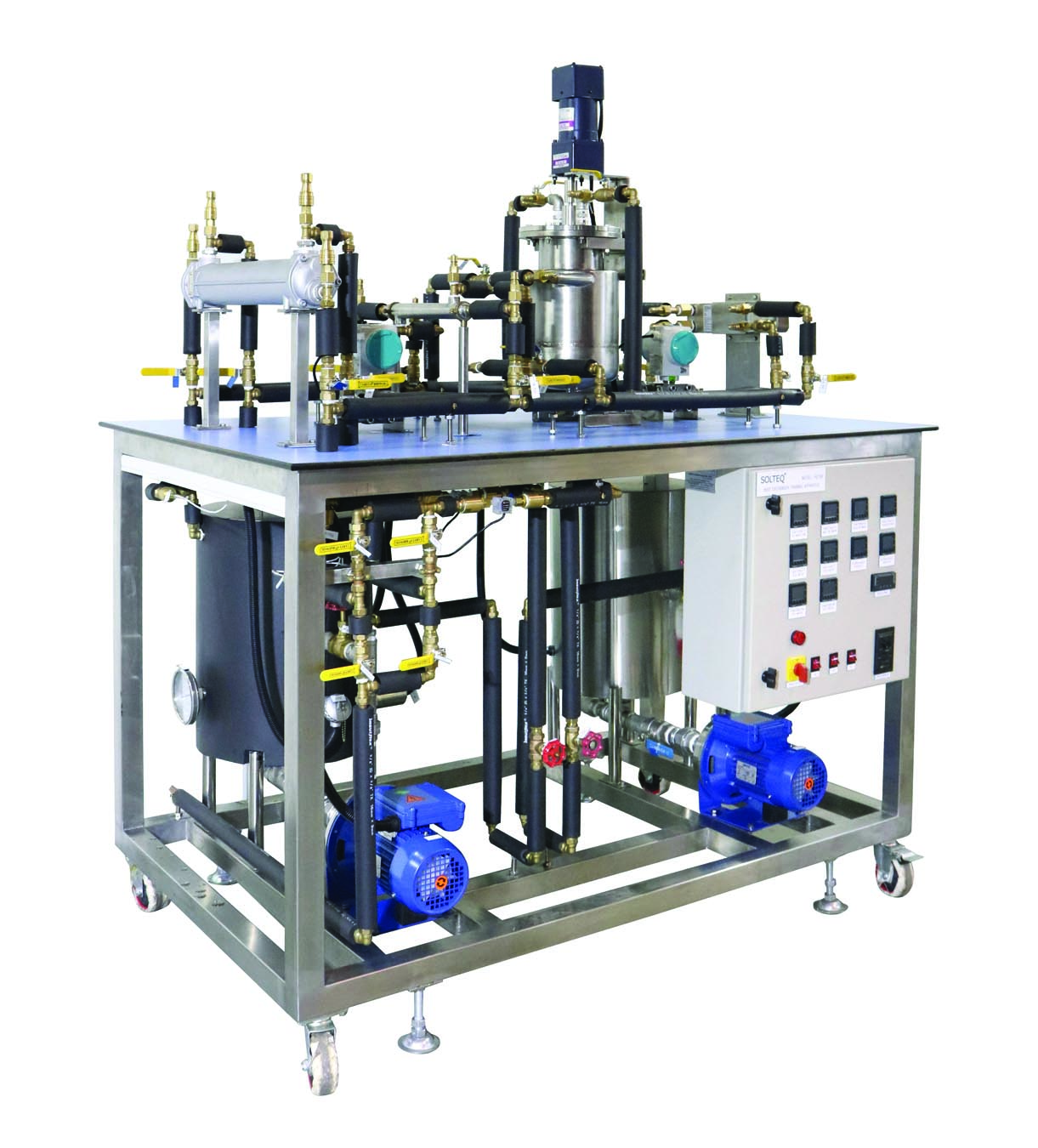
Equipment Name: Heat Exchanger Training Apparatus
Model No: HE158
Click below to see example:Description: This Heat Exchanger Training Apparatus is alternative model to HE158C, HE158 provides a jacketed stirred vessel heat exchanger in place of a shell and coiled tube heat exchanger.
This unit consists of:
Experimental capabilities:
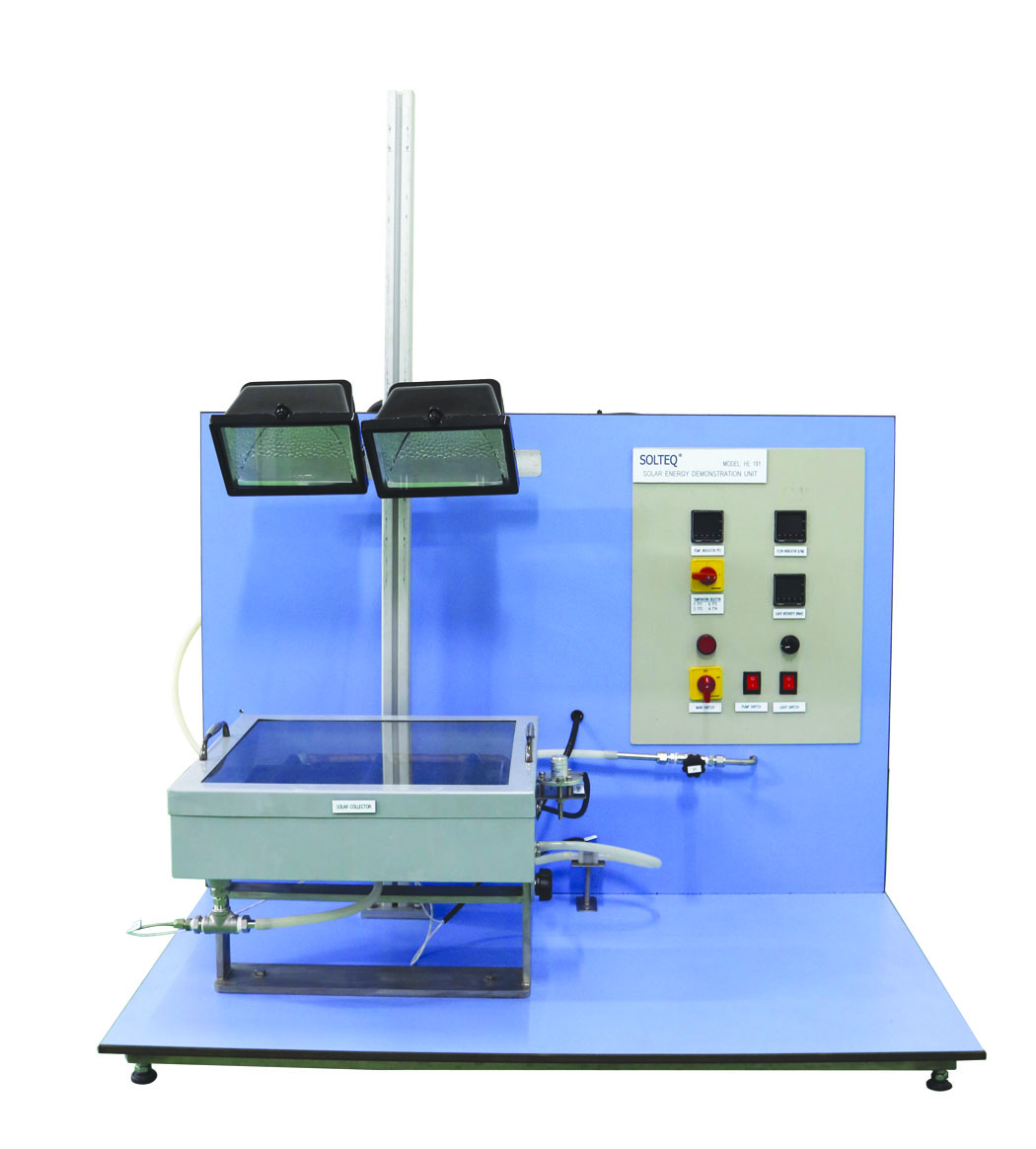
Equipment Name: Solar Energy Demonstration Unit
Model No: HE191
Click below to see example:Description: This Solar Energy Demonstration Unit is designed to demonstrate the principles of thermodynamics related to the field of solar energy. Students will be able to study the basic principles of the conversion of solar radiation into thermal energy.
This unit consists of:
Experimental capabilities:
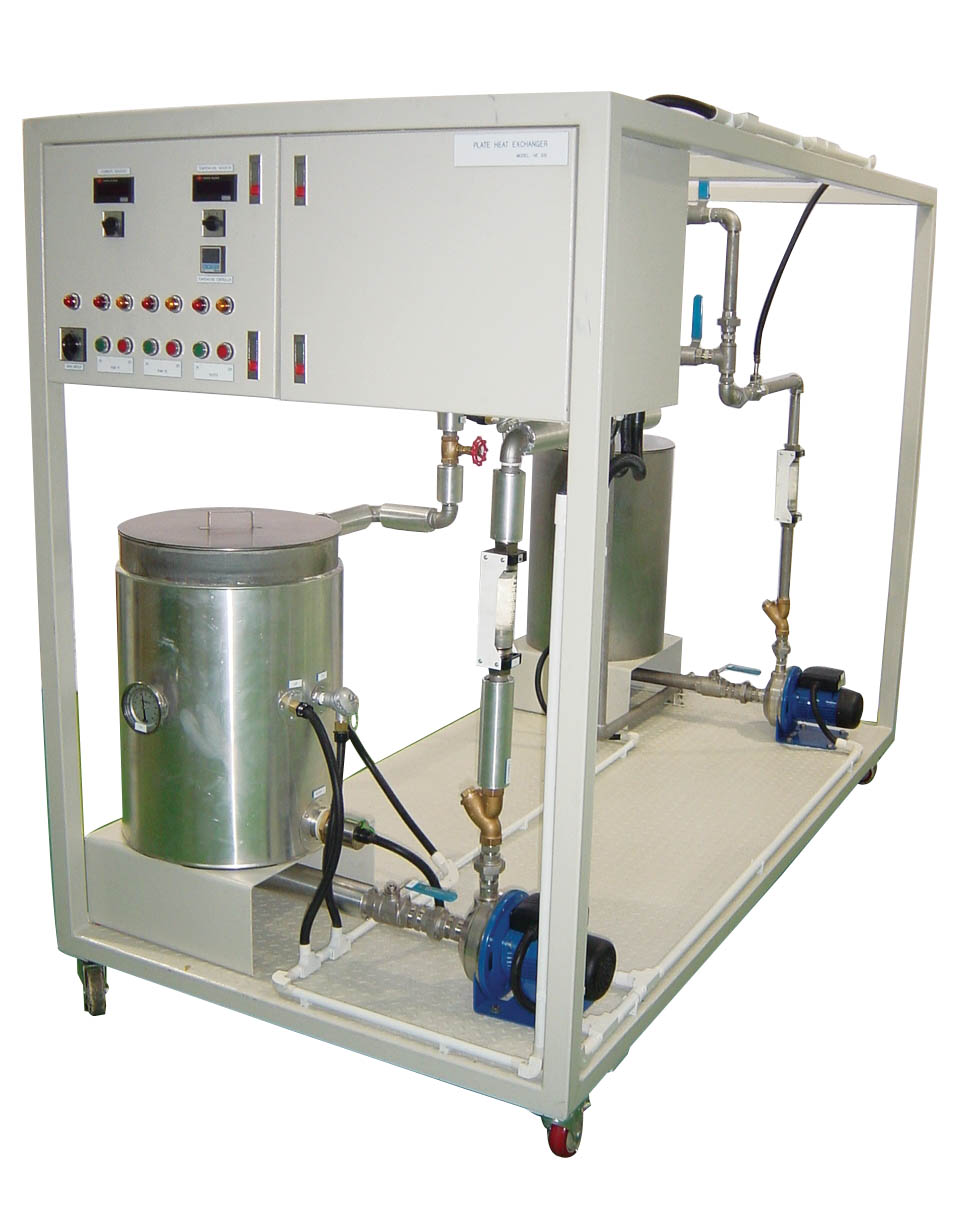
Equipment Name: Plate Heat Exchanger
Model No: HE200
Click below to see example:Description: This Plate Heat Exchanger is designed to introduce students to the principles of a plate exchanger.
This unit consists of:
Experimental capabilities:
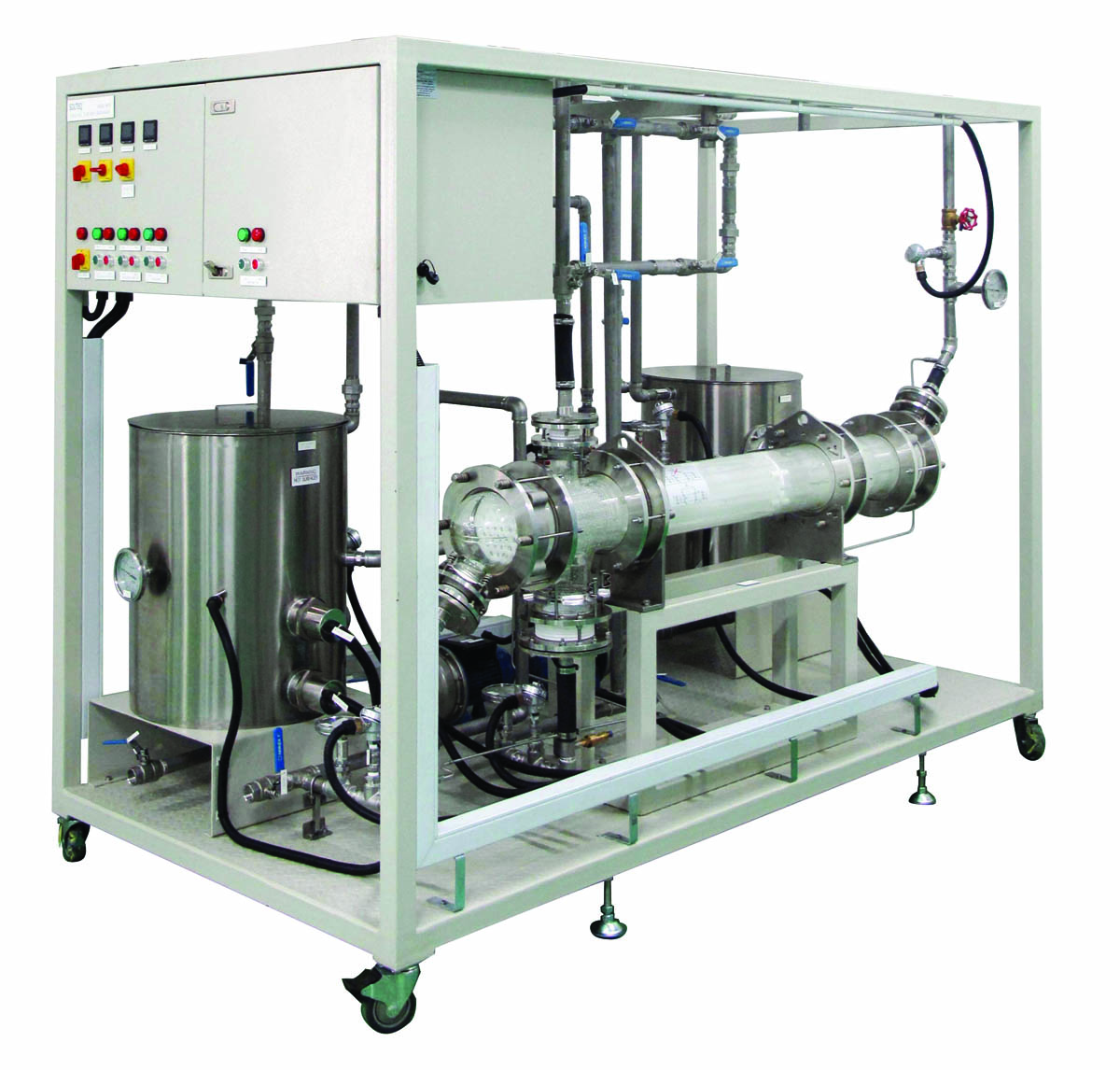
Equipment Name: Glass Shell and Tube Heat Exchanger Studies Units
Model No: HE667
Click below to see example:Description: This Glass Shell and Tube Heat Exchanger Studies Units is designed for alternative model to HE 668, the Glass Shell and Tube Heat Exchanger Studies Unit allows visual observation inside the heat exchanger. This unit can also be fitted with an air cooled radiator to recycle the heated water.
This unit consists of:
Experimental capabilities:

Equipment Name: Shell and Tube Heat Exchanger
Model No: HE668
Click below to see example:Description: This Shell and Tube Heat Exchanger is designed to introduce students to the principles of a shell and tube exchanger.
This unit consists of:
Experimental capabilities:
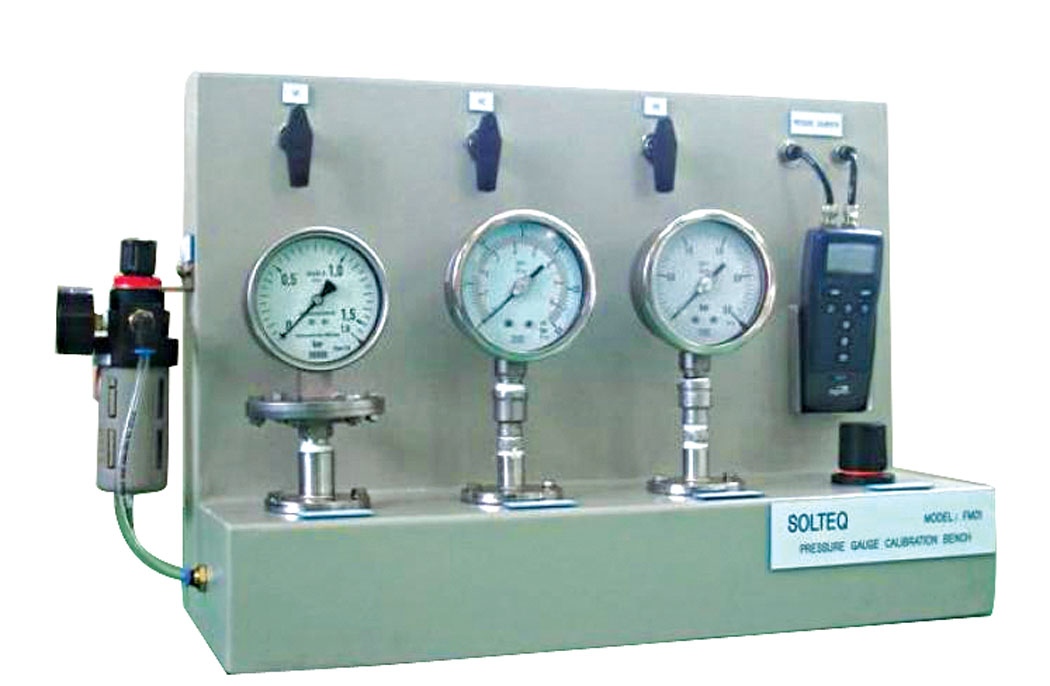
Equipment Name: Pressure Gauge Calibration Bench
Model No: FM01
Description: This Pressure Gauge Calibration Bench is a complete laboratory bench for test and calibration of various pressure measurement elements.
This unit consists of:
Experimental capabilities:
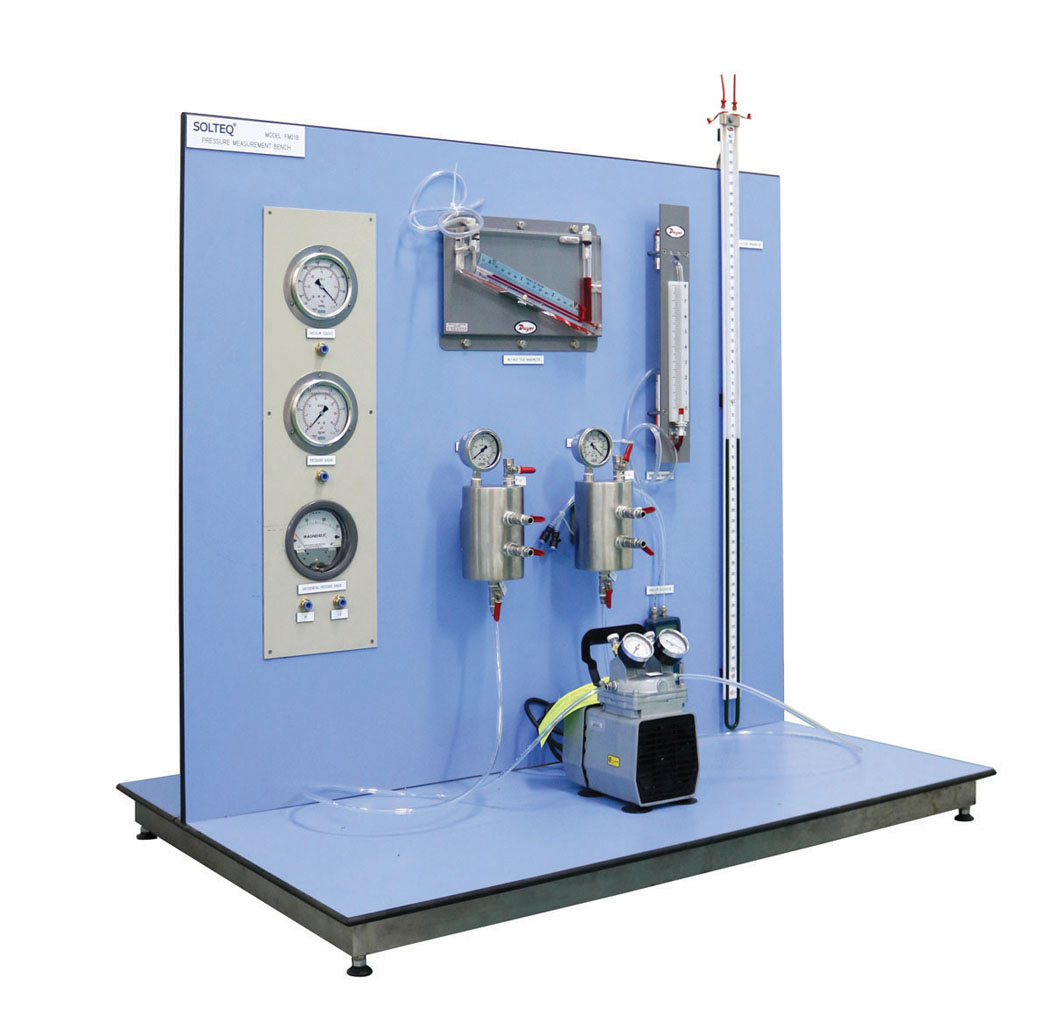
Equipment Name: Pressure Measurement Bench
Model No: FM01B
Description: This Pressure Measurement Bench is a complete laboratory bench for test and calibration of different types of pressure measurement elements.
This unit consists of:
Supplied with:
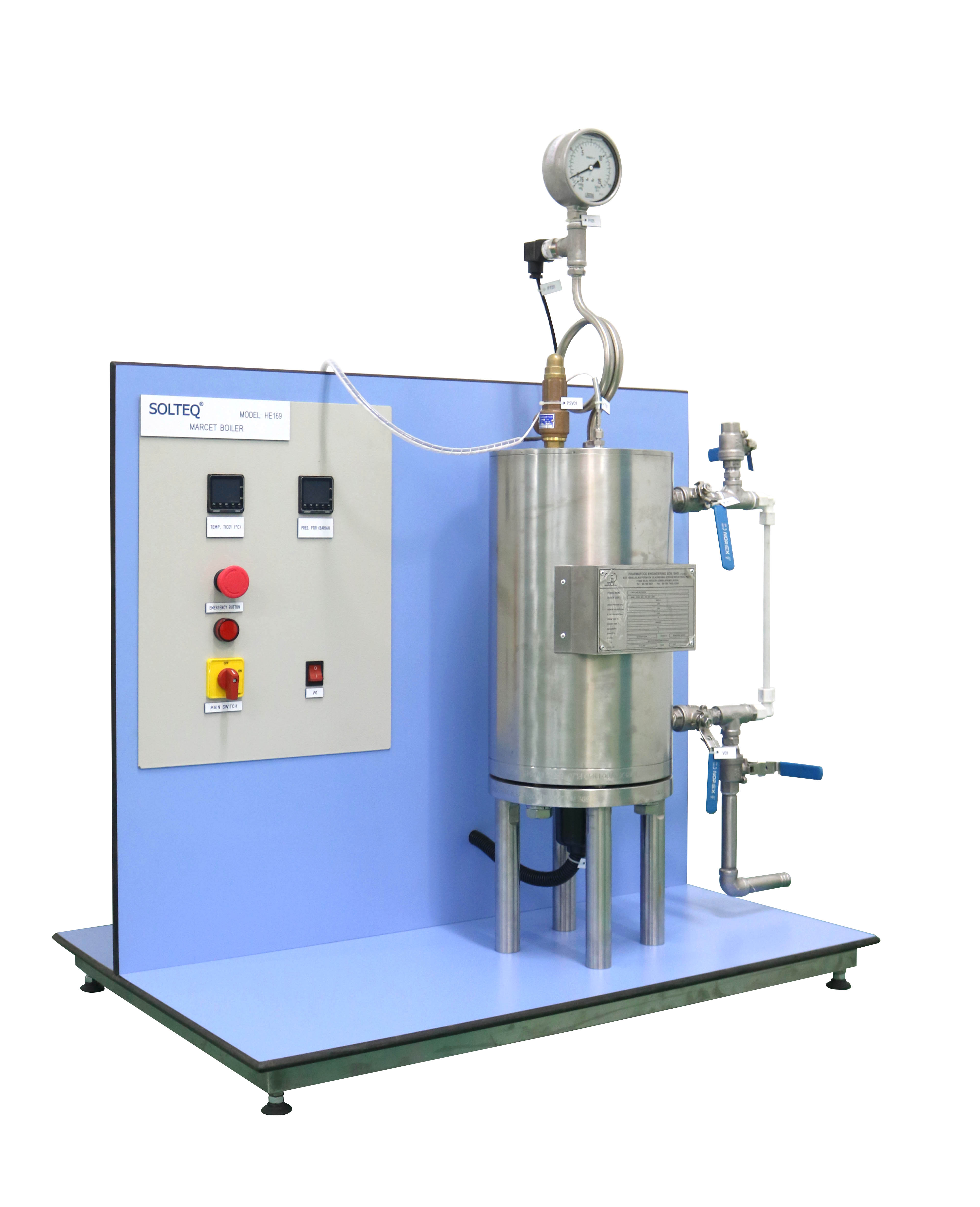
Equipment Name: Marcet Boiler
Model No: HE169
Click below to see example:Description: This Marcet Boiler is a bench top unit designed to demonstration the thermodynamic principles in a simple boiler.
This unit consists of:
Supplied with:
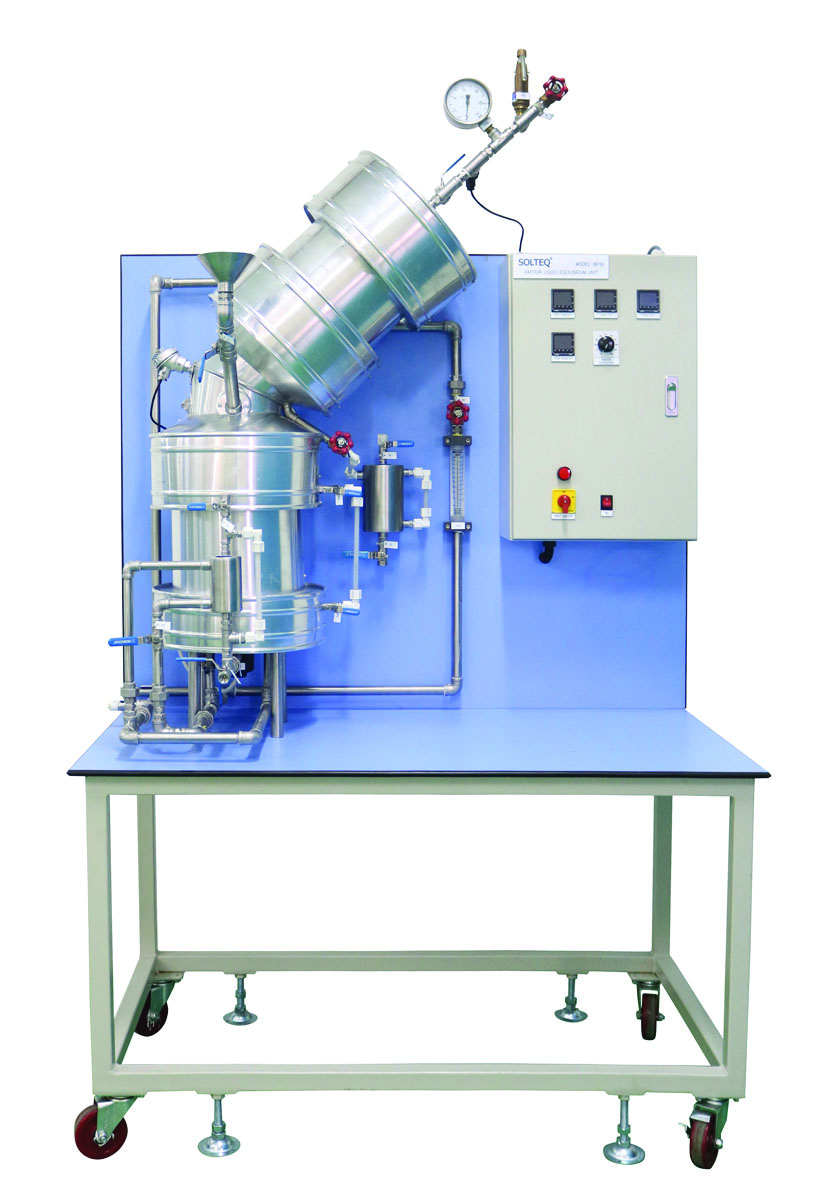
Equipment Name: Vapour Liquid Equilibrium Unit
Model No: BP16
Click below to see example:Description: This Vapor Liquid Equilibrium Unit is designed to investigate the relationship between vapour and liquid equilibrium at pressures up to 10 bar.
This unit consists of:
Supplied with:

Equipment Name: Temperature Measurement Apparatus
Model No: HE151
Description: This Temperature Measurement Bench is a complete, self-contained apparatus to demonstrate fundamental temperature measurement techniques.
This unit consists of:
Supplied with:
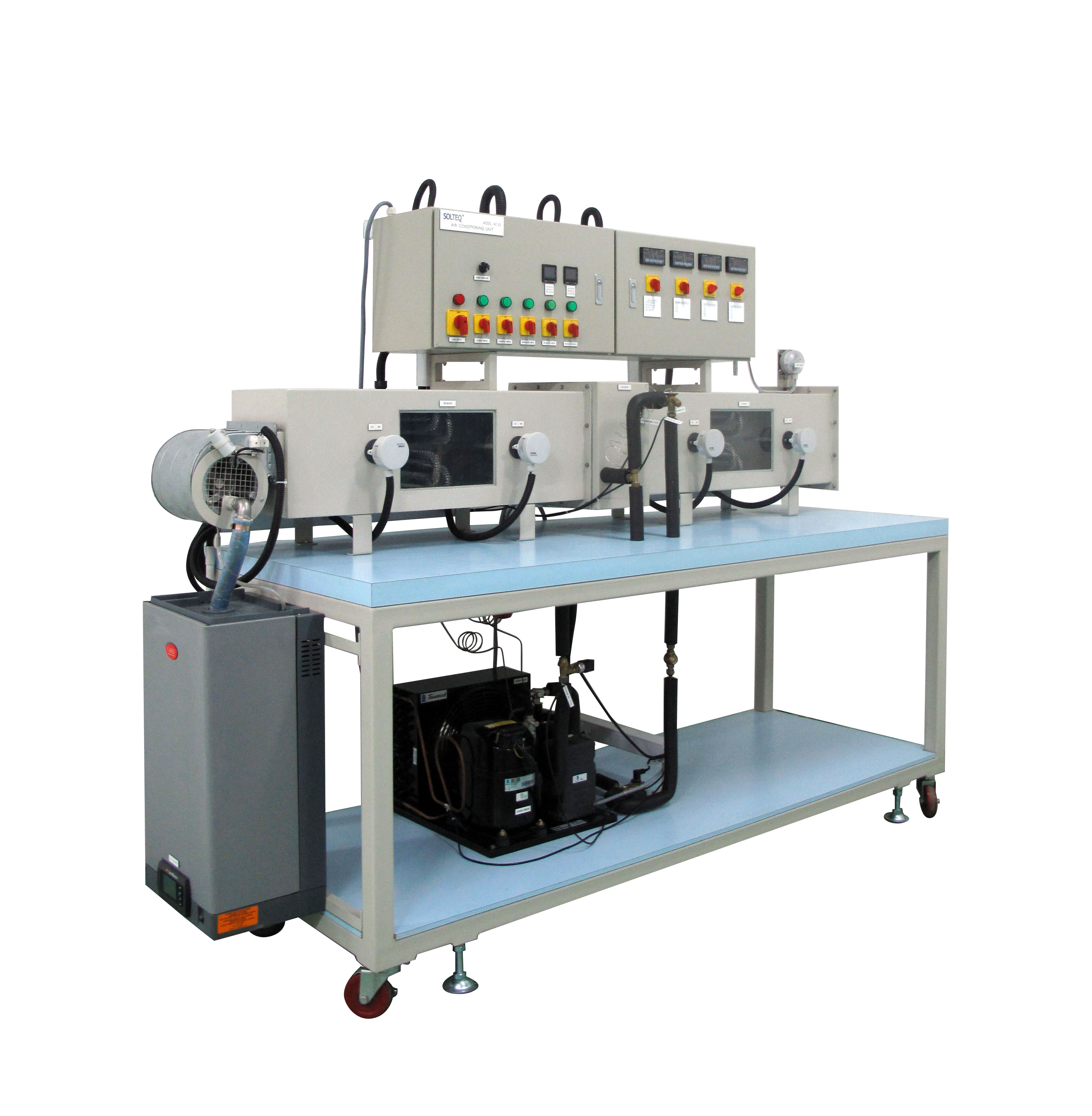
Equipment Name: Air Conditioning Laboratory Unit
Model No: AC01
Click below to see example:Description: The Air Conditioning Laboratory Unit is designed to demonstrate the working principles of air conditioning system.
This unit consists of:
Supplied with:
.JPG)
Equipment Name: Industrial Air Conditioning and Ventilation Unit
Model No: AC10
Click below to see example:Description: This Industrial Air Conditioning and Ventilation Unit is designed for complete training in principles of air conditioning and ventilation system. The unit is used to demonstrate the air conditioning processes and allows student to investigate the air recirculation and mixing, dynamic humidity, and temperature.
This unit consists of:
Experimental capabilities:
(1280-16-GPS)(6).JPG)
Equipment Name: Heat Pump Reverse Cycle
Model No: AC153
Description: This Heat Pump Reverse Cycle is designed for demonstration of reverse direction of basic refrigeration cycle used by an air conditioner.
This unit consists of:
Experimental capabilities:
(1280-16-GPS)(17).jpg)
Equipment Name: VRV System Simulation Unit
Model No: AC154
Description: This VRV System Simulation Unit is designed for demonstration of operation and performance if Variable Volume (VRV) type air conditioning
This unit consists of:
Experimental capabilities:
.jpg)
Equipment Name: Water Cooled Package Air Conditioner
Model No: AC155
Description: This Water Cooled Package Air Conditioner is installed with industrial type components to demonstrate the working principle of an actual air conditioning system.
This unit consists of:
Experimental capabilities:
(1233-15-SE)(1).jpg)
Equipment Name: Combustion Laboratory Unit
Model No: CO01
Click below to see example:Description: This Combustion Laboratory Unit is designed for study of combustion process using a small scale unit based on an industrial dual fuel burner.
This unit consists of:
Experimental capabilities:
(1156-14-SE)(5).jpg)
Equipment Name: Flame Propagation and Stability Unit
Model No: GE02
Description: This Flame Propagation and Stability Unit is specially designed for experiments on the characteristics of flames.
This unit consists of:
Experimental capabilities:

Equipment Name: Water Cooling Tower
Model No: HE152
Click below to see example:Description: This Water Cooling Tower is designed to demonstrate the operation of a force draught cooling tower.
This unit consists of:
Experimental capabilities:
(1347-17-SE)(13).jpg)
Equipment Name: Mechanical Heat Pump
Model No: HE165
Click below to see example:Description: This Mechanical Heat Pump is designed to provide students with a practical and quantitative demonstration of the vapour compression cycle.
This unit consists of:
Experimental capabilities:
(1220-15-SE)(Rev (1).jpg)
Equipment Name: Mechanical Heat Pump
Model No: HE165A
Click below to see example:Description: This Mechanical Heat Pump designed to provide students with a practical and quantitative demonstration of the vapour compression cycle.
This unit consists of:
Experimental capabilities:
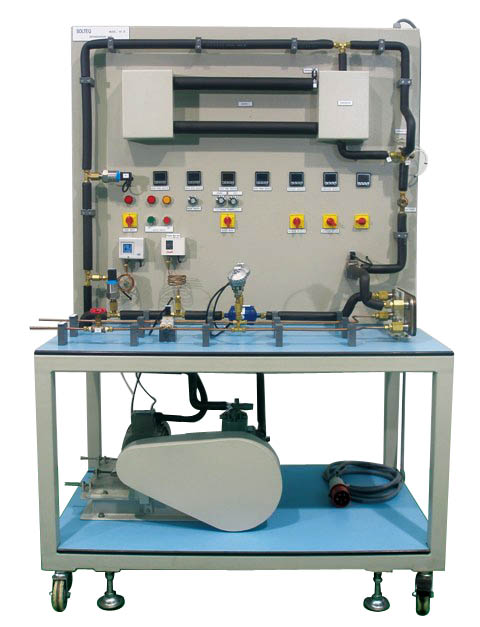
Equipment Name: Refrigeration Laboratory Unit
Model No: RF01
Click below to see example:Description: This Refrigeration Laboratory Unit is designed to help students to study the performance of a vapour compression cycle under various conditions of evaporator load and condenser pressure.
This unit consists of:
Experimental capabilities:
(1343-17-SE)(7).jpg)
Equipment Name: Gas Absorption Refrigeration Unit
Model No: RF10
Click below to see example:Description: This Gas Absorption Refrigeration Unit is a laboratory benchtop unit for the demonstration of gas absorption refrigeration.
This unit consists of:
Experimental capabilities:
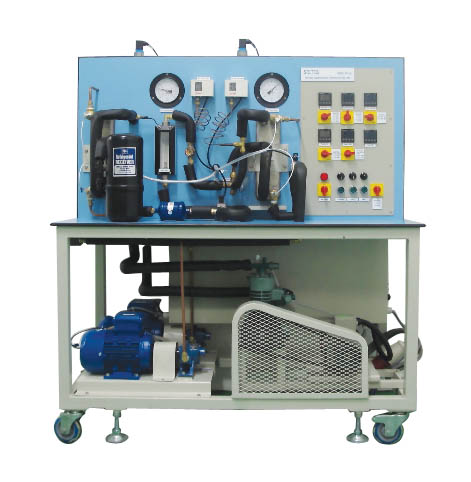
Equipment Name: Vapour Compression Refrigeration Trainer
Model No: RF108
Click below to see example:Description: This Vapour Compression Refrigeration Trainer is designed and constructed as a benchtop unit for students to study the thermodynamics of the vapour compression cycle.
This unit consists of:
Experimental capabilities:
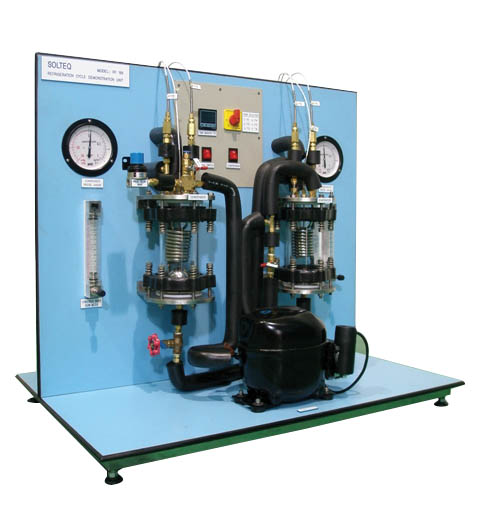
Equipment Name: Vapour Compression Refrigeration Cycle
Model No: RF166
Click below to see example:Description: This Vapour Compression Refrigeration Cycle is designed and constructed as a benchtop unit for students to study the thermodynamics of the vapour compression cycle.
This unit consists of:
Experimental capabilities:
(1247-15-SE)(ok).jpg)
Equipment Name: Cascade Refrigeration Trainer System
Model No: RF169
Click below to see example:Description: This Cascade Refrigeration Trainer System has been designed with industrial type components to demonstrate the working principle of cascade refrigeration.
This unit consists of:
Experimental capabilities:
(1247-15-SE)(5).jpg)
Equipment Name: Air Conditioner Trainer
Model No: RF170
Click below to see example:Description: This Air Conditioner Trainer has been designed with industrial type components to demonstrate the working principle of an actual air conditioning system.
This unit consists of:
Experimental capabilities:
(1231-15-GPS)(1).jpg)
Equipment Name: Thermal Ice Storage Chiller System
Model No: RF171
Description: This Thermal Ice Storage Chiller System is installed with industrial type components to demonstrate the working principle of a thermal ice storage.
This unit consists of:
Experimental capabilities:
R.jpg)
Equipment Name: Boiler Simulator
Model No: TH01
Click below to see example:Description: This Boiler Simulator is designed to enable students to investigate parameters governing the utilization and maintenance of a thermal boiler.
This unit consists of:
Experimental capabilities:
(1149-14-SE)(1).jpg)
Equipment Name: Engine Test Bed
Model No: TH03
Click below to see example:Description: This Engine Test Bed is a floor mounted unit designed for the study of air cooled internal combustion engines
This unit consists of:
i) Four Stroke Petrol Engine
ii) Four Stroke Diesel Engine
Experimental capabilities:
(1216-15-SE) (3).jpg)
Equipment Name: Boyle’s Law Apparatus
Model No: TH10
Click below to see example:Description: This Boyle’s Law Apparatus is designed for demonstration of Boyle’s Law.
This unit consists of:
Experimental capabilities:
(1229-15-SE)(2).jpg)
Equipment Name: Perfect gas Expansion Apparatus
Model No: TH11
Click below to see example:Description: This Perfect gas Expansion Apparatus is a self-sufficient bench top unit designed to familiarize students with several fundamental thermodynamic processes. Demonstration of the thermodynamic processes is performed with air for a safe and convenient operation.
This unit consists of:
Experimental capabilities:
(1230-15-SE)(6)modify.jpg)
Equipment Name: Saturation Vapour Pressure Measurement Unit
Model No: TH14
Click below to see example:Description: This Saturation Vapour Pressure Measurement Unit is designed for study of the relationship between temperature and pressure of saturated vapour of boiling water.
This unit consists of:
Experimental capabilities:
(1211-15-SE)(1).jpg)
Equipment Name: Steam Motor & Energy Conversion Test Set
Model No: TH15
Click below to see example:Description: This Steam Motor & Energy Conversion Test Set is designed to introduce principles of thermodynamics and energy conversion to students. This unit is self-contained, with all components mounted within a robust and mobile epoxy coated frame.
This unit consists of:
Experimental capabilities:
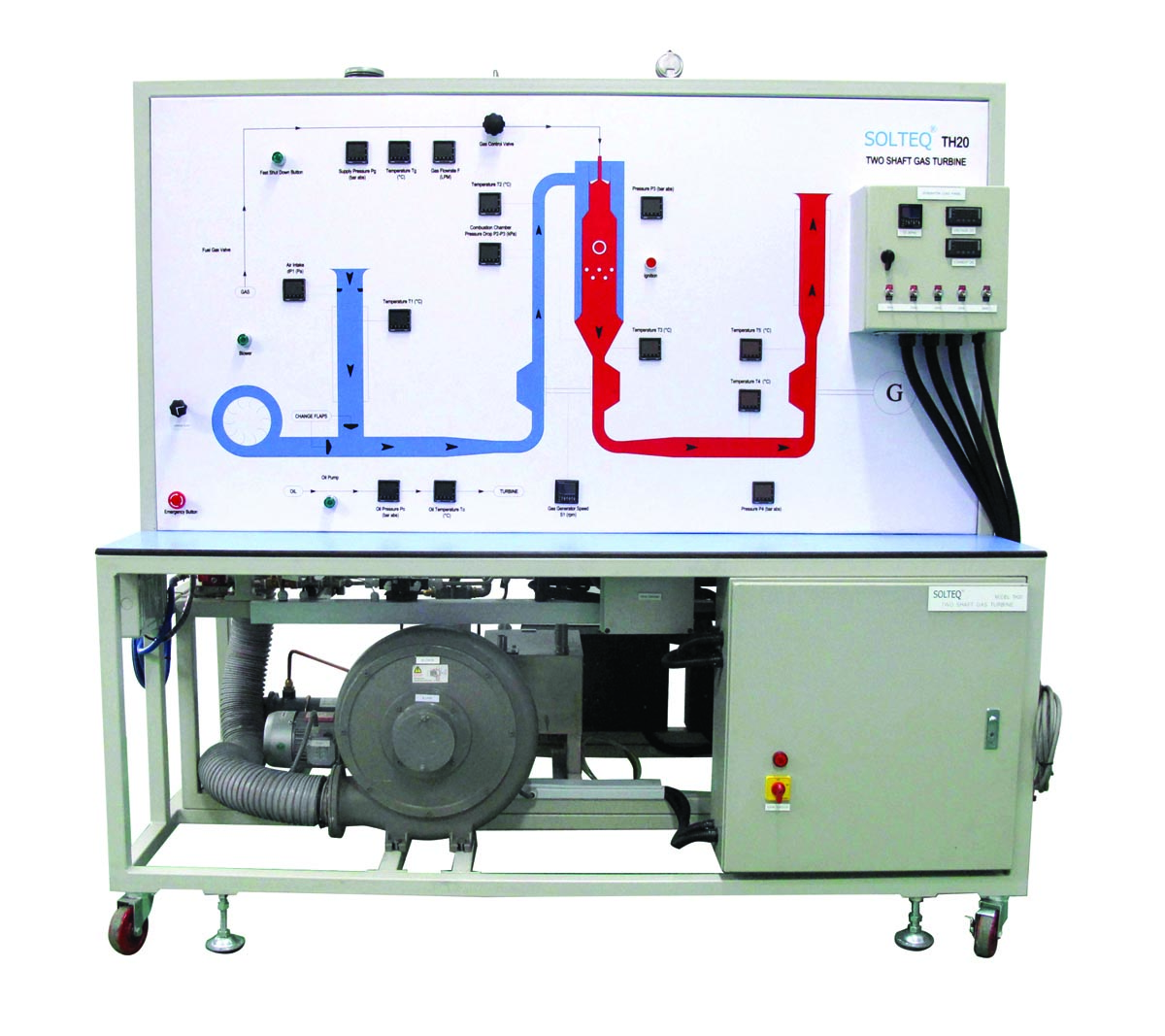
Equipment Name: Two-Shaft Gas Turbine Unit
Model No: TH20
Click below to see example:Description: This Two-Shaft Gas Turbine Unit is designed to provide the means for carrying out an extensive programme of experiments in gas turbine technology using the instrumentation provided.
This unit consists of:
Experimental capabilities:
i) Gas generator compressor
ii) Combustion chamber
iii) Power turbine

Equipment Name: Air Compressor Study Unit
Model No: WT01
Click below to see example:Description: This Air Compressor Study Unit is designed for the study of two-stage air compressor. The characteristics of compressed air flow through different types of flow arrangement are investigated.
This unit consists of:
Experimental capabilities:

Equipment Name: Two-Stage Air Compressor Apparatus
Model No: WT03
Click below to see example:Description: This Two-Stage Air Compressor Apparatus is designed to demonstrate the characteristics of single-stage and two-stage air compressor system.
This unit consists of:
Experimental capabilities:
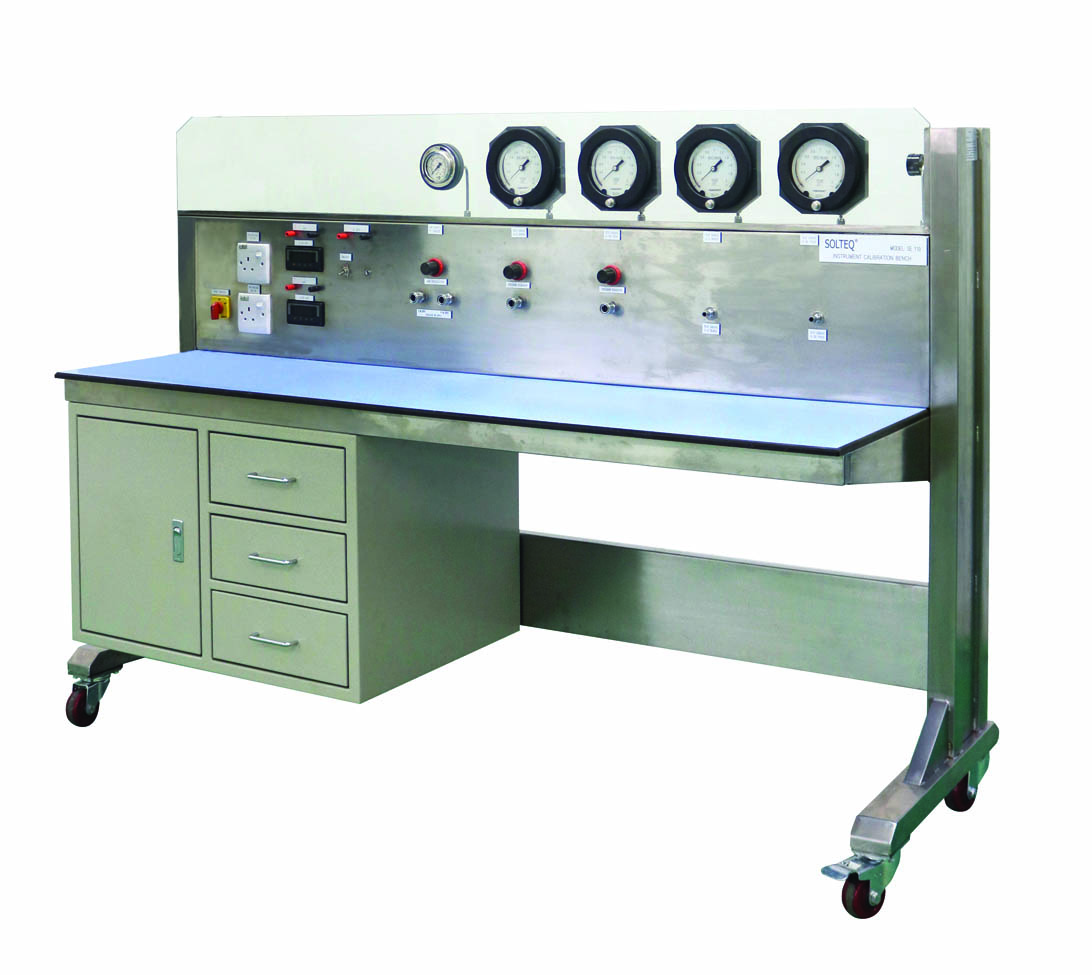
Equipment Name: Instrumentation Calibration Bench
Model No: SE110-1
Description: This Instrumentation Calibration Bench is a complete laboratory bench for test and calibration of various instrument signals such as pressure, voltage and mA. High accuracy instrumentations such as pressure regulators and test gauges, digital meters are provided.
This unit consists of:
a) Instrument workbench
b) Instrument workbench console
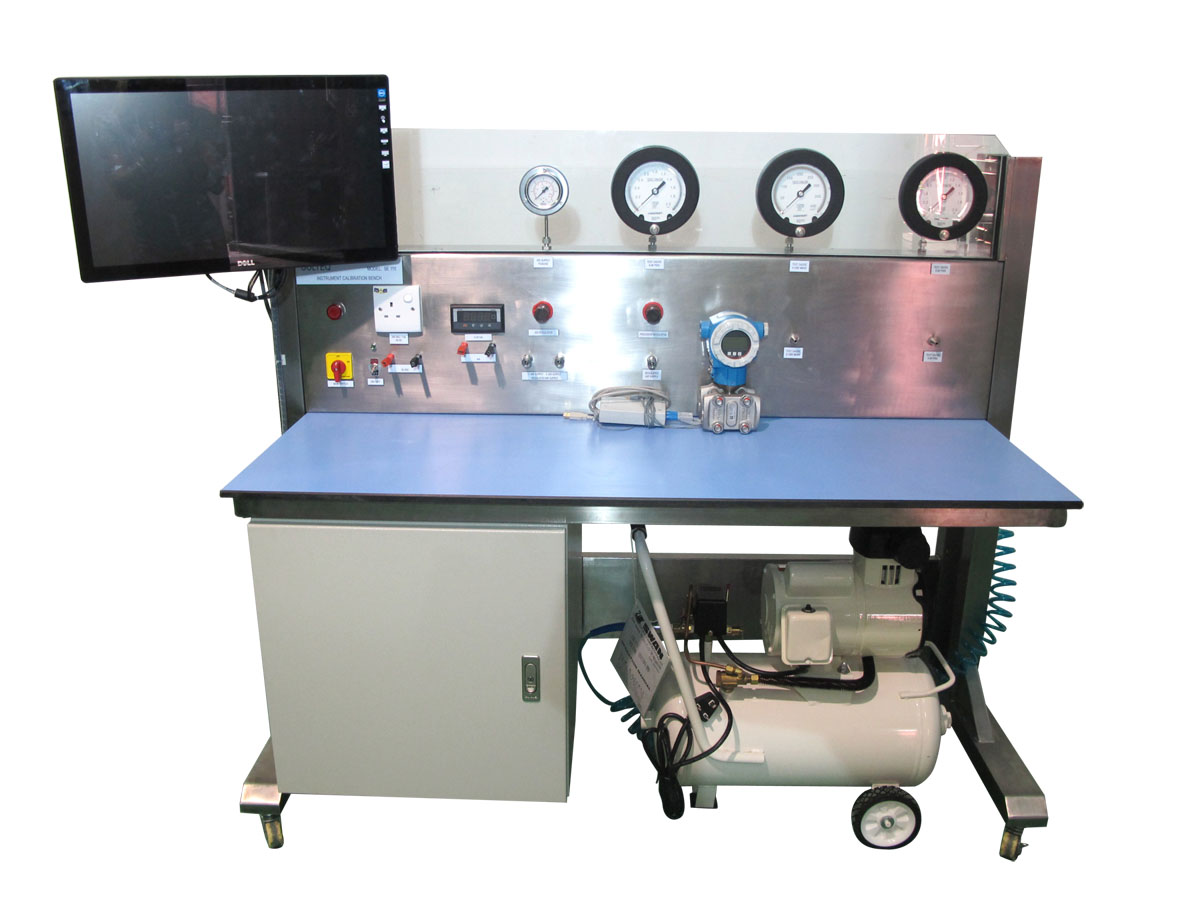
Equipment Name: Smart Instrumentation Calibration Bench
Model No: SE110-2
Description: This Smart Instrumentation Calibration Bench is a complete laboratory bench for test and calibration of various instrument signals such as pressure, voltage and mA. High accuracy instrumentations such as pressure regulators and test gauges, digital meters are provided.
This unit consists of:
Instrument workbench
Instrument workbench console
Optional:
Smart Calibrator for:
.jpg)
Equipment Name: Experimental Stand For Flowmeters
Model No: SE111
Click below to see example:Description: This Experimental Stand For Flowmeters is designed to introduce student to various types of flow meters commonly found in industrial applications.
This unit consists of:
Experimental capabilities:
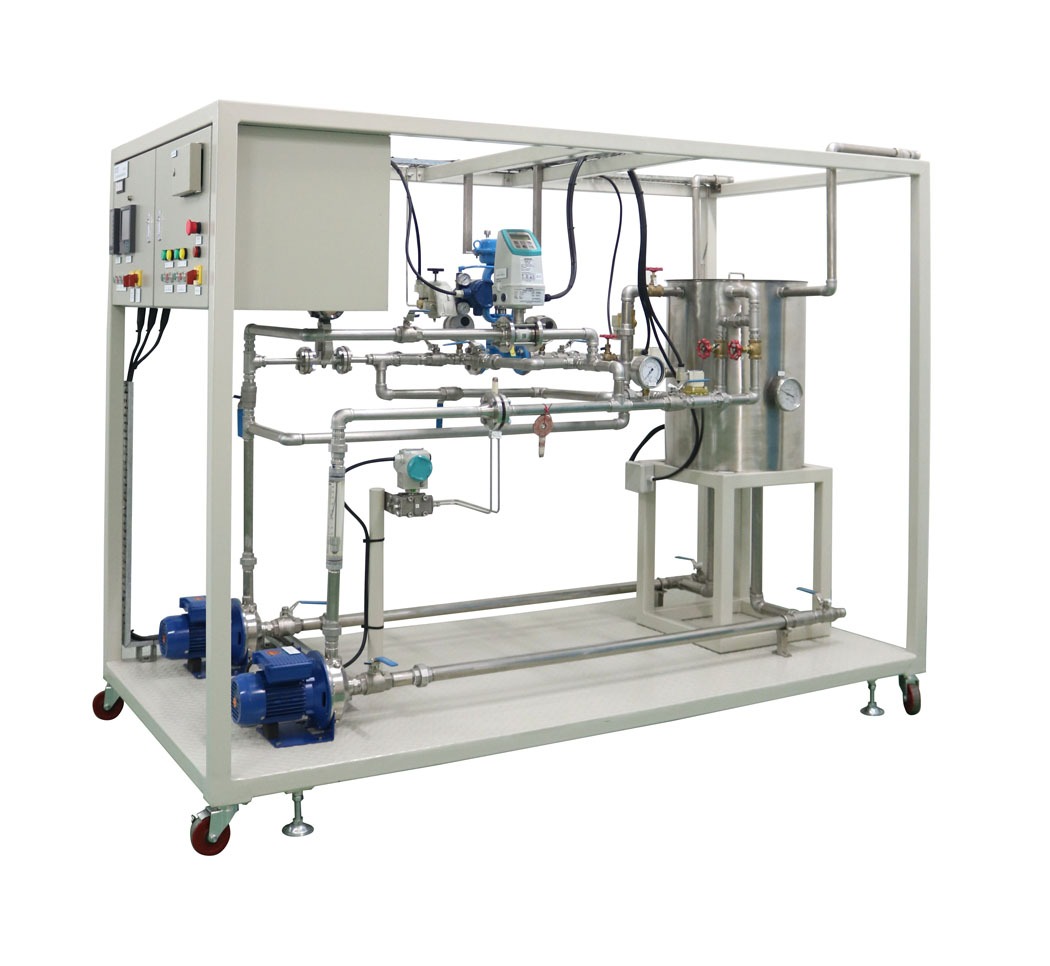
Equipment Name: Experimental Stand for Control Valves
Model No: SE112
Click below to see example:Description: This Experimental Stand for Control Valves is designed for demonstration of typical control valves characteristics.
This unit consists of:
Experimental Capabilities:
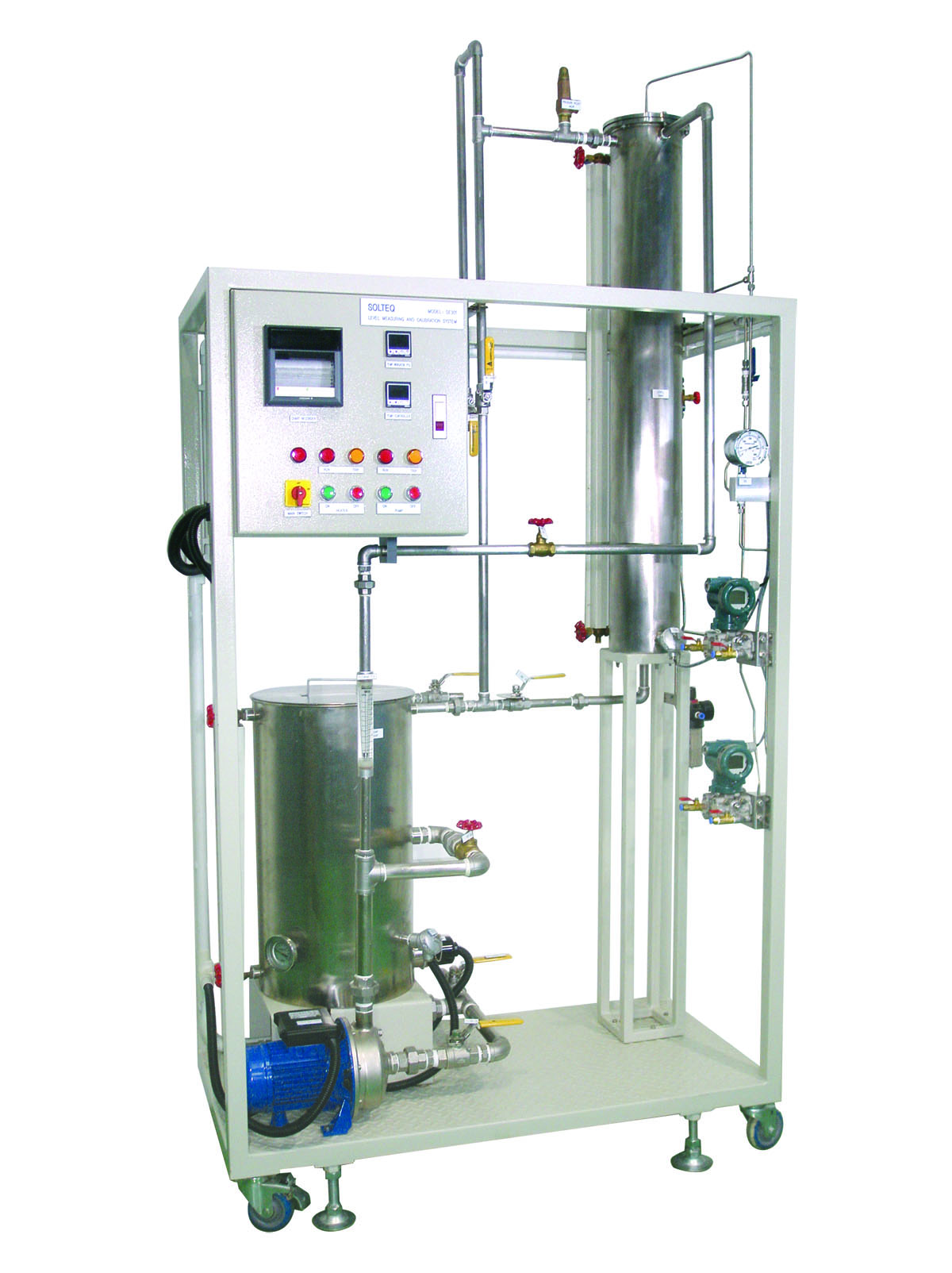
Equipment Name: Level Measurement and Calibration Experiment System
Model No: SE301
Description: This Level Measurement and Calibration is designed for students to study the principles of level measurement and site calibration.
This unit consists of:
Experimental capabilities:
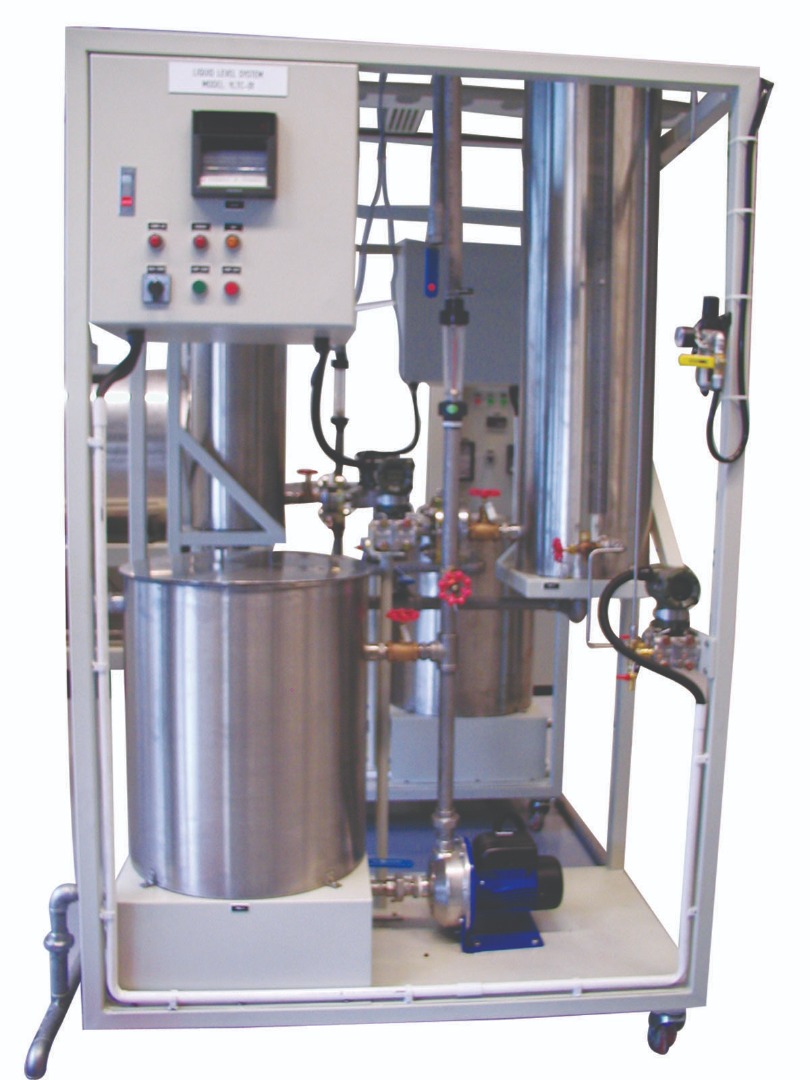
Equipment Name: Density Measurement and Calibration Experiment System
Model No: SE302
Description: The Density Measurement and Calibration Experiment System is designed for students to study the principles of density measurement and site calibration.
This unit consists of:
Experimental capabilities:
(1338-17-SE)(4).jpg)
Equipment Name: Water Flow Measurement and Calibration Experiment System
Model No: SE303
Description: This Water Flow Measurement and Calibration Experiment System is designed for students to study various types of flow measurement devices as well as site calibration.
This unit consists of:
Experimental capabilities:
.jpg)
Equipment Name: Temperature Measurement and Calibration Experiment System
Model No: SE304
Description: This Temperature Measurement and Calibration Experiment System is designed to study the principles of temperature measurement as well as hands on experience on the configuration and calibration of transmitter. It demonstrates various temperature measurement methods and calibration used by industries.
This unit consists of:
Experimental capabilities:
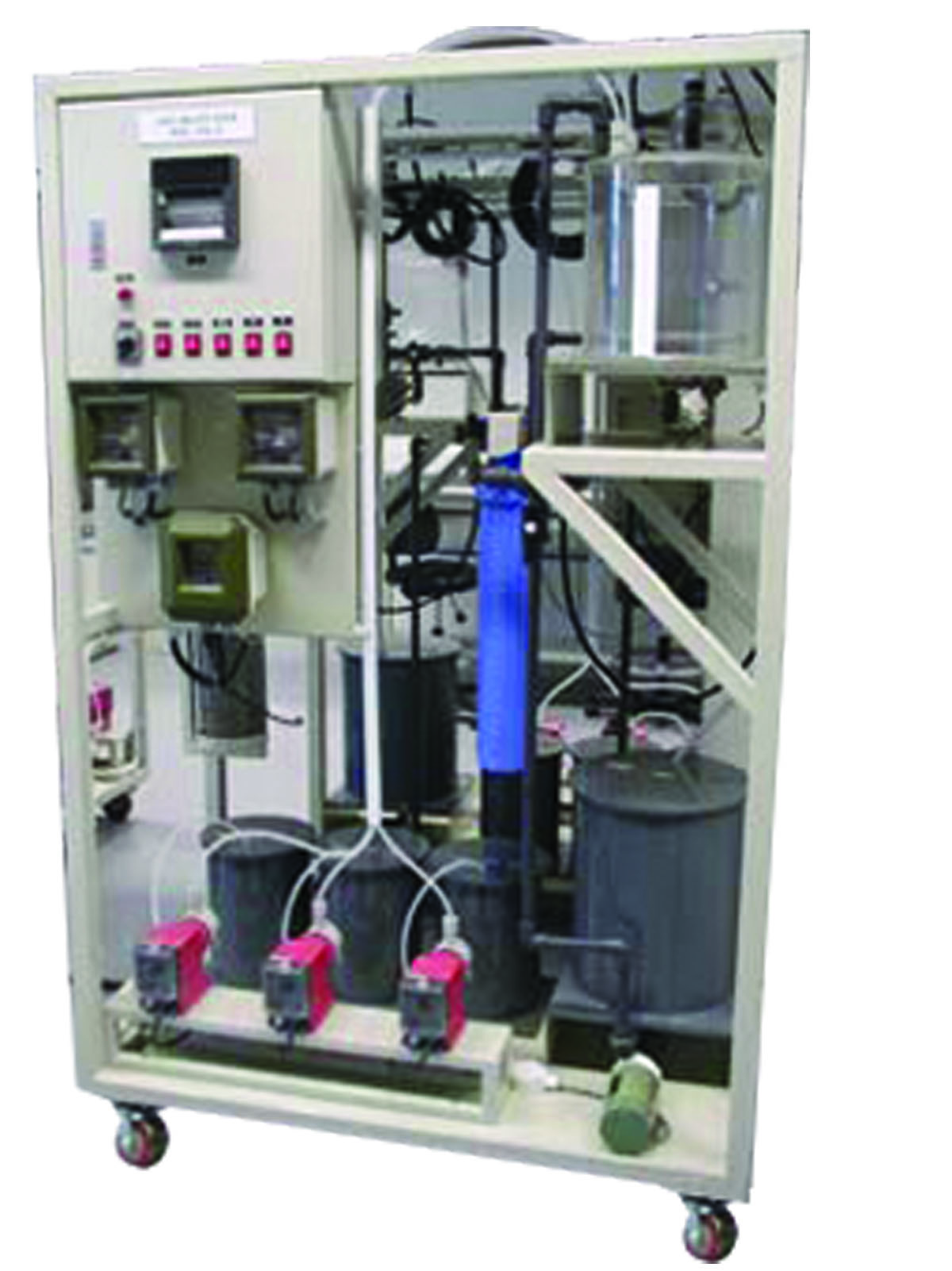
Equipment Name: pH Measurement and Calibration Experiment System
Model No: SE306
Description: This pH Measurement and Calibration Experiment System is designed for students to study pH measurement and site calibration.
Experimental capabilities:
(1321-16-SE)(1).JPG)
Equipment Name: Temperature Measurement Bench
Model No: HE151
Description: This Temperature Measurement Bench is a complete, self contained apparatus to demonstrate fundamental temperature measuring and calibration techniques.
This unit consists of:
Experimental capabilities:
(1304-16-SE)(6).jpg)
Equipment Name: Pressure Measurement Bench
Model No: FM01B
Description: This Pressure Measurement Bench is a complete laboratory bench for test and calibration of different type of pressure measuring elements.
This unit consists of:
Experimental capabilities:
(1304-16-SE)(3).jpg)
Equipment Name: Flowmeter Measurement Apparatus
Model No: FM101
Description: This Flowmeter Measurement Apparatus is designed to introduce students to the operating characteristics of various types of flowmeters. The flowmeters are installed in a series configuration to permit comparison.
This unit consists of:
Experimental capabilities:
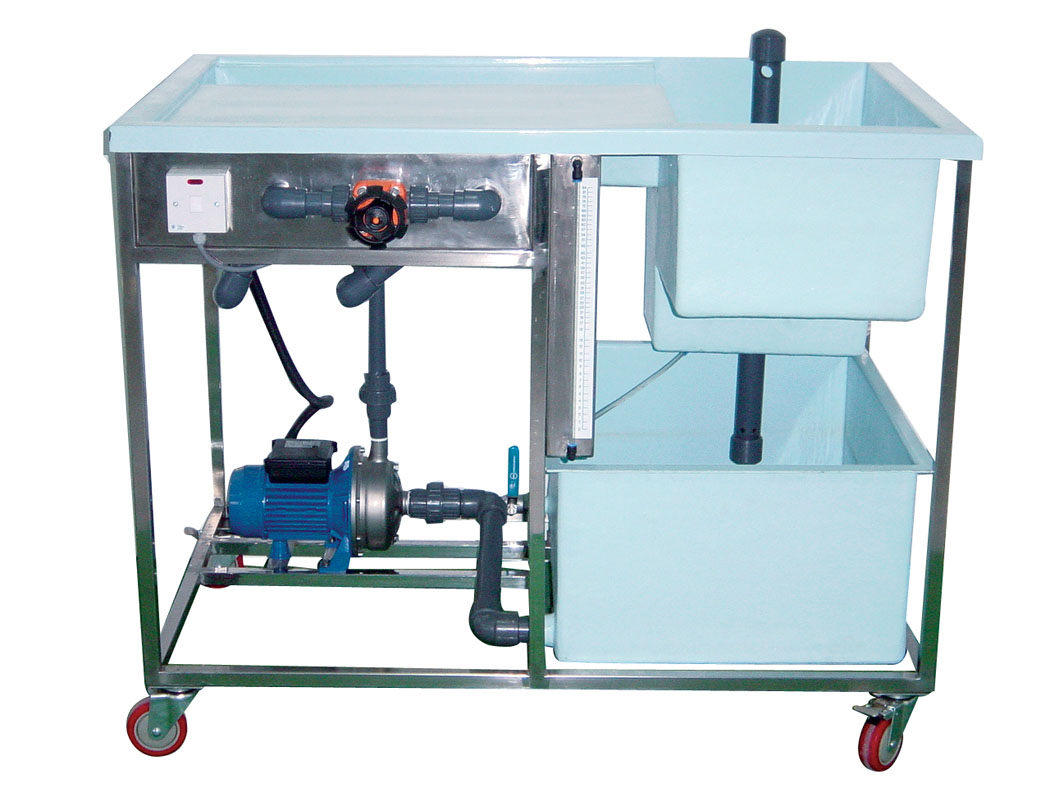
Equipment Name: Hydraulic Bench
Model No: FM110
Description: This Hydraulic Bench is designed to complement a wide range of accessories for experiments on the subjects of fluid mechanics. The unit consists of upper and lower mouldings mounted on a steel structure fitted with lockable wheels. The mouldings are made of fiberglass for lightweight and corrosion resistant features. An open channel and volumetric measuring tank are incorporated with the bench along with the means for mounting and connecting various accessories.
This unit consists of:
This unit consists of:
(1228-15-SE)(2).jpg)
Equipment Name: Demonstration 3-Term Controller unit
Model No: SE200
Description: This Demonstration 3-Term Controller unit is developed for introducing students to principles of pneumatic 3-term controller. The operations of differential bellows, feedback bellows, nozzle and flapper assembly, pneumatic relay are shown. A pressure process with control valve is included.
This unit consists of:
Experimental capabilities:
(1168-14-SE)(1).jpg)
Equipment Name: Process Control Simulator
Model No: SE201
Click below to see example:Description: This Process Control Simulator is designed to provide students with hands-on experience on control techniques. The unit will simulate a process containing three first order lags, two of which are changeable to pure integrators, plus an approximated distance velocity or transport lag. The unit consists of three main elements: the controller, the non-linear unit, and the process trainer unit.
This unit consists of:
Experimental capabilities:
(1268-16-SE)(3).jpg)
Equipment Name: Bench Top Process Control Trainer
Model No: SE202
Click below to see example:Description: This Refrigeration Laboratory Unit is designed to introduce students to basic control principles and theory of industrial process control system. The unit is a scaled down process model of an industrial process where flow, temperature and batch process control are commonly found. Optional level control and control valve can also be integrated into this system.
This unit consists of:
Experimental capabilities:
(1222-15-SE)(2).jpg)
Equipment Name: Bench Top Multiprocess Control Unit
Model No: SE229
Click below to see example:Description: This Bench Top Multiprocess Control Unit is designed to use water process for safe and practical experiments on flow, pressure, level and temperature control.
(1266-16-GPS) (1)modify.jpg)
Equipment Name: Modular Flow Process Control Trainer
Model No: SE270-1
Click below to see example:Description: This Modular Flow Process Control Trainer is designed for the demonstration of flow control.
This unit consists of:
Experimental capabilities:
(1266-16-GPS)(1).jpg)
Equipment Name: Modular Level Process Control Trainer
Model No: SE270-2
Click below to see example:Description: This Modular Level Process Control Trainer is designed for the demonstration of level control.
This unit consists of:
Experimental capabilities:
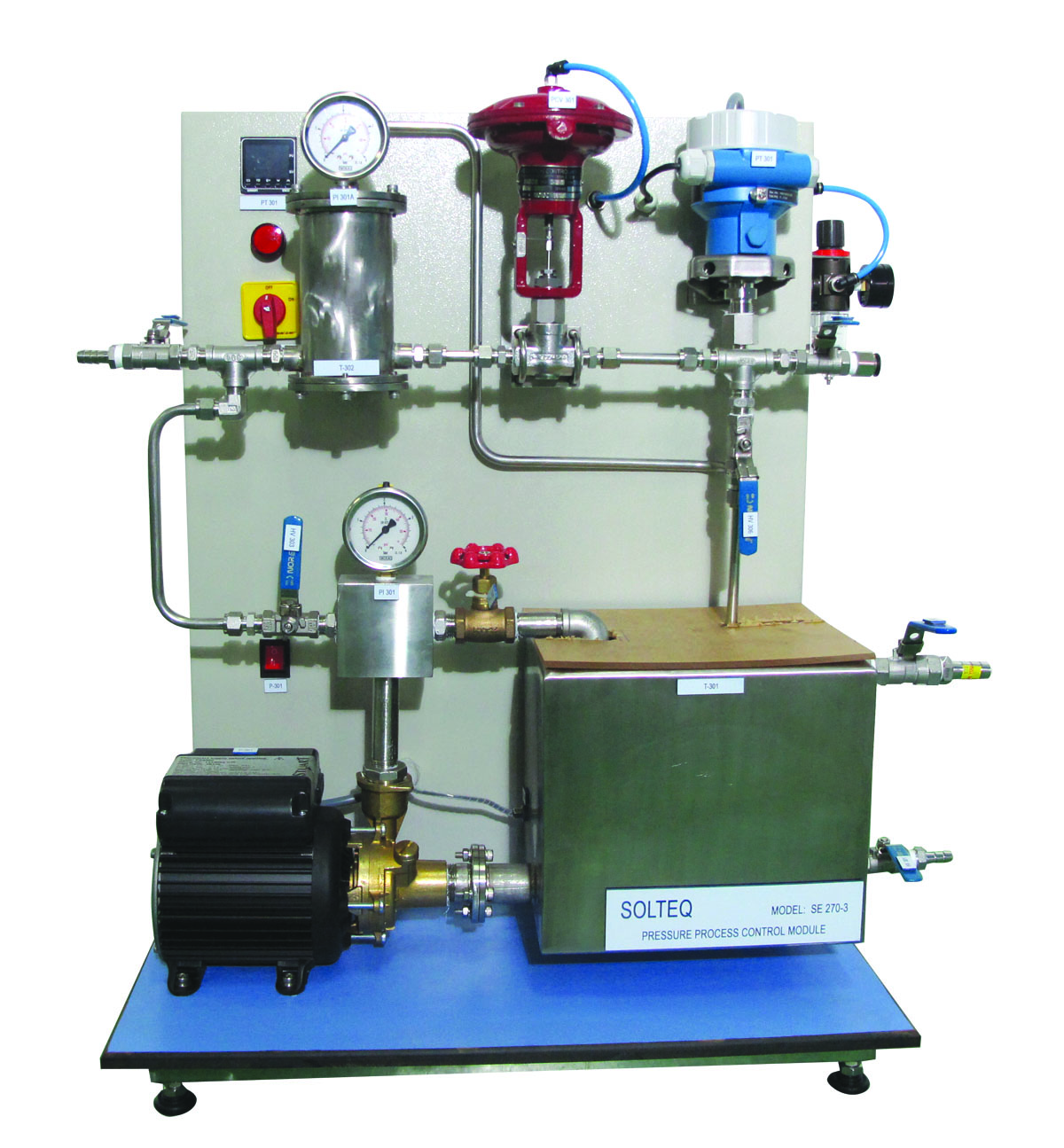
Equipment Name: Modular Pressure Process Control Trainer
Model No: SE270-3
Click below to see example:Description: This Modular Pressure Process Control Trainer is designed for the demonstration of pressure control.
This unit consists of:
Experimental capabilities:
(1266-16-GPS)(2).jpg)
Equipment Name: Modular Temperature Process Control Trainer
Model No: SE270-4
Click below to see example:Description: This Air Conditioner Trainer is designed for the demonstration of temperature control.
This unit consists of:
Experimental capabilities:
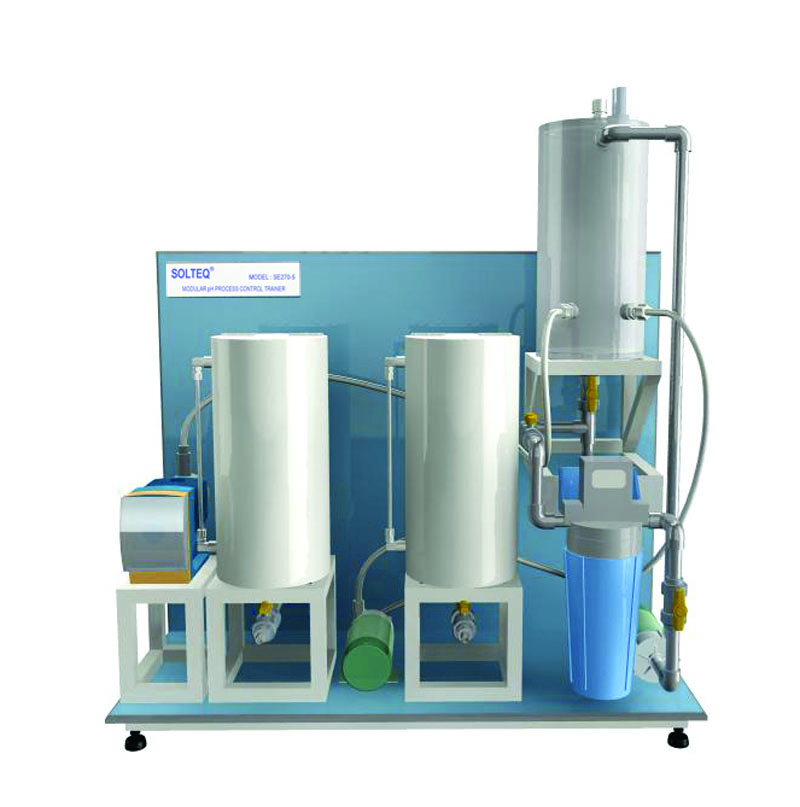
Equipment Name: Modular pH Process Control Trainer
Model No: SE270-5
Click below to see example:Description: This Modular pH Process Control Trainer consists of a chemical waste treatment process where an alkaline is used to neutralize an acidic waste. The principles of pH measurement and control can be studied.
This unit consists of:
Experimental capabilities:
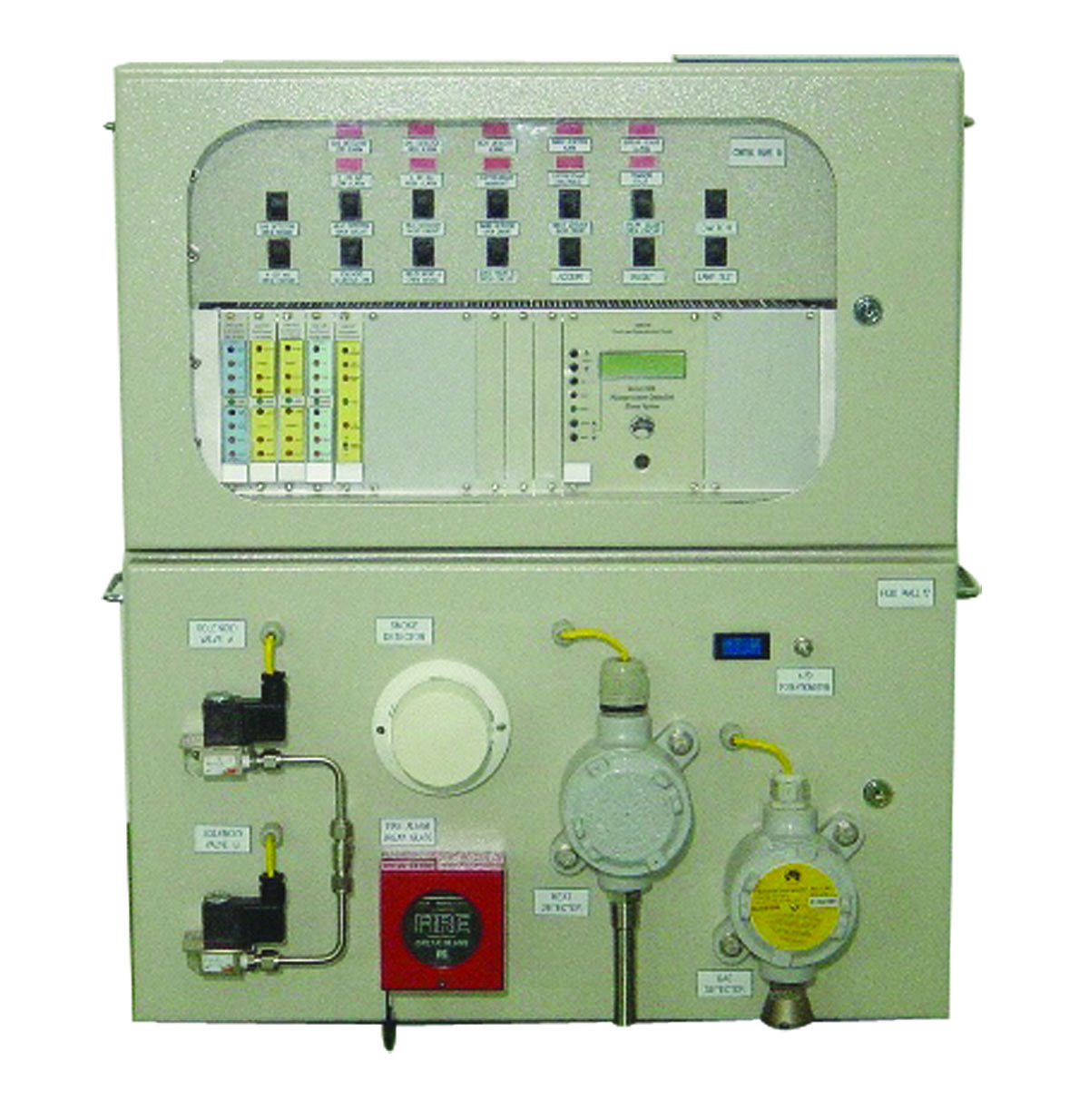
Equipment Name: Fire and Gas Detection System
Model No: SE109
Click below to see example:Description: This Fire and Gas Detection System is packaged for classroom training and demonstration in Field devices section and control section.
This unit consists of:
Experimental capabilities:
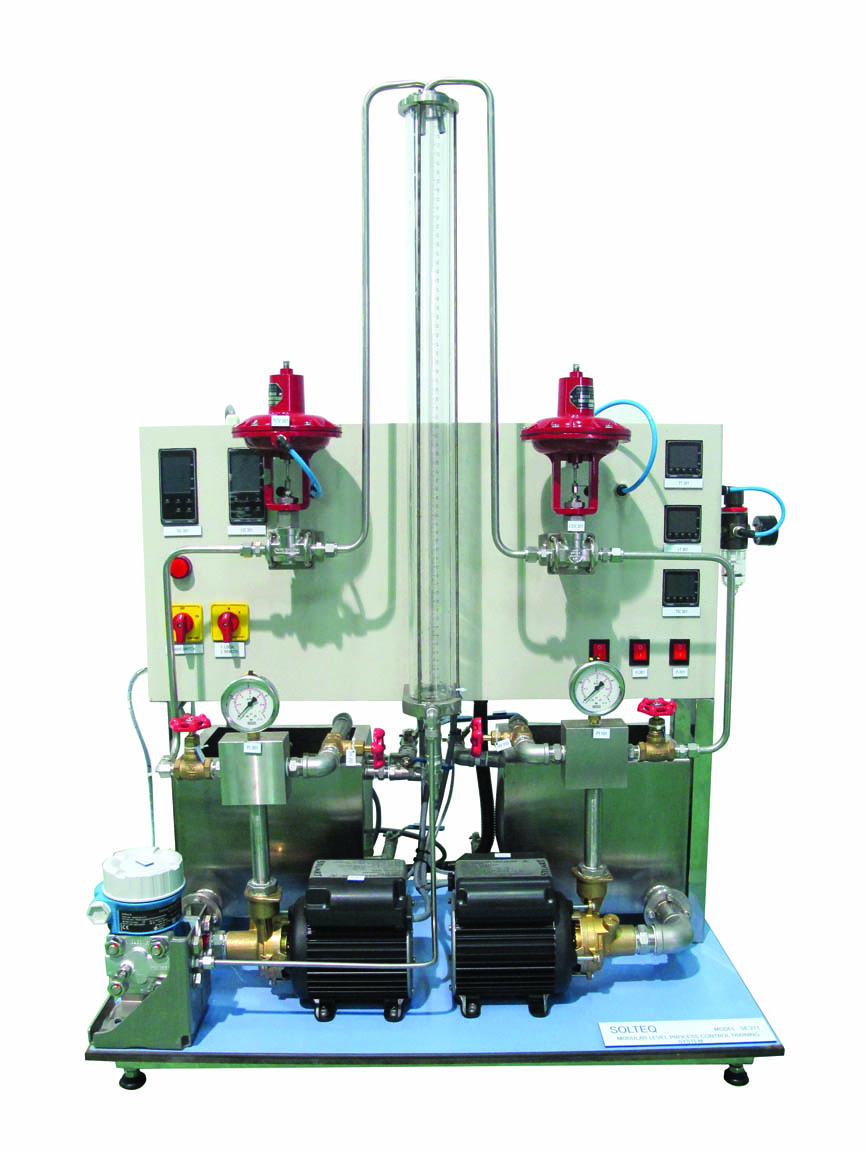
Equipment Name: Modular Level Process Control Training System
Model No: SE271
Click below to see example:Description: This Modular Process Control Trainer unit is designed to use water process for safe, practical experiments on water level control, and temperature control. The control process can either be carried individually or combined for MIMO control study.
This unit consists of:
Experimental capabilities:
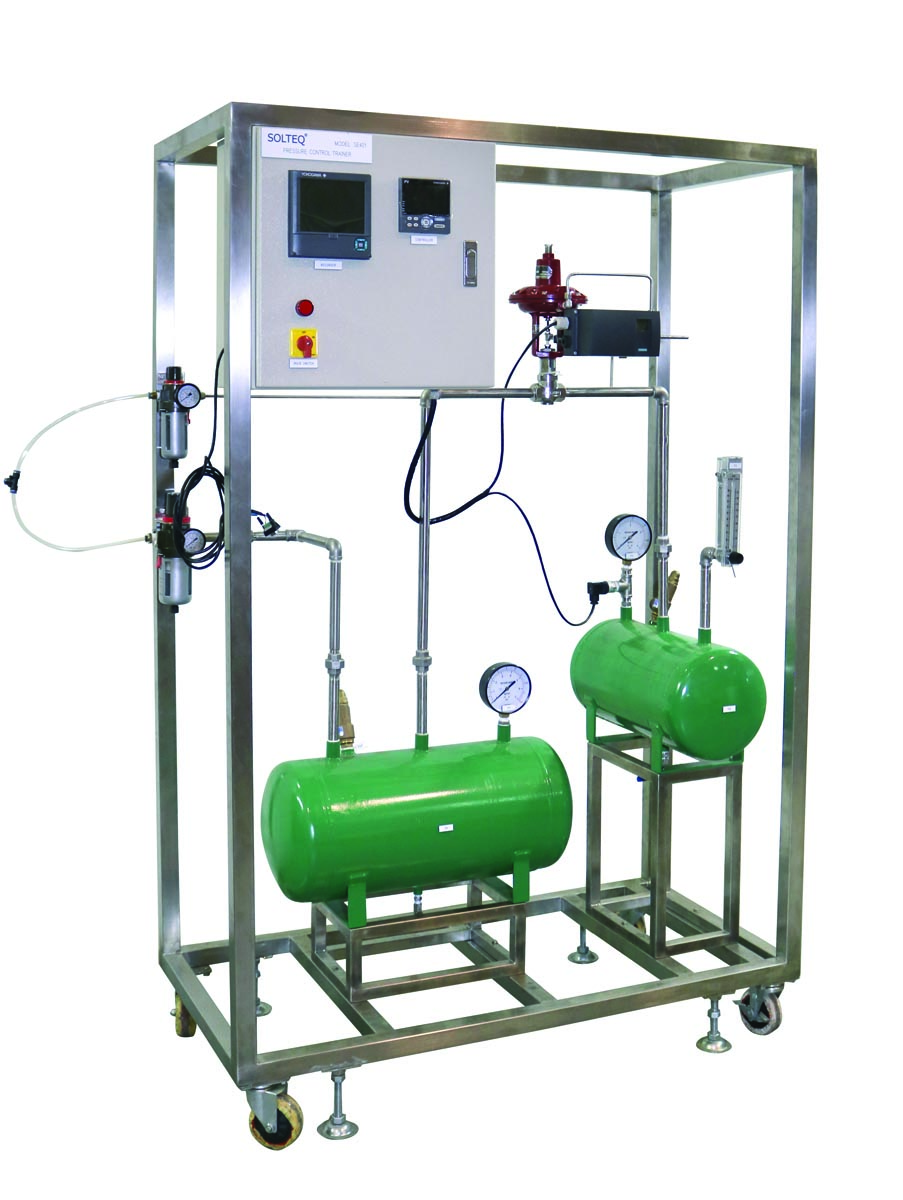
Equipment Name: Pressure Control Trainer
Model No: SE401
Click below to see example:Description: This Pressure Control Trainer is designed to provide students with hands on experience on a pressure control loop using a microprocessor based controller.
This unit consists of:
Experimental capabilities:
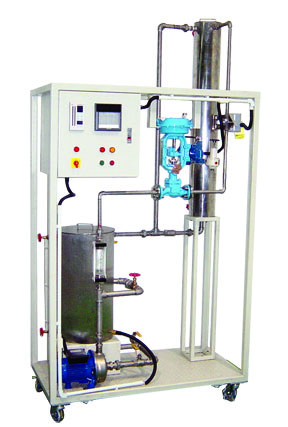
Equipment Name: Flow Control Trainer
Model No: SE402
Click below to see example:Description: This Flow Control Trainer is designed to provide students with hands on experience on a flow control loop using a microprocessor based controller.
This unit consists of:
Experimental capabilities:
(1338-17-SE)modify.jpg)
Equipment Name: Level Control Trainer
Model No: SE403
Click below to see example:Description: This Level Control Trainer is designed to provide students with a better understanding on tank level measurement and control using a microprocessor based controller.
This unit consists of:
Experimental capabilities:
(1184-14-SE) (36)modify.jpg)
Equipment Name: Temperature Control Trainer
Model No: SE404
Click below to see example:Description: This Temperature Control Trainer is designed for demonstration on how a temperature loop for a heat exchanger can be controlled using a microprocessor based controller.
This unit consists of:
Experimental capabilities:
(1338-17-SE)(30).jpg)
Equipment Name: pH Control Trainer
Model No: SE405
Click below to see example:Description: This pH Control Trainer is designed to study principles of pH measurement and provide students with hands-on experience on how a pH loop can be controlled using a microprocessor based controller.
This unit consists of:
Experimental capabilities:
(1145-14-GPS)(MODIFY).jpg)
Equipment Name: Analytical Control Trainer
Model No: SE105
Click below to see example:Description: This Analytical Control Trainer consists of an acid-alkali process anda self-contained chemical waste treatment process. It is designed to study the principles of measurement of typical industrial analytical parameters such as pH, ORP, conductivity and issolved oxygen. This plant also allows for the control of pH and conductivity.
This unit consists of:
Experimental capabilities:
(1266-16-GPS)(7) modify.jpg)
Equipment Name: Boiler Heating Batching Control Trainer
Model No: SE107
Click below to see example:Description: This Boiler Heating Batching Control Trainer consists of a liquid based process system design to study a simulated boiler drum producing hot water to heated the product water from a batching tank via a shell and tube heat exchanger.
This unit consists of:
Experimental capabilities:
(1266-16-GPS)(8)modify.jpg)
Equipment Name: Experimental Stand for Ratio Control
Model No: SE113
Click below to see example:Description: This Experimental Stand for Ratio Control is designed to introduce students to ratio control in relation to a single loop flow control.
This unit consists of:
Experimental capabilities:
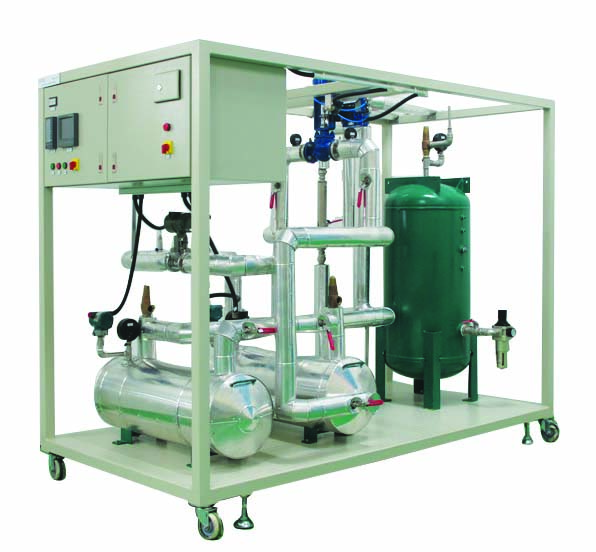
Equipment Name: Air Pressure Control Trainer
Model No: SE121
Click below to see example:Description: This Air Pressure Control Trainer is designed to provide student with hands-on experience on how a pressure loop can be controlled using a microprocessor-based controller.
This unit consists of:
Experimental capabilities:
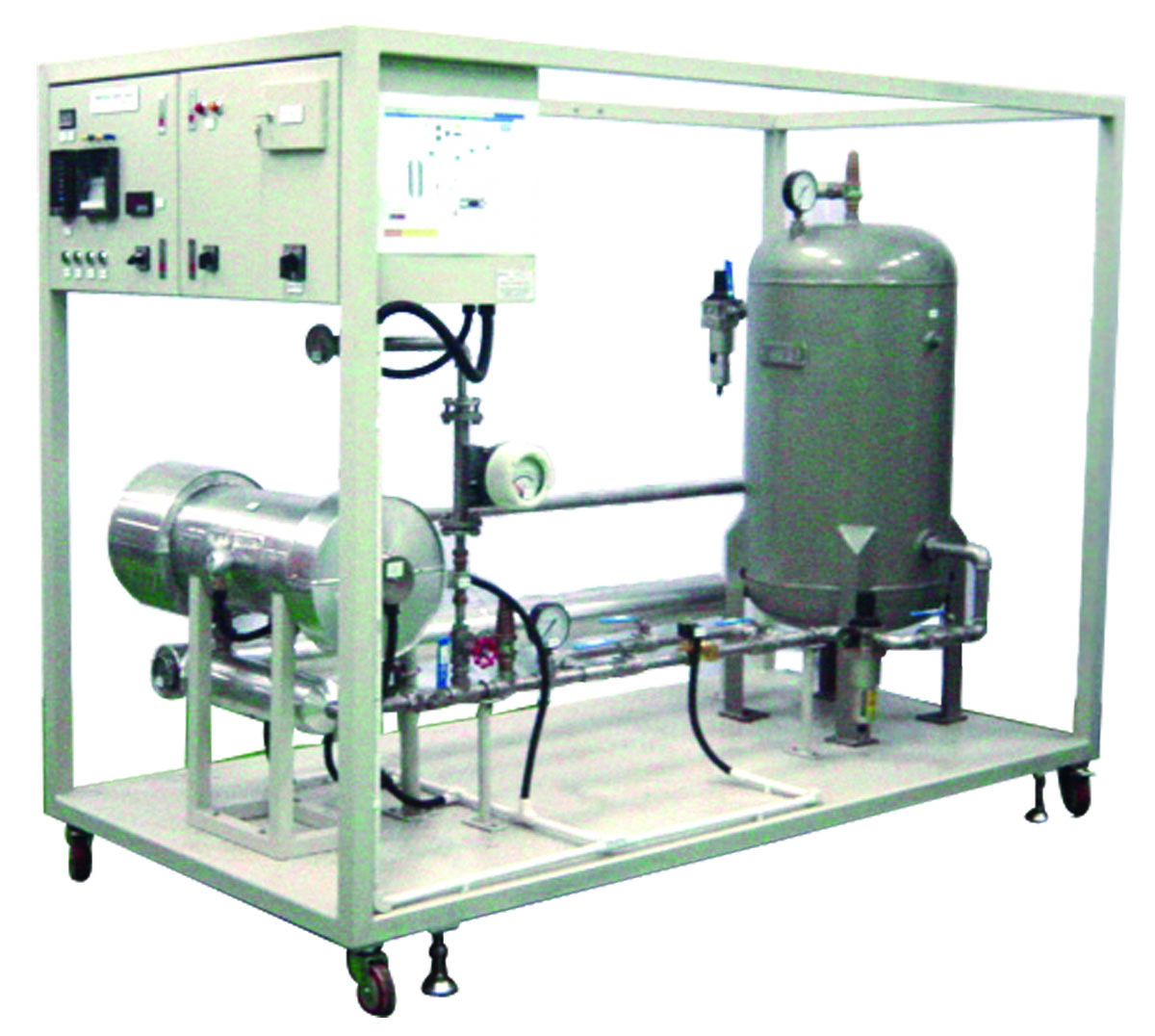
Equipment Name: Air Flow Control Trainer
Model No: SE122
Click below to see example:Description: This Air Flow Control Trainer is designed to provide students with hands-on experience on how an air flow loop can be controlled using a microprocessor based controller.
This unit consists of:
Experimental capabilities:
(1266-16-GPS)(13)modify.jpg)
Equipment Name: Air Temperature Control Trainer
Model No: SE124
Click below to see example:Description: This Air Temperature Control Trainer is designed to provide students with hands-on experience on how a temperature loop of an air heat exchanger can be controlled using a microprocessor based controller.
This unit consists of:
Experimental capabilities:
Air Pressure Control Trainer (Model: SE121), Air Flow Control Trainer (Model:SE122) and Air Temperature Control Trainer (Model:SE124) can be interconnected to form a bigger plant.
(1266-16-GPS)(13)modify.jpg)
Equipment Name: Heat Exchanger Control Trainer
Model No: SE134
Click below to see example:Description: This Heat Exchanger Control Trainer is designed to provide students with hands-on experience on how product temperature of a shell and tube heat exchanger can be controlled using a microprocessor based controller.
This unit consists of:
Experimental capabilities:
(1270-16-SE)modify.jpg)
Equipment Name: Process Trainer For Saline Solution Production
Model No: SE162
Click below to see example:Description: This Process Trainer For Saline Solution Production is developed primarily for teaching and research purpose. This process trainer is a small scale version of process plant that produces saline solution. It is used for produce saline solution in semi batch operation. The concentration of sodium chloride in the final product shall be made controllable to the user and shall be varied continuously ranging from 0.2%v/v to 1.0%v/v.
Experimental capabilities:
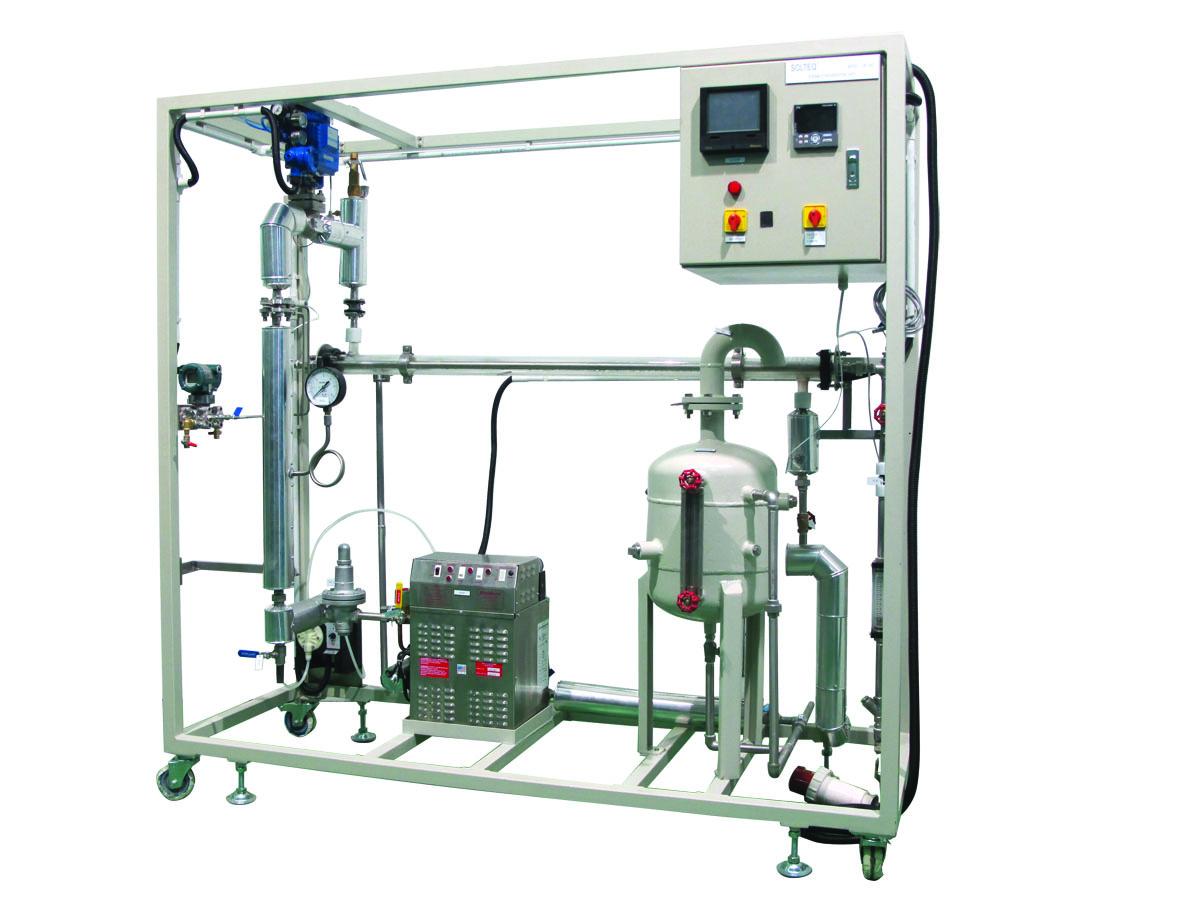
Equipment Name: Steam Condensation Unit
Model No: SE182
Click below to see example:Description: This Steam Condensation Unit is designed to allow students to have an overview on the effect of cooling water flowrate on the condensation of steam. The flow of cooling water will be regulated by using a control valve with PID input. Fuzzy Logic controller is optional for the equipment with additional requirement MATLAB and Fuzzy Logic Toolbox.
This unit consists of:
Experimental capabilities:
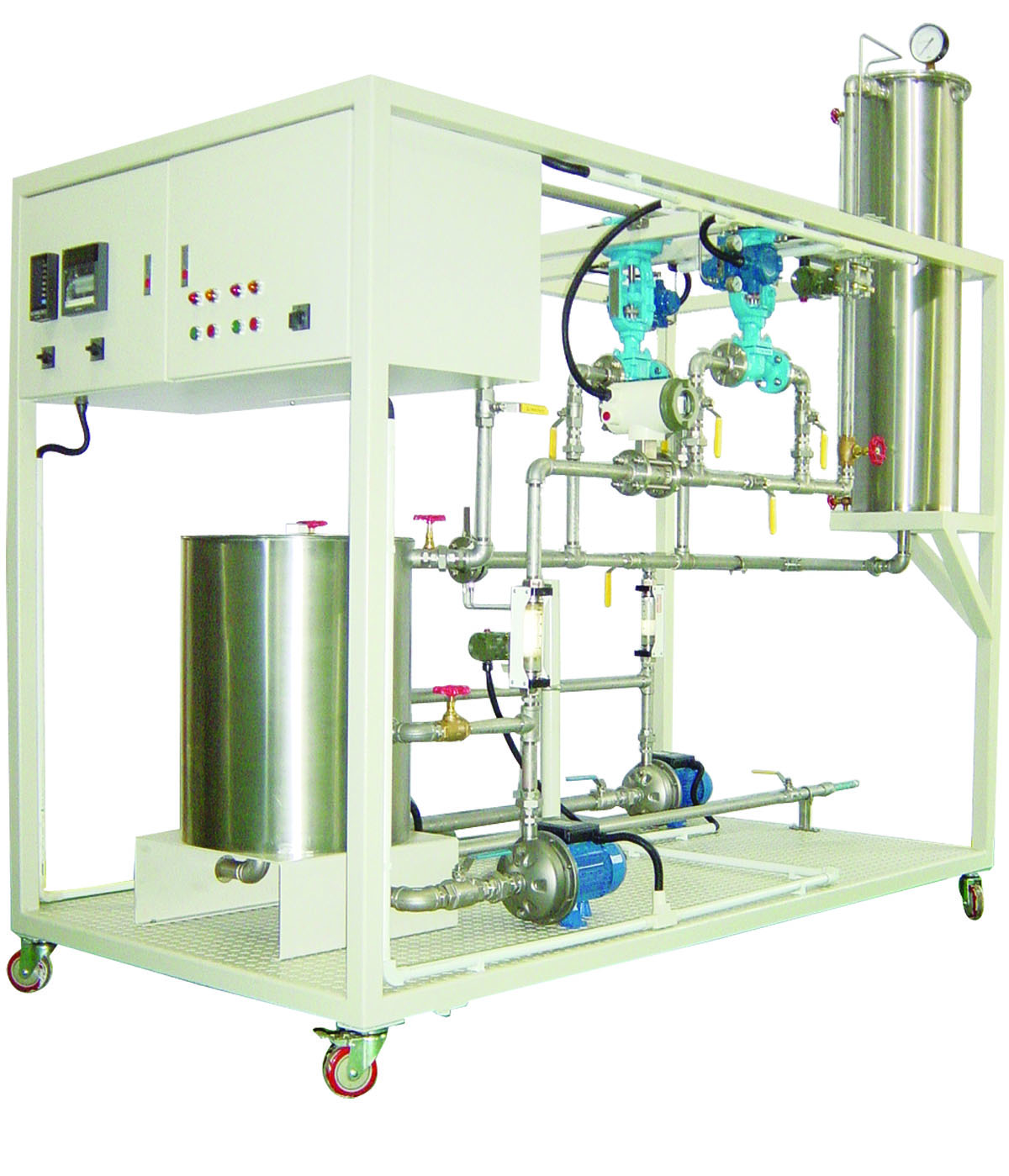
Equipment Name: Flow and Pressure Control Trainer
Model No: SE664
Click below to see example:Description: This Flow and Pressure Control Trainer is designed for demonstration of the functionality of microprocessor based controller. The equipment exhibits a realistic working environment of a typical flow process using various types of industrial grade instruments and control strategy.
This unit consists of:
Experimental capabilities:
(1319-16-SE)(23).jpg)
Equipment Name: Flow and Level Control Trainer
Model No: SE665
Description: This Level and Flow Control Trainer is designed to provide students with a better understanding on control studies of level and flow control. It can also be coupled with a flow metering loop to enable cascade control studies.
This unit consists of:
Experimental capabilities:

Equipment Name: Flow and Temperature Control Trainer
Model No: SE666
Click below to see example:Description: This Flow and Temperature Control Trainer is designed to provide students with a better understanding on how flow and temperature processes can be controlled.
This unit consists of:
Experimental capabilities:
.jpg)
Equipment Name: Continuous Distillation Column with Process Control
Model No: SE999
Click below to see example:Description: This Continuous Distillation Column is designed and constructed with the intention of exploring the behaviour and performance of various control strategies employed in a distillation process.
This unit consists of:
Experimental capabilities:
(1336-17-SE)(3).jpg)
Equipment Name: Cavitation Demonstration Unit
Model No: FM10
Description: This Cavitation Demonstration Unit has been designed to demonstrate to students the phenomenon of cavitation.
This unit consists of:
Optional:
Smart Calibrator for:
(1328-17-SE)(11).jpg)
Equipment Name: Osborne Reynolds Demonstration
Model No: FM11
Description: This Osborne Reynolds Demonstration is designed to reproduce the classic experiments by Professor Osborne Reynolds on visualization of fluid flow.
This unit consists of:
Experimental capabilities:
(1287-16-SE)(25).jpg)
Equipment Name: Orifice Discharge
Model No: FM12
Description: This Orifice Discharge is designed to demonstrate the measurement of orifice discharge.
This unit consists of:
Experimental Capabilities:
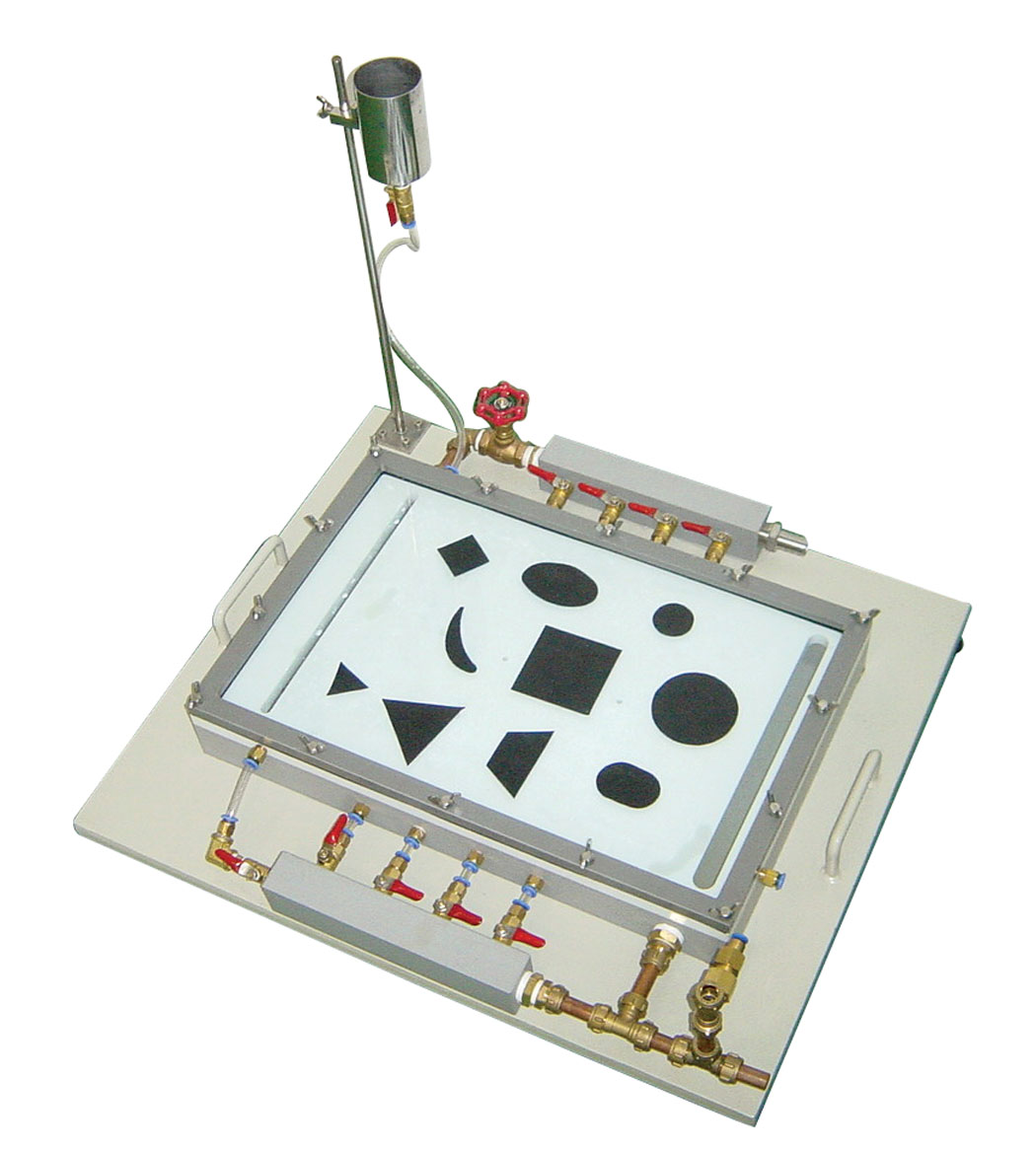
Equipment Name: Flow Visualisation Apparatus
Model No: FM22
Description: This Flow Visualisation Apparatus is designed to provide flow visualization of various drag bodies.
This unit consists of:
Experimental capabilities:
During the experiment, ink is injected through a fine nozzle to the flow chamber.
(1348-17-GPS)(4).jpg)
Equipment Name: Bernoulli’s Theorem Demonstration Unit
Model No: FM24
Description: The Bernoulli’s Theorem Demonstration unit is designed to demonstrate the principles of Bernoulli’s theorem.
This unit consists of:
Experimental capabilities:
(1153-14-SE)(2)modify.jpg)
Equipment Name: Orifice and Jet Flow Unit
Model No: FM25
Description: This Orifice and Jet Flow Unit is designed to demonstrate measurement of orifice discharge and jet flow.
This unit consists of:
Experimental capabilities:
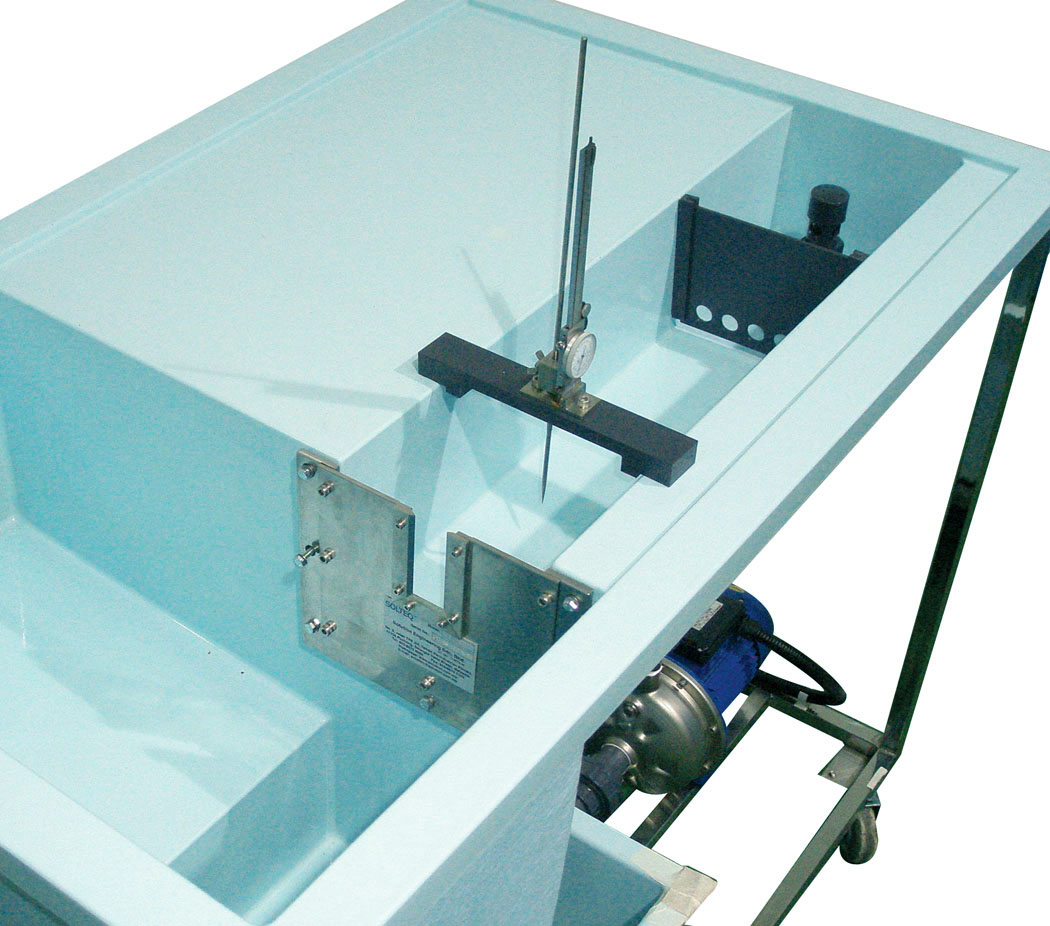
Equipment Name: Flow Over Weirs
Model No: FM26
Description: This Flow Over Weirs apparatus comes with two weir plates of different shapes, allowing familiarisation and comparison with weir theory. The unit is capable to demonstrate flow characteristic cover.
This unit consists of:
Experimental capabilities:
I. Rectangular notch
II. Vee (V) notch
(1220-15-SE)(11).JPG)
Equipment Name: Impact of Jet Apparatus
Model No: FM31
Description: This Impact of Jet Apparatus is designed for study on the force developed by a water jet impinging on different non-moving targets
This unit consists of:
Experimental capabilities:
(1316-16-SE)(1).jpg)
Equipment Name: Hydraulic Ram
Model No: FM39
Description: This Hydraulic Ram comprises a cast iron base incorporating pulse and non-return valves and a supply reservoir on a stand which is fed by the Hydraulic Bench. An air vessel above the valve chamber smooth cyclic fluctuations from the ram delivery.
This unit consists of:
Experimental capabilities:
(1287-16-SE)(5)modify.jpg)
Equipment Name: Venturi Meter
Model No: FM40
Description: This Venturi Meter is designed for experiments on the usage of a venturi. The venturi test piece has a circular cross section and is accurately machined from clear acrylic material with pressure measurement tappings at the converging/diverging sections and throat.
This unit consists of:
Pressure/Vacuum pump and tanks are also provided.
Experimental capabilities:
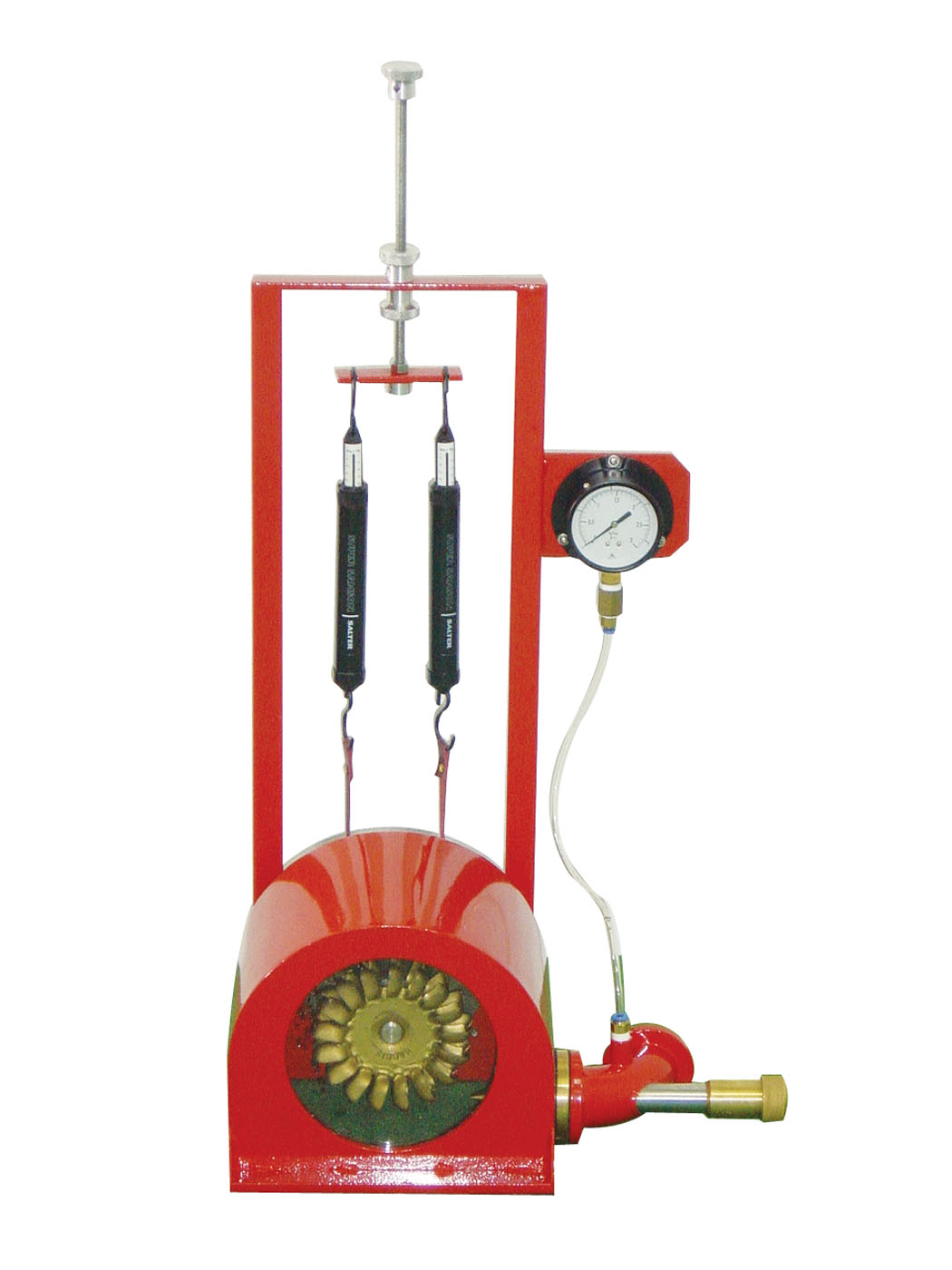
Equipment Name: Demonstration Pelton Turbine
Model No: FM41
Description: This Demonstration Pelton Turbine unit provides a simple low cost introduction to turbine performance.
This unit consists of:
Experimental capabilities:
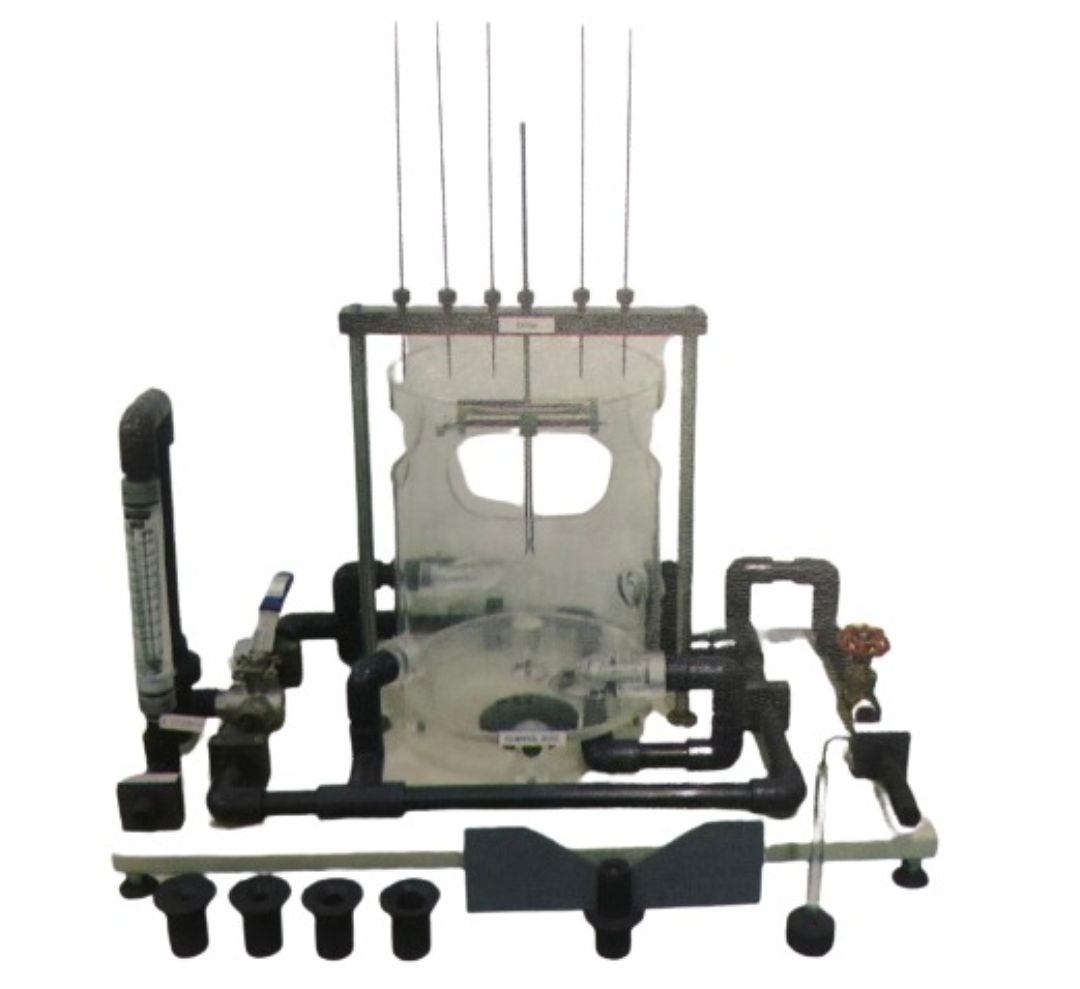
Equipment Name: Free & Force Vortex
Model No: FM42
Description: This Free & Force Vortex is designed to generate and measure free and forces vortices.
This unit consists of:
Experimental capabilities:
(1246-15-GPS)(modify).jpg)
Equipment Name: Pipe Friction Apparatus
Model No: FM111
Description: This Pipe Friction Apparatus is designed for students to measure pipe friction losses for laminar and turbulent flows.
This unit consists of:
Experimental capabilities:

Equipment Name: Pressure Gauge Calibration Bench
Model No: FM01
Description: This Pressure Gauge Calibration Bench is a complete laboratory bench for pressure gauge calibration.
Three different types of pressure gauges are provided:
This unit consists of:
Experimental capabilities:

Equipment Name: Pressure Measurement Bench
Model No: FM01B
Description: This Pressure Measurement Bench is a complete laboratory bench for test and calibration of different types of pressure measuring elements.
This unit consists of:
Pressure/Vacuum pump and tanks are also provided
Experimental capabilities:
(1250-15-GPS)(43).jpg)
Equipment Name: Properties of Fluids and Hydrostatics Bench
Model No: FM02
Description: This Properties of Fluids and Hydrostatics Bench is a self contained and mobile bench equipped with all necessary apparatus for a comprehensive range of experiments on the properties and basic principles of fluids.
This unit consists of:
Basic Principle of Fluids
Experimental capabilities:
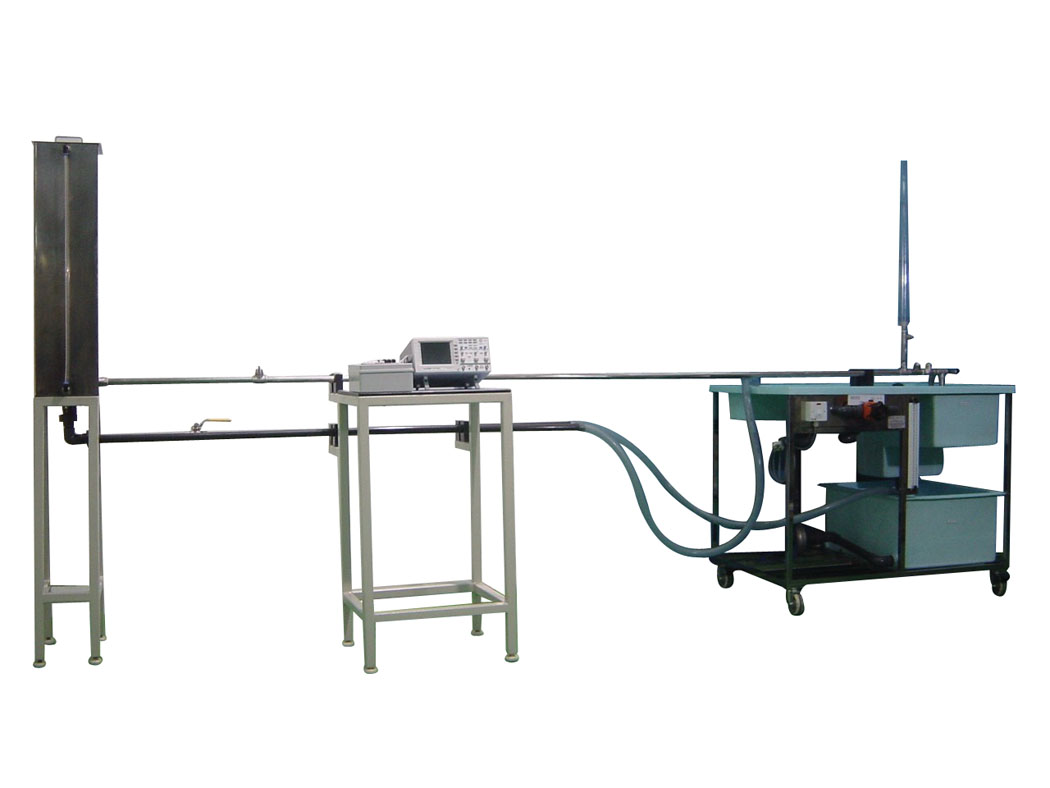
Equipment Name: Pipe Surge and Water Hammer Apparatus
Model No: FM04
Description: This Pipe Surge and Water Hammer Apparatus is designed for experiments on the transient effects of pipe surge and water hammer as a result of gradual or instantaneous changes in fluid velocity.
This unit consists of:
Experimental capabilities:
(1237-15-SE)(modify2).jpg)
Equipment Name: Serial/Parallel Pump Test Rig
Model No: FM07A
Click below to see example:Description: This Serial/Parallel Pump Test Rig is designed to demonstrate to students the operating characteristic of centrifugal pump in single configuration, series configuration & parallel configuration. Basic instruments are included to monitor the pump speed, pump head and flow rate.
This unit consists of:
Experimental capabilities:
(1293-16-SE)(21).jpg)
Equipment Name: Laminar Flow Table
Model No: FM23
Description: This Laminar Flow Table is designed to simulate ideal fluid flow and give clear visualization of the flow patterns created using water as the working fluid. This enables a comprehensive investigation into the principles of potential flow and allows modeling appropriate physical systems.
This unit consists of:
Experimental capabilities:
(1187-14-SE) (12).JPG)
Equipment Name: Hydrostatic Pressure
Model No: FM35
Description: This Hydrostatic Pressure apparatus is designed to introduce the concept of centre of pressure of an object immersed in fluid.
This unit consists of:
Experimental capabilities:
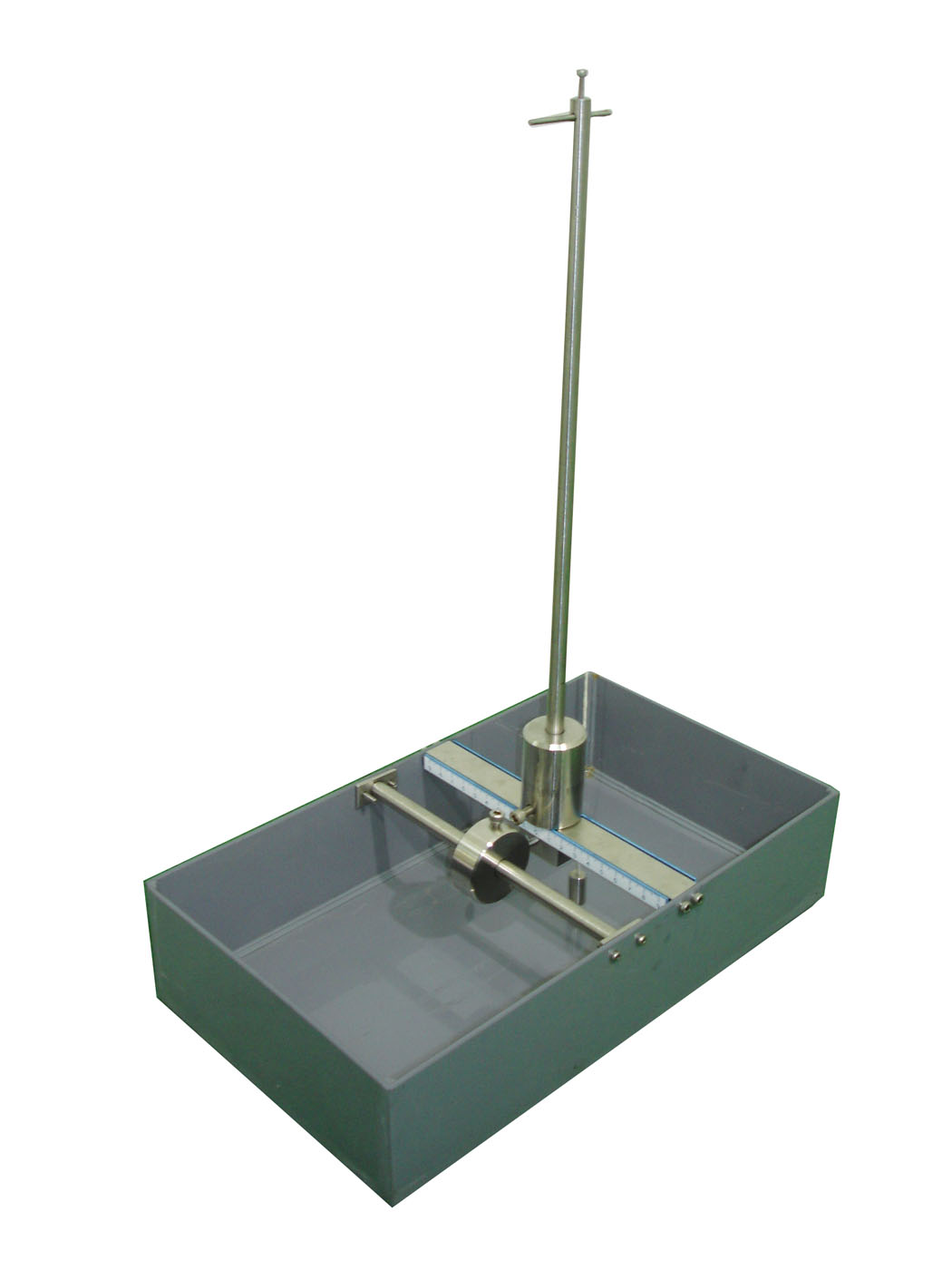
Equipment Name: Metacentric Height
Model No: FM43
Description: This Metacentric Height allows a thorough investigation of factors affecting the stability of a floating body.
Experimental capabilities:
.jpg)
Equipment Name: Dead Weight Pressure Calibrator
Model No: FM44
Description: This Dead Weight Pressure Calibrator is designed to demonstrate calibration of a Bourdon type pressure gauge.
This unit consists of:
Experimental capabilities:
(1264-15-GPS)modify.jpg)
Equipment Name: Pitot Static Tube
Model No: FM50
Description: This Pitot Static Tube is designed for students to determine the change in flow speed within a tube cross-sectional.
This unit consists of:
Experimental capabilities:
(1152-14-SE)(3).jpg)
Equipment Name: Particle Drag Coefficient Apparatus
Model No: FM102
Description: This Particle Drag Coefficient Apparatus is designed to introduce the fundamental characteristics of particle / fluid systems, in particular the relationship between drag coefficients of falling particles and Reynolds number.
This unit consists of:
Experimental capabilities:
(1215-15-SE)(1).jpg)
Equipment Name: Liquid Mixing Equipment
Model No: FM103
Click below to see example:Description: This Liquid Mixing Equipment is a benchtop unit designed for visualization of solid/liquid and liquid-liquid mixing.
This unit consists of:
Experimental capabilities:
(1287-16-SE)(8).jpg)
Equipment Name: Gravimetric Hydraulic Bench
Model No: FM110-G
Description: This Gravimetric Hydraulic Bench is designed for students to control water flow in a wide variety of laboratory experiments via gravimetric weighing system.
This unit consists of:
(1220-15-SE)(13).JPG)
Equipment Name: Energy Losses in Bend and Fittings
Model No: FM34
Description: This Energy Losses in Bend and Fittings is designed for investigation of energy losses in pipe bends and fittings, including valves. This will enable students to appreciate energy losses associated with different devices.
This unit consists of:
Experimental capabilities:
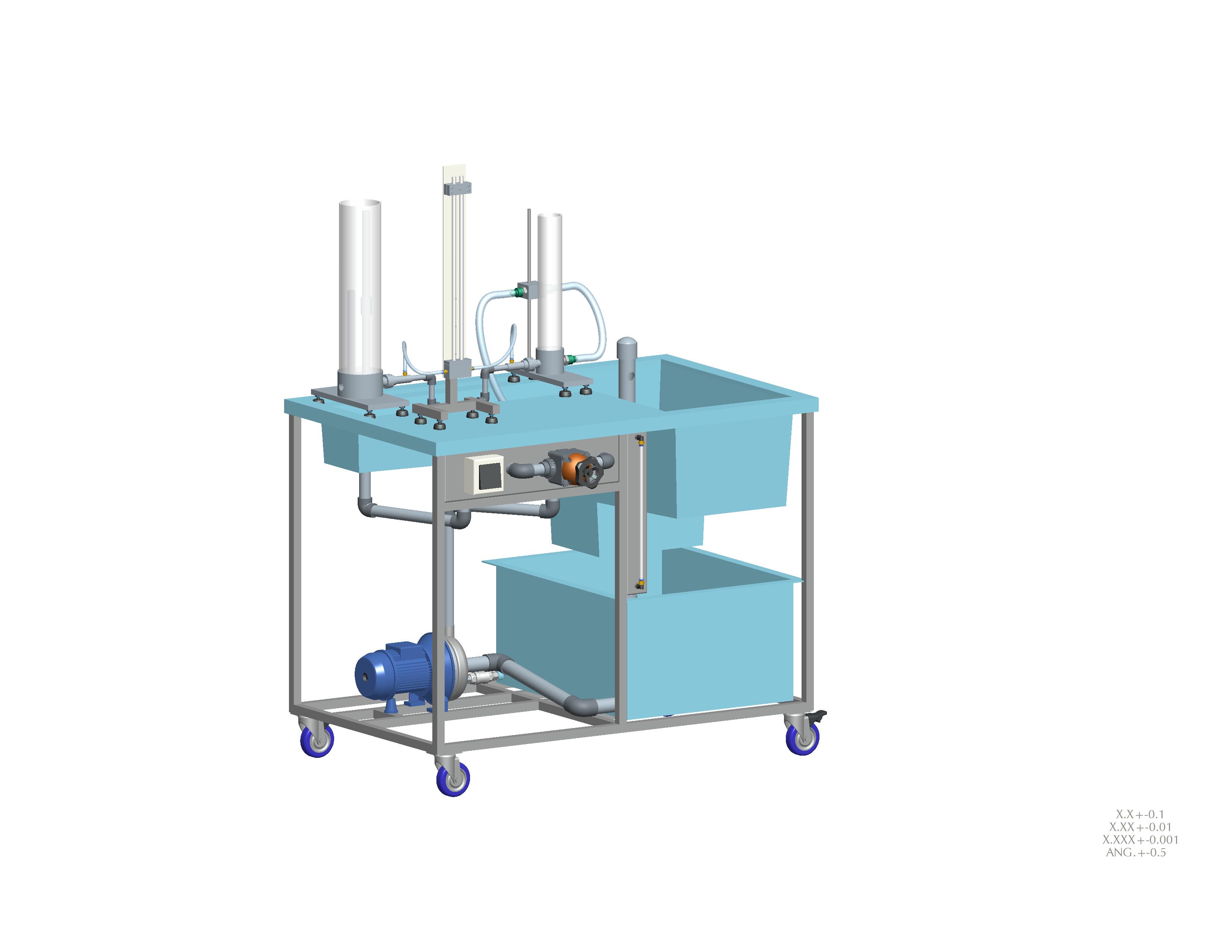
Equipment Name: Losses In Pipes and Fittings Apparatus
Model No: FM36
Description: This Losses In Pipes and Fittings Apparatus is designed for students to energy losses in pipes and fittings including valves.
Experimental capabilities:
(1181-14-SE)(1).jpg)
Equipment Name: Pipe Network Apparatus
Model No: FM06
Description: This Pipe Network Apparatus is designed for students to measure flows and pressure drops in a wide range of pipe network configurations using water as the fluid.
This unit consists of:
Experimental capabilities:
(1294-16-SE)(6).jpg)
Equipment Name: Fluid Friction Measurement Apparatus
Model No: FM100
Click below to see example:Description: This Fluid Friction Measurement Apparatus is designed for students to study the fluid friction head losses of an incompressible fluid flow.
This unit consists of:
Experimental capabilities:
(1220-15-SE)(2).jpg)
Equipment Name: Flowmeter Measurement Apparatus
Model No: FM101
Description: This Flowmeter Measurement Apparatus is designed to introduce students to the operating characteristic of various types of flowmeters.
This unit consists of:
Experimental capabilities:

Equipment Name: Flow Channel and Flume Apparatus
Model No: FM77
Description: This Flow Channel and Flume Apparatus is a bench top unit designed for easy installation. This equipment introduces students to the basic concept of flow characteristics in an open channel.
This unit consists of:
Experimental capabilities:
(1317-16-SE)(2).JPG)
Equipment Name: Rainfall Hydrographs
Model No: FM03
Click below to see example:Description: This Rainfall Hydrographs is a bench scale unit designed to allow students to study different situations of rainfall runoff. Student shall be able to obtain catchment rainfall and runoff values as functions of time.
This unit consists of:
Experimental capabilities:
(1177-14-SE)(4).jpg)
Equipment Name: Flow Channel & Flume Apparatus
Model No: FM27
Description: This Flow Channel & Flume Apparatus is designed for students to study the principles of open channel flow. This unit comes with an open channel made of transparent working section mounted on a strong framework.
This unit consists of:
Experimental capabilities:
(1164-14-GPS)(14).jpg)
Equipment Name: Drainage & Seepage Tank
Model No: FM33
Description: This Drainage & Seepage Tank is designed for students to study the flow through permeable media.
This unit consists of:
Experimental capabilities:
(1331-17-SE)(10).JPG)
Equipment Name: Hydrology Study System Apparatus
Model No: FM512
Click below to see example:Description: This Hydrology Study System Apparatus is designed to demonstrate the run-off hydrographs from model catchments, construction of draw-down curves for one or two well systems in a sand bed , hydraulic gradients in ground water flow, investigation of model stream flow in alluvial material, formation of river features and development over time, and sediment transport, bed load motion, scour and erosion.
This unit consists of:
Experimental capabilities:
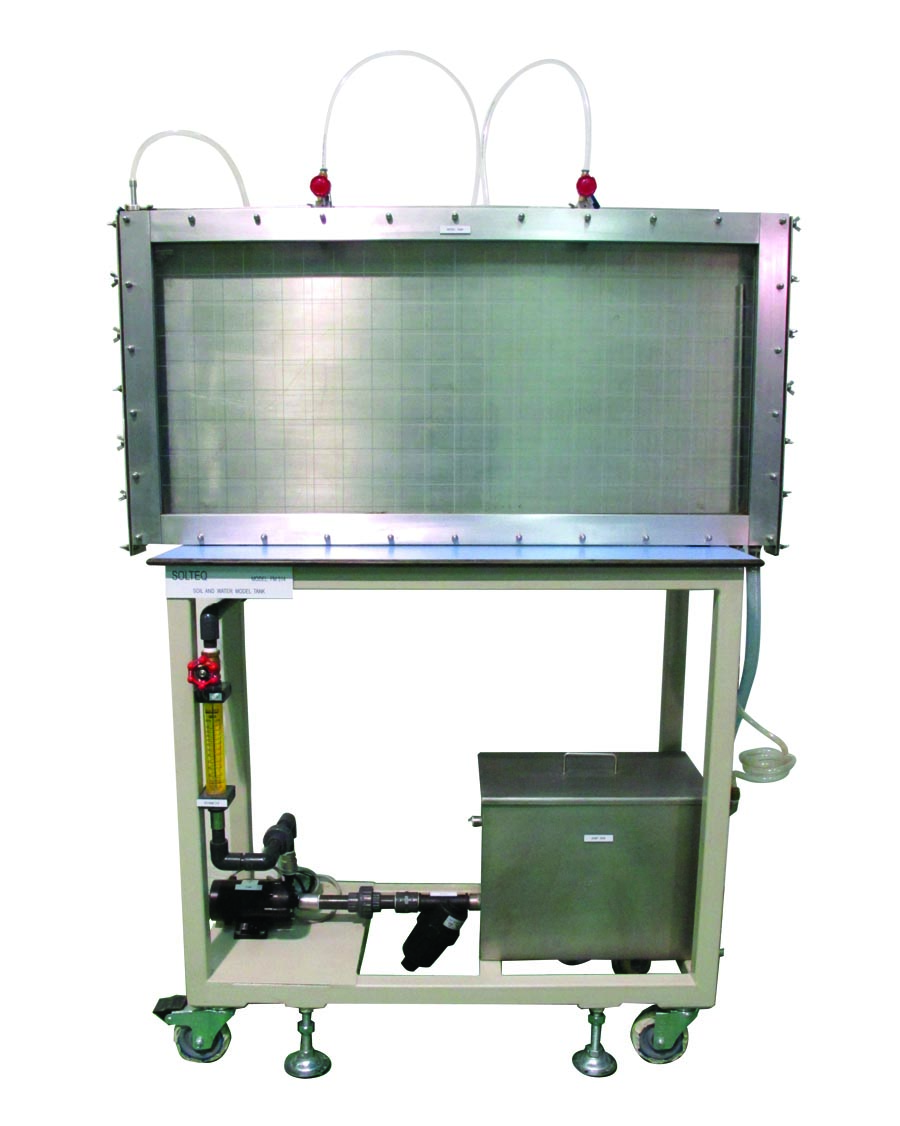
Equipment Name: Soil And Water Model Tank
Model No: FM514
Click below to see example:Description: This Soil And Water Model Tank is developed to investigate several aspects of surface irritation and drainage system.
This unit consists of:
a) Dimension (LxWxD) = 1000mm x 25mm x 450mm
b) Front side made from clear see-through material
c) Removable end plates
a) Flood type
b) Drip type
Experimental capabilities:
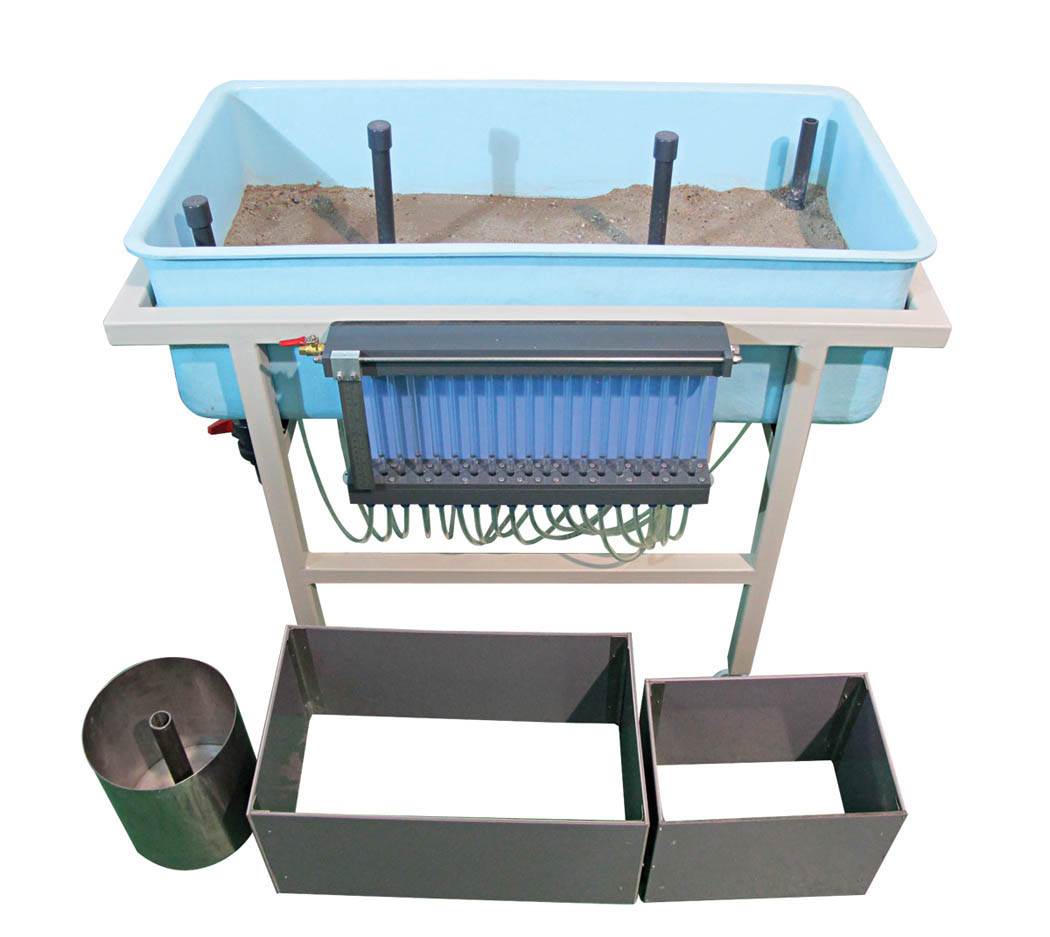
Equipment Name: Ground Water Flow Unit
Model No: FM531
Click below to see example:Description: This Ground Water Flow Unit is designed for demonstrations of the operating characteristics of three different types of pumps. Sensors are included to monitor pump speed, power, pump head and flow rate, enabling students to produce pump characteristics curves.
This unit consists of:
Experimental capabilities:
(1184-14-SE)(4)modify.jpg)
Equipment Name: Multi-Pump Test Rig
Model No: SE701A-3
Click below to see example:Description: This Multi-Pump Test Rig is designed for demonstrations of the operating characteristics of three different types of pumps. Sensors are included to monitor pump speed, power, pump head and flow rate, enabling students to produce pump characteristics curves.
This unit consists of:
Experimental capabilities:
(1243-15-SE)(2).jpg)
Equipment Name: Multi-Pump Test Rig
Model No: SE701E-6
Click below to see example:Description: This Multi Turbine Test Set is fitted with six pumps and sensors necessary to allow pump characteristics study for different pumps.
This unit consists of:
Experiments on:
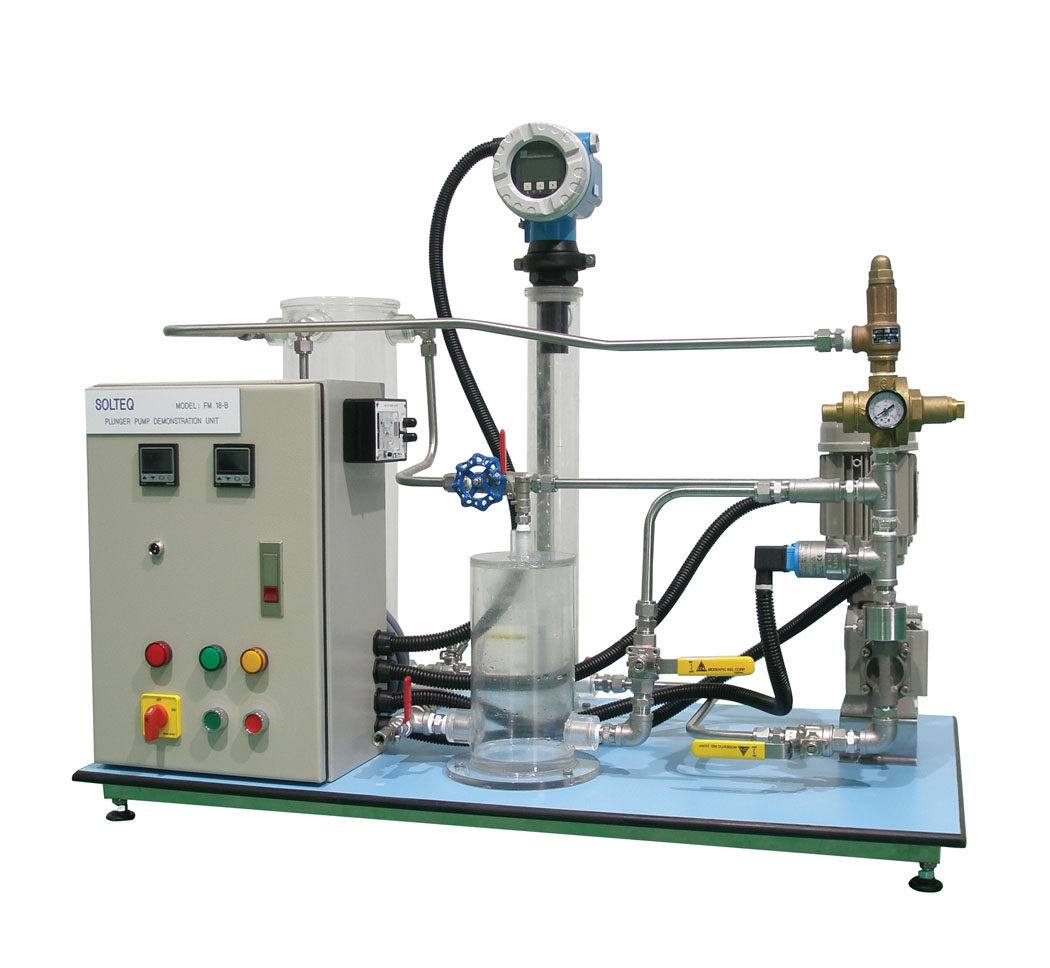
Equipment Name: Plunger Pump Demonstration Unit
Model No: FM18-B
Click below to see example:Description: This Plunger Pump Demonstration Unit is designed to demonstrate the working principle of a plunger or ram pump.
This unit consists of:
Experimental capabilities:
(1243-15-SE)(2).jpg)
Equipment Name: Multi Turbine Test Set (3 Turbines)
Model No: SE701E-6
Click below to see example:Description: This Multi Turbine Test Set (3 Turbines) unit is designed to demonstrate the operation of three types of turbines and their performance characteristics such as mechanical power, hydraulic power, hydraulic efficiency and specific speed. The turbines will be driven by a 3kW pump, together with dynamometer and data acquisition system (Optional).
This unit consists of:
Experimental capabilities
Operation and performance characteristics of:
Experiments on:
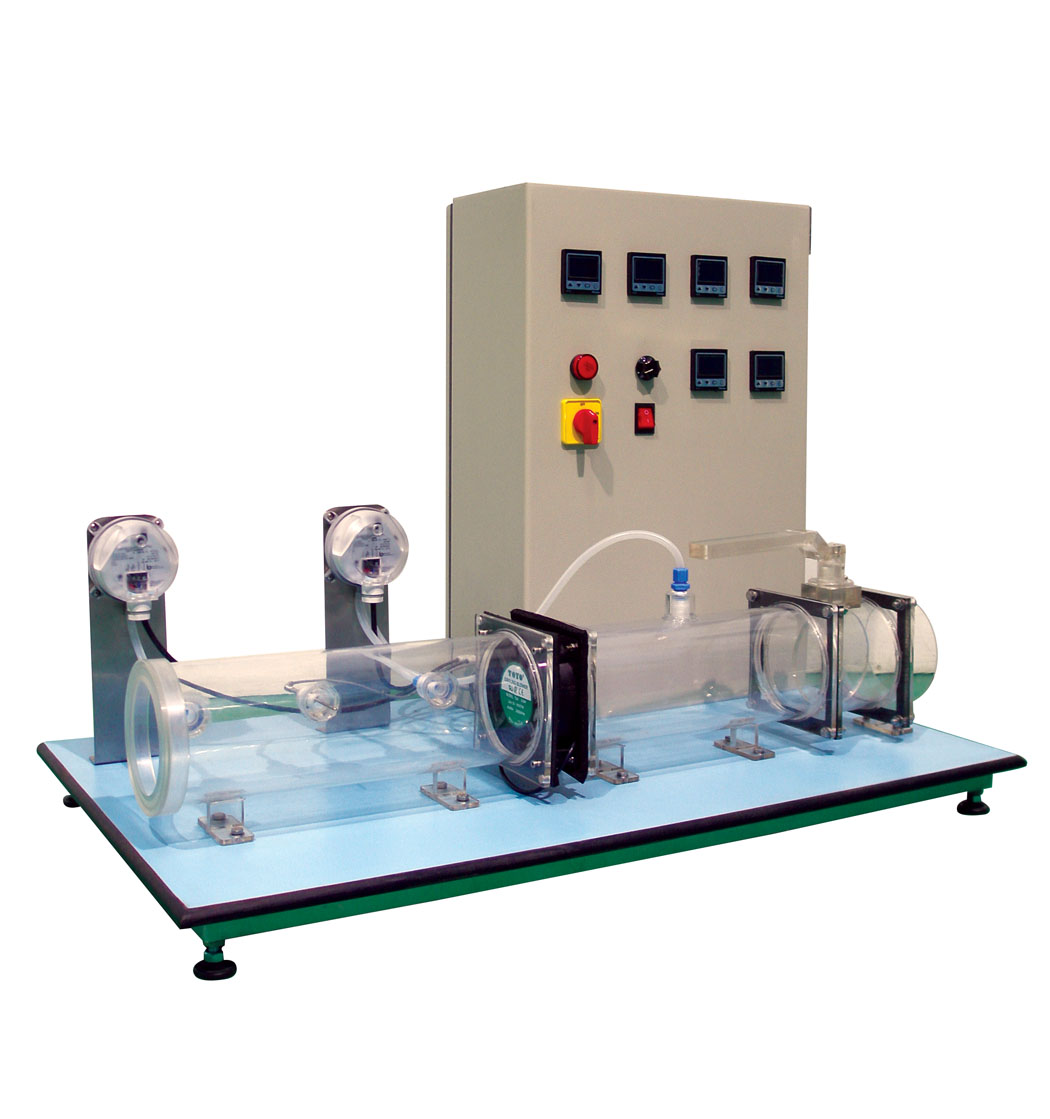
Equipment Name: Axial Fan Demonstration Unit
Model No: FM51
Click below to see example:Description: This Axial Fan Demonstration Unit consists of a self contained bench top unit with a small scale axial fan and all the necessary instrumentations.
This unit consists of:
Experimental capabilities:
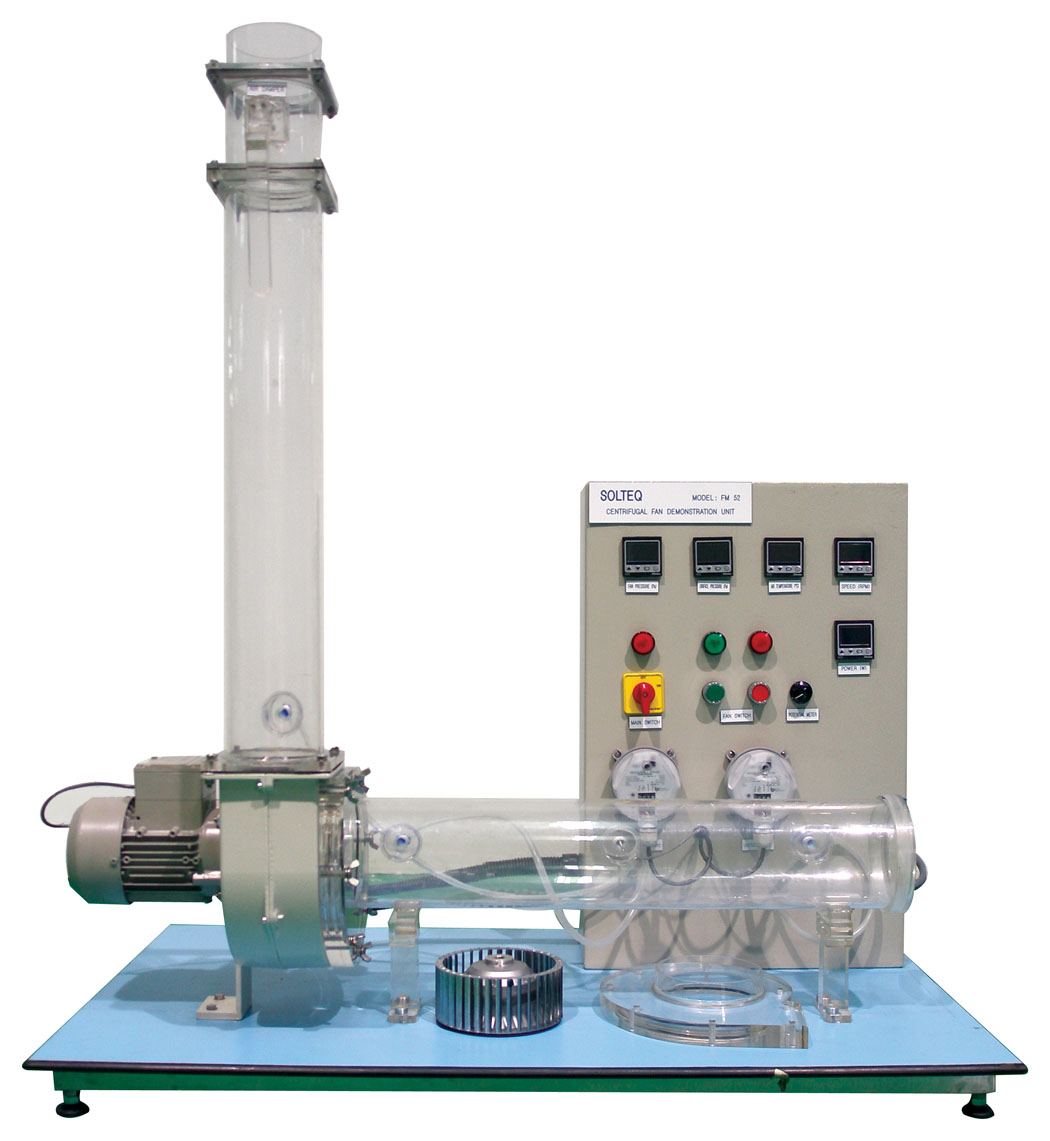
Equipment Name: Centrifugal Fan Demonstration Unit
Model No: FM52
Click below to see example:Description: This Centrifugal Fan Demonstration Unit consists of a self contained bench top unit with a small scale centrifugal fan and all the necessary instrumentations, allowing students to study the effect of different types of fans.
This unit consists of:
Experimental capabilities:
(1336-17-SE)(1).jpg)
Equipment Name: Centrifugal Pump Demonstration Unit
Model No: FM54
Click below to see example:Description: This Centrifugal Pump Demonstration Unit is designed for students to perform the characteristic studies of a centrifugal pump.
This unit consists of:
Experimental capabilities:
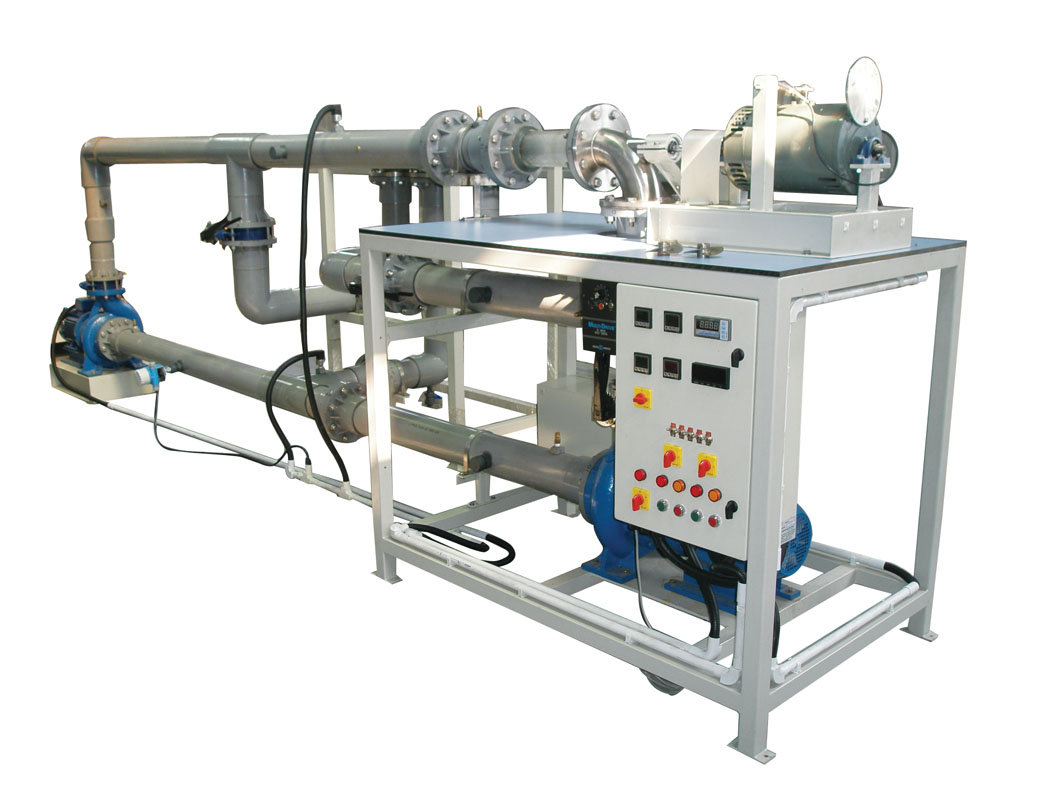
Equipment Name: Axial Flow / Turbine Test Rig
Model No: FM60
Click below to see example:Description: This Axial Flow / Turbine Test Rig is designed to study the performance of a pump/turbine in four different modes of operation.
This unit consists of:
Experimental capabilities:
.jpg)
Equipment Name: Air Flow Bench
Model No: FM21
Click below to see example:Description: This Air Flow Bench Unit is designed to demonstrate the principles of compressible fluid flow, the basic unit comes with a motor driven centrifugal fan for studying air flow characteristics.
This unit consists of:
The unit can be used with the following accessories for more comprehensive experiments on air flow:
Experimental capabilities:
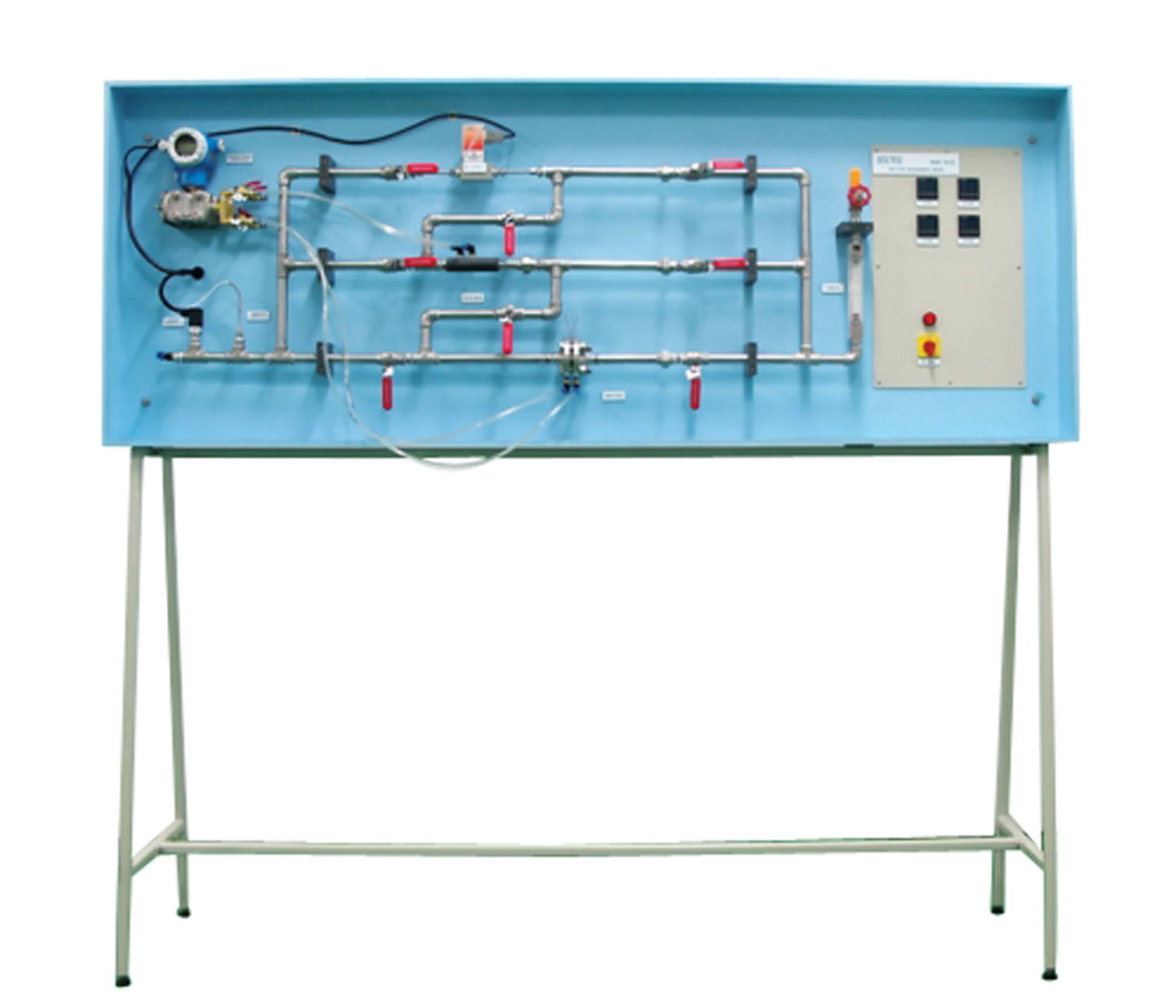
Equipment Name: Gas Flow Measurement Bench
Model No: FM120
Click below to see example:Description: This Gas Flow Measurement Bench is designed for students to study the fluid flow of compressible gas.
This unit consists of:
Experimental capabilities:
(1189-14-SE)(1).jpg)
Equipment Name: Ventilation Trainer
Model No: FM801
Click below to see example:Description: This Ventilation Trainer is designed to demonstrate the basic operation of air ventilation.
This unit consists of:
Experimental capabilities:
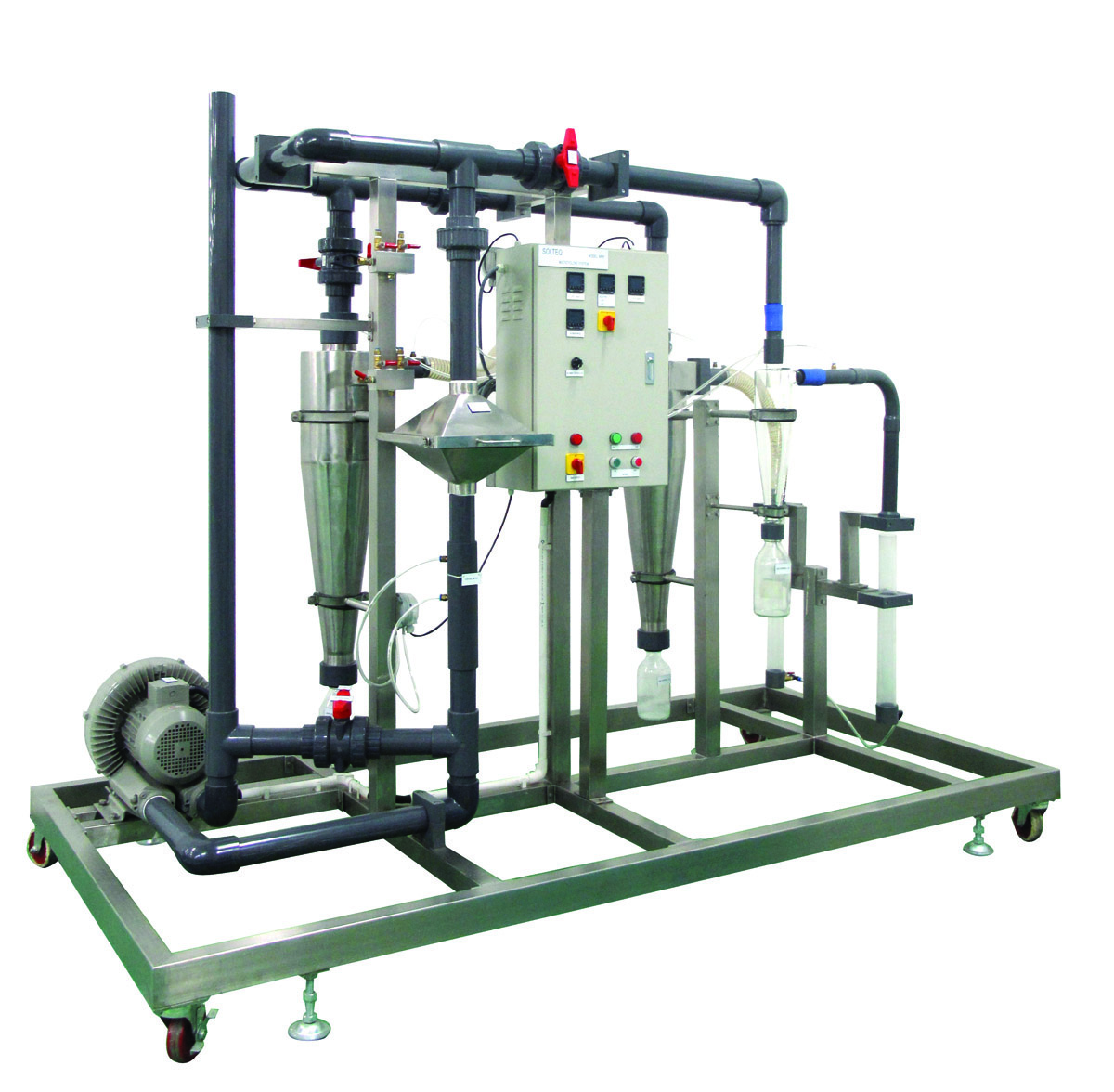
Equipment Name: Multi Cyclone System
Model No: AP01
Click below to see example:Description: This Multi Cyclone System is designed to demonstrate principles of gas cleaning device in air pollution control. The cyclone separator utilises centrifugal force for dust separation.
This unit consists of:
Experimental capabilities:
(1320-16-SE)(5)ok.jpg)
Equipment Name: Venturi Scrubber System
Model No: AP02
Click below to see example:Description: This Venturi Scrubber System is designed to demonstrate principles of gas cleaning device in air pollution control. Water droplets are created at the venturi throats to trap dust particles from gas stream.
This unit consists of:
Experimental capabilities:
(1320-16-SE)(22).jpg)
Equipment Name: Spray Chamber System
Model No: AP03
Click below to see example:Description: This Spray Chamber System is designed to demonstrate principles of gas cleaning device in air pollution control. Dust particles in the gas stream are trapped by water droplets generated in the spray chamber.
This unit consists of:
Experimental capabilities:
(1320-16-SE)(17)modify.jpg)
Equipment Name: Pulse-Jet Bag Filter System
Model No: AP04
Click below to see example:Description: This Pulse-Jet Bag Filter System is designed to demonstrate principles of gas cleaning device in air pollution control. Dust particles in gas stream are trapped using fabric bag filters
This unit consists of:
Experimental Capabilities:
(1314-16-SE)(12).JPG)
Equipment Name: Electrostatic Precipitator
Model No: AP05
Click below to see example:Description: This Electrostatic Precipitator is designed to demonstrate principles of gas cleaning device in air pollution control. The Electrostatic Precipitator ionizes dust particles and the charged particles are attracted to the collecting plates.
This unit consists of:
Experimental capabilities:
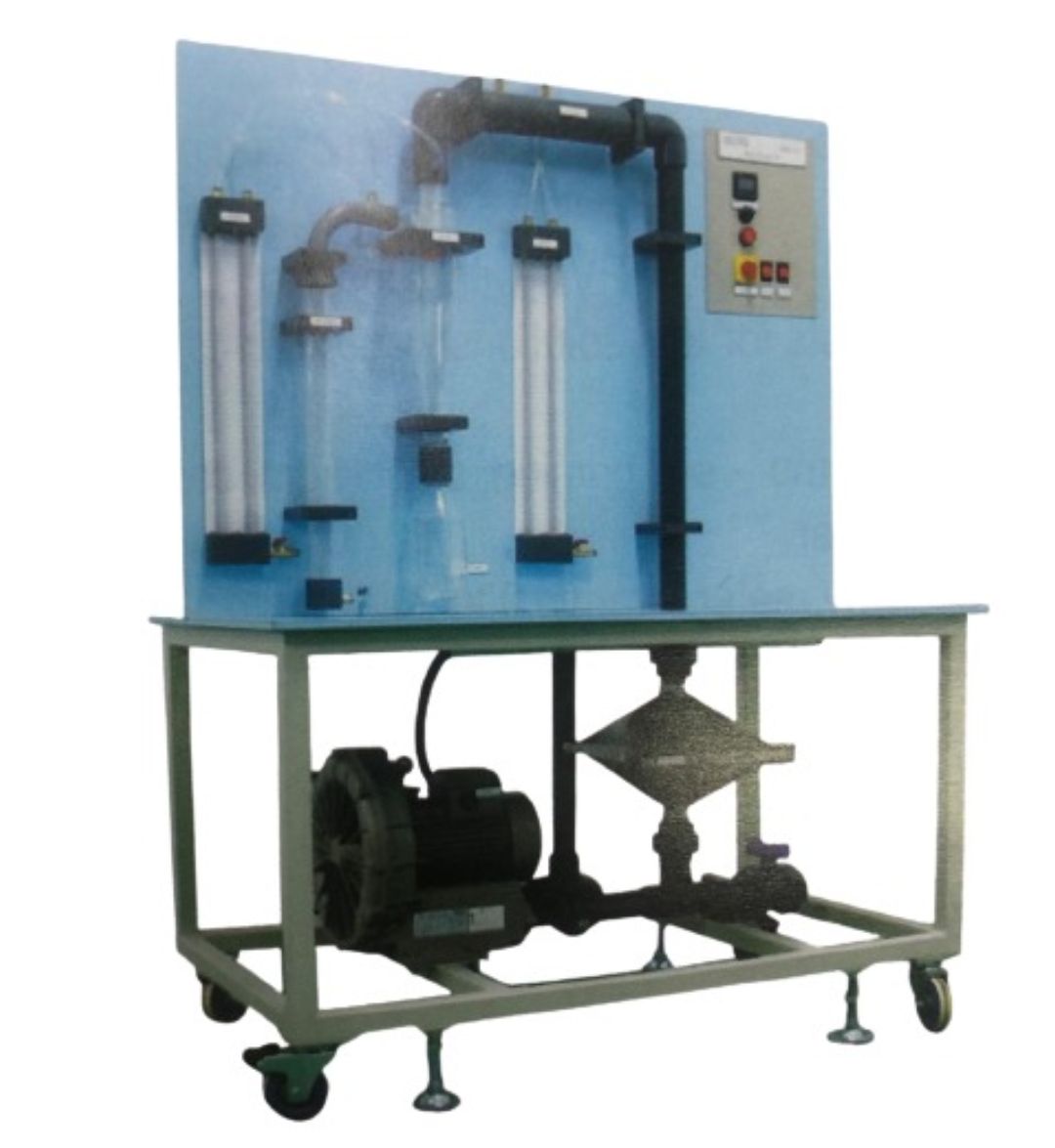
Equipment Name: Basic Cyclone Unit
Model No: AP11
Click below to see example:Description: This Basic Cyclone Unit is designed to demonstrate operation of a basic gas cleaning device in air pollution control.
This unit consists of:
Experimental capabilities:
(1277-16-SE)(2).jpg)
Equipment Name: Sedimentation Study Apparatus
Model No: TR01
Description: This Sedimentation Study Apparatus is designed to demonstrate characteristics of gravitational settling (sedimentation).
This unit consists of:
Experimental capabilities:
i) Effects on settling rates of the followings:
(1277-16-SE)(2)modify.jpg)
Equipment Name: Ion Exchange Unit
Model No: TR02
Description: This Ion Exchange Unit is designed to demonstrate principles of water softening or demineralization process using ion-exchange resins.
This unit consists of:
Experimental capabilities:
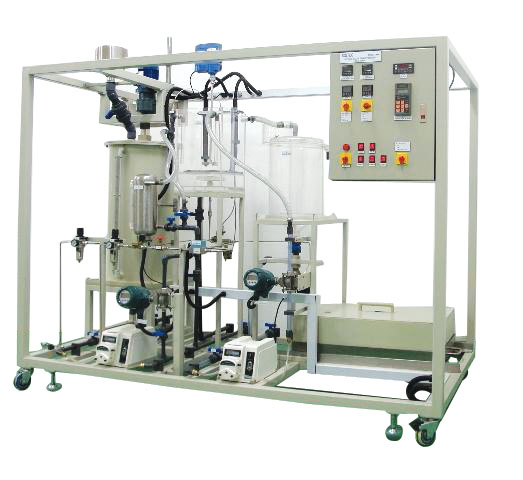
Equipment Name: Activated Sludge Sewage Treatment Pilot Plant
Model No: TR04
Description: This Activated Sludge Sewage Treatment Pilot Plant is designed to demonstrate operation of sewage treatment by activated sludge.
This unit consists of:
Instruments & control:
Experimental capabilities:
(1337-17-SE)(21).jpg)
Equipment Name: Filterability Index Unit
Model No: TR05
Description: This Filterability Index Unit is designed to demonstrate water quality test and water quality test procedure for filtration of a suspension.
This unit consists of:
Experimental capabilities:
(1311-16-SE)(2).jpg)
Equipment Name: Aeration Apparatus
Model No: TR06
Description: This Aeration Apparatus is designed to demonstrate the basics of aeration process, which involves the transfer of oxygen from atmosphere into a body of water.
This unit consists of:
Experimental capabilities:
- Water depth and composition
- Design and arrangement of diffusers
- Rate of air supply
- Stirrer speed
(1345-17-SE)(3).jpg)
Equipment Name: Reverse Osmosis Unit
Model No: TR08
Description: This Reverse Osmosis Unit is designed to demonstrate desalination of salt water using RO membrane.
This unit consists of:
- Membrane type: RO (polyamide, 99% rejection of salt)
- Membrane: 12.7 mm (dia.) x 1.2m (L)
Experimental capabilities:
(1336-17-SE)(6).jpg)
Equipment Name: Sedimentation Tank
Model No: TR09
Description: This Sedimentation Tank is designed to demonstrate the hydraulic characteristics and settling efficiencies of a settling basin.
This unit consists of:
Experimental capabilities:

Equipment Name: Flocculation Test Unit
Model No: TR10
Description: This Flocculation Test Unit is designed to demonstrate basic principles of coagulation and flocculation.
This unit consists of:
Experimental capabilities:
(1132-13-SE)(4)modify.jpg)
Equipment Name: Deep Bed Filtration Unit
Model No: TR13
Description: This Deep Bed Filtration Unit is designed to demonstrate the operations of a pilot scale granular filter.
This unit consists of:
Experimental capabilities:
(1158-14-SE)(1).jpg)
Equipment Name: Membrane Test Unit
Model No: TR14
Click below to see example:Description: This Membrane Test Unit is designed to demonstrate separation technique using membrane. This unit is supplied with different types of membrane, namely Reverse Osmosis, Nanofiltration, Utrafiltration and Microfiltration.
This unit consists of:
Pressure/Vacuum pump and tanks are also provided
Experimental capabilities:
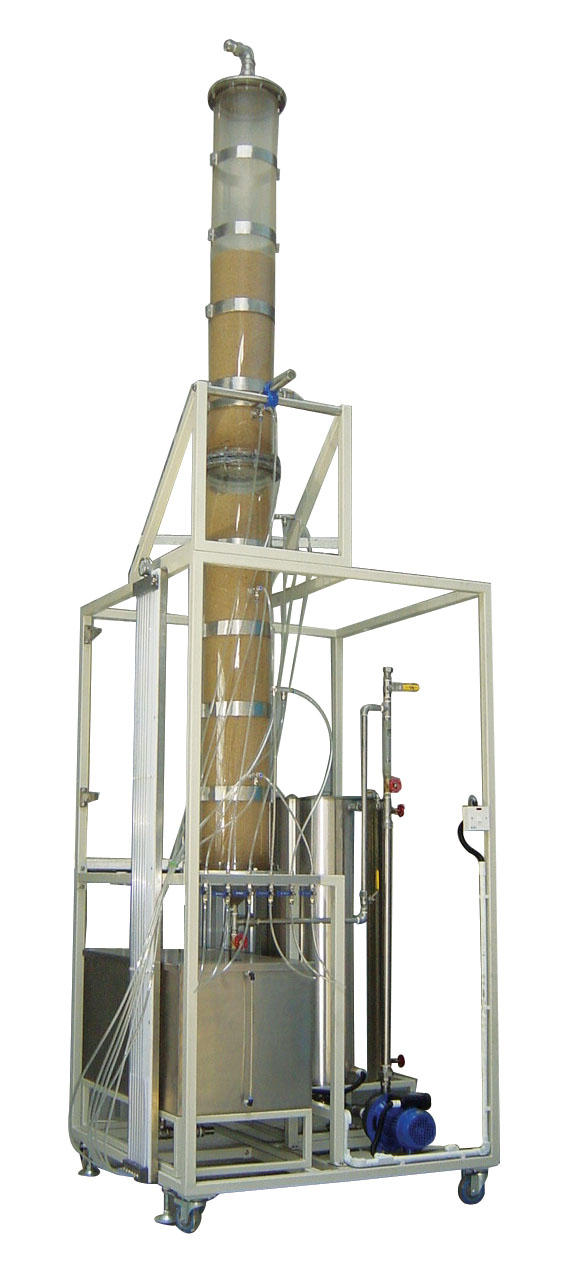
Equipment Name: Batch Settling Filtration Column
Model No: TR15
Description: This Batch Settling Filtration Column is designed to demonstrate basic principle of granular filtration.
This unit consists of:
Experimental capabilities:
(1298-16-GPS)(8).jpg)
Equipment Name: Membrane Filtration Unit
Model No: TR16
Click below to see example:Description: This Membrane Filtration Unit is designed to demonstrate separation technique using membrane, which is suitable for heat sensitive materials.
This unit consists of:
Experimental capabilities:
Product flow rate
Process pressure
Process temperature
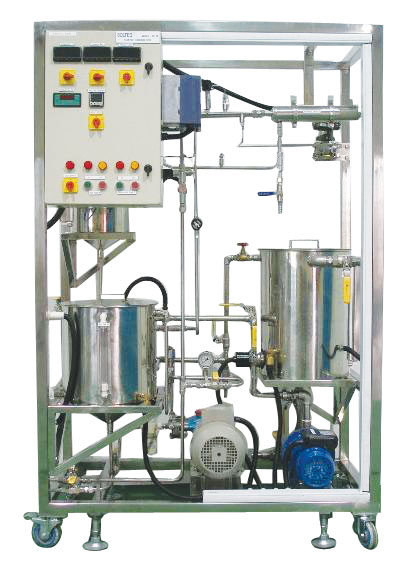
Equipment Name: Reverse Osmosis Unit
Model No: TR18
Click below to see example:Description: This Reverse Osmosis Unit is designed to demonstrate desalination of salt water using membrane technique.
This unit consists of:
Experimental capabilities:
- Pressure
- Temperature
- Flow rate
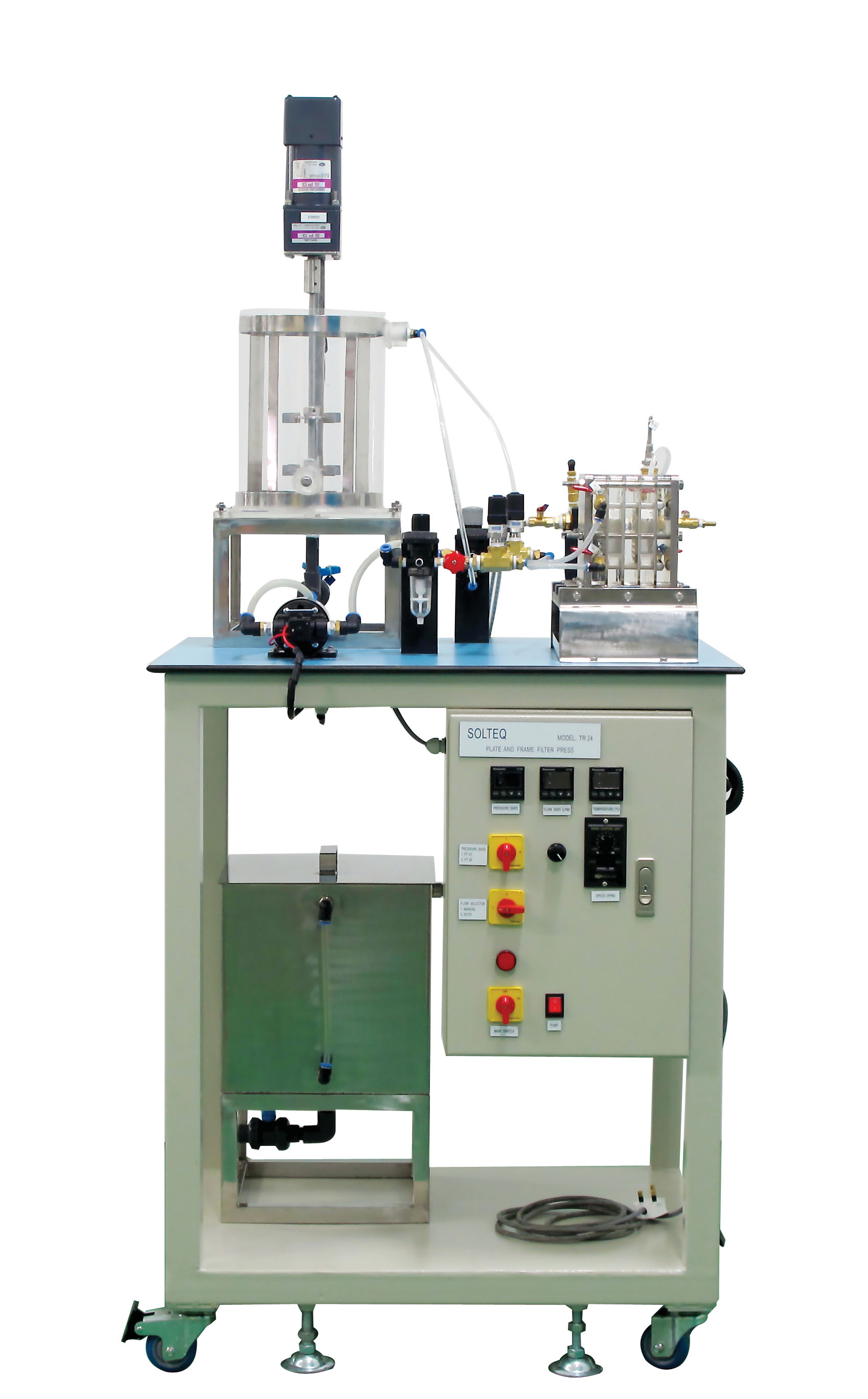
Equipment Name: Plate and Frame Filter Press Unit
Model No: TR24
Click below to see example:Description: This Plate and Frame Filter Press Unit is designed to demonstrate filtration process suitable for pharmaceutical, chemical, cosmetic, and food and beverage industries.
This unit consists of:
Experimental capabilities:
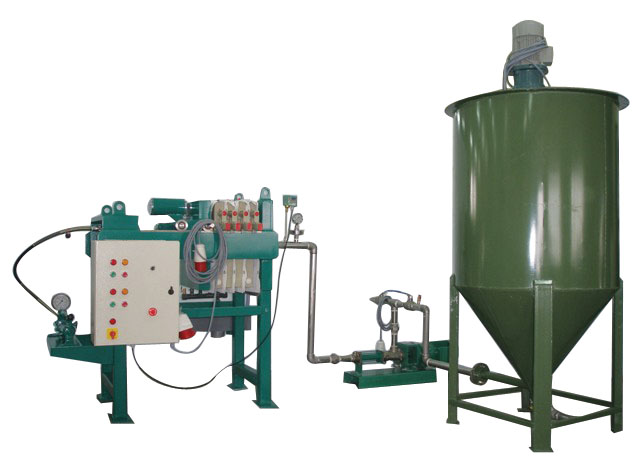
Equipment Name: Plate and Frame Filter Pilot Plant
Model No: TR25
Description: This Plate and Frame Filter Pilot Plant is designed to demonstrate operation of a plate and frame filter press. The filter press is suitable for pharmaceutical, chemical, cosmetic and food & beverage industries.
This unit consists of:
- hydraulic hand pump, max. pressure: 7 bar
Experimental capabilities:
(1312-16-SE)(2).jpg)
Equipment Name: Anaerobic Digester
Model No: TR26
Description: This Anaerobic Digester is designed to study effects of various process parameters on performance of anaerobic digestion process for waste water treatment.
This unit consists of:
Experimental capabilities:
(1313-16-SE)(17).jpg)
Equipment Name: Aerobic Digester Unit
Model No: TR28
Description: This Aerobic Digester unit is designed to study effects of various process parameters on performance of aerobic digester.
This unit consists of:
Experimental capabilities:
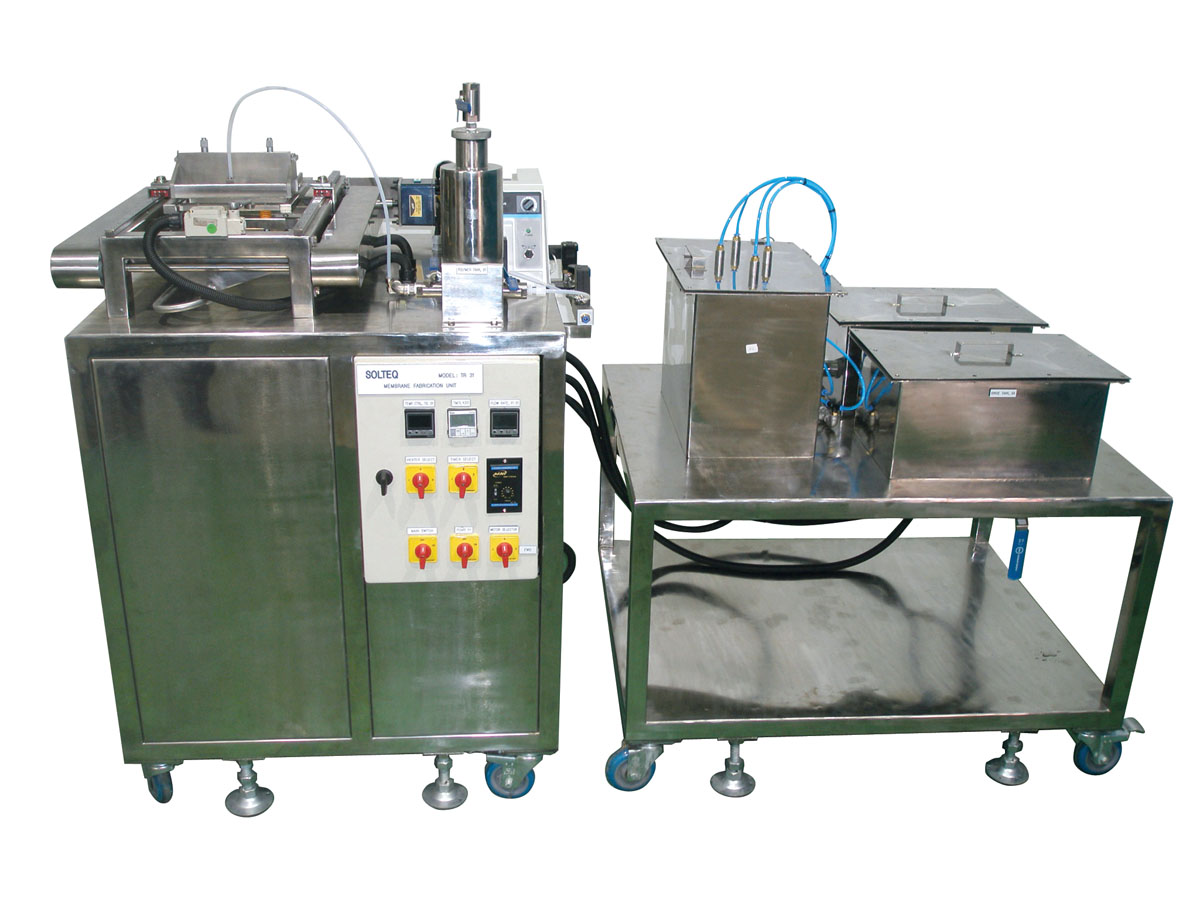
Equipment Name: Membrane Fabrication Unit
Model No: TR31
Click below to see example:Description: This Membrane Fabrication Unit is designed for student demonstration and research on the fabrication of organic membrane using polymers such as polycarbonate, polyamide, polysulfone, etc.
This unit consists of:
Experimental capabilities:
(1337-17-SE)(1).jpg)
Equipment Name: Corrosion Study Kits
Model No: BP01
Click below to see example:Description: This Corrosion Study Kits is designed to demonstrate the science of corrosion in industrial processes.
This unit consists of:
Experimental capabilities:
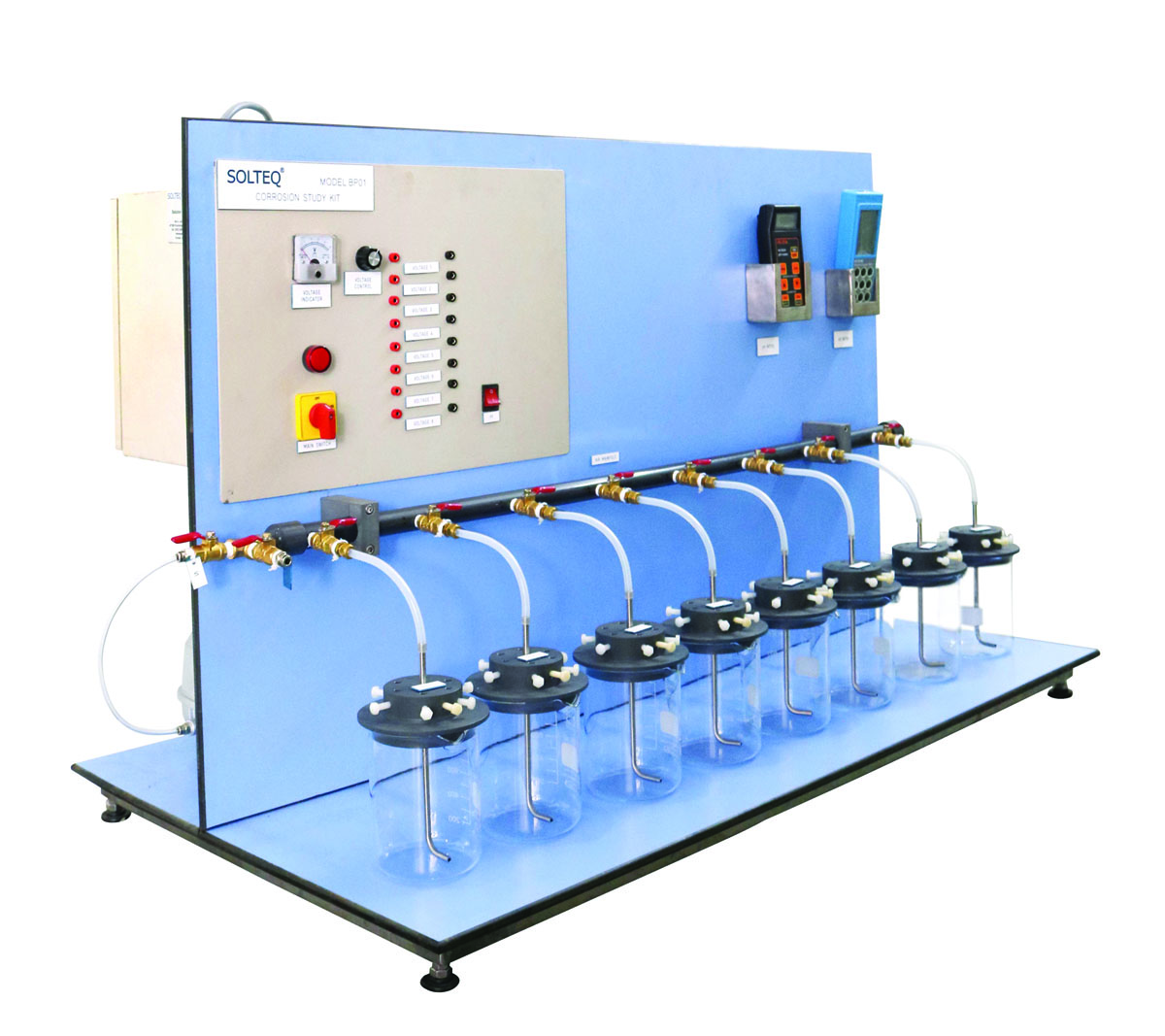
Equipment Name: Corrosion Study Kits
Model No: BP01
Click below to see example:Description: This Corrosion Study Kits is designed to demonstrate the science of corrosion in industrial processes.
This unit consists of:
Experimental capabilities:
(1263-15-GPS)modify.jpg)
Equipment Name: Falling Film Absorption Unit
Model No: BP02
Click below to see example:Description: This Falling Film Absorption Unit is designed for experiments on liquid film controlled gas-liquid absorption process.
This unit consists of:
Experimental capabilities:
(1297-16-SE)(4).JPG)
Equipment Name: Liquid Diffusion Coefficient Apparatus
Model No: BP09
Description: This Liquid Diffusion Coefficient Apparatus is designed to measure liquid diffusivity in an equimolar counter diffusion process.
This unit consists of:
Experimental capabilities:
(1297-16-SE)(1).jpg)
Equipment Name: Gaseous Diffusion Coefficient Apparatus
Model No: BP10
Description: This Gaseous Diffusion Coefficient Apparatus is designed to measure molecular diffusivity of gases.
This unit consists of:
Experimental Capabilities:

Equipment Name: Vapour Liquid Equilibrium Unit
Model No: BP16
Click below to see example:Description: This Vapour Liquid Equilibrium Unit is designed to investigate vapour and liquid equilibrium of a binary mixture at pressures up to 10 bar.
This unit consists of:
Experimental capabilities:
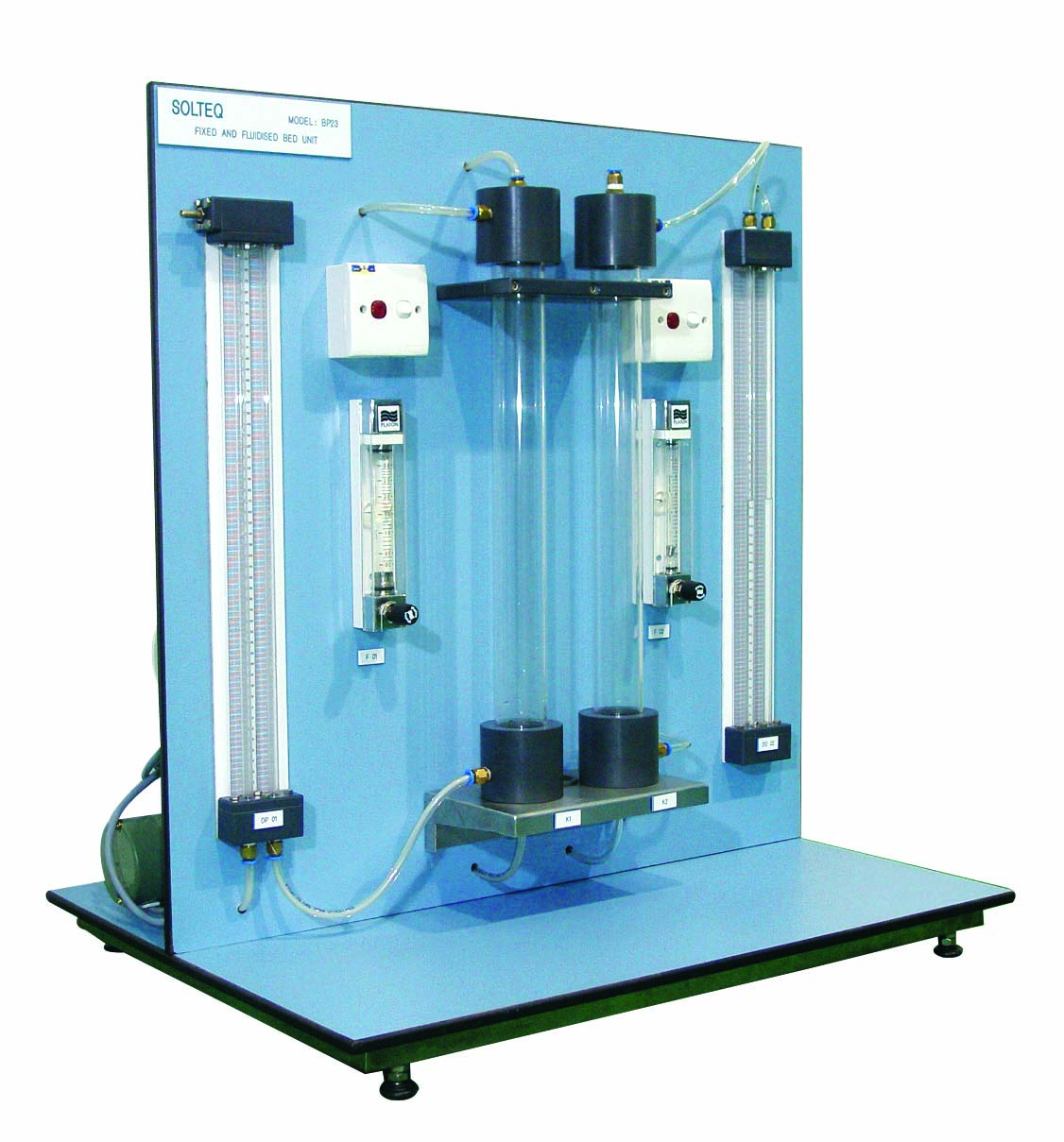
Equipment Name: Fixed and Fluidised Bed Unit
Model No: BP23
Click below to see example:Description: The Fixed and Fluidised Bed Unit is designed to study the behaviour of flow of fluid through both fixed and fluidised bed of solid particles. Differences in flow behaviour can be visualized clearly.
This unit consists of:
Experimental capabilities:
(1346-17-SE)(6).jpg)
Equipment Name: Solid-Liquid Extraction Unit
Model No: BP40
Click below to see example:Description: This Solid-Liquid Extraction Unit is designed to demonstrate the principles of extraction process whereby some components are selectively removed from solid using a suitable solvent.
This unit consists of:
Experimental capabilities:
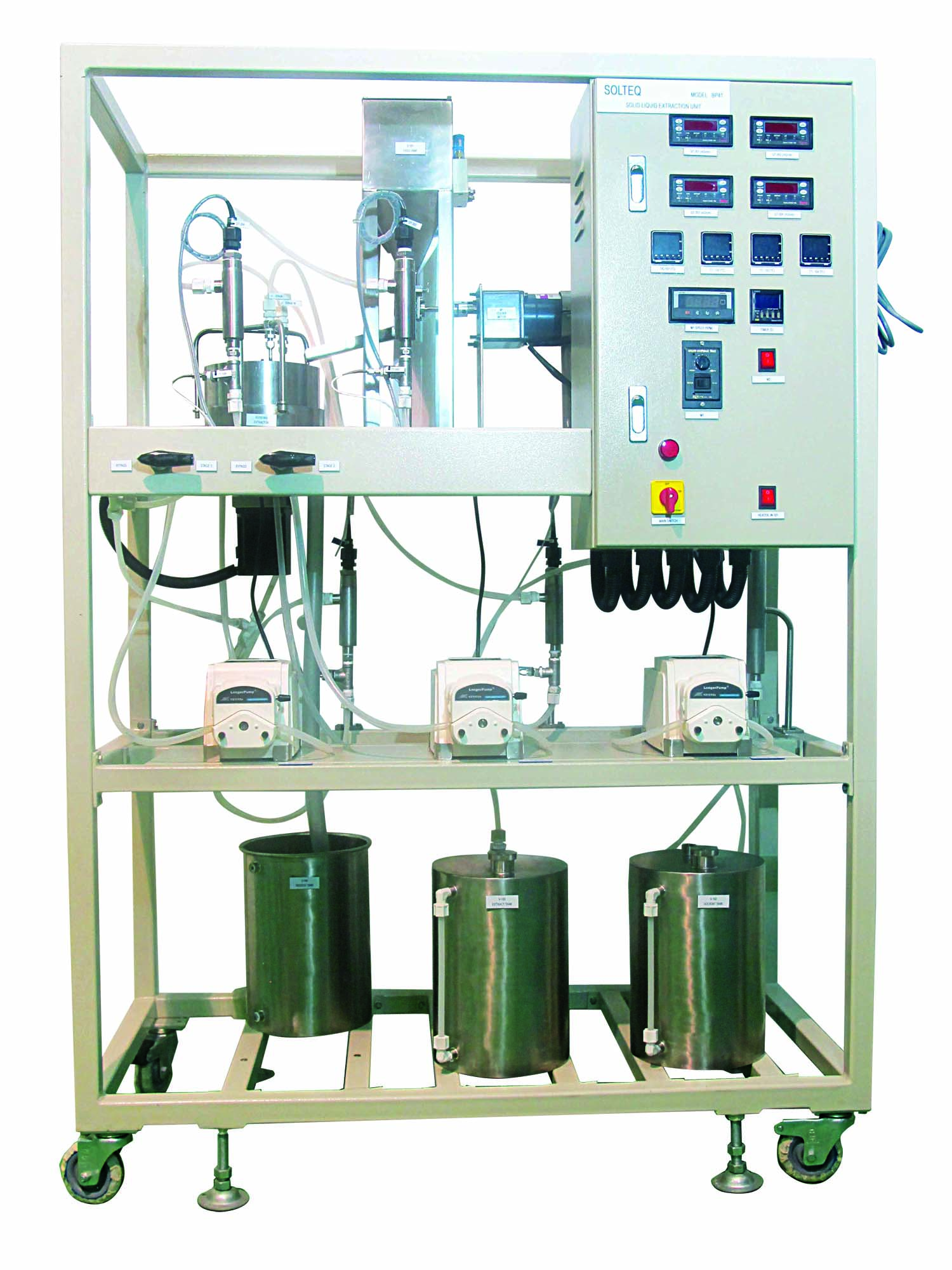
Equipment Name: Solid-Liquid Extraction Unit
Model No: BP41
Click below to see example:Description: This Solid Liquid Extraction Unit is designed for student demonstration on the extraction process whereby components can be selectively extracted from solid mixtures using a suitable solvent.
This unit consists of:
Experimental capabilities:
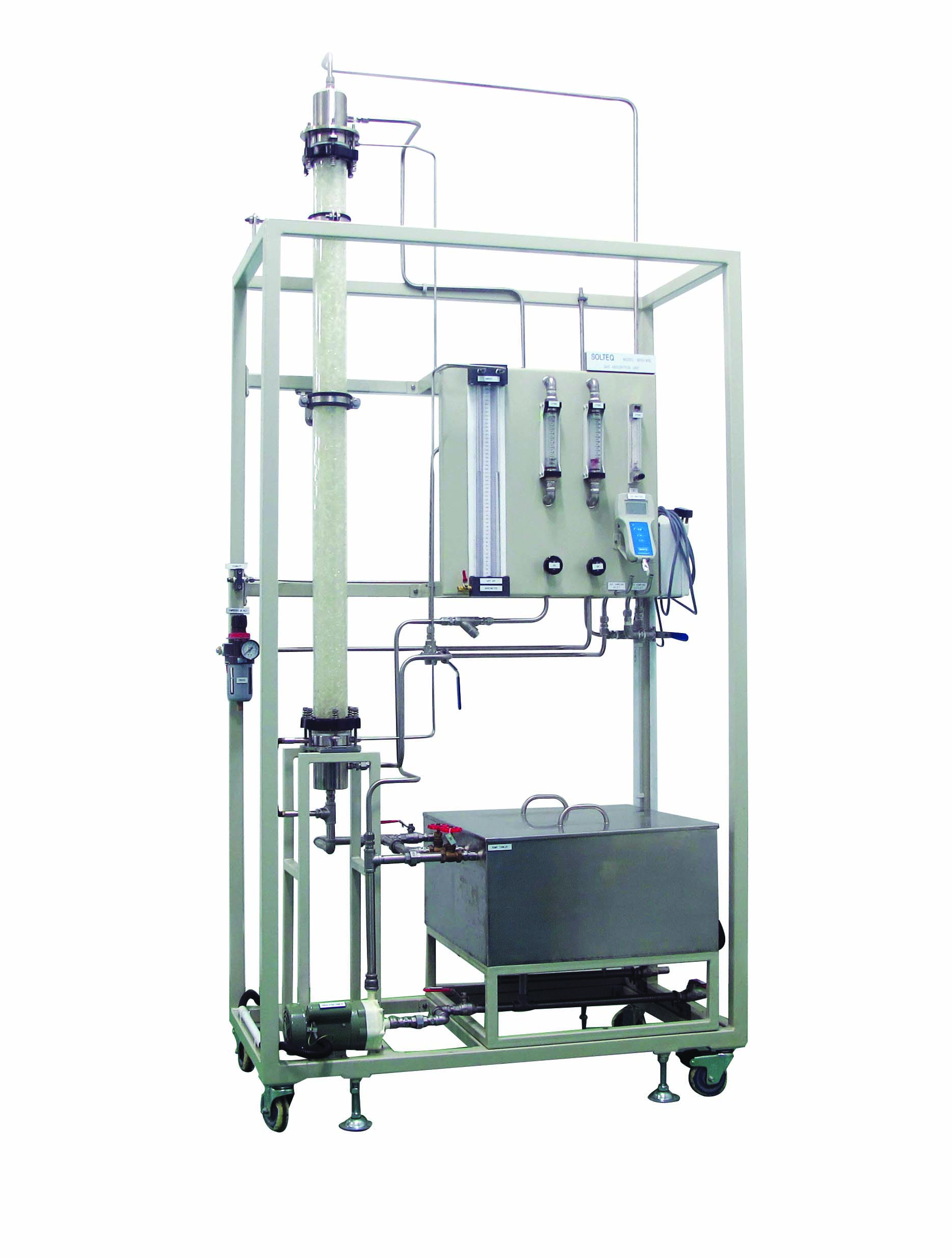
Equipment Name: Gas Absorption Unit
Model No: BP50-80
Click below to see example:Description: This Gas Absorption Unit is designed to provide students with a hands-on experience on gas absorption by means of liquids (solvent absorption).
This unit consists of:
Experimental capabilities:
(1285-16-SE)(6).jpg)
Equipment Name: Gas Absorption-Desorption Unit
Model No: BP51-80
Click below to see example:Description: This Gas Absorption-Desorption Unit is designed to provide students with a hands-on experience on gas absorption and desorption.
This unit consists of:
Experimental capabilities:
(1326-17-SE)(4).jpg)
Equipment Name: Liquid-Liquid Extraction Unit (With Solvent Recovery)
Model No: BP60
Click below to see example:Description: This Liquid-Liquid Extraction Unit is designed to demonstrate the principles and operation of liquid-liquid extraction and solvent recovery processes. The mobile unit consists of an extraction system and a solvent recovery system.
This unit consists of:
Experimental capabilities:
(1222-15-SE)(1).jpg)
Equipment Name: Liquid-Liquid Extraction Unit (Without Solvent Recovery)
Model No: BP61
Click below to see example:Description: This Liquid-Liquid Extraction Unit is designed for demonstration of liquid-liquid extraction.
This unit consists of:
Experimental capabilities:
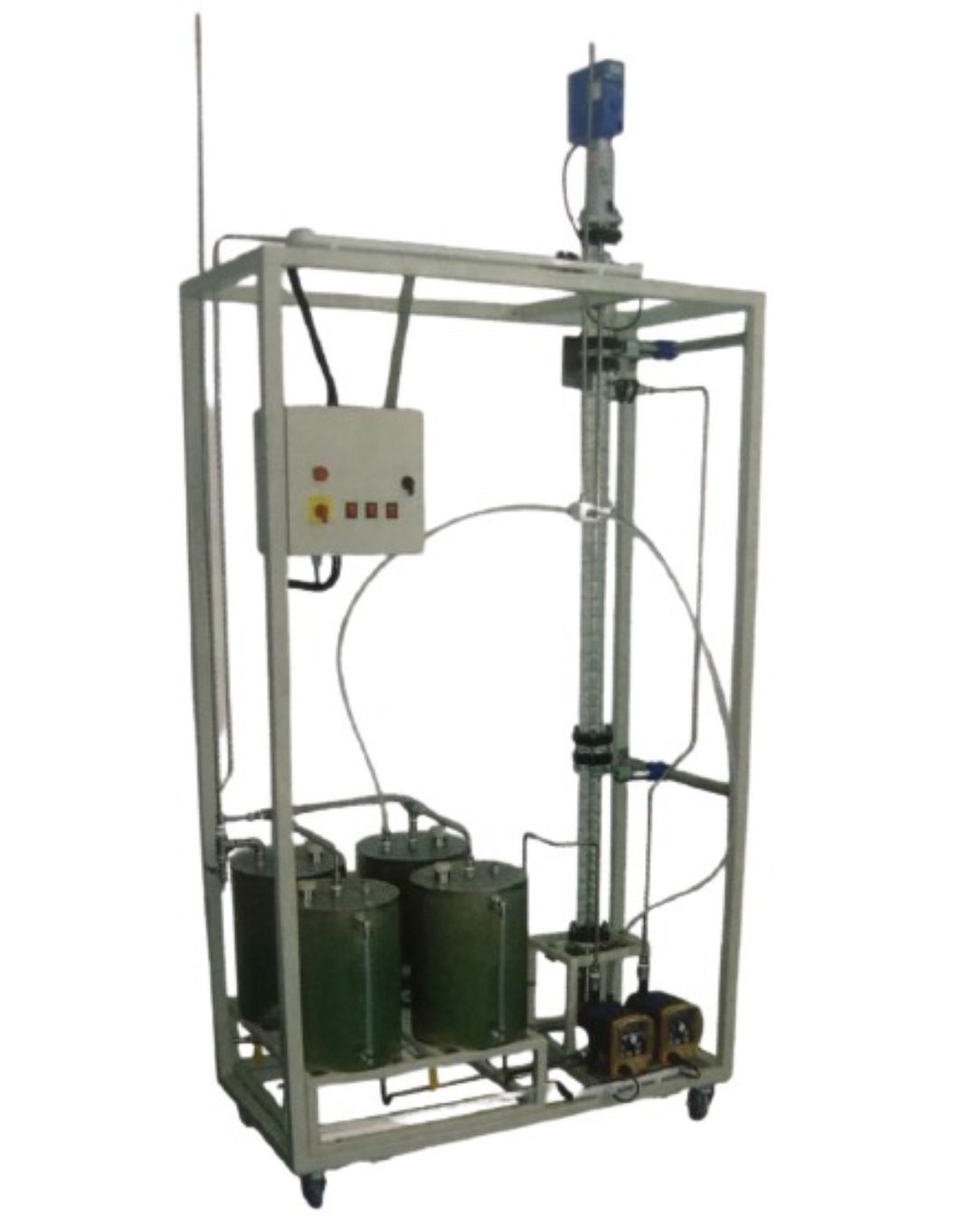
Equipment Name: Rotating Disc Liquid-Liquid Extraction Unit (Without Solvent Recovery)
Model No: BP63
Click below to see example:Description: This Rotating Disc Liquid-Liquid Extraction Unit is designed for demonstration of liquid-liquid extraction using a rotating disc column.
This unit consists of:
Experimental capabilities:
(1285-16-SE) (modify).jpg)
Equipment Name: Double Effect Evaporator
Model No: BP70
Click below to see example:Description: This Double Effect Evaporator is designed to provide students with practical knowledge of evaporation process. Operations of single or double effect climbing film evaporator will be demonstrated.
This unit consists of:
Experimental capabilities:
(1222-15-SE)(1).jpg)
Equipment Name: Continuous Distillation Column Unit
Model No: BP80-50
Click below to see example:Description: This Continuous Distillation Column Unit is designed to demonstrate the principles and operation of continuous distillation also.
This unit consists of:
Experimental capabilities:
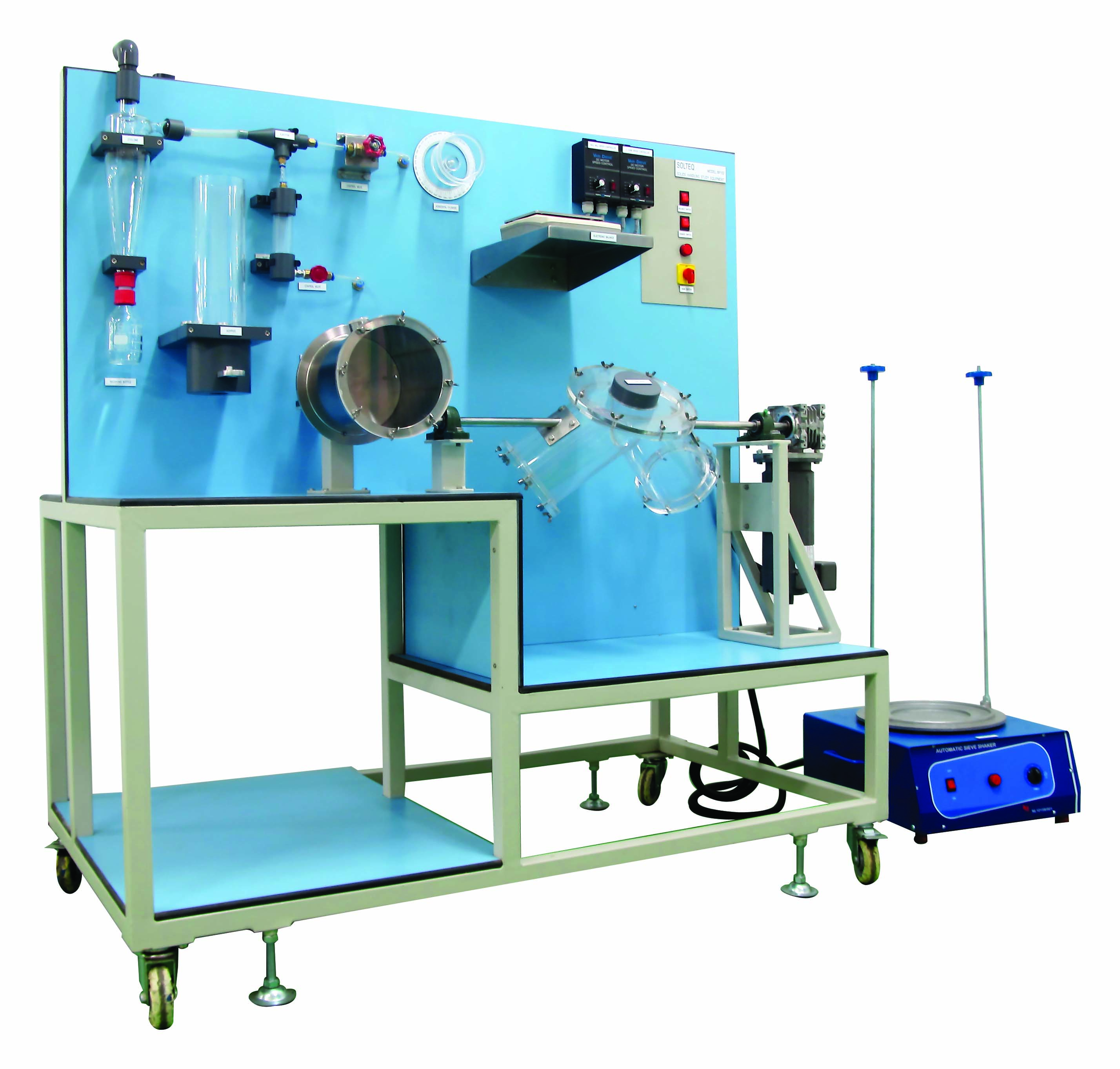
Equipment Name: Solids Handling Study Equipment
Model No: BP102
Description: This Solids Handling Study Equipment is designed to demonstrate the characteristics and behaviour of solid particles.
This unit consists of:
Experimental capabilities:
(1282-16-GPS)(22).jpg)
Equipment Name: Crystallisation Unit
Model No: BP123
Click below to see example:Description: This Crystallisation Unit is designed to demonstrate basic principles of crystallization and operations of a crystallizer.
This unit consists of:
Experimental capabilities:
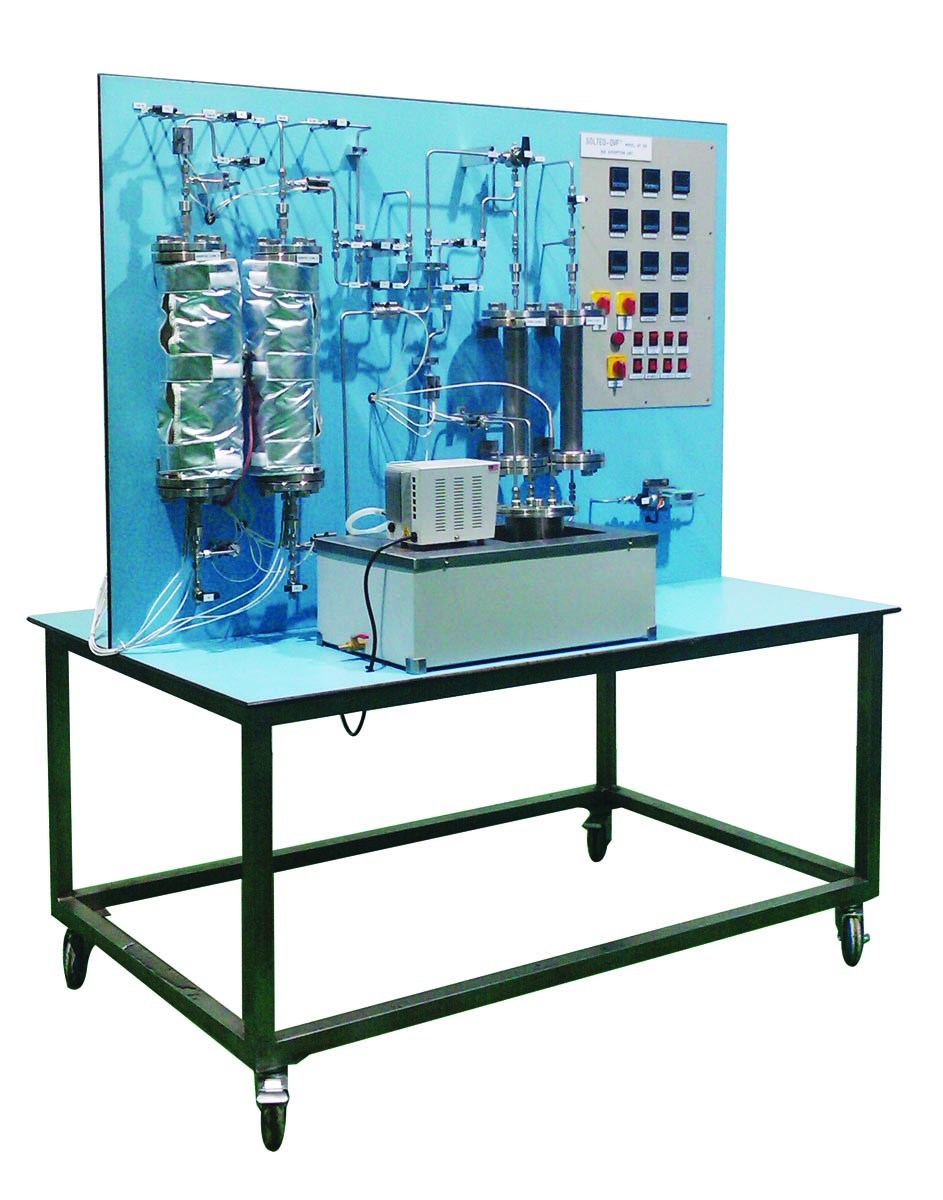
Equipment Name: Gas Adsorbtion Unit
Model No: BP200
Click below to see example:Description: This Gas Adsorbtion Unit is designed to demonstrate the working principles of gas phase adsorption.
This unit consists of:
Experimental capabilities:
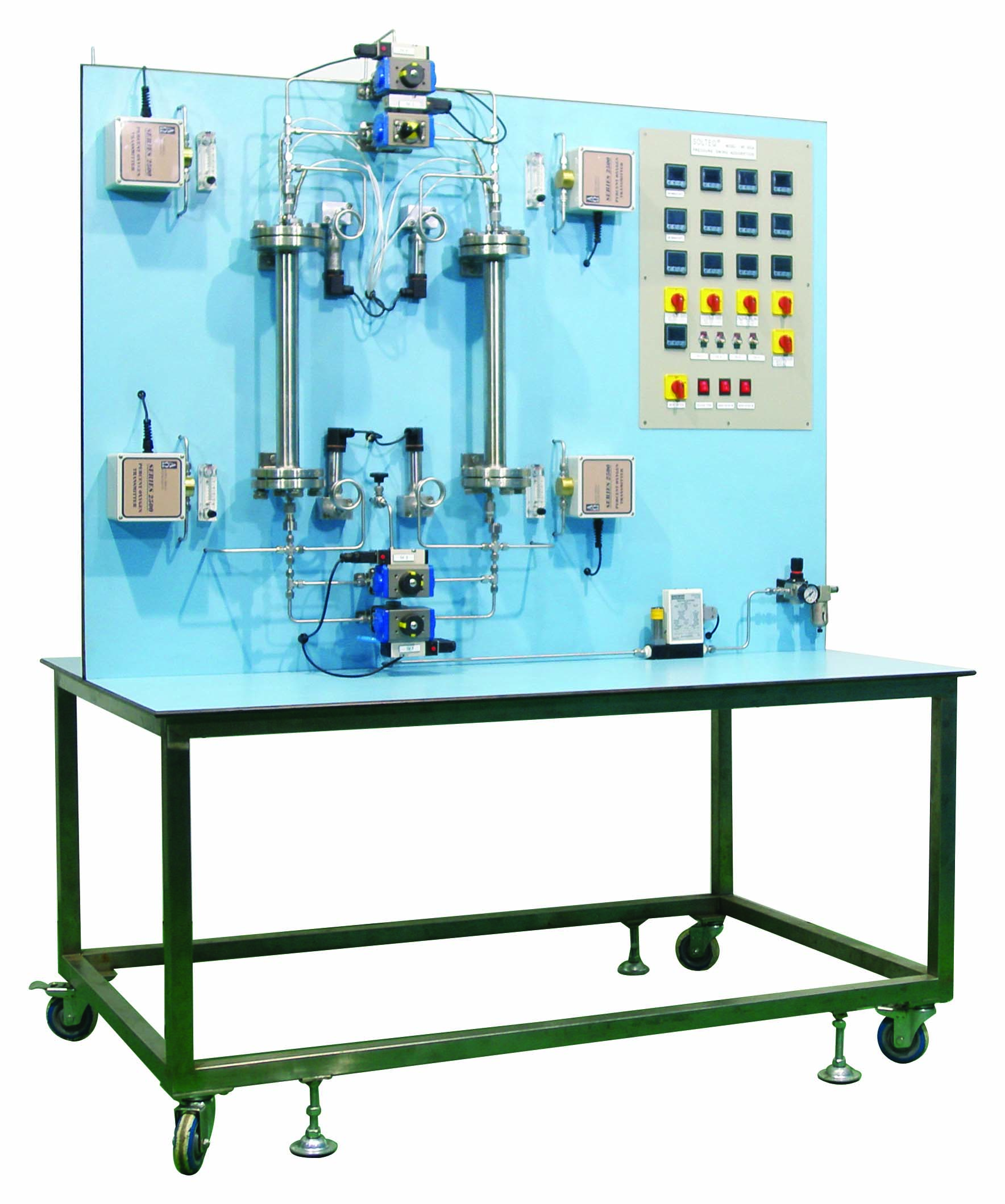
Equipment Name: Pressure Swing Adsorbtion Column System
Model No: BP202-A
Click below to see example:Description: This Pressure Swing Adsorption Column System is designed to demonstrate the fundamental and working principles of pressure swing adsorption. Air separation is used as an example.
This unit consists of:
Experimental capabilities:
.jpg)
Equipment Name: Gas-Solid Adsorbtion Column
Model No: BP204
Click below to see example:Description: This Gas-Solid Adsorption Column is designed to study the dynamic adsorption of gas mixtures containing gas CO2 and gas H2S.
This unit consists of:
Experimental capabilities:
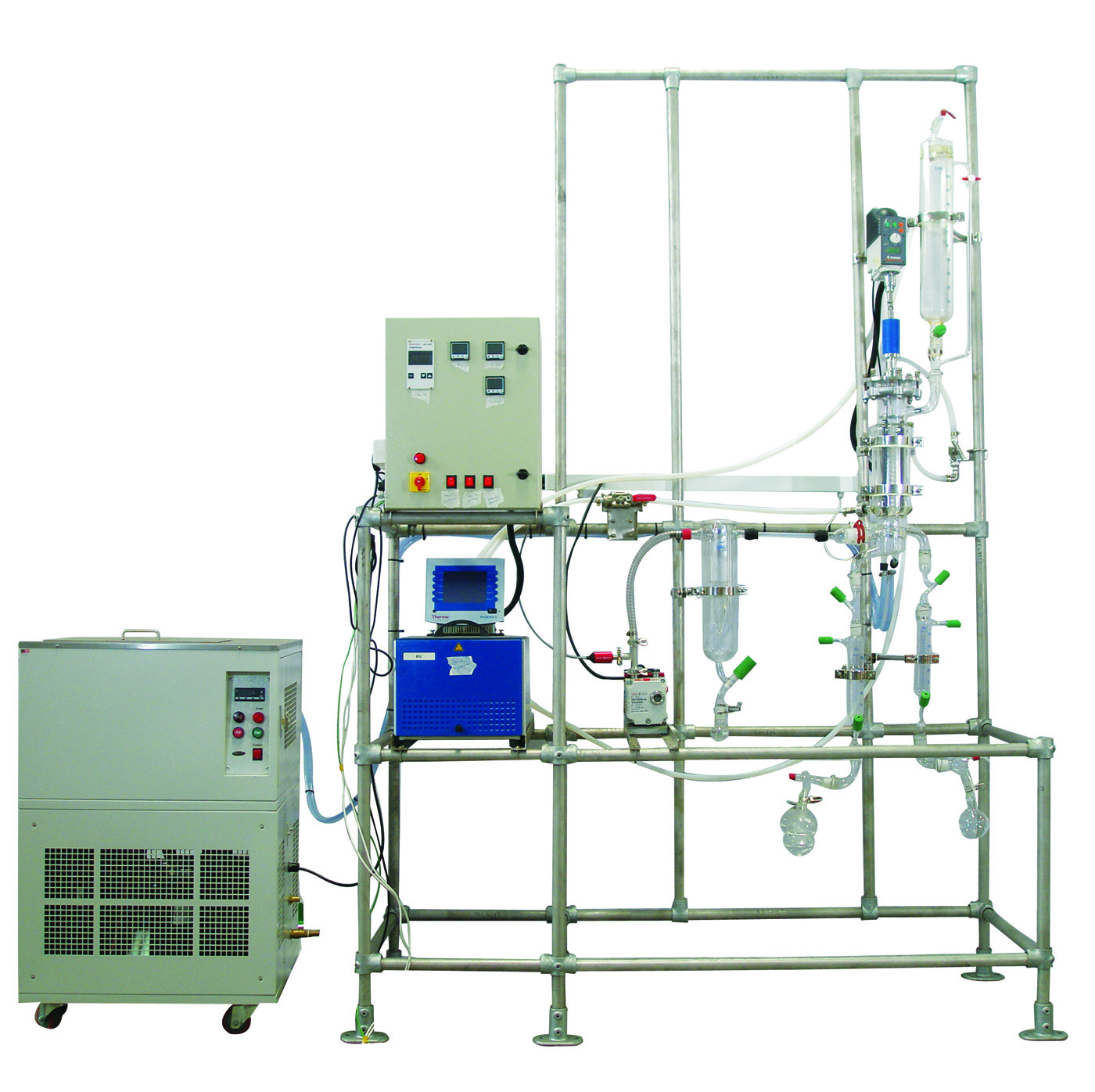
Equipment Name: Short Path Distillation System
Model No: BP217
Click below to see example:Description: This Short Path Distillation System is designed for demonstration of separation process for thermal sensitive products. The short residence time and low evaporation temperature process is a great advantage for many high-molecular-weight organic compounds particularly in the fields of chemistry, pharmaceutical and food industry.
This unit consists of:
Experimental capabilities:
(1285-16-SE) (3).jpg)
Equipment Name: Tray Drier
Model No: BP772
Click below to see example:Description: This Tray Drier is designed to demonstrate industrial drying process.
This unit consists of:
Experimental capabilities:
(1215-15-SE)(1).jpg)
Equipment Name: Liquid Mixing Equipment
Model No: FM103
Click below to see example:Description: This Liquid Mixing Equipment is designed for laboratory experiments on solid-liquid and liquid-liquid mixing.
This unit consists of:
Experimental capabilities:
(1310-16-SE)(1).jpg)
Equipment Name: Spray Dryer
Model No: FD20
Description: This Spray Dryer is designed for demonstration of rapid spray drying processes involving aqueous emulsions, solutions, suspensions and colloids. Spray dryers are generally used in the food industry to process fish extracts, heat sensitive materials, milk and egg products, cereals, plant and vegetable extracts, etc.
This unit consists of:
Experimental capabilities:
(1279-16-SE)(3).jpg)
Equipment Name: Decomposition Reactor
Model No: BP90
Click below to see example:Description: This Decomposition Reactor is designed for student experiment on decomposition of sodium bicarbonate.
This unit consists of:
Experimental capabilities:
(1334-17-GPS)(1).jpg)
Equipment Name: Liquid Phase Stirred Tank Reactor
Model No: BP100
Click below to see example:Description: This Liquid Phase Stirred Tank Reactor is designed to demonstrate the behaviour of a stirred tank reactor.
This unit consists of:
Experimental capabilities:
(1295-16-SE)(5).jpg)
Equipment Name: Tubular Flow Reactor
Model No: BP101
Click below to see example:Description: This Tubular Flow Reactor is designed to demonstrate the behavior of a plug flow reactor.
This unit consists of:
Experimental capabilities:
(1295-16-SE)(7).jpg)
Equipment Name: Catalytic Packed Bed Reactor
Model No: BP105
Click below to see example:Description: This Catalytic Packed Bed Reactor is designed for demonstration of catalytic chemical reaction in tubular reactors.
This unit can also be fitted with an air cooled radiator to recycle the heated water.
This unit consists of:
Experimental capabilities:
(1297-16-SE)(1).jpg)
Equipment Name: Packed Bed Catalytic Reactor
Model No: BP106
Click below to see example:Description: This Packed Bed Catalytic Reactor is a bench top unit which is used in demonstration of chemical reaction in tubular reactors.
This unit consists of:
Experimental capabilities:
(1194-14-SE)modify.jpg)
Equipment Name: CSTR in Series
Model No: BP107
Click below to see example:Description: This CSTR in Series is designed to demonstrate the dynamic behavior of reaction in series
This unit consists of:
Experimental capabilities:
(1288-16-SE)(1).jpg)
Equipment Name: Batch Reactor
Model No: BP109
Click below to see example:Description: This Batch Reactor is designed to demonstrate the behavior of a batch reactor.
This unit consists of:
Experimental capabilities:
(1297-16-SE)(1).jpg)
Equipment Name: RTD Studies in Packed Bed Reactor
Model No: BP112
Description: This RTD Studies in Packed Bed Reactor is designed to demonstrate principles of RTD in a packed bed reactor.
This unit consists of:
Experimental capabilities:
(1224-15-SE)(1).jpg)
Equipment Name: Reactor Service Unit + 3 Reactors
Model No: BP150
Click below to see example:Description: This Reactor Service Unit + 3 Reactors is designed to demonstrate the behavior of different types of reactors using a common service unit with interchangeable reactors.
This unit consists of:
Experimental capabilities:
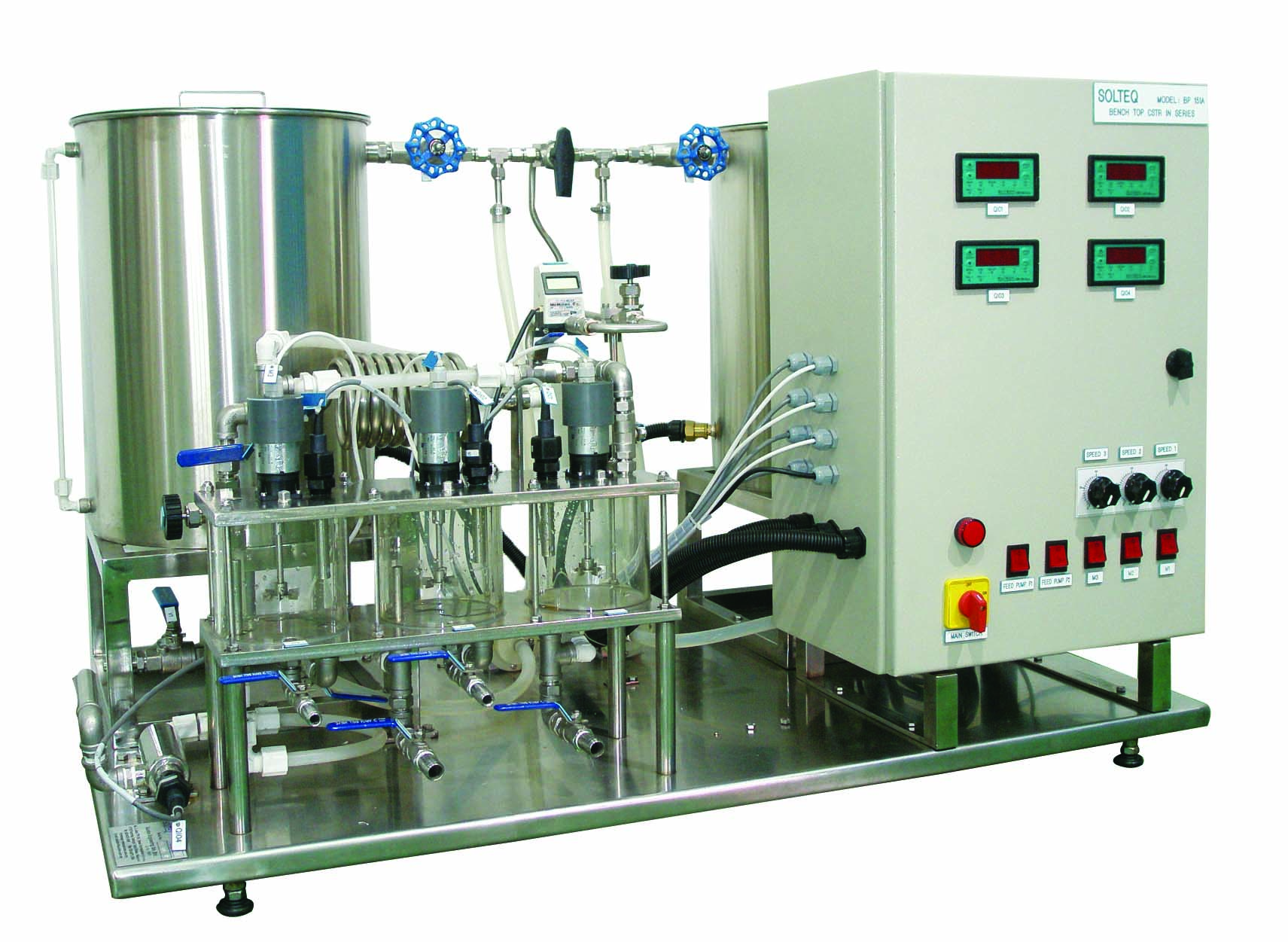
Equipment Name: Benchtop CSTR in Series
Model No: BP151
Click below to see example:Description: This Benchtop CSTR in Series is designed to introduce students to the dynamic behavior of reactors in series.
This unit consists of:
Experimental capabilities:
(1166-14-SE)(7)modify.jpg)
Equipment Name: Fixed Bed Adsorption Reactor
Model No: BP208
Click below to see example:Description: This Fixed Bed Adsorption Reactor is designed to demonstrate the principles of adsorption of CO2 from a binary gas mixture onto the surface of a solid adsorbent (activated carbon). The process takes place in a fixed bed column.
This unit consists of:
Experimental capabilities:
(1222-15-SE)(1).jpg)
Equipment Name: Reactor Basic Unit (CSTR)
Model No: BP400
Click below to see example:Description: This Reactor Basic Unit (CSTR) is designed to introduce students to the behavior of a CSTR reactor.
This unit consists of:
Experimental capabilities:
 copy.jpg)
Equipment Name: Reactor Basic Unit (Batch)
Model No: BP409
Click below to see example:Description: This Reactor Basic Unit (Batch) is designed to introduce students to the behavior of a batch reaction.
This unit consists of:
Experimental capabilities:

Equipment Name: Air Conditioning Laboratory Unit
Model No: AC01
Click below to see example:Description: This Air Conditioning Laboratory Unit is designed to demonstrate the working principles of air conditioning system.
This unit consists of:
Experimental capabilities:
.jpg)
Equipment Name: Water Cooled Package Air Conditioner
Model No: AC155
Click below to see example:Description: This Water Cooled Package Air Conditioner is installed with industrial type components to demonstrate the working principle of an actual air conditioning system.
This unit consists of:
Experimental capabilities:
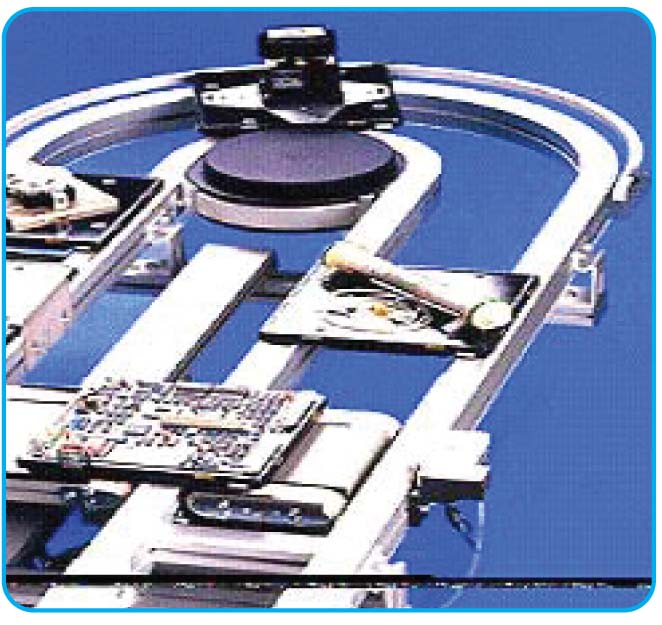
Equipment Name: Conveyor Belt Trainer
Model No: BS01
Description: This Conveyor Belt Trainer is designed to incorporate a conveyor, which carries material, components or assemblies on carrier plates call pallets. The conveyor has a continuously moving belt to transport the pallets to positioning stations where the pallet is stopped and locked into position, ready for work to be done with the material on the pallet. The closed loop pallet conveyor is fully compatible with the ranges of Robots, Machine Tools, ASRS and other hardware elements. It is integrated with the rest of the system software through the use of a special device driver program which supervise the movements of all pallets.
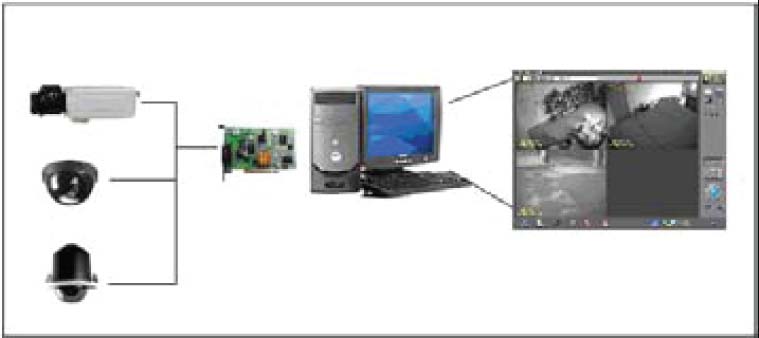
Equipment Name: CCTV System Demonstration
Model No: BS04
Description: This CCTV System Demonstration Unit is designed to demonstrate the students a PC based Digital Surveillance system in the CCTV industry. The unit consists of a video surveillance card, a PC install with card’s software, speed dome camera, PTZ camera and a fixed dome camera. It has the abilities to reduce and prevent crime, antisocial behaviours and assist in criminal investigation.
(120-14-SE)(1).jpg)
Equipment Name: Corrosion Study Unit
Model No: BP01
Click below to see example:Description: This Corrosion Study Unit is designed to demonstrate the science of corrosion in industrial processes.
This unit consists of:
Experimental capabilities:
(1328-17-SE)Photos(18).jpg)
Equipment Name: Industrial Piping and Valves Training System
Model No: IPTS02
Click below to see example:Description: The Industrial Piping and Valves Training System is designed for industrial practical hands-on starting from fundamental on piping engineering and design, piping installation, piping instrumentation, piping testing, piping maintenance, pump selection, pump installation and pump maintenance. The system is built in a modular structure to enable students to perform real industrial hands-on practical exercise. The system is designed based on oil & gas industry piping according to the ASME process piping standard.
The unit consists of:
Experimental Capabilities:
(1237-15-SE)(modify2).jpg)
Equipment Name: Serial/parallel Pump Test Rig
Model No: FM07A
Click below to see example:Description: This Serial/Parallel Pump Test Rig is designed to demonstrate to students the operating characteristic of centrifugal pump in single configuration, series configuration & parallel configuration. Basic instruments are included to monitor the pump speed, pump head and flow rate.
This unit consists of:
Experimental capabilities:
.jpg)
Equipment Name: Air Flow Bench
Model No: FM21
Click below to see example:Description: This Air Flow Bench Unit is designed to demonstrate the principles of compressible fluid flow, the basic unit comes with a motor driven centrifugal fan for studying air flow characteristics.
This unit consists of:
The unit can be used with the following accessories for more comprehensive experiments on air flow:
Experimental capabilities:
(1294-16-SE)(6).jpg)
Equipment Name: Fluid Friction Measurements Apparatus
Model No: FM100
Click below to see example:Description: This Fluid Friction Measurement Apparatus is designed for students to study the fluid friction head losses of an incompressible fluid flow.
This unit consists of:
Experimental capabilities:
(1304-16-SE)(3).jpg)
Equipment Name: Flowmeter Measurement Apparatus
Model No: FM101
Description: This Flowmeter Measurement Apparatus is designed to introduce students to the operating characteristic of various types of flowmeters.
This unit consists of:
Experimental capabilities:
..jpg)
Equipment Name: Hydraulic Bench
Model No: FM110
Description: This Hydraulic Bench is designed to complement a wide range of accessories for experiments on the subjects of fluid mechanics. The unit consists of upper and lower moldings mounted on a steel structure fitted with lockable wheels. The moldings are made of fiberglass for lightweight and corrosion resistant features. An open channel and volumetric measuring tank are incorporated with the bench along with the means for mounting and connecting various accessories.
This unit consists of:
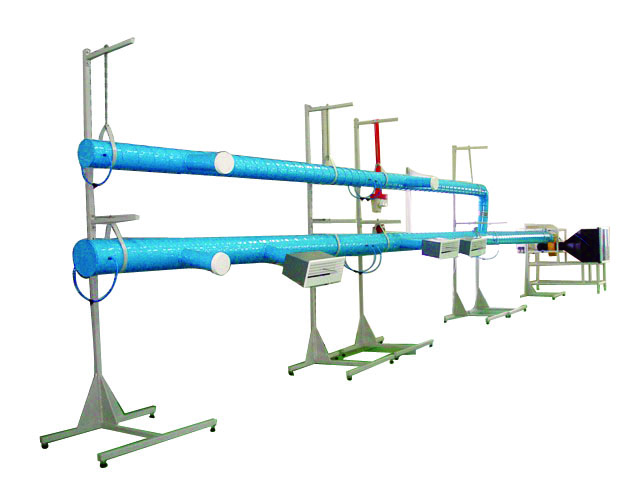
Equipment Name: Ventilation Trainer
Model No: FM801
Click below to see example:Description: This Ventilation Trainer is designed to demonstrate the basic operation of air ventilation.
This unit consists of:
Experimental capabilities:
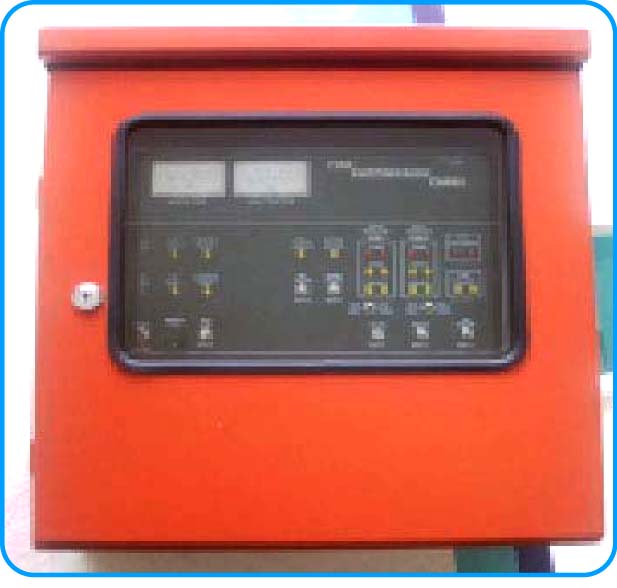
Equipment Name: Gas Alarm Control Unit
Model No: GA102
Description: This Gas Alarm Control Unit is designed to demonstrate to students for monitoring the gas fire suppression system. It can be activated to demonstrate the sequent of events and alert warning leading to the gas discharge stage. This control panel can be used to activate all type of gases. Students can learn the important of this fire protection system which is commonly used and installed.
Experimental capabilities:
.jpg)
Equipment Name: Heat Conduction Study Bench
Model No: HE105
Click below to see example:Description: This Heat Conduction Study Bench is designed to provide an introduction into the concepts of heat conduction using one dimensional conduction modules. The linear test section is supplied with interchangeable samples of conductors and insulators
This unit consists of:
Experimental capabilities:
(1152-14-SE)(1).png)
Equipment Name: Water Cooling Tower
Model No: HE152
Click below to see example:Description: This Water Cooling Tower is designed to demonstrate the operation of a force draught cooling tower.
This unit consists of:
Experimental capabilities:
(1189-14-SE)(2).jpg)
Equipment Name: Multi Alarm Control Unit
Model No: MA103
Description: This Multi Alarm Control Unit is designed to educate the students the functional aspect of each alarm system. This unit has a combination of the fire alarm and burglar alarm system. The performance and reliable of this console unit incorporates a state of the art mother-board operating under most demand requirement. This simplicity of this design incorporates the activation of each device or sensor individually and stimulates different alarm mode indicating the actual system performance
Experimental capabilities:
(1325-17-GPS)(1).jpg)
Equipment Name: Refrigeration Laboratory Unit
Model No: RF01
Click below to see example:Description: This Refrigeration Laboratory Unit is designed to help students to study the performance of a vapour compression cycle under various conditions of evaporator load and condenser pressure.
This unit consists of:
Experimental capabilities:
.jpg)
Equipment Name: Thermal Ice Storage Chiller System
Model No: RF171
Description: This Thermal Ice Storage Chiller System is installed with industrial type components to demonstrate the working principle of a thermal ice storage.
This unit consists of:
Experimental capabilities:
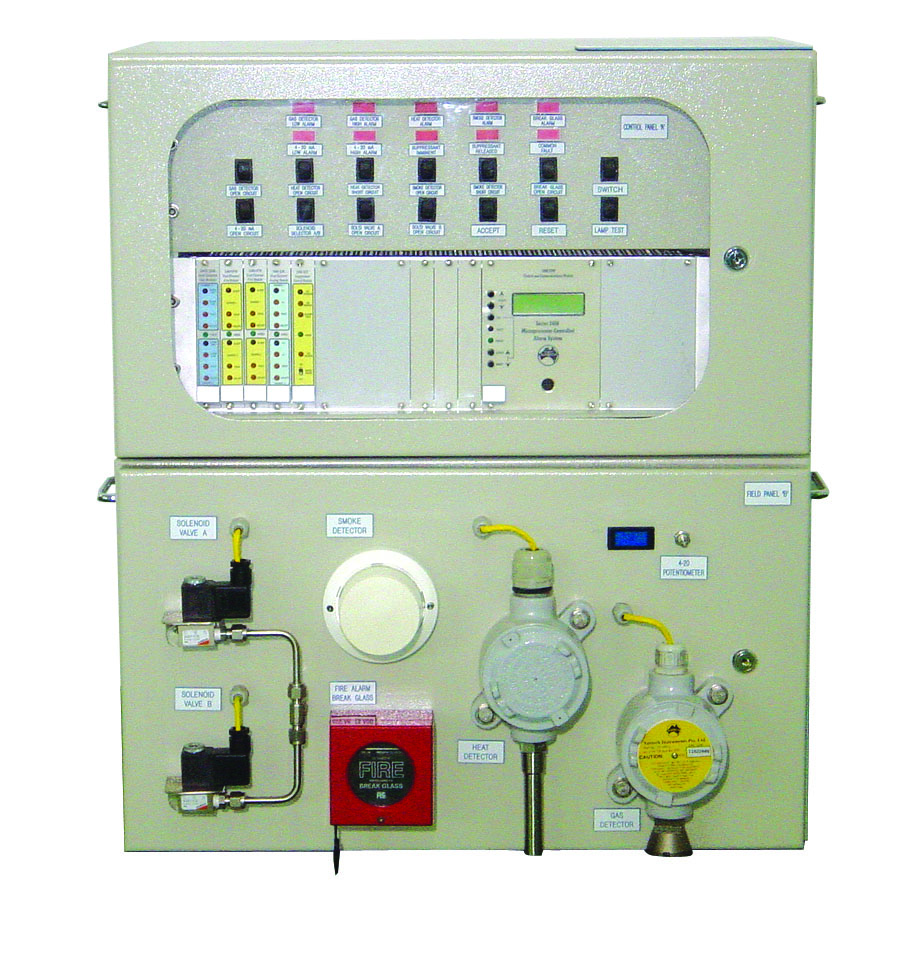
Equipment Name: Fire And Gas Detection System
Model No: SE109
Description: This Fire and Gas Detection System is packaged for classroom training and demonstration in Field devices section and control section.
This unit consists of:
Experimental capabilities:
(1228-15-SE)(8)modify.jpg)
Equipment Name: Demonstration 3-term Controller
Model No: SE200
Click below to see example:Description: This Demonstration 3-Term Controller unit is developed for introducing students to principles of pneumatic 3-term controller. The operations of differential bellows, feedback bellows, nozzle and flapper assembly, pneumatic relay are shown. A pressure process with control valve is included.
This unit consists of:
Experimental capabilities:
.png)
Equipment Name: Process Control Simulator
Model No: SE201
Click below to see example:Description: This Process Control Simulator is designed to provide students with hands-on experience on control techniques. The unit will simulate a process containing three first order lags, two of which are changeable to pure integrators, plus an approximated distance velocity or transport lag. The unit consists of three main elements: the controller, the non-linear unit, and the process trainer unit.
This unit consists of:
Experimental capabilities:
(1184-14-SE)(4)modify.jpg)
Equipment Name: Multi-pump Test Rig
Model No: SE701A-3
Click below to see example:Description: This Multi-Pump Test Rig is designed for demonstrations of the operating characteristics of three different types of pumps. Sensors are included to monitor pump speed, power, pump head and flow rate, enabling students to produce pump characteristics curves.
This unit consists of:
Experimental capabilities:
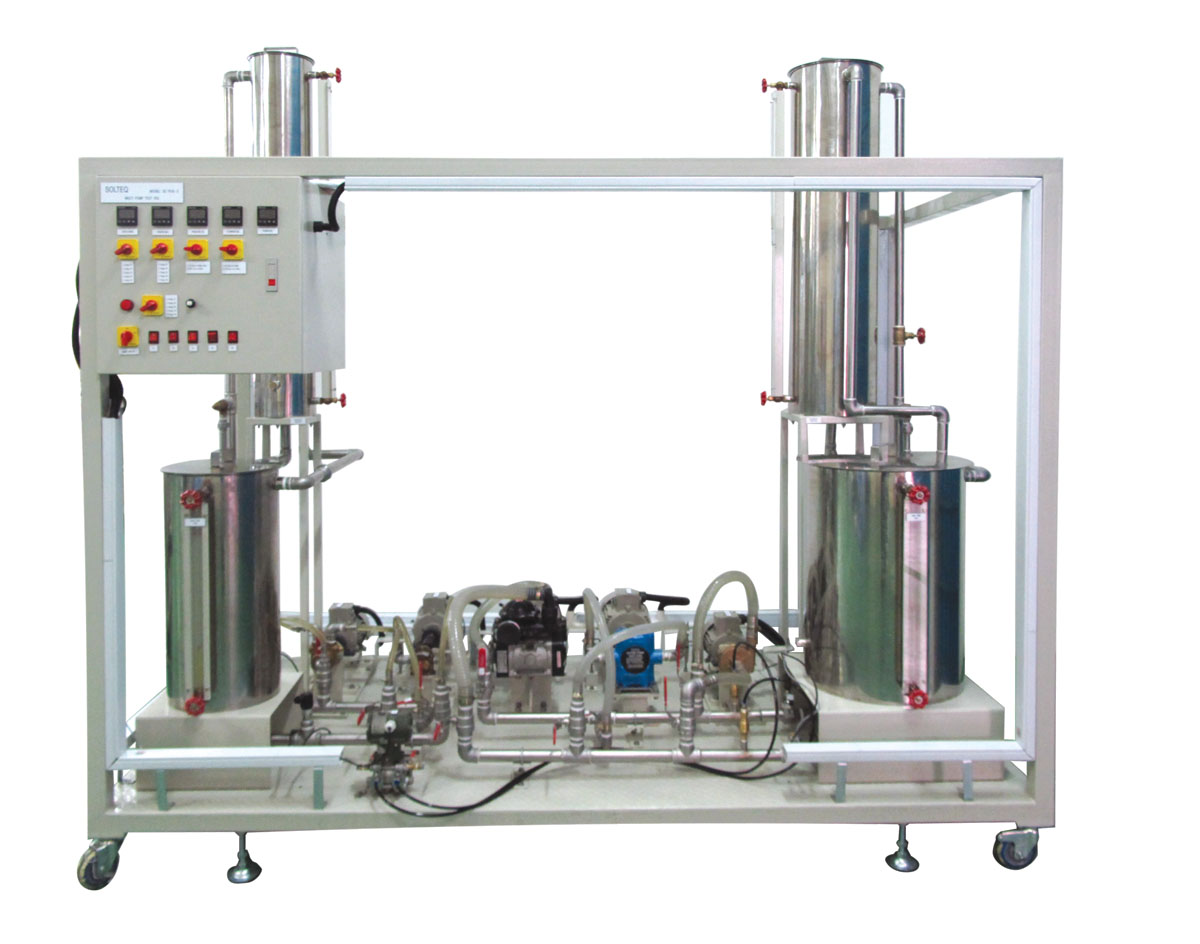
Equipment Name: Multi-pump Test Rig
Model No: SE701B
Click below to see example:Description: This Multi-Pump Test Rig is designed to help students understand the characteristic, performance and application of the various pumps found in the industry. A total of five pumps are presented in this test bed. All pumps are install with a suction and discharge pressure gauge and are permanently mounted to reduce the tedious task of removing, interchanging, retightening, plus the most important aspect of preventing accidents from occurring due to wrong installation and unnecessary losses of downtime in a limited laboratory lesson.
Experimental capabilities:
a) Rotational Speed vs. Volume Flow
b) Motor Input Power vs. Volume Flow
c) Pump Total Heat vs. Volume Flow
d) Pump Power Output vs. Volume Flow
e) Pump Power Input vs. Volume Flow
f) Pump Efficiency vs. Volume Flow
g) Overall Efficiency vs. Volume Flow
a) Rotational Speed vs. Output Pressure
b) Motor Input Power vs. Output Pressure
c) Volume Flow vs. Output Pressure
d) Pump Power Output vs. Output Pressure
e) Pump Power Input vs. Output Pressure
f) Pump Efficiency vs. Output Pressure
g) Overall Efficiency vs. Output Pressure
h) Volumetric Efficiency vs. Output Pressure
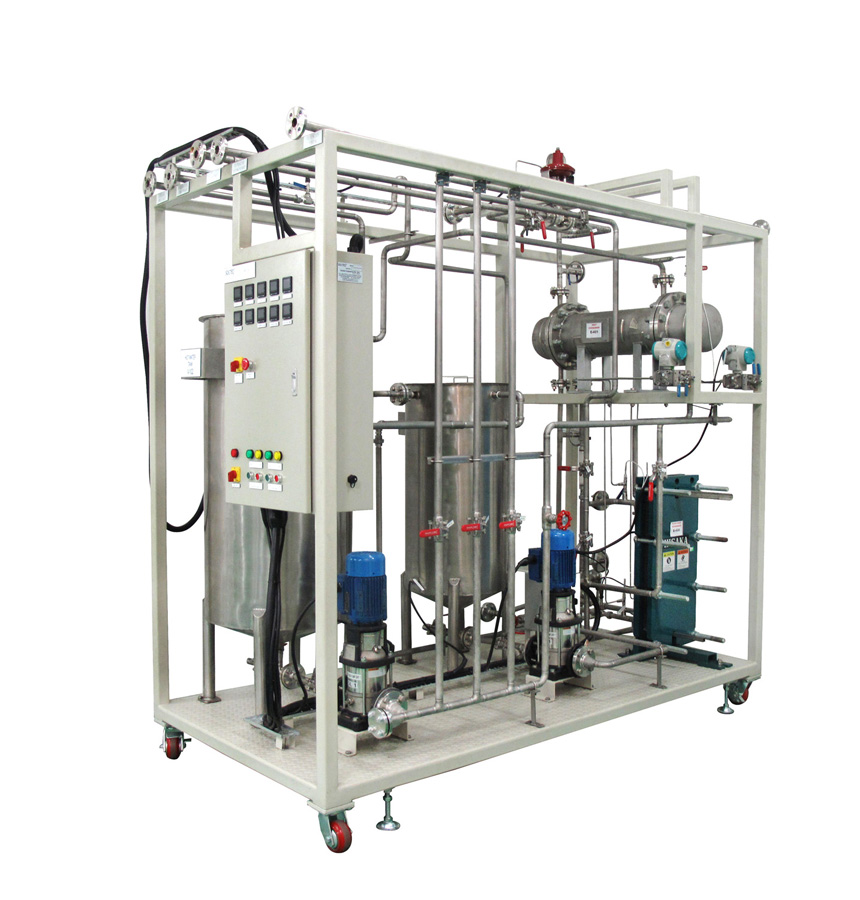
Equipment Name: Biodiesel Chemical Process Pilot Plant
Model No: BP533
Click below to see example:Description: This Biodiesel Chemical Process Pilot Plant is a fully integrated system designed to provide students with basic understanding of a modern technology in converting selected raw materials into some desired chemical products. The pilot-plant consists of individual modules which can be run independently to fulfil some basic learning objectives such as heat transfer, distillation, measurement and control, reactor technology, etc. A typical reaction of converting palm oil into biofuel can be carried out when these modules are integrated and operated as one complete pilot-plant.
This unit consists of:
(1212-15-SE)(38).jpg)
Equipment Name: Francis Turbine Test Rig
Model No: FM30
Click below to see example:Description: This Francis Turbine Test Rig is a bench scale unit designed to allow students to study the characteristics of a Francis type turbine.
This unit consists of:
Experimental capabilities:

Equipment Name: Demonstration Pelton Turbine
Model No: FM41
Description: This Demonstration Pelton Turbine unit provides a simple low cost introduction to turbine performance.
This unit consists of:
Experimental capabilities:
(1328-17-SE)(1).jpg)
Equipment Name: Multi Turbine Test Set (3 Turbines)
Model No: FM46
Click below to see example:Description: This Multi Turbine Test Set (3 Turbines) unit is designed to demonstrate the operation of three types of turbines and their performance characteristics such as mechanical power, hydraulic power, hydraulic efficiency and specific speed. The turbines will be driven by a 3kW pump, together with dynamometer and data acquisition system (Optional).
This unit consists of:
Experimental capabilities:
Operation and performance characteristics of:
Experiments on:
.jpg)
Equipment Name: Axial Flow / Turbine Test Rig
Model No: FM60
Click below to see example:Description: This Axial Flow / Turbine Test Rig is designed to study the performance of a pump/turbine in four different modes of operation.
This unit consists of:
Experimental capabilities:
.jpg)
Equipment Name: Solar Power Cycle Unit
Model No: HE171
Click below to see example:Description: The Solar Power Cycle Unit has been designed to demonstrate the principles of thermodynamics as related to the field of solar energy. Students will be able to study the basic principles of the conversion of solar radiation into thermal energy.
The unit consists of:
Experimental Capabilities:
(1135-14-SE)(5).jpg)
Equipment Name: Solar Energy Demonstration Unit
Model No: HE191
Click below to see example:Description: This Solar Energy Demonstration Unit is designed to demonstrate the principles of thermodynamics related to the field of solar energy. Students will be able to study the basic principles of the conversion of solar radiation into thermal energy.
This unit consists of:
Experimental capabilities:
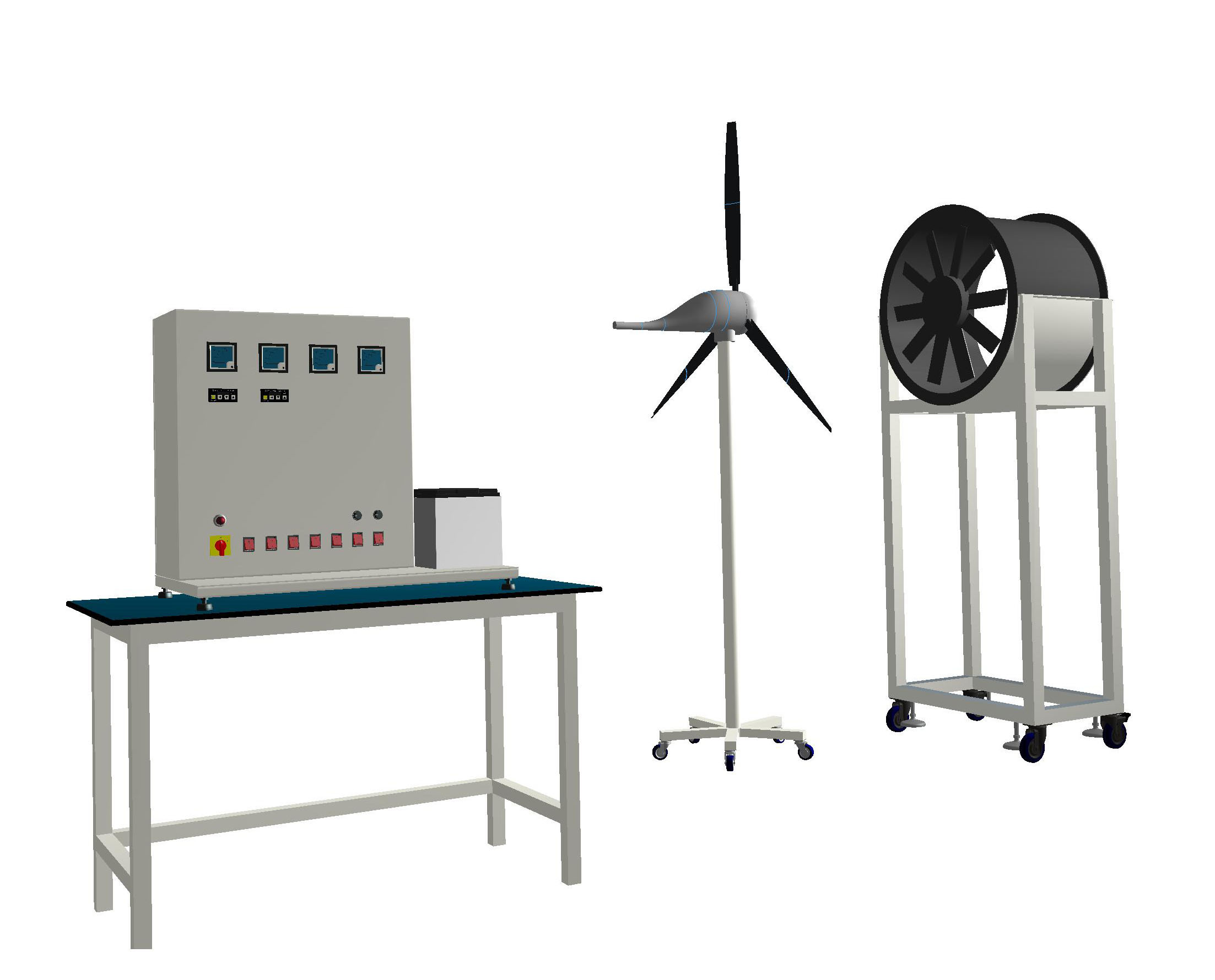
Equipment Name: Wind Power Generation Trainer
Model No: RE02
Click below to see example:Description: This Wind Power Generation Trainer is designed to demonstrate to students not only the working principle of basic wind generation system, but also simulation of a wind generation system for standalone or grid-connected operation.
This unit consists of:
Experimental capabilities:
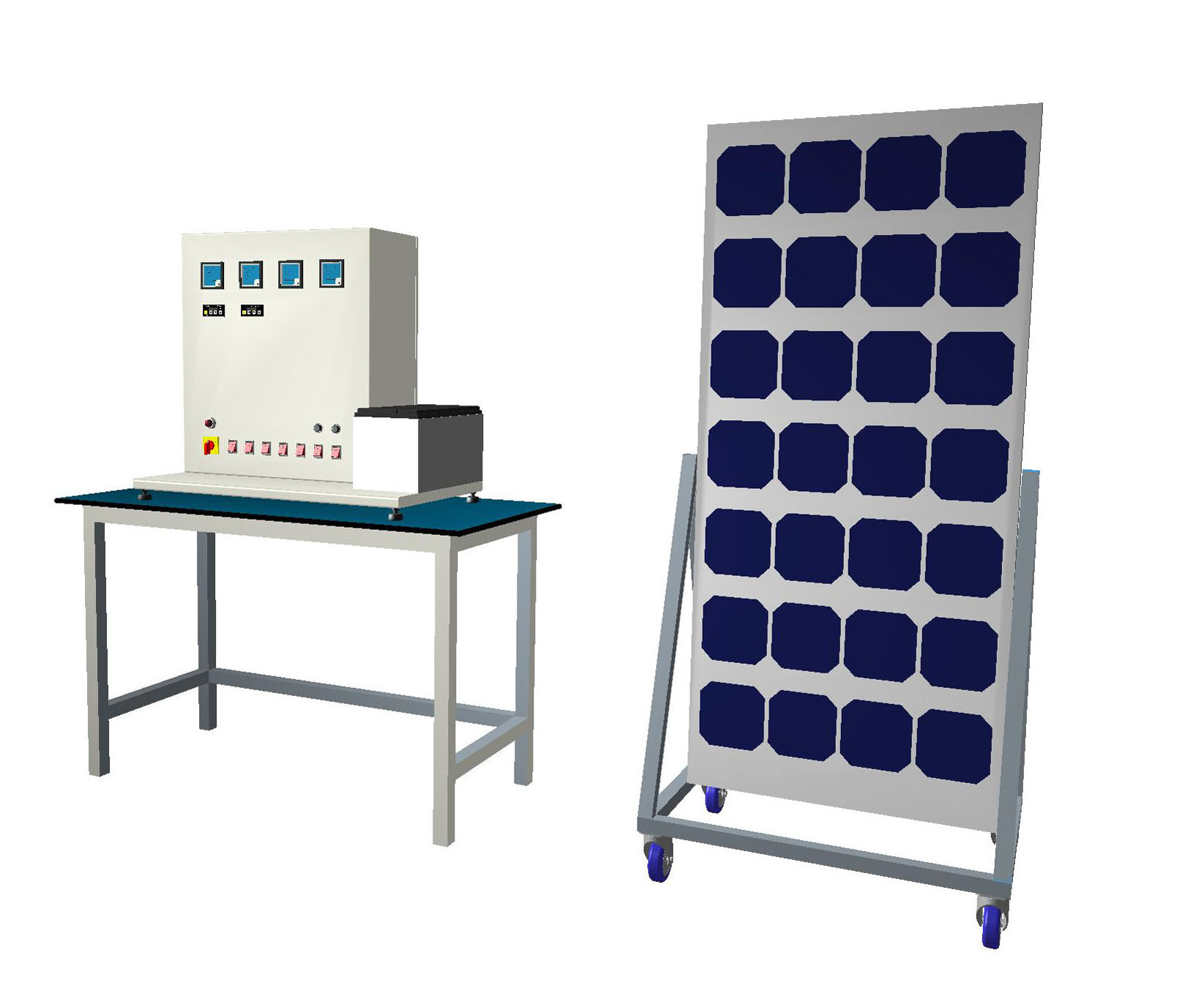
Equipment Name: Solar Photovoltaics Trainer
Model No: RE03
Click below to see example:Description: This Solar Photovoltaic Trainer is used to demonstrate the process of converting light energy to electrical energy using solar panels and the current-voltage characteristics in solar power system.
This unit consists of:
Experimental capabilities:
.jpg)
Equipment Name: Fuel Cell Trainer
Model No: RE04
Click below to see example:Description: This Fuel Cell Trainer is designed to demonstrate the basic working principle of hydrogen fuel cell, which involves the conversion of chemical energy to electrical energy.
This unit consists of:
Experimental capabilities:
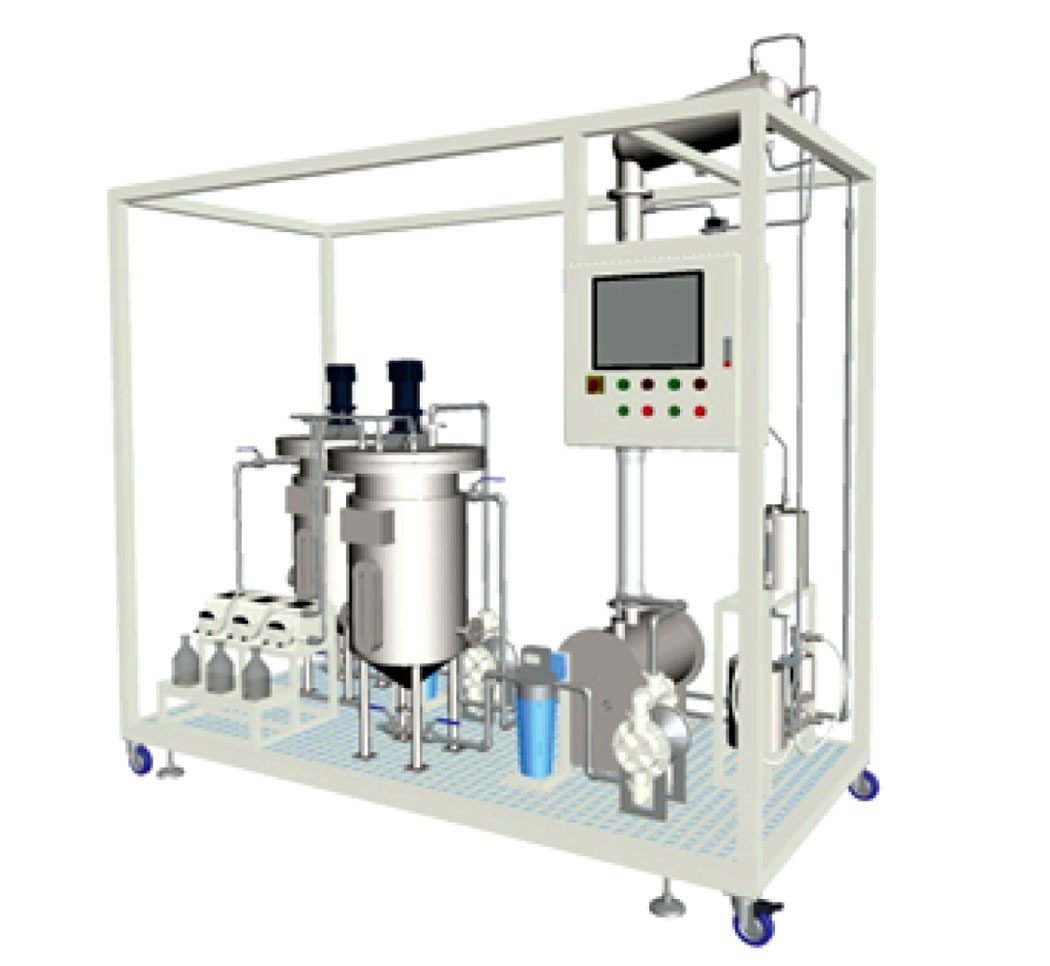
Equipment Name: Bioethanol Pilot Plant
Model No: RE05
Click below to see example:Description: This Bioethanol Pilot Plant is designed to demonstrate the production of bioethanol from fermentation technology, which involves conversion of biomass to useful fuel.
This unit consists of:
Experimental capabilities:

Equipment Name: Biodiesel Chemical Process Pilot Plant
Model No: BP533
Click below to see example:Description: This Biodiesel Chemical Process Pilot Plant is a fully integrated system designed to provide students with basic understanding of a modern technology in converting selected raw materials into some desired chemical products. The pilot-plant consists of individual modules which can be run independently to fulfil some basic learning objectives such as heat transfer, distillation, measurement and control, reactor technology, etc. A typical reaction of converting palm oil into biofuel can be carried out when these modules are integrated and operated as one complete pilot-plant.
This unit consists of:
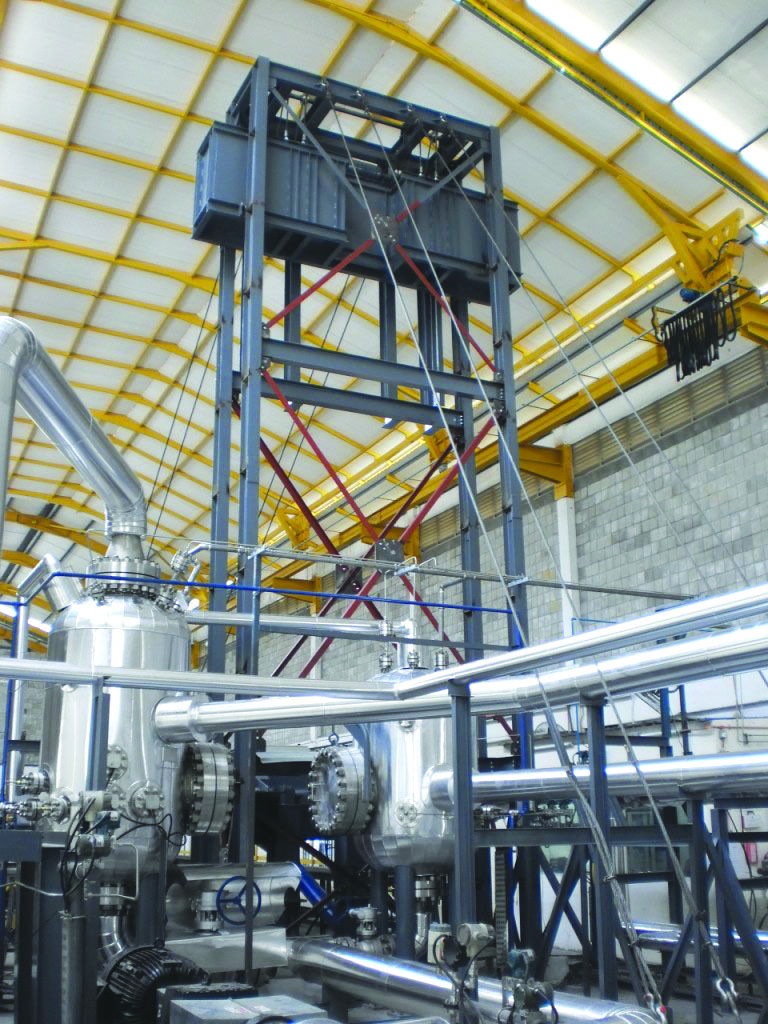
Equipment Name: Large Scale Fully Inclinable Gas Liquid Flow System
Model No: BP590
Click below to see example:Description: This Large Scale Fully Inclinable Gas Liquid Flow System has been designed for the study of flow pattern in a pipe line and corrosion rate of various metal using several combinations of liquid and gas flow rates as well as different concentrations of salt content in liquid (brine) and different compositions of CO2 and N@ in the system. It is a closed loop system with liquid and gases both being recycled. The design allows researcher to vary the gas and liquid flow rates, system pressure, temperature variation and angle of inclination of the main test pipe. Tomography is provided to view the flow pattern of the gas liquid within the test section. Though designed for CO2, n@, water, brine used at this moment, it should be extendable to other fluids with subsequent modifications. This equipment can be used for Research and Development(R&D). It can also be used as a teaching tool to demonstrate the underlying theory of flow pattern and corrosion rate.
.jpg)
Equipment Name: Co-Current Ejector Bubble Column Pilot Plant
Model No: BP780
Click below to see example:Description: This Co-current Ejector Bubble Column Pilot Plant has been specially designed for conducting research on amine absorption of acid gases contained in natural gas. The absorption process is carried out in a co-current contactor using an ejector as the gas suction and dispersion unit. The unit can also be used to study the characteristics of ejectors with both vertical up-flow and down-flow contactor configurations. Complete instrumentations are provided to monitor all process parameters, which are linked to a data acquisition system. A laser visualization system is incorporated in the unit to allow measurements of velocity profiles and bubble characteristics inside the ejector and contactor columns.
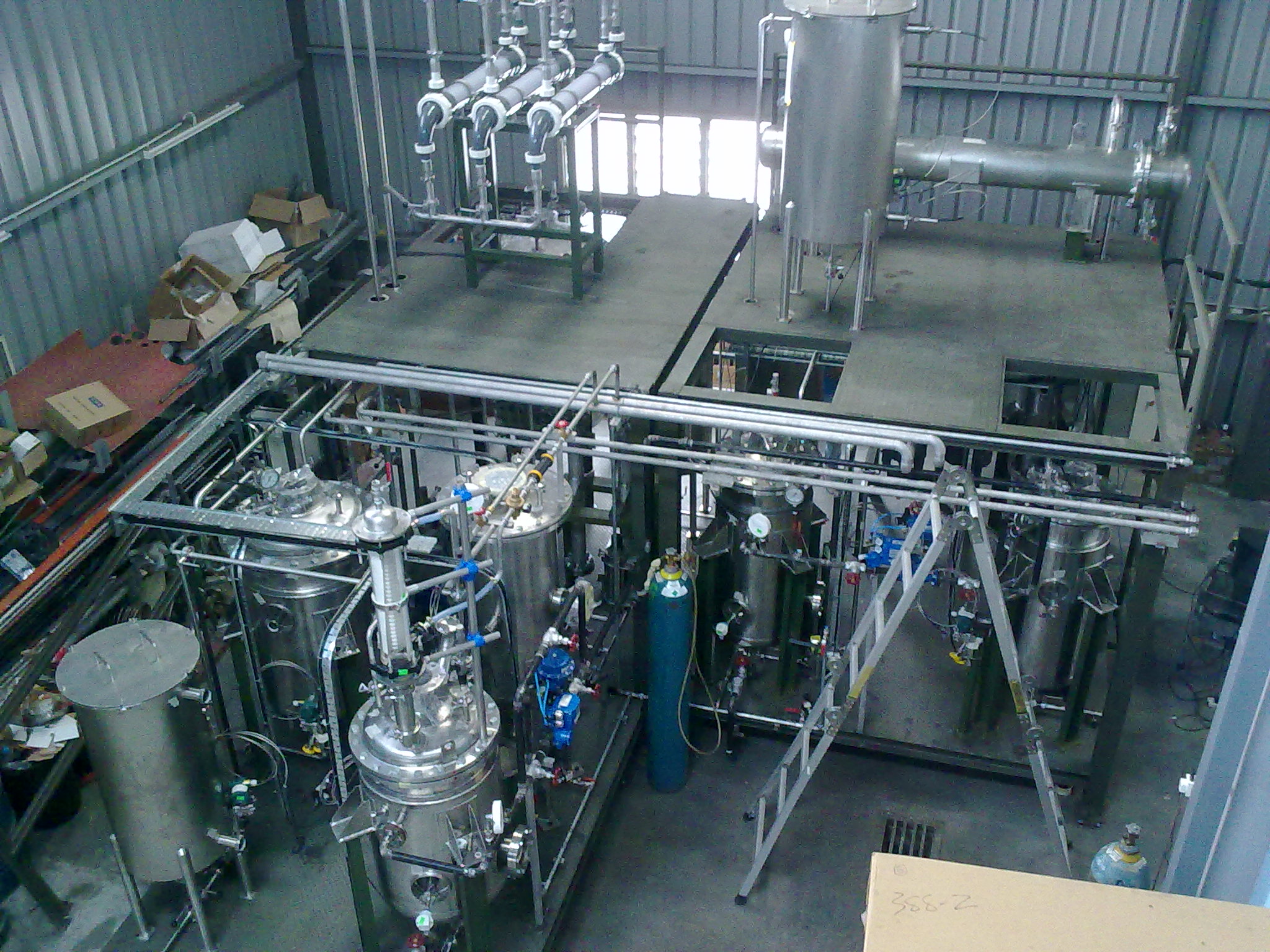
Equipment Name: S-Ibuprofen Production Pilot Plant
Model No: BP988
Click below to see example:Description: This S-Ibuprofen Production Pilot Plant is a floor standing pilot plant for production of high grade S-ibuprofen via enzymatic membrane reactor (MBR) technology. The pilot plant consists of three main processes: the esterification / racemization process, the membrane reaction process and the product purification process. The pilot plant has been designed to synthesize high grade S-ibuprofen at a capacity of approximately 500g per day.
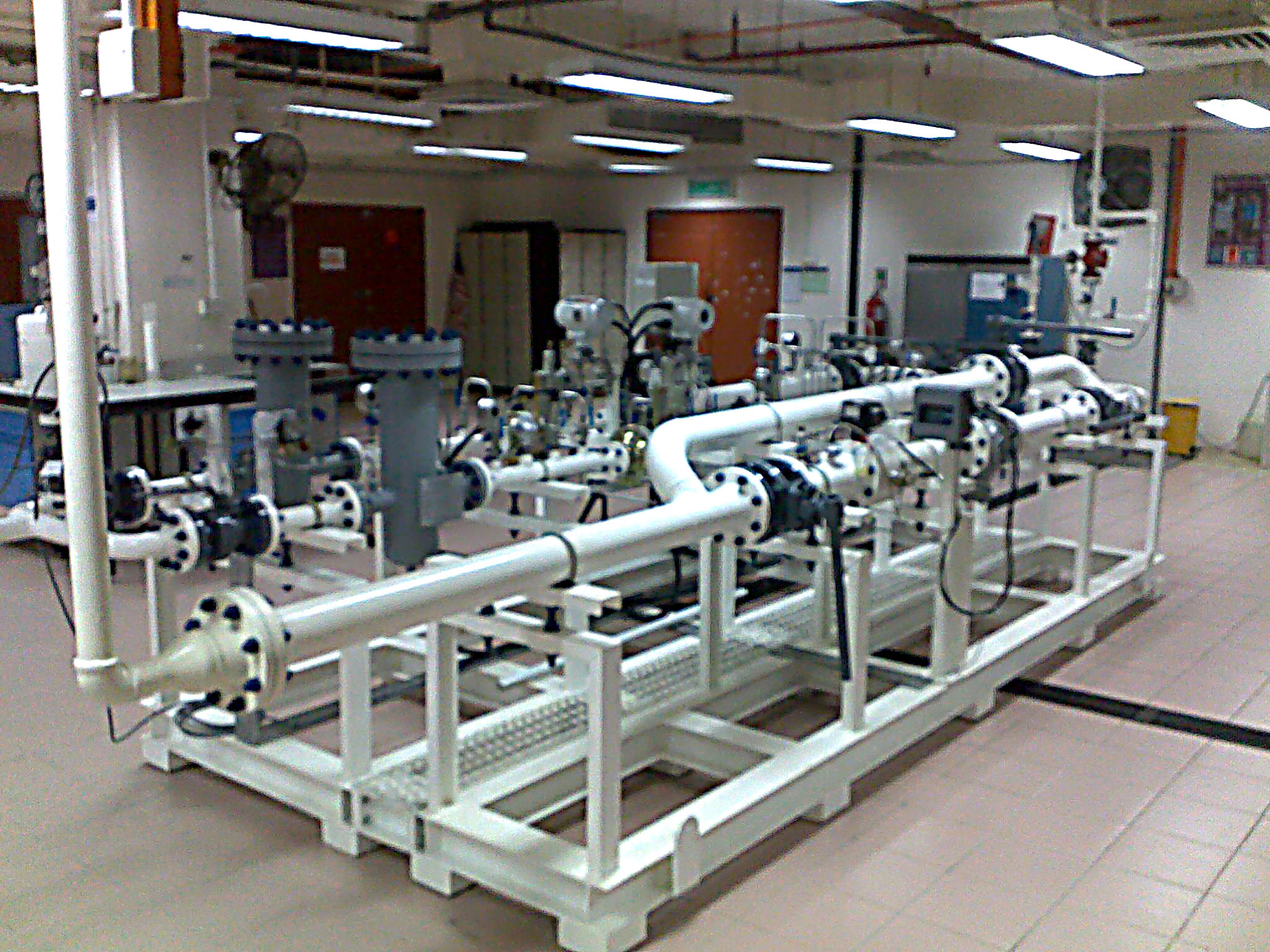
Equipment Name: Gas Metering Plant
Model No: GE01
Click below to see example:Description: This Gas Metering Plant is a specially designed mock-up system for the simulation of actual operating conditions in a natural gas distribution system. It is especially useful for training students and technical personnel on the practical aspects of gas pressure regulation.
This unit consists of:
Experimental capabilities:
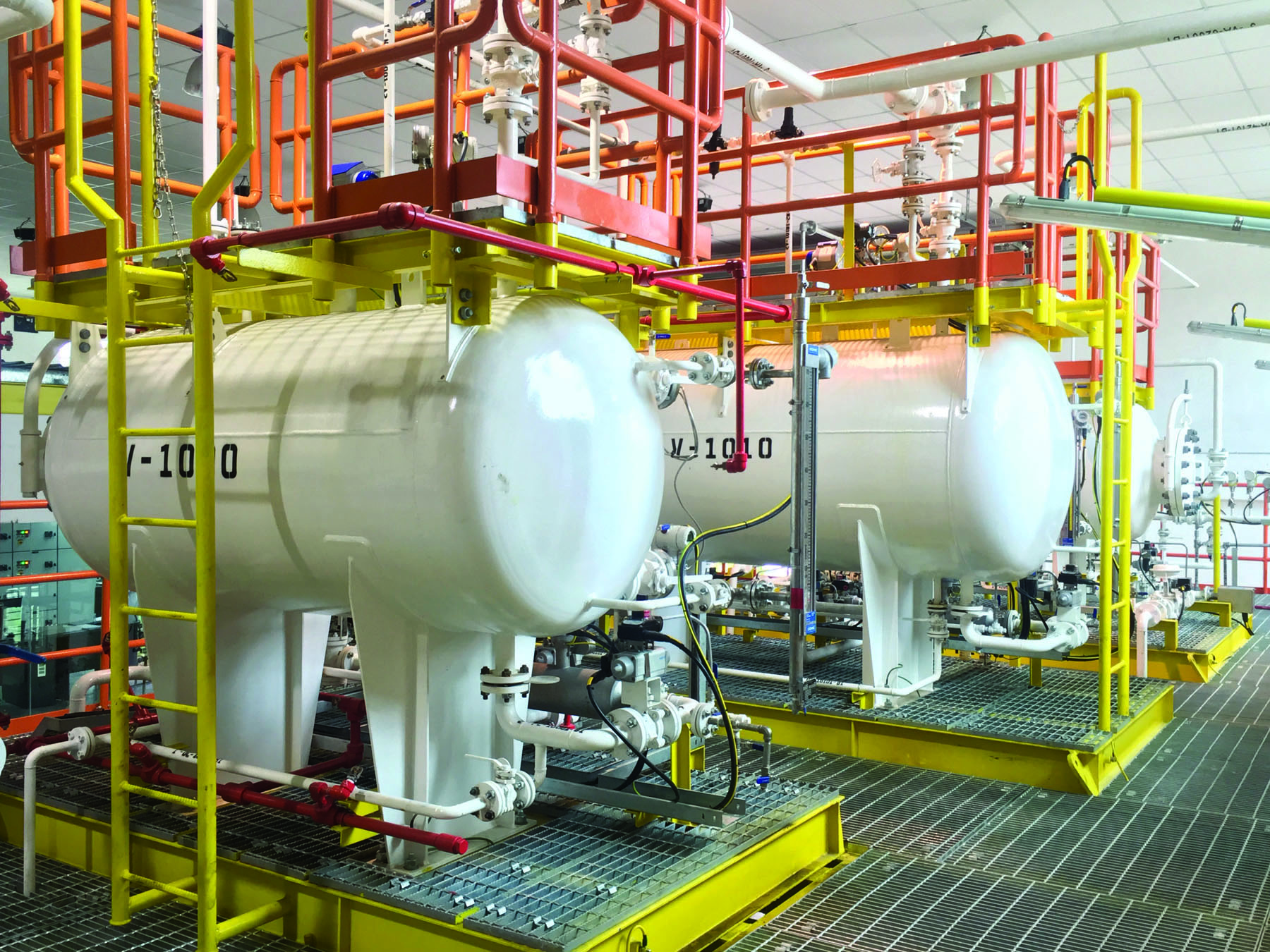
Equipment Name: Oil Production Facilities Training Plant
Model No: OG2000
Click below to see example:Description: The Oil Production Facilities Training Plant consists of production “wells” and wellhead control panel, production and test separators, produced water treatment, closed drain drum and open drain caisson, oil and water storage tanks, and mixing tank. Pigging, water injection facilities, chemical injection, calorifier and fire fighting training systems are also available to furnish the oil and gas production processing facilities. An industrial type Distributed Control System (DCS) is provided to allow for plant monitoring and control to be performed from within a control room. Hands-on training on plant operations and maintenance as well as basic instrumentations and controls can be conducted using this plant. This Production Plant for Educational Training System consists of production “wells” and wellhead control panel, production and test separators, produced water treatment, closed drain drum and open drain caisson, oil and water storage tanks, and gas-liquid mixing facility. Pigging, water injection facilities, chemical injection, membrane type gas separation, training for fire protection and flare systems are also available to furnish the oil and gas production processing facilities. An industrial type Distributed Control System (DCS) is provided to allow for plant monitoring and control to be performed from within a control room. By simulating a three phase processing system with this plant, hands-on trainings can be conducted in many areas including: plant operations and maintenance, instrumentation installation and commissioning, pressure vessel engineering, rotating equipment engineering, process control computer system, control and final element system, plant field instrumentation, plant piping materials, occupational safety and health, fundamental of plant layout, fire fighting system, and fire and gas detection system.
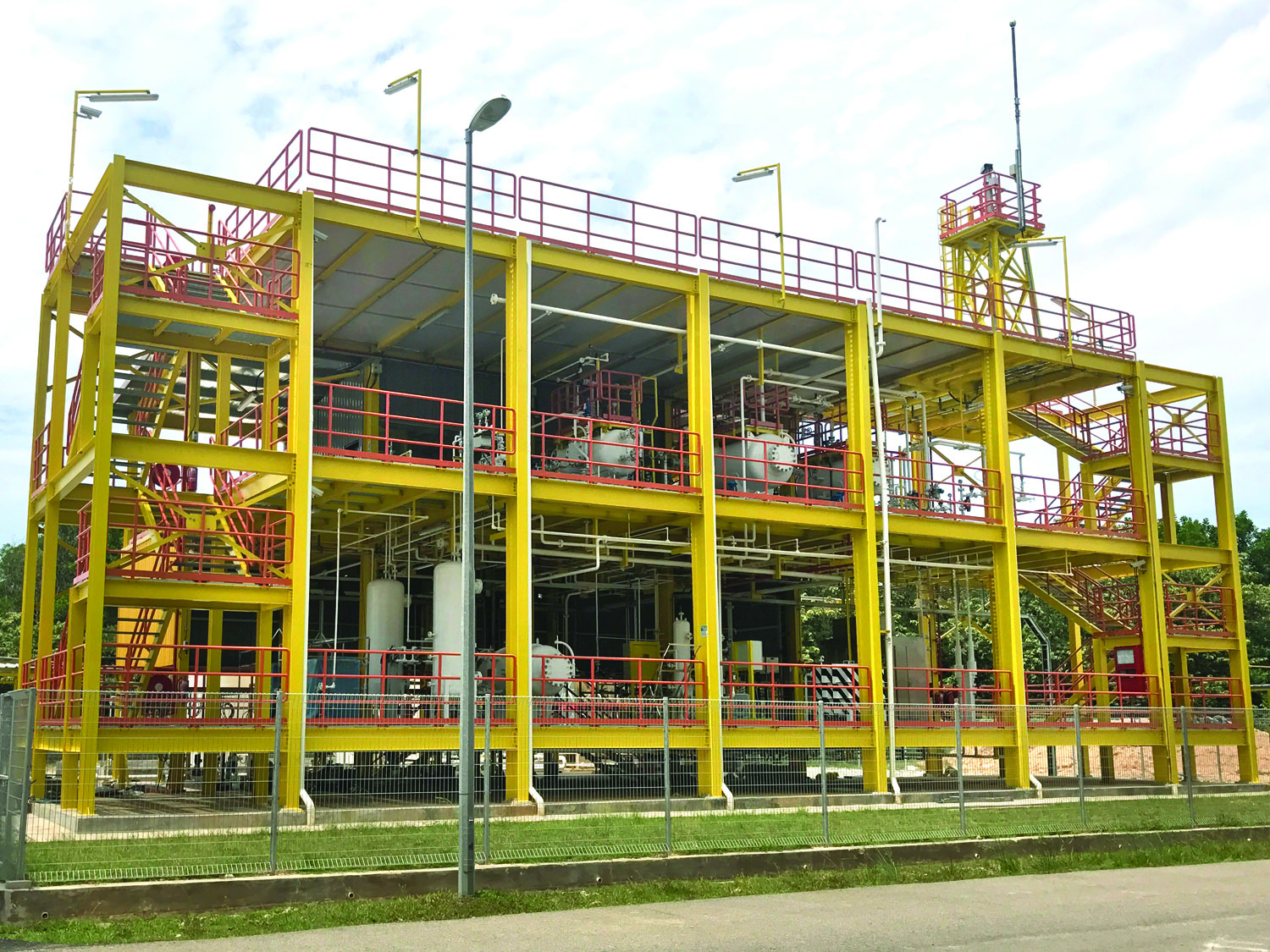
Equipment Name: Production Plant for Educational Training System
Model No: OG3000
Click below to see example:Description: This Production Plant for Educational Training System consists of production “wells” and wellhead control panel, production and test separators, produced water treatment, closed drain drum and open drain caisson, oil and water storage tanks, and gas-liquid mixing facility. Pigging, water injection facilities, chemical injection, membrane type gas separation, training for fire protection and flare systems are also available to furnish the oil and gas production processing facilities. An industrial type Distributed Control System (DCS) is provided to allow for plant monitoring and control to be performed from within a control room. By simulating a three phase processing system with this plant, hands-on trainings can be conducted in many areas including: plant operations and maintenance, instrumentation installation and commissioning, pressure vessel engineering, rotating equipment engineering, process control computer system, control and final element system, plant field instrumentation, plant piping materials, occupational safety and health, fundamental of plant layout, fire fighting system, and fire and gas detection system.
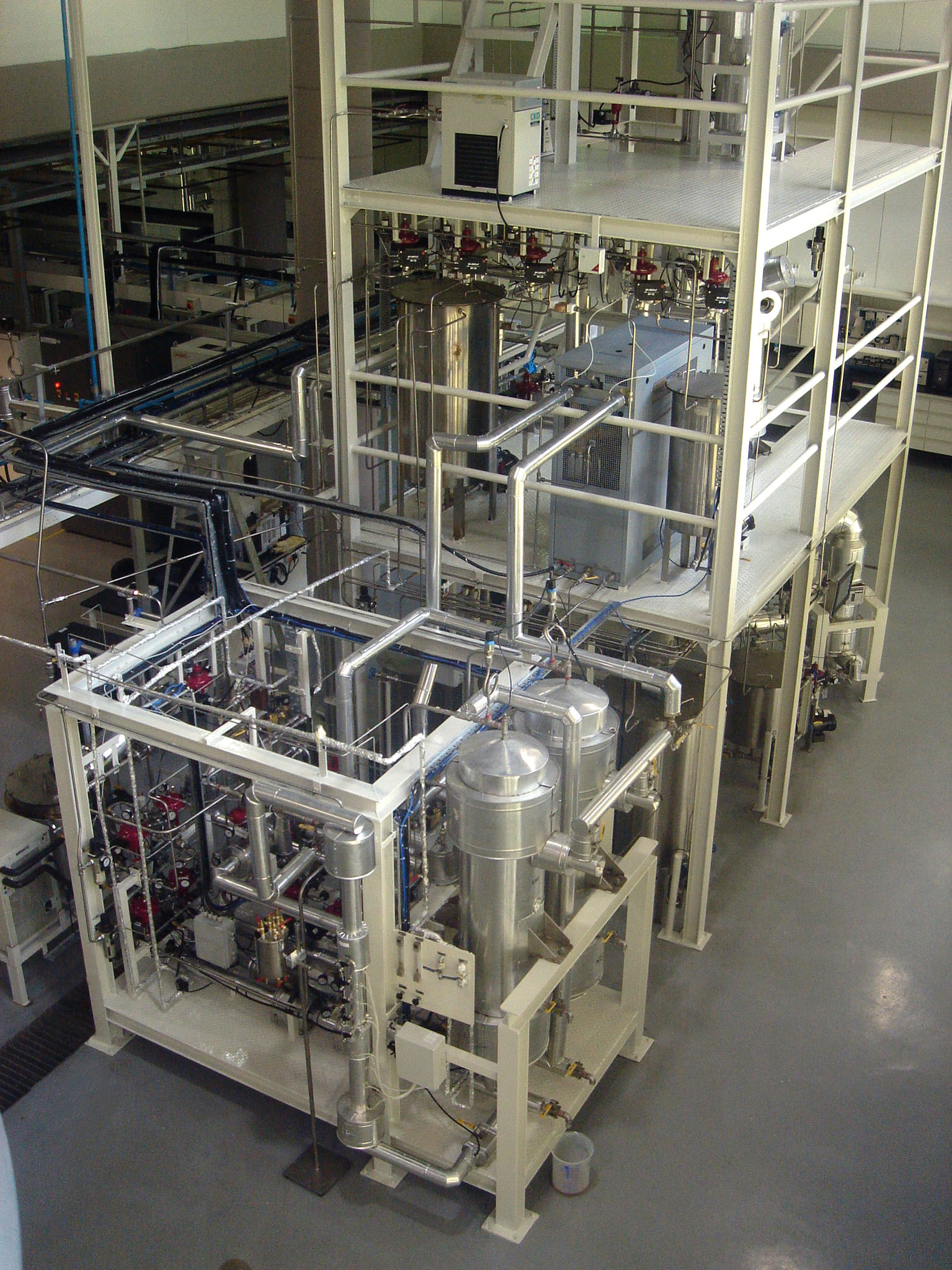
Equipment Name: Distillation Unit & Plant Wide Advanced Process Control Unit
Model No: SE990
Click below to see example:Description: This Plant Wide Advanced Process Control and Distillation Column Unit has been designed for research and training on advanced process control based on realistic reaction and separation processes. The unit consists of two major sub-units: Plant Wide Advanced Process Control Unit, and Fully Instrumented Control Distillation Column. The sub-units are fully compatible with each other to allow for either the Distillation Column be operated independently or both units be operated as a complete system. A comprehensive instrumentation and control system is provided for implementing and developing various advanced process control strategies with high level of flexibility designed for research and training on process control system.
.jpg)
Equipment Name: Continuous Distillation Column with Process Control
Model No: SE999
Click below to see example:Description: This Continuous Distillation Column with Process Control is designed and constructed with the intention of exploring the behavior and performance of various control strategies employed in a distillation process.
This unit consists of:
Experimental capabilities:
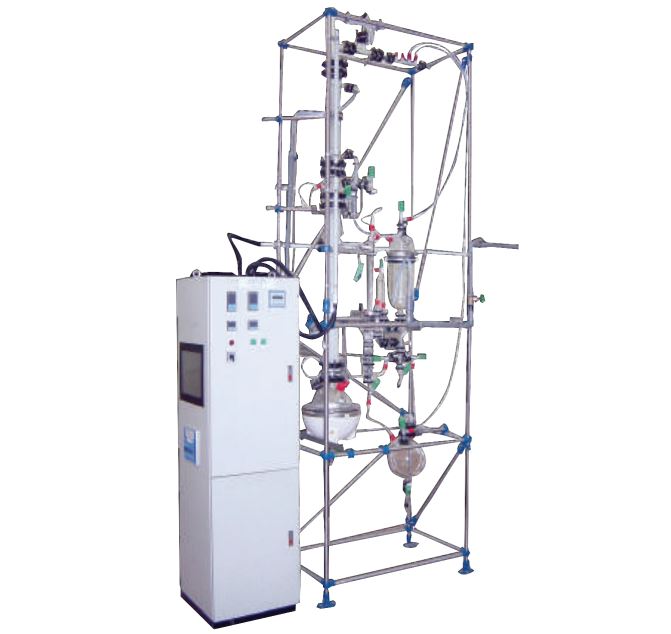
Equipment Name: Solid-Liquid Extraction Unit
Model No: BP04
Click below to see example:Description: Objectives:
Main Components:
Instruments And Control:
RIG:
Framework made of stainless steel tubes with clamps and supports
Capabilities:
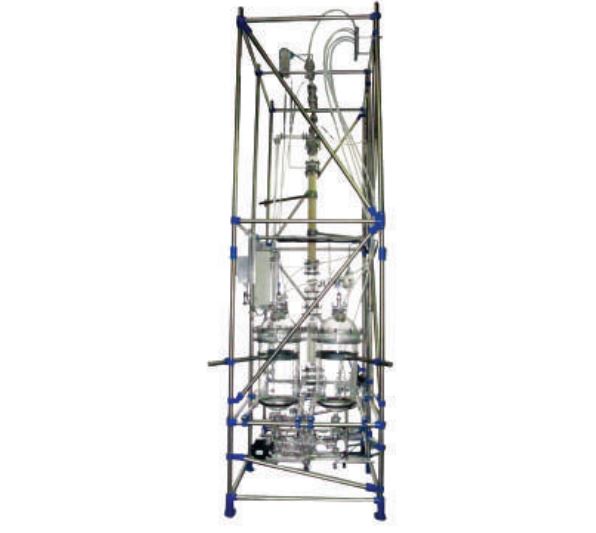
Equipment Name: Gas Absorption Unit
Model No: BP05
Click below to see example:Description: Objective:
Main Components:
Instruments & Control:
Experimental Capabilities:
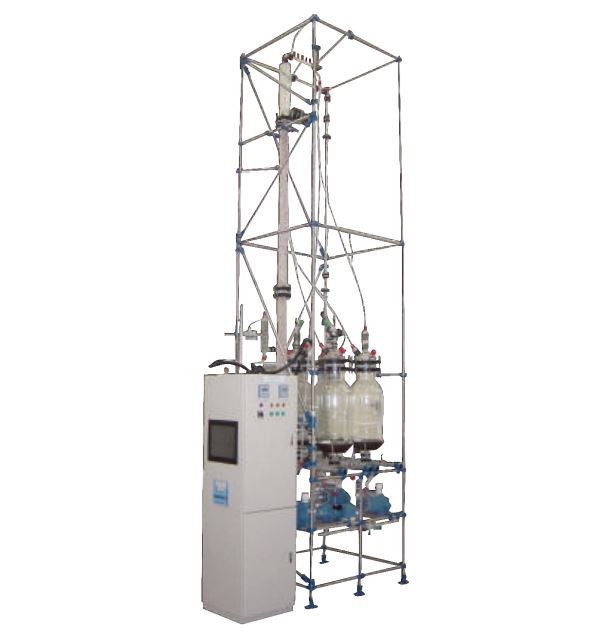
Equipment Name: Pulsed Liquid-liquid Extraction Unit
Model No: BP06
Click below to see example:Description: Objective:
Main Components:
Instruments & Control:
RIG:
Experimental Capabilities:
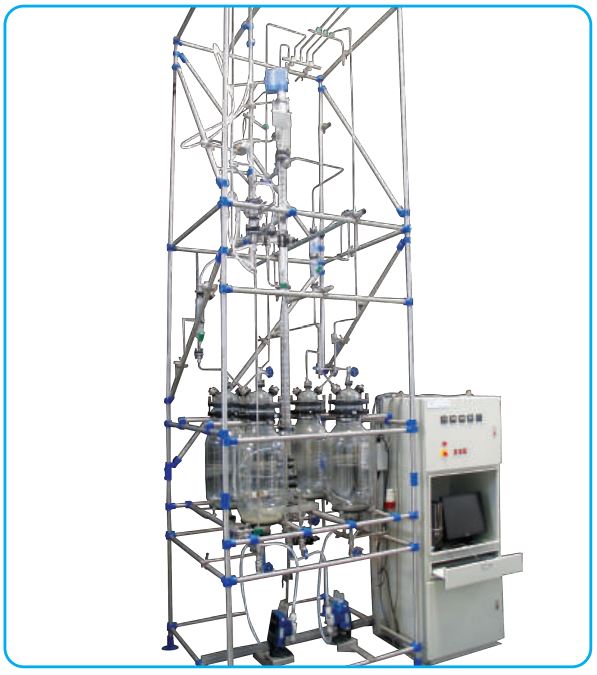
Equipment Name: Rotating Disc Liquid-Liquid Extraction Unit
Model No: BP07
Click below to see example:Description: Objectives:
Main Components:
Instruments & Control:
RIG:
Experimental Capabilities:
Effect of rotation speed on the extraction efficiency
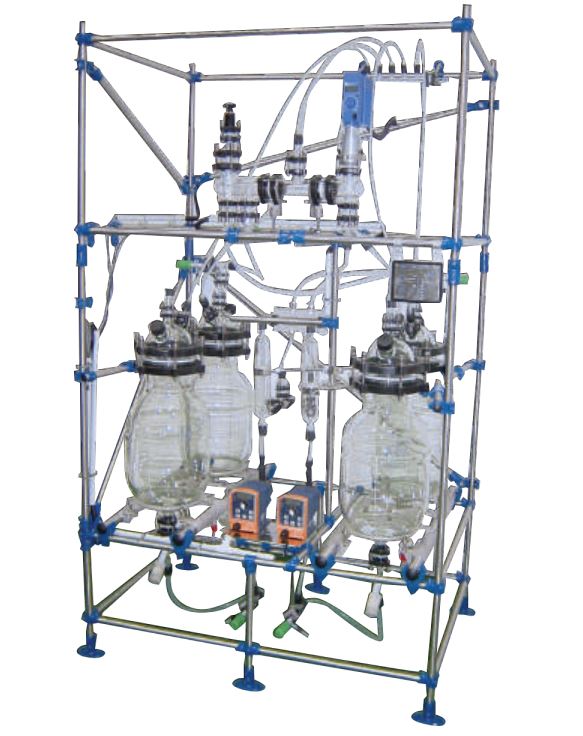
Equipment Name: Single Stage Mixer Settler
Model No: BP13
Click below to see example:Description: Objectives:
Main Components:
Instruments & Control:
Rig:
Experimental Capabilities :
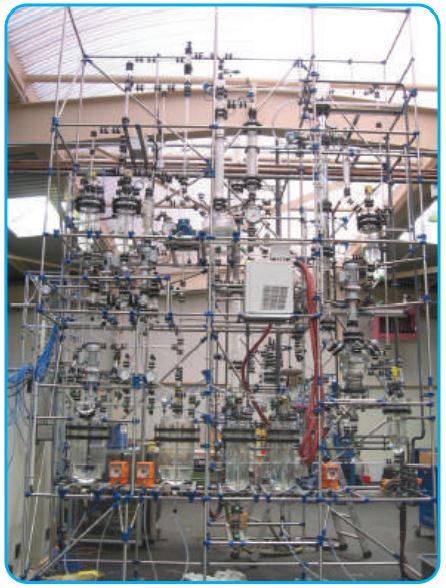
Equipment Name: Combined Teaching And Demonstration Unit
Model No: BP14
Click below to see example:Description: Objectives:
Main Components:
Instruments & Control:
Rig:
Experimental Capabilities:
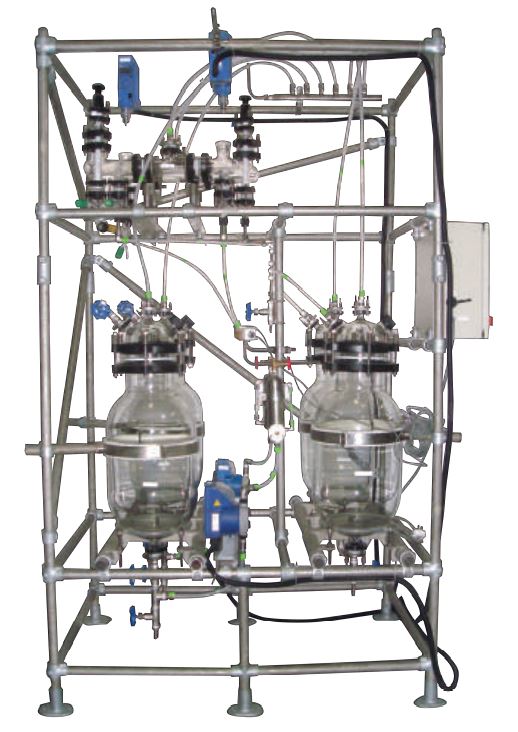
Equipment Name: Two Stage Mixer Settler
Model No: BP15
Click below to see example:Description: Objectives:
Main Components:
Instruments & Control:
Rig:
Experimental Capabilities:
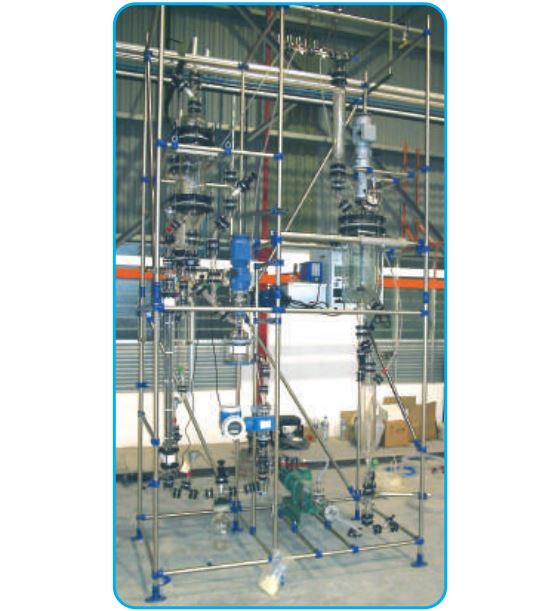
Equipment Name: Crystallisation Unit
Model No: BP120
Click below to see example:Description: Objectives:
Main Components:
Instruments & Control:
Rig:
Experimental Capabilities:
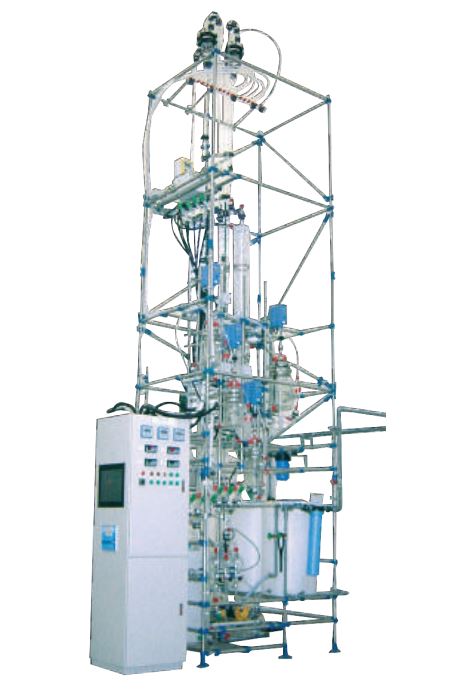
Equipment Name: Reactors Test Rig
Model No: BP140
Click below to see example:Description: Objectives:
Main Components:
Instruments & Control:
Rig:
Experimental Capabilities:
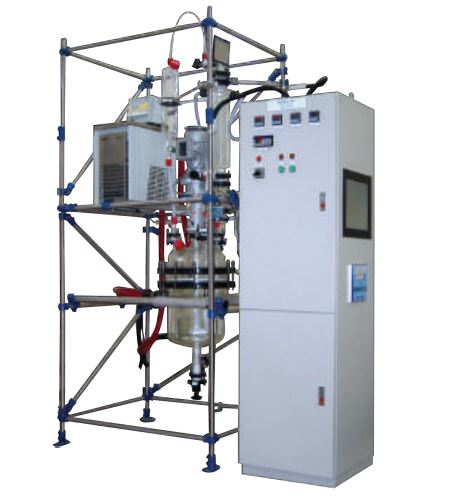
Equipment Name: Batch Reactor
Model No: BP141
Click below to see example:Description: Objective:
Main Components:
Instruments & Control:
Rig:
Experimental Capabilities:
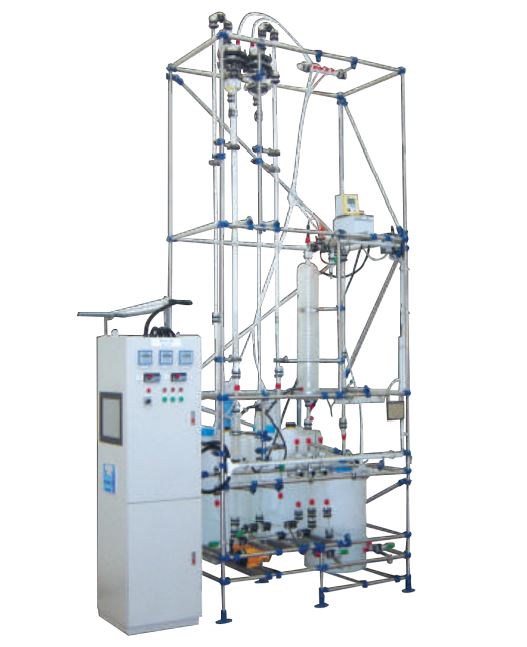
Equipment Name: Plug Flow Reactor
Model No: BP142
Click below to see example:Description: Objective:
Main Components:
Instruments & Control:
Rig:
Experimental Capabilities:
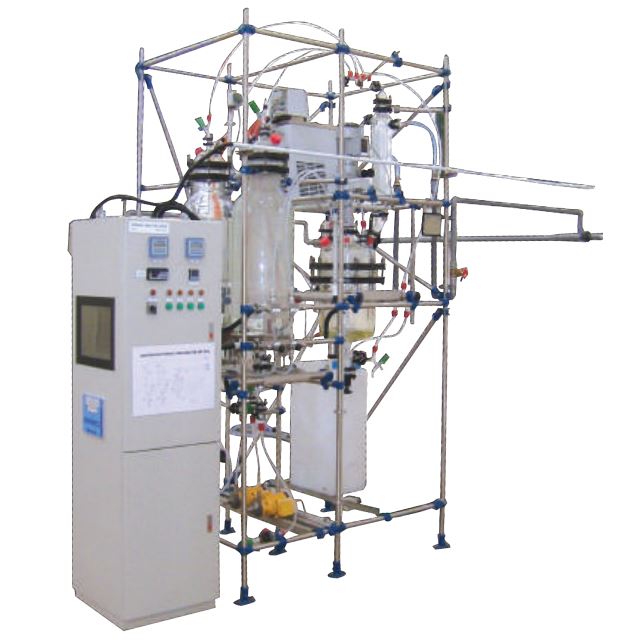
Equipment Name: Continuous Stirred Tank Reactor
Model No: BP143
Description: Objective:
Main Components:
Instruments & Control:
Rig:
Experimental Capabilities:
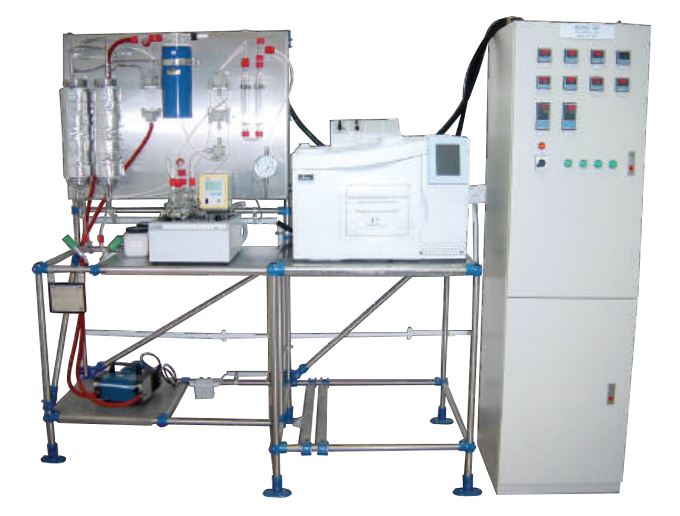
Equipment Name: Adsorption Test Unit
Model No: BP200
Description: Objective:
Main Components:
Instruments & Control:
Rig:
Experimental Capabilities:
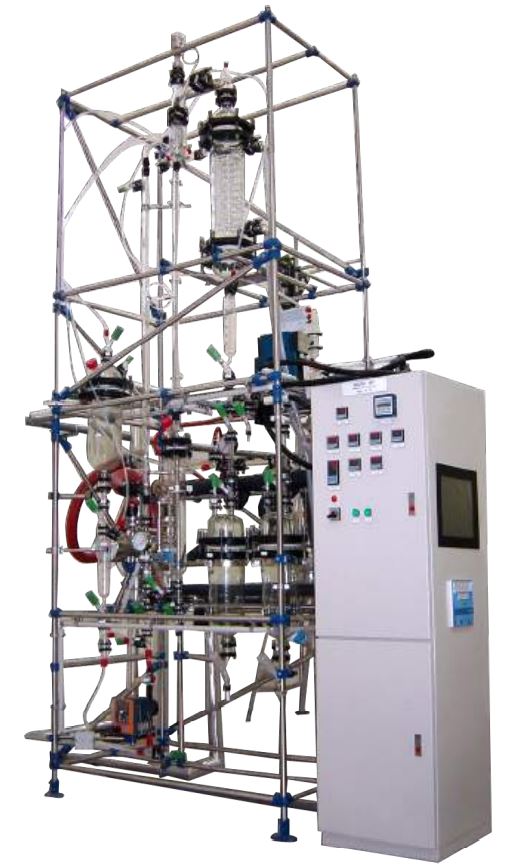
Equipment Name: Climbing Film Pipe Evaporator
Model No: BP210
Click below to see example:Description: Objective:
Main Components:
Instruments & Control:
Rig:
Experimental Capabilities:
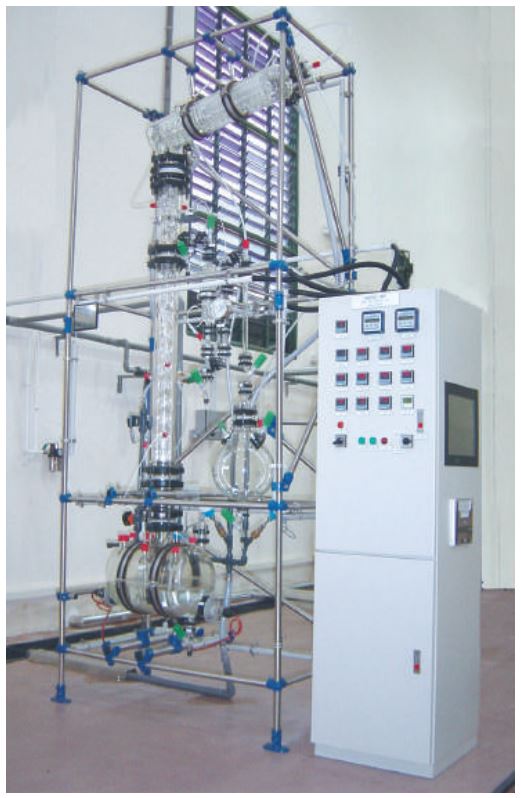
Equipment Name: Batch Sieve Tray Distillation Unit
Model No: BP670
Click below to see example:Description: Objective:
Main Components:
Instruments & Control:
Rig:
Experimental Capabilities:
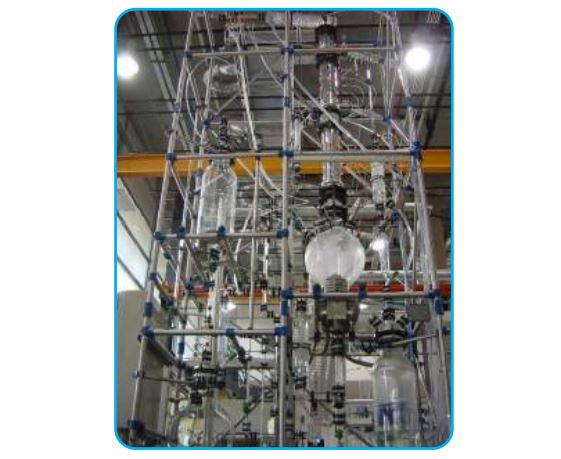
Equipment Name: Continuous Bubble Cap Distillation Unit
Model No: BP681
Click below to see example:Description: Objective:
Main Components:
Instruments & Control:
Rig:
Experimental Capabilities:
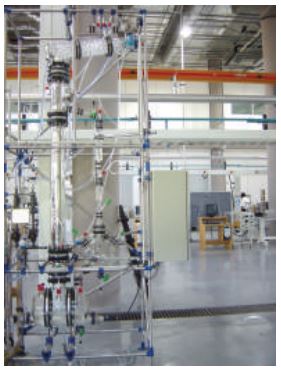
Equipment Name: Batch Packed Distillation Column
Model No: BP690-80
Click below to see example:Description: Objective:
Main Components:
Instruments & Control:
Rig:
Experimental Capabilities:
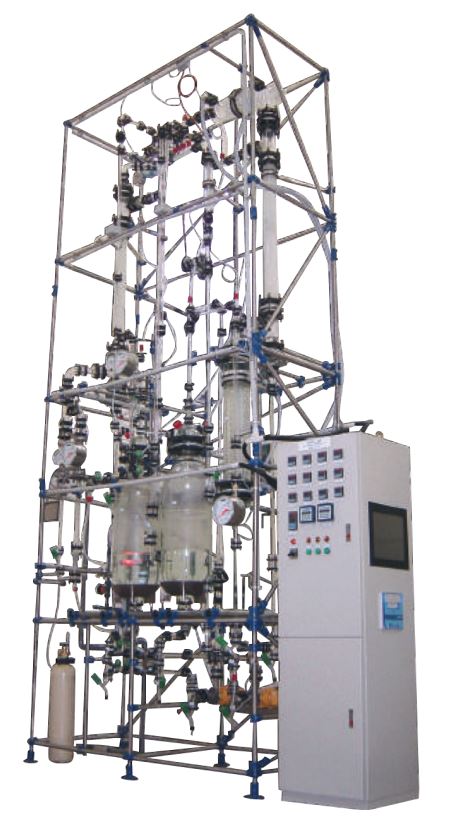
Equipment Name: Gas Absorption-Desorption Unit
Model No: BP770
Click below to see example:Description: Objective:
Main Components:
Instruments & Control:
Rig:
Experimental Capabilities:
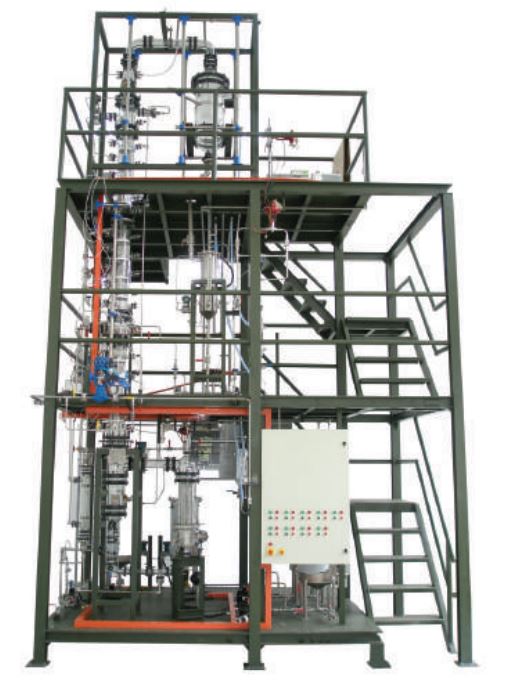
Equipment Name: Continuous Distillation Column with Process Control
Model No: SE999
Click below to see example:Description: This pilot scale Continuous Distillation Column with Process Control has been designed and constructed with the intention of exploring the behaviour and performance of various control strategies that can be employed on a distillation process.
Experimental include:
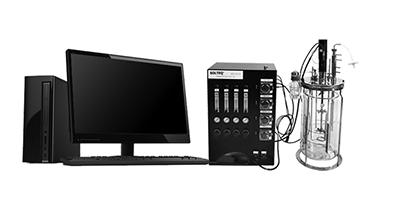
Equipment Name: BLF Series
Model No: BLF Series
Click below to see example:Description: SOLTEQ® Lab-Scale bioreactor and fermenter are manufactured with quality and versatility in mind. They are useful for educational and research where various biochemical reactions and fermentation can be performed, e.g. the aerobic cells culture for cellular or enzymatic immobilisation, and the lactic acid production, etc. The vessels are made of borosilicate glass in volumes ranging from 1-L up to 10-L working volume. These lab-scale bioreactors and fermenters are commonly benchtop and autoclavable. Due to their small footprint, when several units are placed side-by-side, parallel experiments can be carried out for the optimization of growth parameters of the culture or optimization of bio-transformations, etc.
Vessel: 1 to 10-L working volume, glass
Design: benchtop
Autoclavable: Yes
Operations & Control: PC
Full electronic instrumentations (EI)
SOLDAS IR4.0
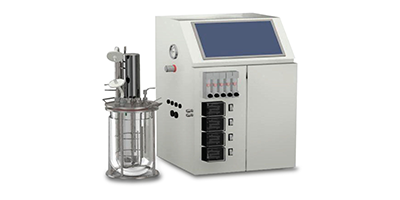
Equipment Name: BLF Series
Model No: BLF Series
Click below to see example:Description: SOLTEQ® Lab-Scale bioreactor and fermenter are manufactured with quality and versatility in mind. They are useful for educational and research where various biochemical reactions and fermentation can be performed, e.g. the aerobic cells culture for cellular or enzymatic immobilisation, and the lactic acid production, etc. The vessels are made of borosilicate glass in volumes ranging from 1-L up to 10-L working volume. These lab-scale bioreactors and fermenters are commonly benchtop and autoclavable. Due to their small footprint, when several units are placed side-by-side, parallel experiments can be carried out for the optimization of growth parameters of the culture or optimization of bio-transformations, etc.
Vessel: 1 to 10-L working volume, glass or stainless steel
Design: benchtop
Autoclavable: Yes
Operations & Control: Touchscreen Panel
Full electronic instrumentations (EI)
SOLDAS IR4.0
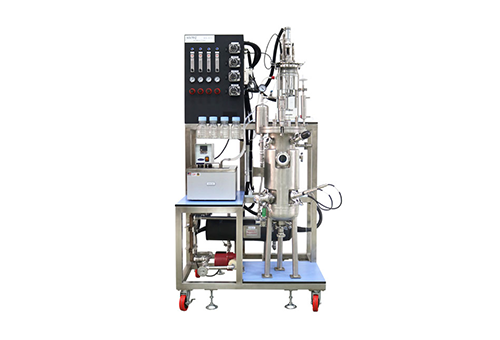
Equipment Name: PLF Series
Model No: PLF Series
Click below to see example:Description: The SOLTEQ® Pilot-Scale (PLF Series) bioreactor and fermenter are flexible and modular in design to suit various processes and applications requiring vessels with working volume ranging from 15-L up to 5,000-L. They come with vessel made of either glass or stainless steel 316 which is ideal for scale-up from lab units to a small scale production batches. Robust and industry standards components and instruments are provided to ensure optimal performance, flexibility and reproducibility. All process parameters (e.g. agitation speed, temperature, pH, etc.) can be accessed and manipulated via the SOLDAS® IR4.0 software installed within the colour touchscreen panel. User may also perform web-based process monitoring and control remotely using a mobile phone, a tablet or a laptop.
Key features of SOLTEQ® PLF Series include:
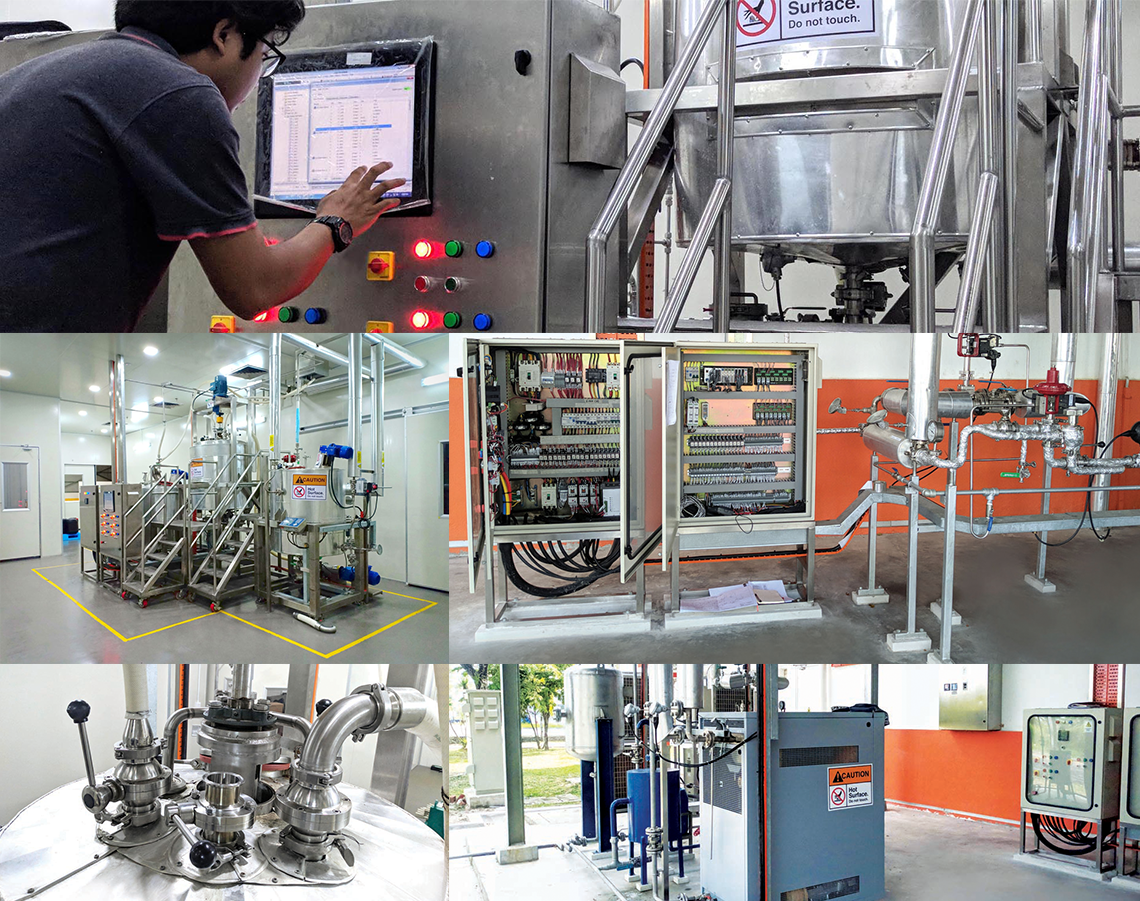
Equipment Name: Process Vessels
Model No: N/A
Description: We offer mobile or stationary process vessels, either single wall or jacketed, for various purposes such as heating, cooling and storage. Vessel design can be customized to specific process requirements such as operating pressure and temperature. These vessels are built according to ASME BPE and cGMP manufacturing standards and guidelines, as well as in compliance with JKKP requirements. Materials of construction are stainless steel 316 (parts in contact with the product), stainless steel 304 (parts not in contact with the product) and FDA approved sealing materials. All vessels have appropriate inner surface finishing as required for various applications in food, biotech or pharmaceutical industries. These vessels may also come with options for cleaning and sterilization in place (CIP, SIP).
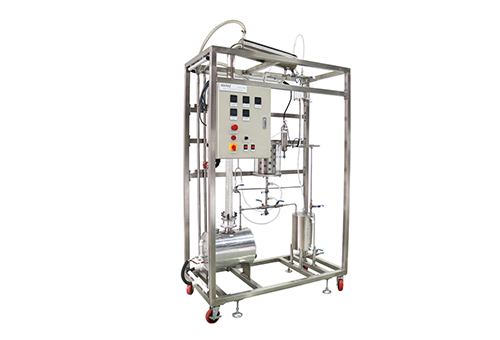
Equipment Name: Solid-Liquid Extraction Unit
Model No: BP40
Click below to see example:Description: Extraction plays a vital role in food processing industries where different types of extraction equipment can be found for processes like extraction of edible oil from oilseeds, extraction of coffee for soluble coffee production, decaffeination of coffee and tea, etc. Other processes include extraction of compounds such as proteins, pectin, vitamins, pigments, essential oils, aroma compounds, flavour compounds etc. from many different materials. The efficiency of the extraction process depends on the selectivity of the commonly used solvent such as typically water, organic solvents (e.g. hexane, methylene chloride, ethyl acetate), alcohol and supercritical CO2. We offer different types of SOLTEQ® extraction equipment as follows:
This Solid-Liquid Extraction Unit has been designed for students demonstration on the extraction process whereby components can be selectively extracted from solid mixtures using a suitable solvent.
Experimental capabilities:

Equipment Name: Solid-Liquid Extraction Unit (Multi-stage)
Model No: BP41
Click below to see example:Description: Extraction plays a vital role in food processing industries where different types of extraction equipment can be found for processes like extraction of edible oil from oilseeds, extraction of coffee for soluble coffee production, decaffeination of coffee and tea, etc. Other processes include extraction of compounds such as proteins, pectin, vitamins, pigments, essential oils, aroma compounds, flavour compounds etc. from many different materials. The efficiency of the extraction process depends on the selectivity of the commonly used solvent such as typically water, organic solvents (e.g. hexane, methylene chloride, ethyl acetate), alcohol and supercritical CO2. We offer different types of SOLTEQ® extraction equipment as follows:
This Solid-Liquid Extraction Unit is designed for student’s demonstration on the extraction process whereby components can be selectively extracted from solid mixtures using a suitable solvent.
Experimental capabilities:
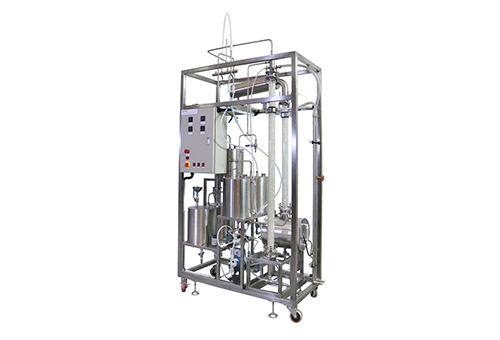
Equipment Name: Liquid-Liquid Extraction Unit (With Solvent Recovery)
Model No: BP60
Click below to see example:Description: Extraction plays a vital role in food processing industries where different types of extraction equipment can be found for processes like extraction of edible oil from oilseeds, extraction of coffee for soluble coffee production, decaffeination of coffee and tea, etc. Other processes include extraction of compounds such as proteins, pectin, vitamins, pigments, essential oils, aroma compounds, flavour compounds etc. from many different materials. The efficiency of the extraction process depends on the selectivity of the commonly used solvent such as typically water, organic solvents (e.g. hexane, methylene chloride, ethyl acetate), alcohol and supercritical CO2. We offer different types of SOLTEQ® extraction equipment as follows:
This Liquid- Liquid Extraction Unit is designed to demonstrate the principles and operation of liquid-liquid extraction and solvent recovery processes. The mobile unit consists of an extraction system and a solvent recovery system.
Experimental capabilities:
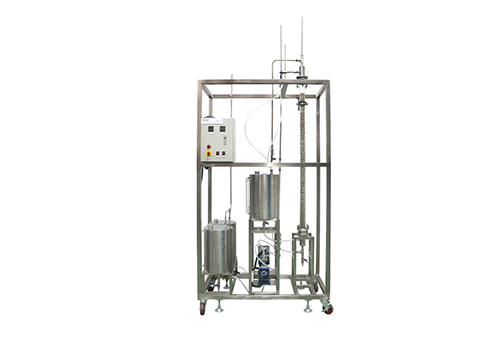
Equipment Name: Liquid-Liquid Extraction Unit (Without Solvent Recovery)
Model No: BP61
Click below to see example:Description: Extraction plays a vital role in food processing industries where different types of extraction equipment can be found for processes like extraction of edible oil from oilseeds, extraction of coffee for soluble coffee production, decaffeination of coffee and tea, etc. Other processes include extraction of compounds such as proteins, pectin, vitamins, pigments, essential oils, aroma compounds, flavour compounds etc. from many different materials. The efficiency of the extraction process depends on the selectivity of the commonly used solvent such as typically water, organic solvents (e.g. hexane, methylene chloride, ethyl acetate), alcohol and supercritical CO2. We offer different types of SOLTEQ® extraction equipment as follows:
This Liquid- Liquid Extraction Unit is designed to demonstrate the principles and operation of liquid-liquid extraction process. The mobile unit consists of an extraction system without a solvent recovery system.
Experimental capabilities:
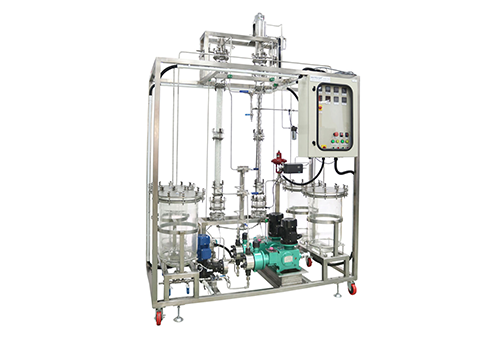
Equipment Name: Extraction Process Training Skid
Model No: BP68
Click below to see example:Description: Extraction plays a vital role in food processing industries where different types of extraction equipment can be found for processes like extraction of edible oil from oilseeds, extraction of coffee for soluble coffee production, decaffeination of coffee and tea, etc. Other processes include extraction of compounds such as proteins, pectin, vitamins, pigments, essential oils, aroma compounds, flavour compounds etc. from many different materials. The efficiency of the extraction process depends on the selectivity of the commonly used solvent such as typically water, organic solvents (e.g. hexane, methylene chloride, ethyl acetate), alcohol and supercritical CO2. We offer different types of SOLTEQ® extraction equipment as follows:
This SOLTEQ® Extraction Process Training Skid is a lab-scale process skid capable of carrying out liquid-liquid extraction process on partially mixable components, with the choice of using a rotating disc contactor (RDC) column or a packed column with Raschig rings. This counter-current separation process will typically form an interface level which can be observed and set around a desired height in the column, with the help of a control valve. The unit operates on a single pass without a solvent recovery system.
Experimental capabilities:
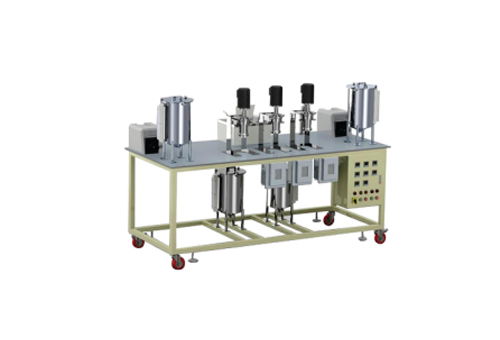
Equipment Name: Liquid-Liquid Extraction Unit (3-Stage Centrifugal)
Model No: BP69
Click below to see example:Description: Extraction plays a vital role in food processing industries where different types of extraction equipment can be found for processes like extraction of edible oil from oilseeds, extraction of coffee for soluble coffee production, decaffeination of coffee and tea, etc. Other processes include extraction of compounds such as proteins, pectin, vitamins, pigments, essential oils, aroma compounds, flavour compounds etc. from many different materials. The efficiency of the extraction process depends on the selectivity of the commonly used solvent such as typically water, organic solvents (e.g. hexane, methylene chloride, ethyl acetate), alcohol and supercritical CO2. We offer different types of SOLTEQ® extraction equipment as follows:
The SOLTEQ® Centrifugal Extraction Unit is suitable for teaching and research on purification of food products using liquid-liquid extraction. The unit consists of three sets of centrifugal separators that use centrifugal force to separate two immiscible liquids of different densities. The light phase and heavy phase liquids enter the separator counter currently from one stage to another. A heating circulation system is provided for pre-heating the liquid streams prior to entering the separator whenever required. Instruments are also provided with the unit for the purpose of process monitoring and control.
Experimental capabilities:
i) viscosity and density of the two liquid phases
ii) temperature of the two liquid phases
iii) input ratio of the two liquid phases
iv) total flow rate
v) rotor speed (RPM)
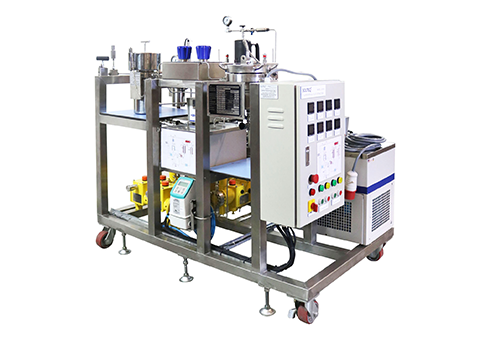
Equipment Name: Supercritical Fluid Extraction
Model No: BP180
Click below to see example:Description: Extraction plays a vital role in food processing industries where different types of extraction equipment can be found for processes like extraction of edible oil from oilseeds, extraction of coffee for soluble coffee production, decaffeination of coffee and tea, etc. Other processes include extraction of compounds such as proteins, pectin, vitamins, pigments, essential oils, aroma compounds, flavour compounds etc. from many different materials. The efficiency of the extraction process depends on the selectivity of the commonly used solvent such as typically water, organic solvents (e.g. hexane, methylene chloride, ethyl acetate), alcohol and supercritical CO2. We offer different types of SOLTEQ® extraction equipment as follows:
Supercritical Fluid Extraction (SFE) is the process of extracting component from powdered solid using supercritical fluids as the extracting solvent. SFE process, on a small or large scale, can be effectively used to either strip unwanted material from a product (e.g. decaffeination) or collect a desired product (e.g. essential oils). Carbon dioxide (CO2) is the most used supercritical fluid, sometimes modified by co-solvents such as ethanol or methanol. Extraction conditions for supercritical carbon dioxide are above the critical temperature of 31 °C and critical pressure of 74 bar.
Our SOLTEQ® SFE unit comes with extraction vessel from 300 to 1,000 ml in size and operates between 100 to 500 bar pressure.
Experimental capabilities:
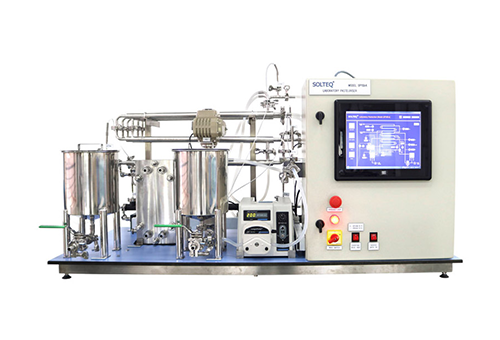
Equipment Name: Laboratory Pasteuriser
Model No: BP159-A
Click below to see example:Description: Clean-in-place (CIP) system is used for automatic cleaning of the interior surfaces of pipes, vessels, process equipment, filters and associated fittings, without disassembly. CIP system is crucial for industries that requires high levels of hygiene, and include: dairy, beverage, brewing, processed foods, pharmaceutical, and cosmetics. The benefits of SOLTEQ® CIP system to industries include faster cleaning, less labour-intensive and more repeatable, and poses less of a chemical exposure risk. Options include fully automated systems with programmable logic controllers, multiple balance tanks, sensors, valves, heat exchangers, data acquisition and specially designed spray nozzle systems. Sterilisation-in-Place (SIP) uses superheated steam to sterilise some mobile vessels or production equipment without prior disassembly. SOLTEQ® SIP system is particularly useful in areas where germ reduction plays a decisive role, e.g. biotechnology or the food industry. As an optional final step of the cleaning process, steam sterilisation usually takes place after the CIP.
This Laboratory Pasteuriser is a self-contained miniature-scale HTST (High-Temperature Short-Time) unit which allows testing on effects of heat processing on product quickly and economically. The HTST pasteurisation process use very small quantities of product in relatively short time. Products that can be pasteurised include raw milk, nectars, fruit juices, skimmed milk, ice-cream mix, soft drinks, pharmaceuticals and margarine emulsion.
Experimental capabilities:
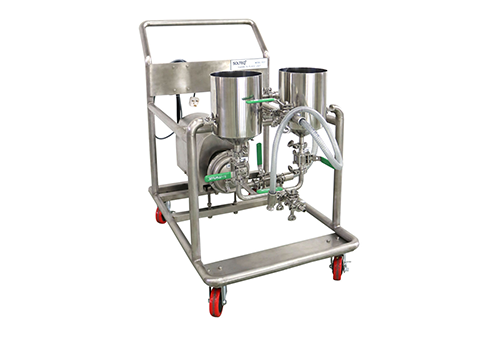
Equipment Name: Cleaning-in-Place (CIP) Unit
Model No: FD17
Click below to see example:Description: Clean-in-place (CIP) system is used for automatic cleaning of the interior surfaces of pipes, vessels, process equipment, filters and associated fittings, without disassembly. CIP system is crucial for industries that requires high levels of hygiene, and include: dairy, beverage, brewing, processed foods, pharmaceutical, and cosmetics. The benefits of SOLTEQ® CIP system to industries include faster cleaning, less labour-intensive and more repeatable, and poses less of a chemical exposure risk. Options include fully automated systems with programmable logic controllers, multiple balance tanks, sensors, valves, heat exchangers, data acquisition and specially designed spray nozzle systems. Sterilisation-in-Place (SIP) uses superheated steam to sterilise some mobile vessels or production equipment without prior disassembly. SOLTEQ® SIP system is particularly useful in areas where germ reduction plays a decisive role, e.g. biotechnology or the food industry. As an optional final step of the cleaning process, steam sterilisation usually takes place after the CIP.
This Clean-In-Place (CIP) Unit is a mobile cleaning unit designed to complement other SOLTEQ® process units requiring sterilization before and after use.
Experimental capabilities:

Equipment Name: Oil Neutraliser-Washer-Bleacher
Model No: BP515
Click below to see example:Description: Edible oils purchased in stores are known as "RBD" oils, i.e. oils that have been Refined, Bleached and Deodorised. Processing of edible oils is often broken into the three RBD categories: refining, bleaching and deodorising. Refining of oils may include neutralisation of fatty acids, removal of phospholipids (a compound containing phosphorous), and filtering of the oil. Bleaching removes the oil components that increase the rate of oxidation. When oil is used at high temperatures, for example when pan frying or deep-fat frying, oxidation is accelerated and the oil may develop undesirable characteristics such as off flavour or dark colour quickly. Bleaching allows the oil to be used for a longer period of time before these undesirable characteristics occur. Deodorising removes all of the unwanted components (vitamins, fatty acids, protein fragments, traces of pesticides and heavy metals, etc.) from the oil, leaving it flavourless and odourless, essentially the same as other oils which are deodorised.
This SOLTEQ® Oil Neutraliser-Washer-Bleacher unit is a lab-scale batch processing vessel capable of carrying out the neutralisation, washing and bleaching processes on small batches of crude edible oils, as part of the edible oil refining process. Removal of free fatty acids (FFA) is done by the neutralisation process, forming a water-soluble soap, subsequently removed by washing, gravity settling and draining. Colour and impurities are then removed by mixing the oil with bleaching earth.
Experimental capabilities:

Equipment Name: Oil Deodorising Unit
Model No: BP516
Click below to see example:Description: Edible oils purchased in stores are known as "RBD" oils, i.e. oils that have been Refined, Bleached and Deodorised. Processing of edible oils is often broken into the three RBD categories: refining, bleaching and deodorising. Refining of oils may include neutralisation of fatty acids, removal of phospholipids (a compound containing phosphorous), and filtering of the oil. Bleaching removes the oil components that increase the rate of oxidation. When oil is used at high temperatures, for example when pan frying or deep-fat frying, oxidation is accelerated and the oil may develop undesirable characteristics such as off flavour or dark colour quickly. Bleaching allows the oil to be used for a longer period of time before these undesirable characteristics occur. Deodorising removes all of the unwanted components (vitamins, fatty acids, protein fragments, traces of pesticides and heavy metals, etc.) from the oil, leaving it flavourless and odourless, essentially the same as other oils which are deodorised.
This Oil Deodorising Unit is a lab-scale batch processing vessel capable of carrying out the deodorisation process on small batches of edible oils, as part of the edible oil refining process. Free fatty acids, ketone and acetaldehyde traces in edible oils render an unpleasant odour to the oils. Removal of these compounds is achieved by a steam stripping process, under high temperature and high vacuum conditions, where the steam is passed through the
Experimental capabilities:
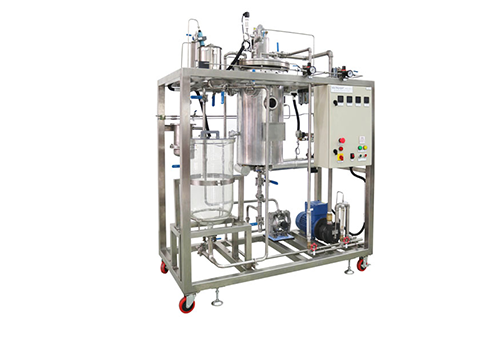
Equipment Name: Oil Hydrogenation Unit
Model No: BP517
Click below to see example:Description: Edible oils purchased in stores are known as "RBD" oils, i.e. oils that have been Refined, Bleached and Deodorised. Processing of edible oils is often broken into the three RBD categories: refining, bleaching and deodorising. Refining of oils may include neutralisation of fatty acids, removal of phospholipids (a compound containing phosphorous), and filtering of the oil. Bleaching removes the oil components that increase the rate of oxidation. When oil is used at high temperatures, for example when pan frying or deep-fat frying, oxidation is accelerated and the oil may develop undesirable characteristics such as off flavour or dark colour quickly. Bleaching allows the oil to be used for a longer period of time before these undesirable characteristics occur. Deodorising removes all of the unwanted components (vitamins, fatty acids, protein fragments, traces of pesticides and heavy metals, etc.) from the oil, leaving it flavourless and odourless, essentially the same as other oils which are deodorised.
This Oil Hydrogenation Unit is a lab-scale batch processing vessel capable of carrying out an oil modification process – hydrogenation, on small batches of edible oils, to increase the degree of saturation. By varying the process conditions, unsaturated oils can be ‘hardened’ by reacting with hydrogen gas, in the presence of a nickel catalyst to speed up the rate of reaction, forming saturated fats.
Experimental capabilities:

Equipment Name: Tray Dryer
Model No: BP772
Click below to see example:Description: In the food industry which is so diversified and extensive, there are a great number of different types of dryer would be in use. There are tray dryers, drum dryers, fluidized bed dryers, spray dryers, rotary dryers and freeze dryers, to name a few. Although these dryers differ physically and operates differently for different objectives, they all apply the same principles of mass and heat balances as the basis. As an example, in tray dryers, the food is thinly spread out on trays in which the drying takes place. Heating may be by an air current sweeping across the trays, by conduction from heated trays or heated shelves on which the trays lie, or by radiation from heated surfaces. Most tray dryers are heated by air, which also removes the moist vapours. In a spray dryer, on the other hand, liquid or fine solid material in a slurry is sprayed in the form of a fine droplet dispersion into a current of heated air. Air and solids may move in parallel or counterflow. Drying occurs very rapidly, so that this process is very useful for materials that are damaged by exposure to heat for any appreciable length of time. The dryer body is large so that the particles can settle, as they dry, without touching the walls on which they might otherwise stick. Spray drying is applied on a large scale in the dairy industry and for drying coffee.
This Tray Dryer is ideally suitable for lab tests on drying of food materials such as spices, chips, nuts, etc. It can also be used for lab test on drying of pharmaceuticals, chemicals, powders, granules, etc. Custom-built models of different sizes and requirements can be designed upon request.
Experimental capabilities:

Equipment Name: Lab Scale Spray Dryer
Model No: FD20
Click below to see example:Description: In the food industry which is so diversified and extensive, there are a great number of different types of dryer would be in use. There are tray dryers, drum dryers, fluidized bed dryers, spray dryers, rotary dryers and freeze dryers, to name a few. Although these dryers differ physically and operates differently for different objectives, they all apply the same principles of mass and heat balances as the basis. As an example, in tray dryers, the food is thinly spread out on trays in which the drying takes place. Heating may be by an air current sweeping across the trays, by conduction from heated trays or heated shelves on which the trays lie, or by radiation from heated surfaces. Most tray dryers are heated by air, which also removes the moist vapours. In a spray dryer, on the other hand, liquid or fine solid material in a slurry is sprayed in the form of a fine droplet dispersion into a current of heated air. Air and solids may move in parallel or counterflow. Drying occurs very rapidly, so that this process is very useful for materials that are damaged by exposure to heat for any appreciable length of time. The dryer body is large so that the particles can settle, as they dry, without touching the walls on which they might otherwise stick. Spray drying is applied on a large scale in the dairy industry and for drying coffee.
This Lab Scale Spray Dryer is a bench mounted unit which is designed for the rapid spray drying processes involving aqueous emulsions, solutions, suspensions and colloids.
Experimental capabilities:

Equipment Name: Pilot Scale Spray Dryer
Model No: FD21
Click below to see example:Description: In the food industry which is so diversified and extensive, there are a great number of different types of dryer would be in use. There are tray dryers, drum dryers, fluidized bed dryers, spray dryers, rotary dryers and freeze dryers, to name a few. Although these dryers differ physically and operates differently for different objectives, they all apply the same principles of mass and heat balances as the basis. As an example, in tray dryers, the food is thinly spread out on trays in which the drying takes place. Heating may be by an air current sweeping across the trays, by conduction from heated trays or heated shelves on which the trays lie, or by radiation from heated surfaces. Most tray dryers are heated by air, which also removes the moist vapours. In a spray dryer, on the other hand, liquid or fine solid material in a slurry is sprayed in the form of a fine droplet dispersion into a current of heated air. Air and solids may move in parallel or counterflow. Drying occurs very rapidly, so that this process is very useful for materials that are damaged by exposure to heat for any appreciable length of time. The dryer body is large so that the particles can settle, as they dry, without touching the walls on which they might otherwise stick. Spray drying is applied on a large scale in the dairy industry and for drying coffee.
This Pilot Plant Spray Dryer is designed for rapid drying of liquids, solutions, and liquid suspensions. It consists of a feed pump, air heater, air disperser, atomizer, drying chamber and series of systems for exhaust air cleaning and powder recovery / separator. One of the main advantages of spray drying is that it can produces dry powder particle of controllable particle size, form, moisture content, shape and other specific properties which is irrespective of heat sensitivity and drying capacity.
Experimental capabilities:
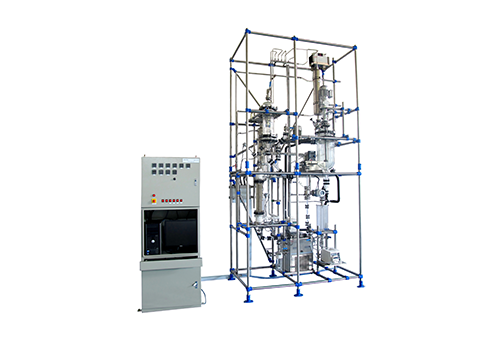
Equipment Name: Pilot Scale Crystallisation Unit
Model No: BP121
Click below to see example:Description: Crystallisation which is the process of forming crystals from solution has found many applications in food processing by the virtue that it is a physical separation method to obtain the solid in a pure form. A typical example is the recovery of crystalline products (e.g. sugar, glucose, lactose, citric acid, salt) for the removal of certain unwanted components. Another example is in fondants processing where the syrup is beaten with cooling which induces crystallisation before the fondant is left to mature for a day. Crystallisation equipment in food processing can be in the form of crystallisers and evaporators. A crystalliser can be a simple open tank in which the solution loses heat to its surroundings after which as the solution slowly cools down large crystals are generally produced. Evaporative crystallisers, on the other hand, are common in the sugar and salt industries and they are usually of calandria type.
This Pilot Scale Crystallisation Unit a pilot-scale process skid capable of demonstrating the basic principles of a crystallization process. Crystallisation is a separation process where solid particles form within a homogenous liquid phase due to supersaturation induced either through cooling or evaporation.
Experimental capabilities:
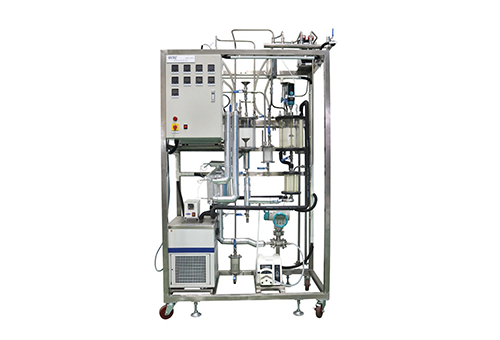
Equipment Name: Lab-Scale Crystallisation Unit
Model No: BP123
Click below to see example:Description: Crystallisation which is the process of forming crystals from solution has found many applications in food processing by the virtue that it is a physical separation method to obtain the solid in a pure form. A typical example is the recovery of crystalline products (e.g. sugar, glucose, lactose, citric acid, salt) for the removal of certain unwanted components. Another example is in fondants processing where the syrup is beaten with cooling which induces crystallisation before the fondant is left to mature for a day. Crystallisation equipment in food processing can be in the form of crystallisers and evaporators. A crystalliser can be a simple open tank in which the solution loses heat to its surroundings after which as the solution slowly cools down large crystals are generally produced. Evaporative crystallisers, on the other hand, are common in the sugar and salt industries and they are usually of calandria type.
This Lab-Scale Crystallisation Unit is a lab-scale process skid capable of demonstrating the basic principles of a crystallisation process.
Experimental capabilities:
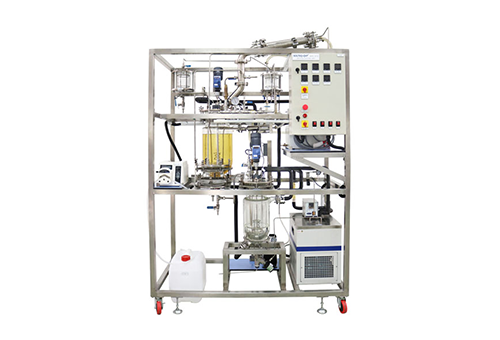
Equipment Name: Small Scale Production Crystallisation Unit
Model No: BP125
Click below to see example:Description: Crystallisation which is the process of forming crystals from solution has found many applications in food processing by the virtue that it is a physical separation method to obtain the solid in a pure form. A typical example is the recovery of crystalline products (e.g. sugar, glucose, lactose, citric acid, salt) for the removal of certain unwanted components. Another example is in fondants processing where the syrup is beaten with cooling which induces crystallisation before the fondant is left to mature for a day. Crystallisation equipment in food processing can be in the form of crystallisers and evaporators. A crystalliser can be a simple open tank in which the solution loses heat to its surroundings after which as the solution slowly cools down large crystals are generally produced. Evaporative crystallisers, on the other hand, are common in the sugar and salt industries and they are usually of calandria type.
This SOLTEQ® Small Scale Production Crystallisation Unit can be used for small scale crystallisation process, in batch or semi-continuous mode. It comes with vessels made of borosilicate glass and other necessary equipment and instruments for conducting evaporative or cooling crystallisation process.
Experimental capabilities:
| Model No | Equipment Name | Read More |
|---|
We Are Located At
Solution Engineering Sdn. Bhd., PT 13796, Jalan Tekno Usahawan 2, Technology Park Malaysia, 57000 Kuala Lumpur, Wilayah Persekutuan
PT 13796, Jalan Tekno Usahawan 2, Technology Park Malaysia, 57000 Kuala Lumpur, Wilayah Persekutuan
+603 2780 3890 / 3891
sales@solution.com.my
Send us your inquiry with the form below, and our sales team will be in touch with you soon! Alternatively, you may call us with the number on the left.